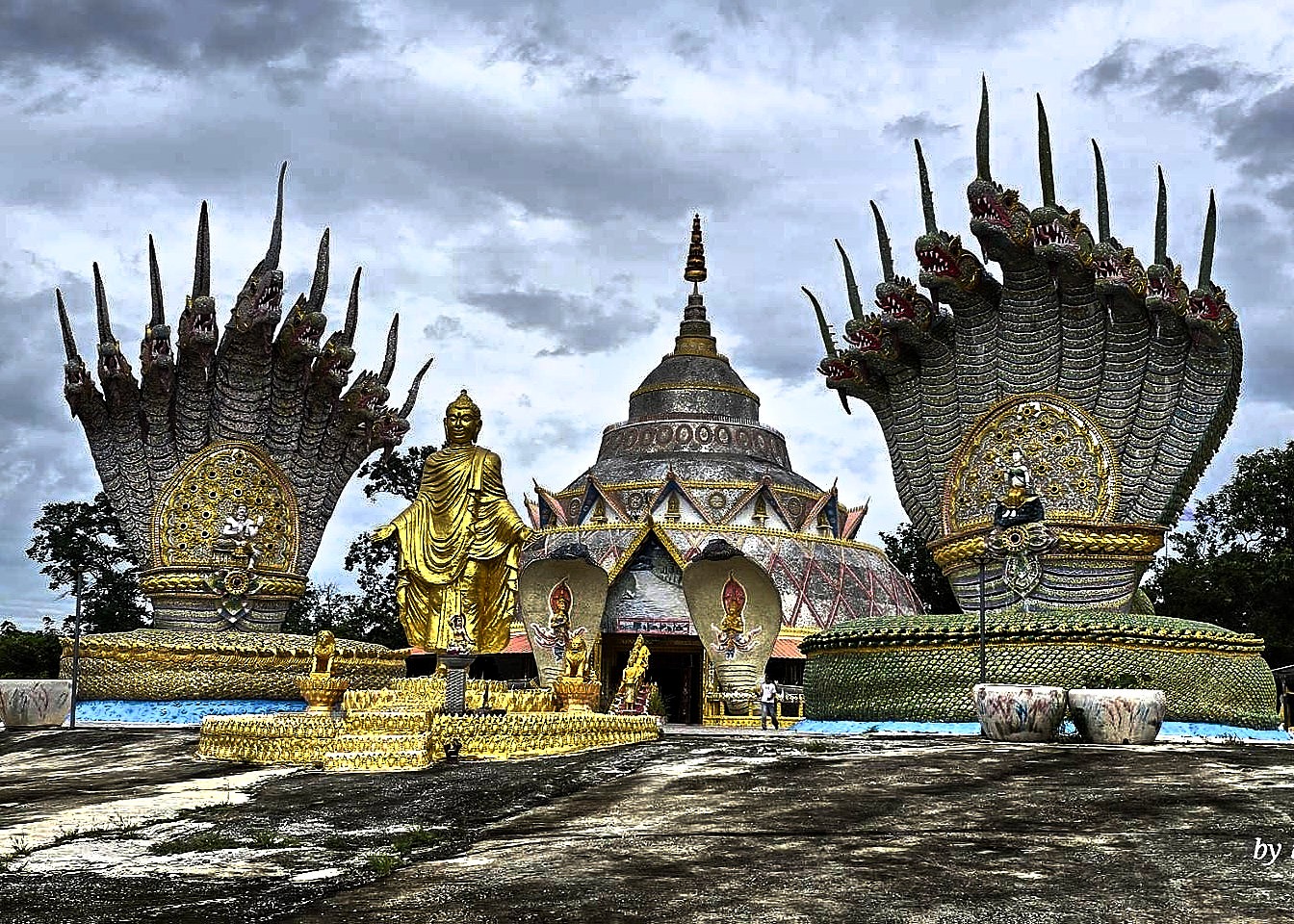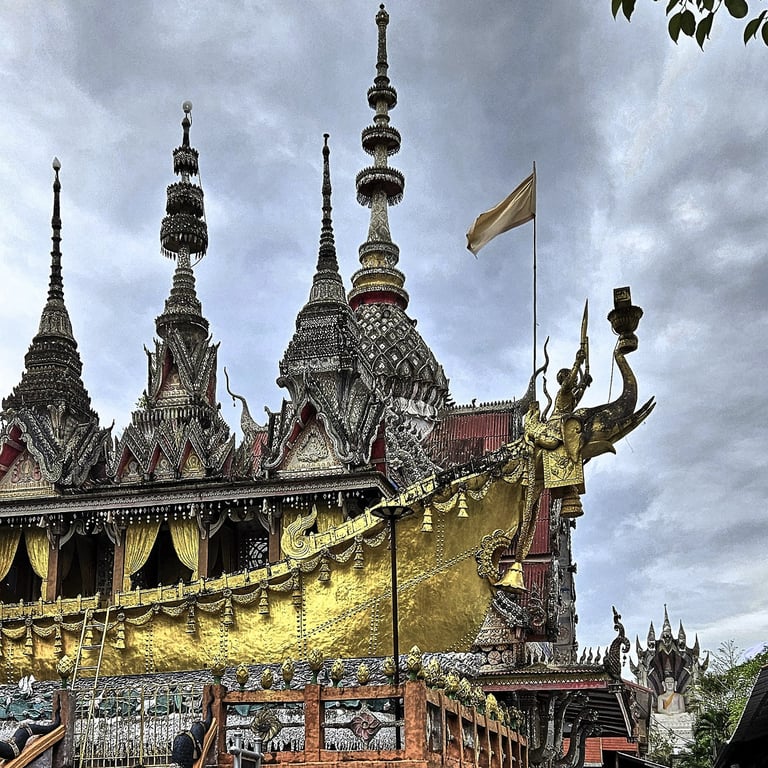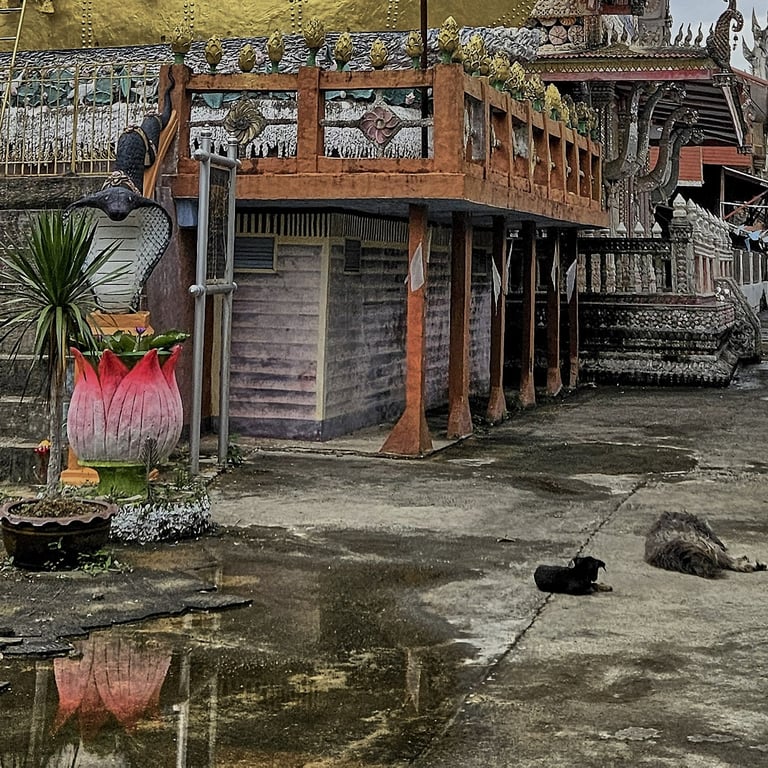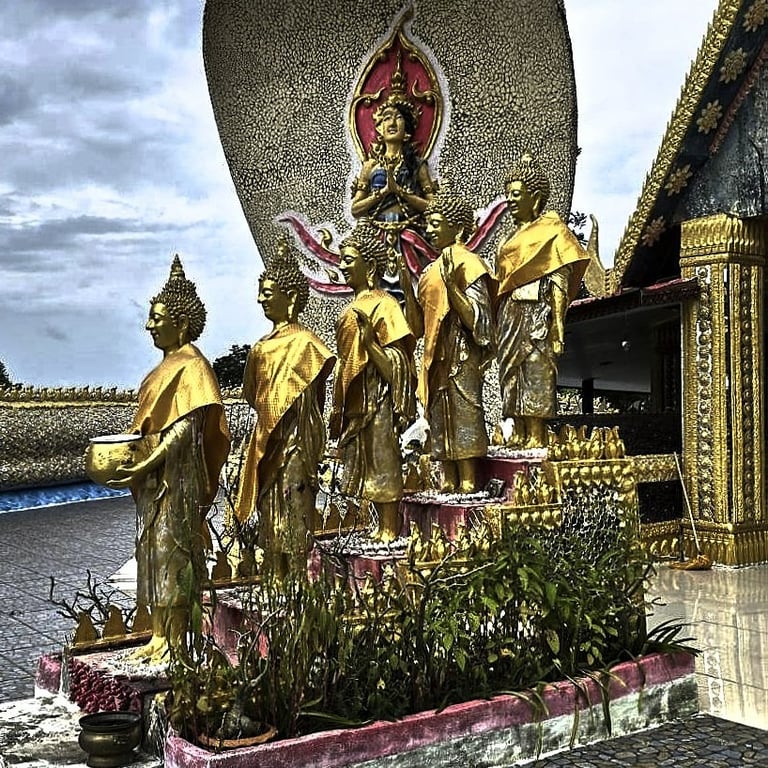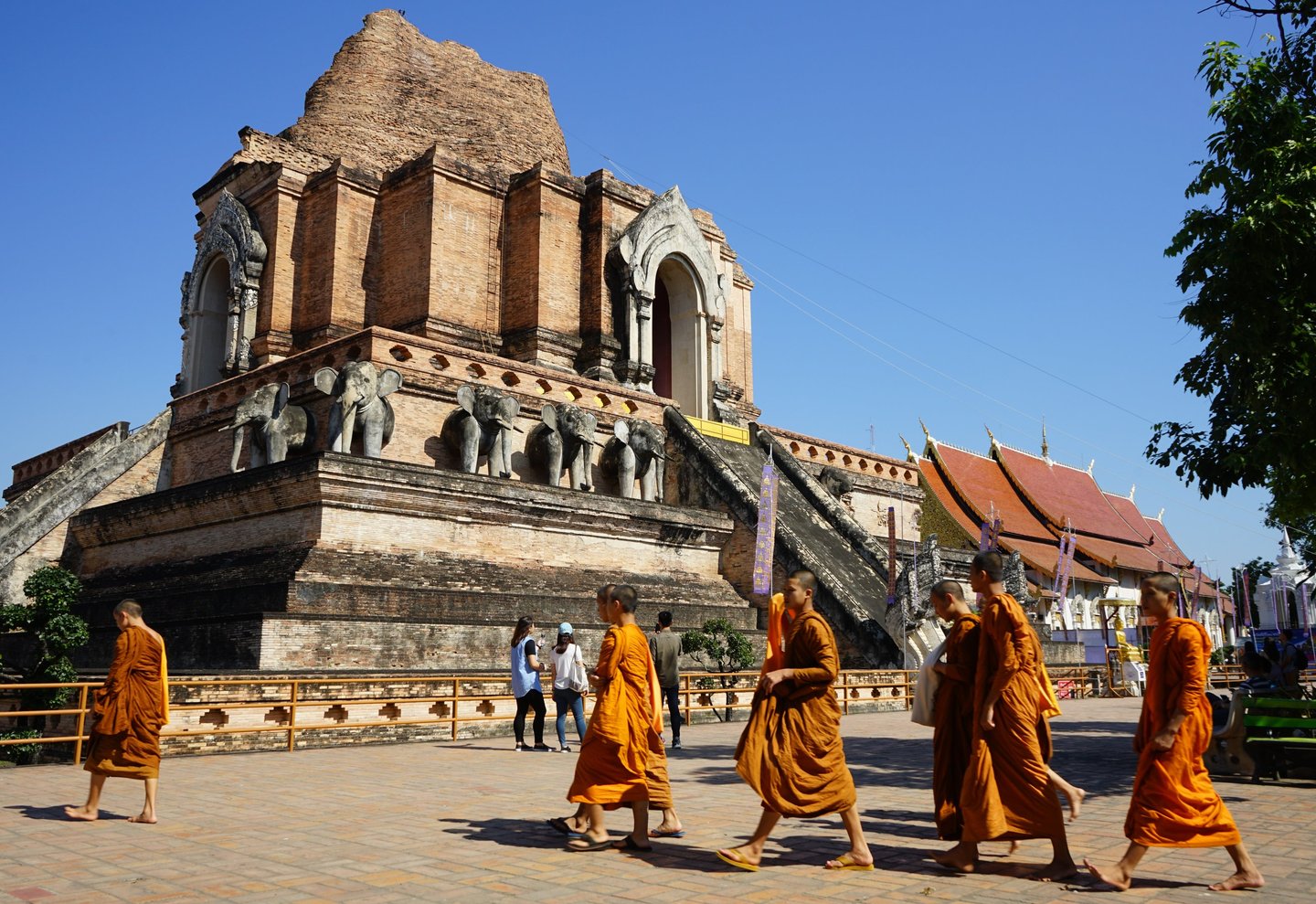Wats abound in Thailand, you will find them throughout the village, town or city. As the historical focal point of the community, they will often be the remnant of the locale's small beginnings. Some newer ones are architecturally spectacular, and well worth the side-trip for the visual feast alone.
You need to do your research to find the most photogenic ones. Just ask around if you get the chance, the most famous wats are commonly known amongst Thai people, often from a childhood visit remembered, news features over time, or simply from recent reels on their phones.
Here are seventy examples to get you going.
Wat Tham Seua, Kanchanaburi
Tiger Cave Temple
The Wat Tham Seua complex south of Kanchanaburi is truly impressive. The toy-town funicular leading up to its base level suggests that your climbing is over - not so - many more steps await you. This shot looks like it was taken by a drone, but it wasn't, it was taken out of the window on the seventh floor of one of the towers. That's a lot of steps. There once was a tiger in a cave, but I guess that was a long time ago, as is the case with other 'tiger cave' sites in Thailand.
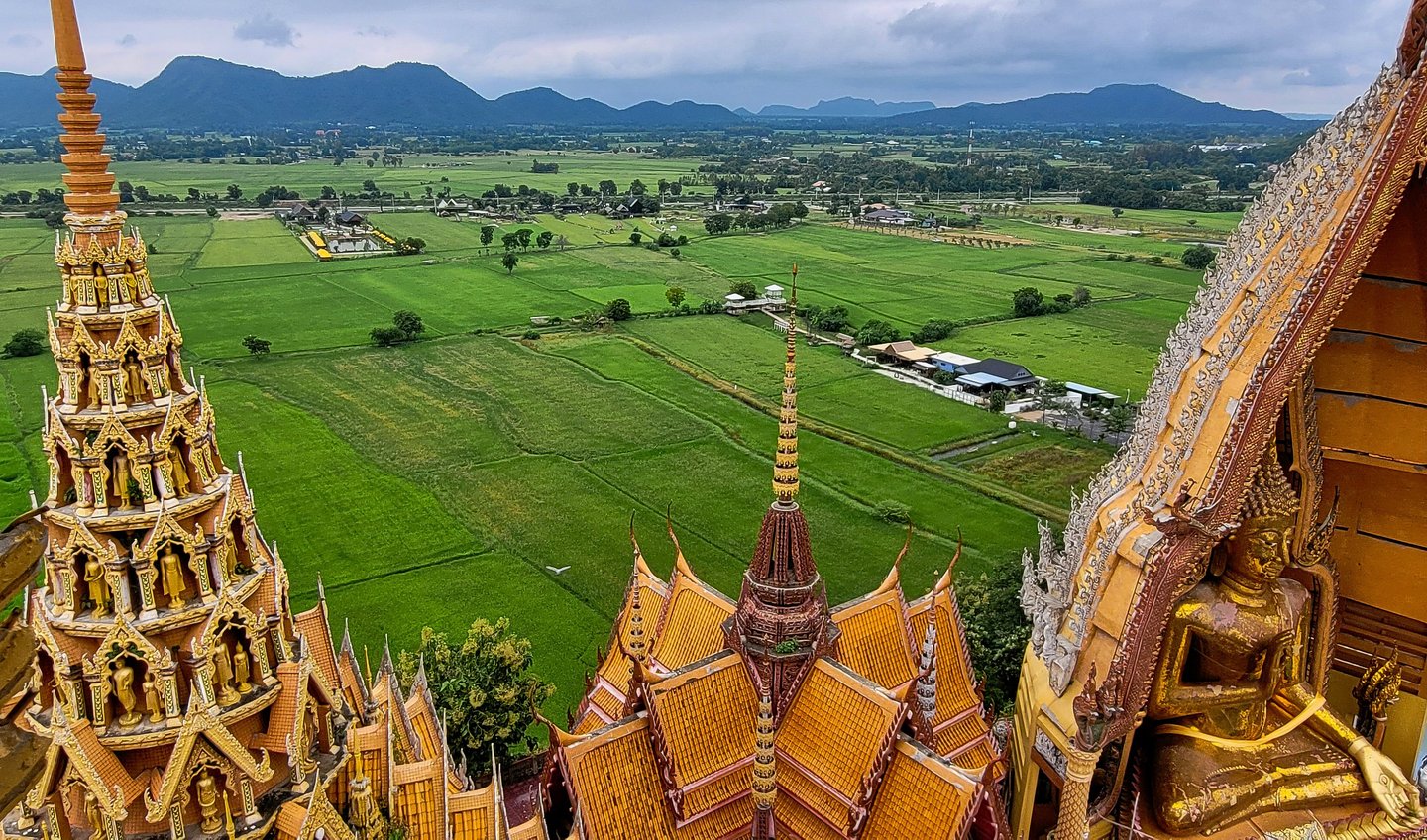

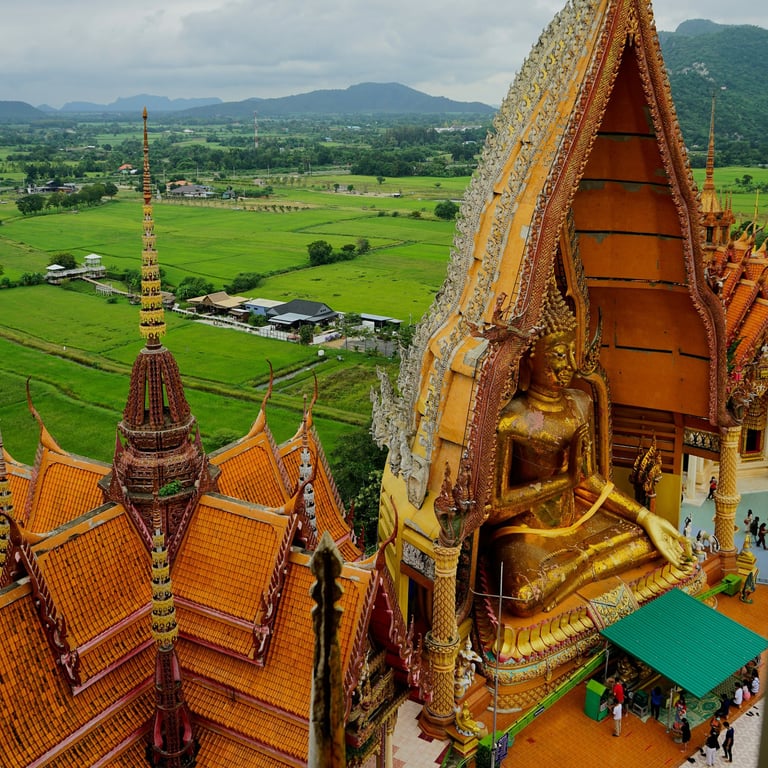
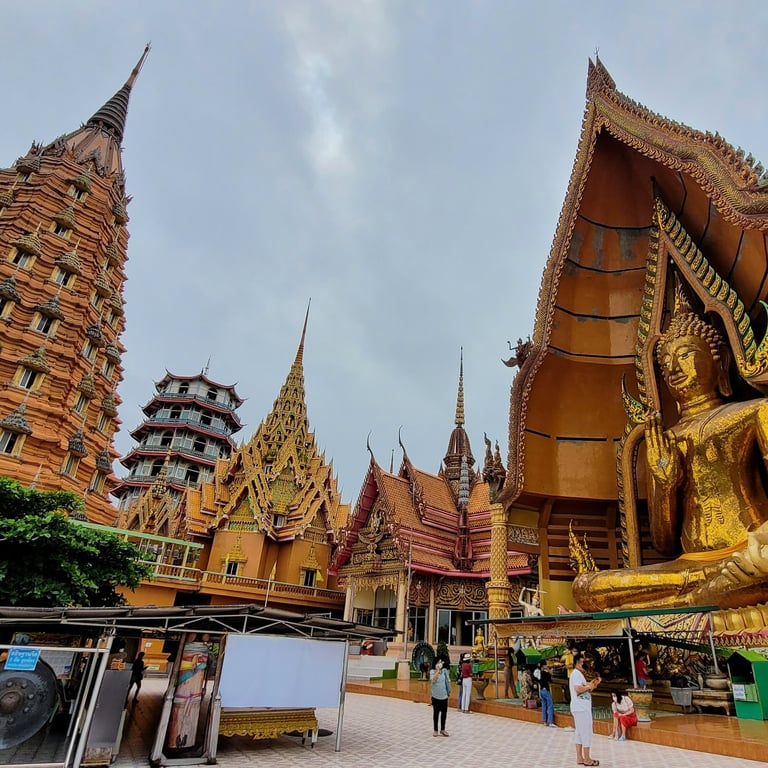
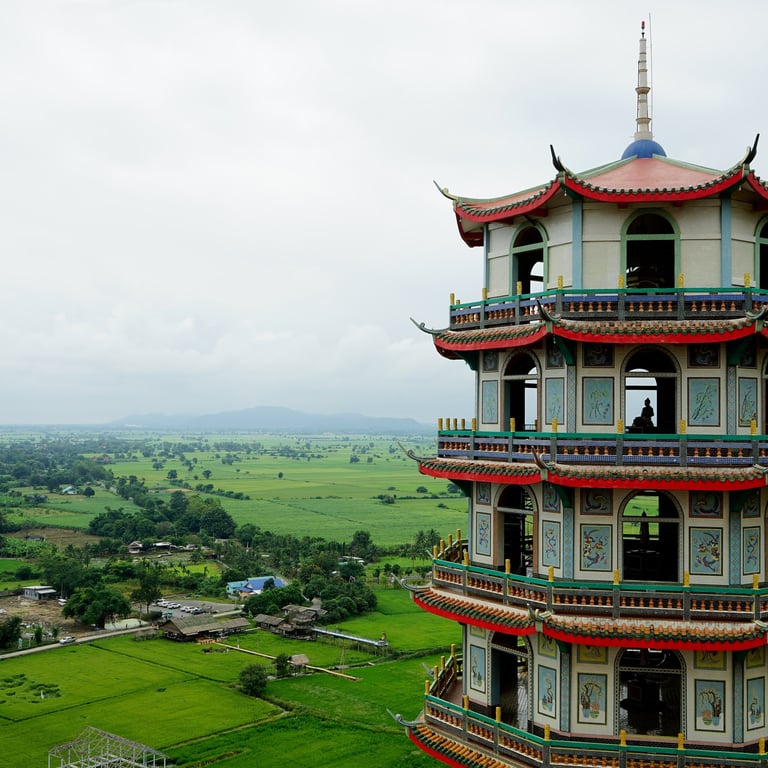
Wat chaloem phra kiat, lampang
Temple of the Floating Pagodas
You can see the Temple of the Floating Pagodas from miles away. The white stupas are lined up on promontories along a high mountain ridge. As you get closer you realise that if you frame the pagodas to include the highlands, they will just look like white dots and the image will not do them justice. They will look like they are floating though. Once you’ve taken the baht-bus to the base, there is a sweaty 30-minute climb up the wooden steps to get to the top. The views are great as you lean over the fence next to the sign that says don’t lean on the fence. Question: if you read a sign in a language you can’t understand, have you read it? Technically yes, but no consolation as you fall precipitously into the void. In Hokkaido the ‘Beware of the Bears’ sign in Japanese has a picture of a bear on it. Yo!
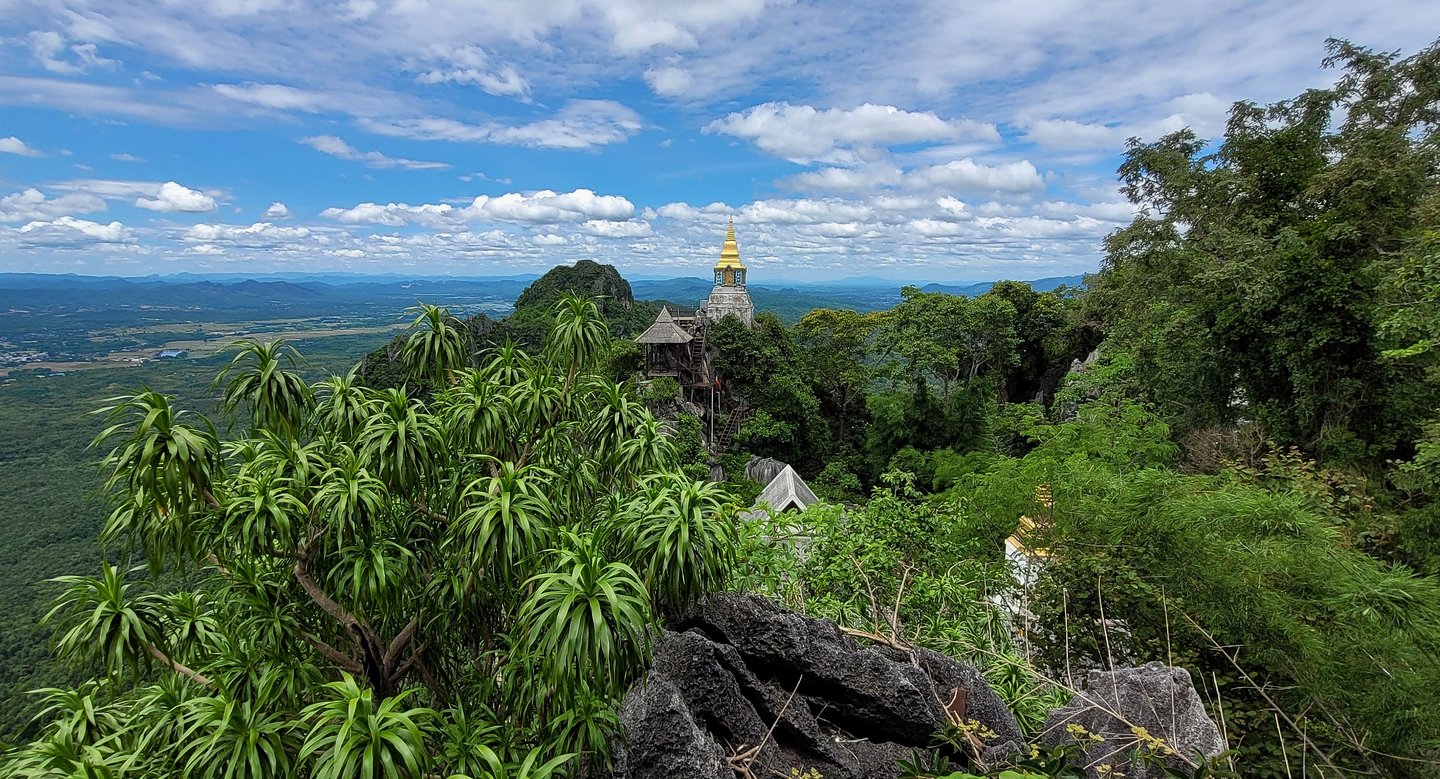

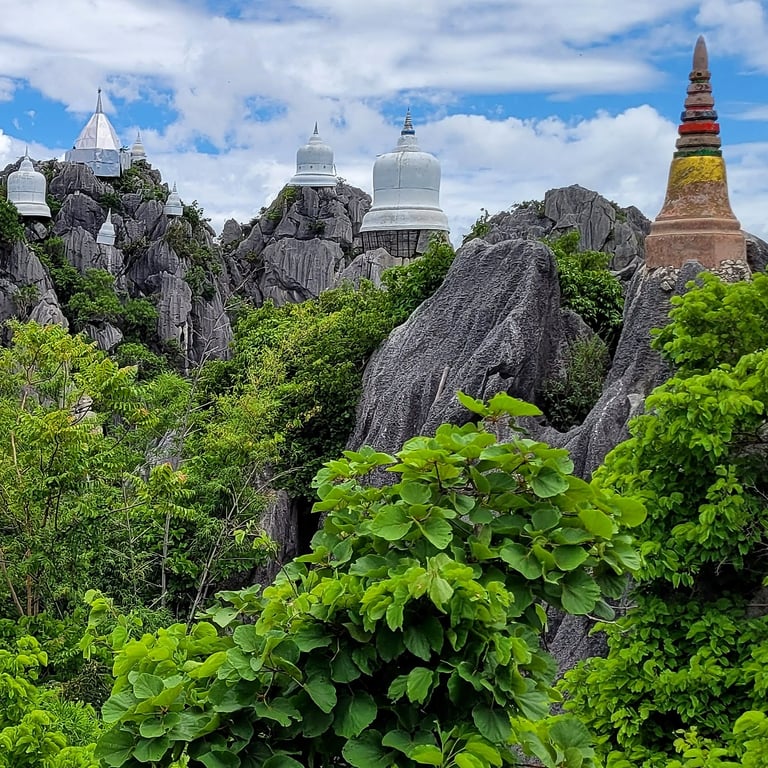
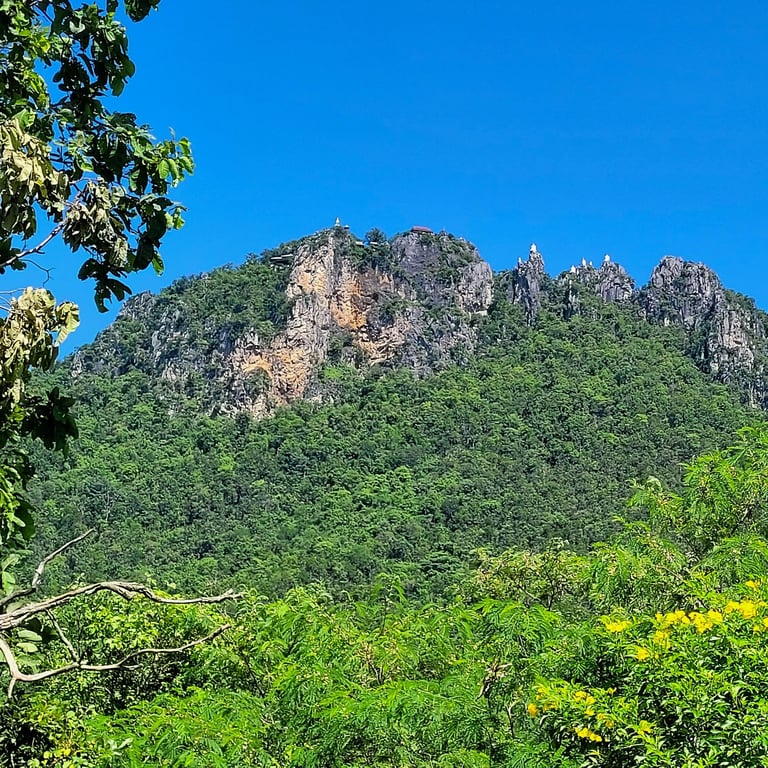
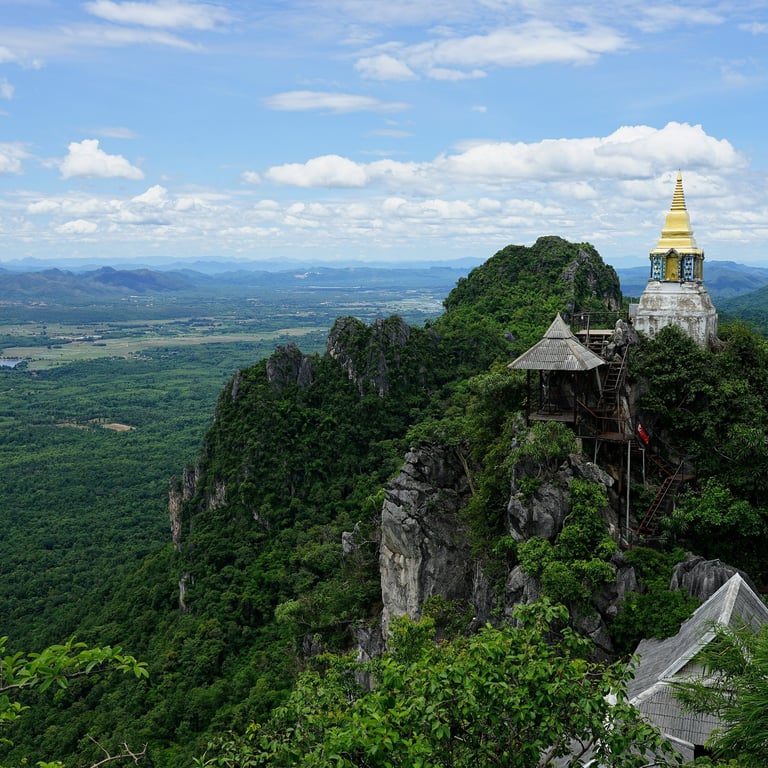
Wat sirindhorn wararam, ubon
The Wat That Glows
Sometimes when you see threatening clouds in the distance you wonder if a storm is heading your way, on this occasion it was dead obvious what was in store. It certainly adds to the atmosphere as leaves suddenly start swirling and the sky darkens well before dusk. Huddled under a traditional-build shelter, the crowd enjoyed a recurring theme at places of worship – a leaking roof! The ensuing royal soaking made sure that wet fingers skidded across a wet phone screen rendering photos nigh on impossible. The intended highlight of the trip, the luminous patterns, just about prevailed in the murky elements. So, the one hour drive back to Ubon Ratchathani in the dark, with wipers on ultra, certainly concentrated the mind.
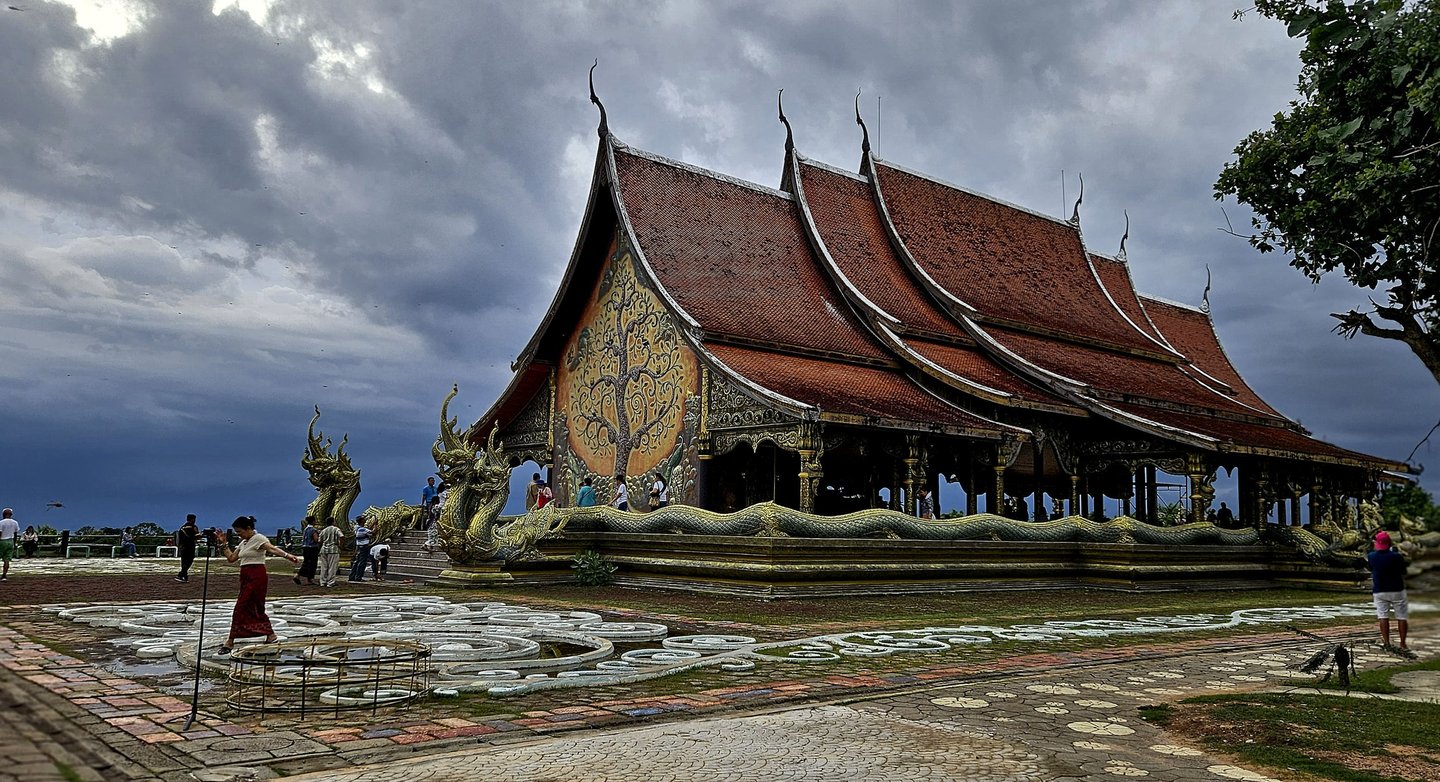

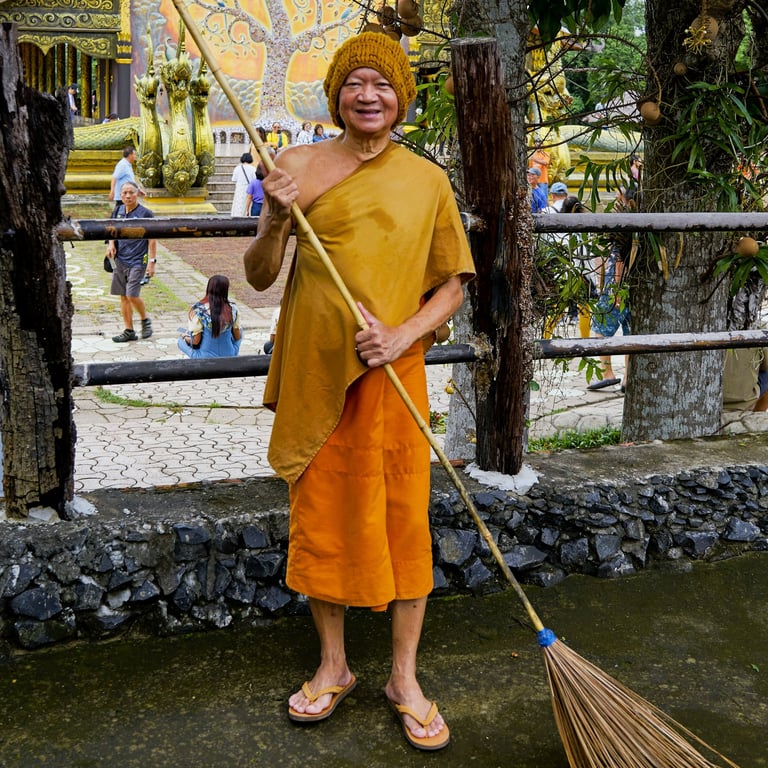
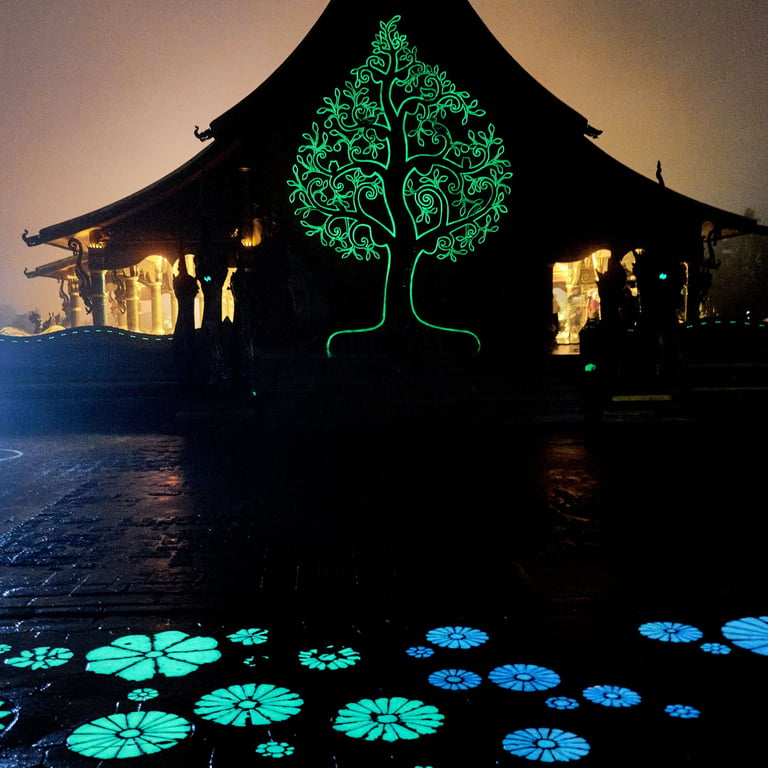
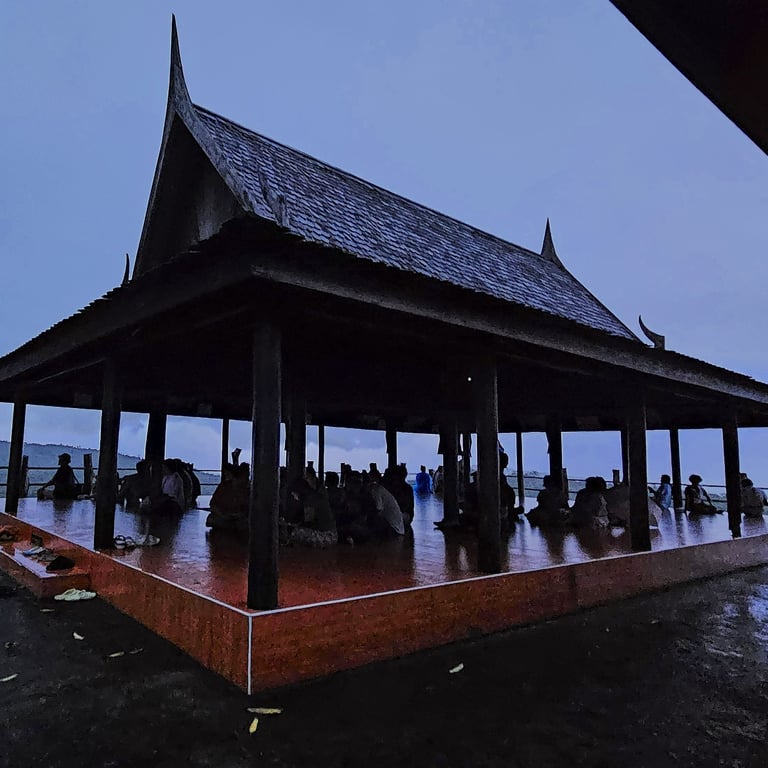
Wat thap kradan, suphanburi
The Shrine to Khun Pueng
The shrine at Wat Thap Kradan dedicated to the legendary singer, Phumphuang Duangchan (Pueng), has people making a pilgrimage from all over the country. A cult has grown up whereby many believe that good fortune comes to those who pray to her spirit, especially regarding coveted lottery numbers. Pueng touched the nation’s heart-strings after dying aged 30 from lupus. Her tragic life of a manipulating family and managers, played out in public and was clearly relatable, thus elevating her status well beyond the regular. The music is called Luk Thung, a Thai country-style which resonates particularly with the largely rural population. Most of the artefacts in her shrine, such as shoes she wore and stage outfits, were red in colour, but videos online of her performing show her in anything but red. Perhaps a power-luck thing?
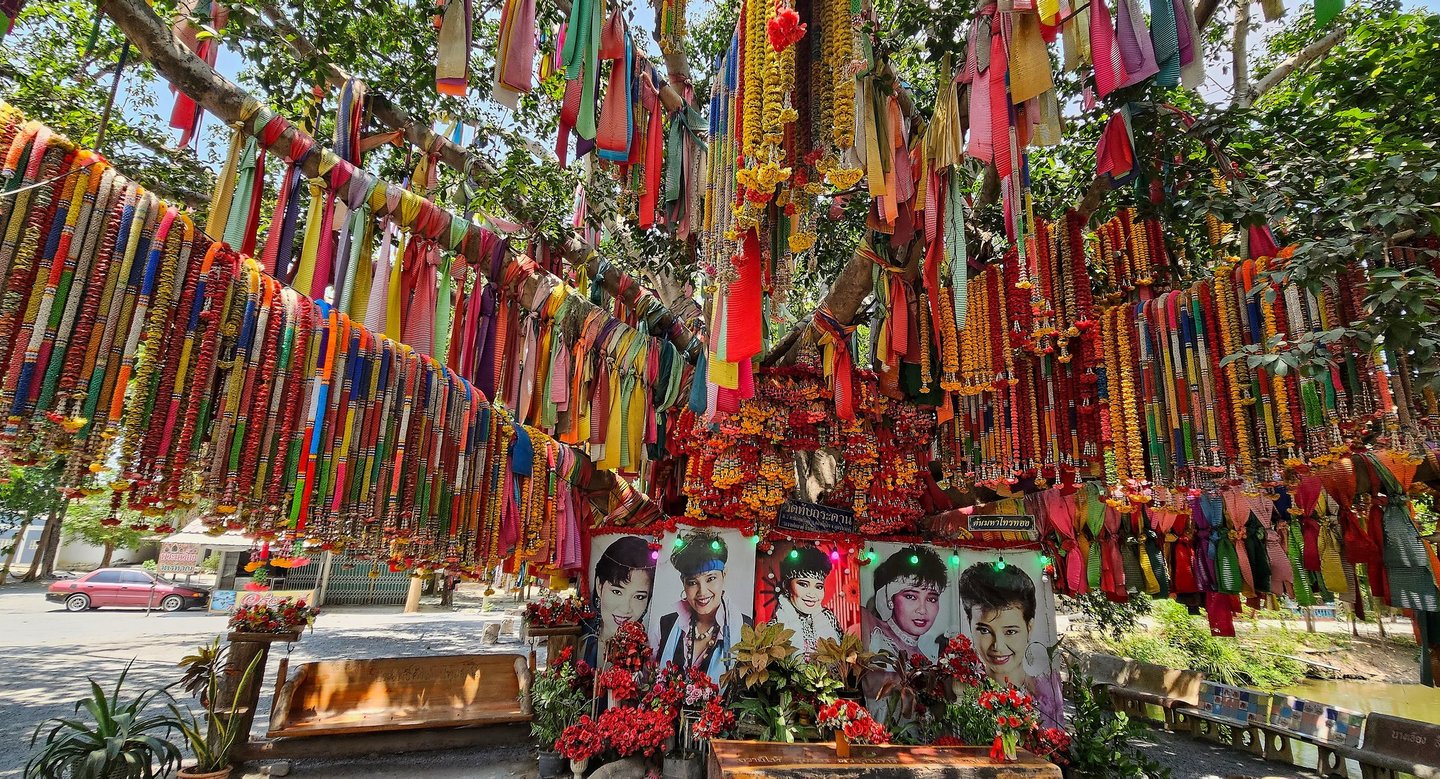

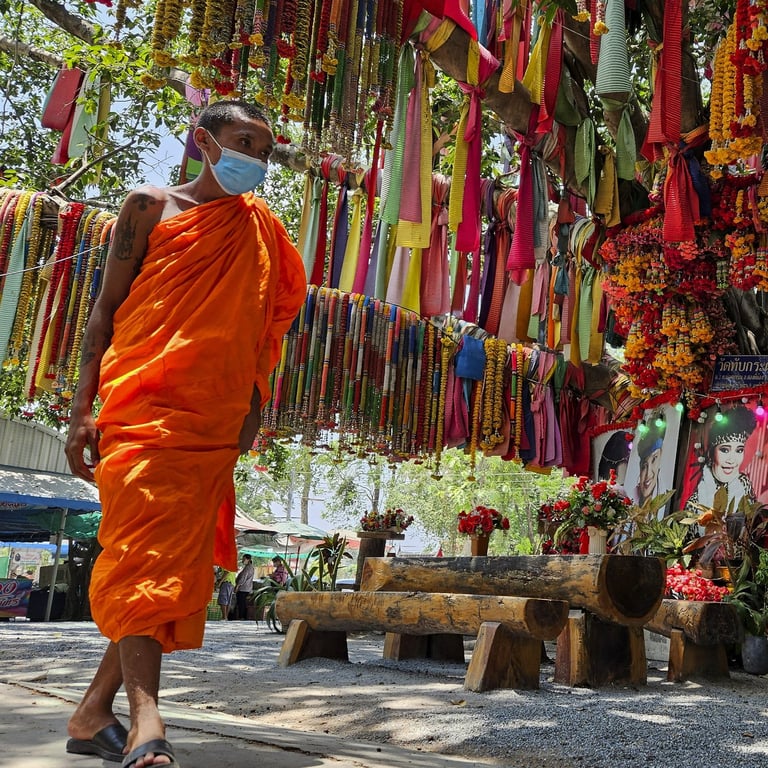
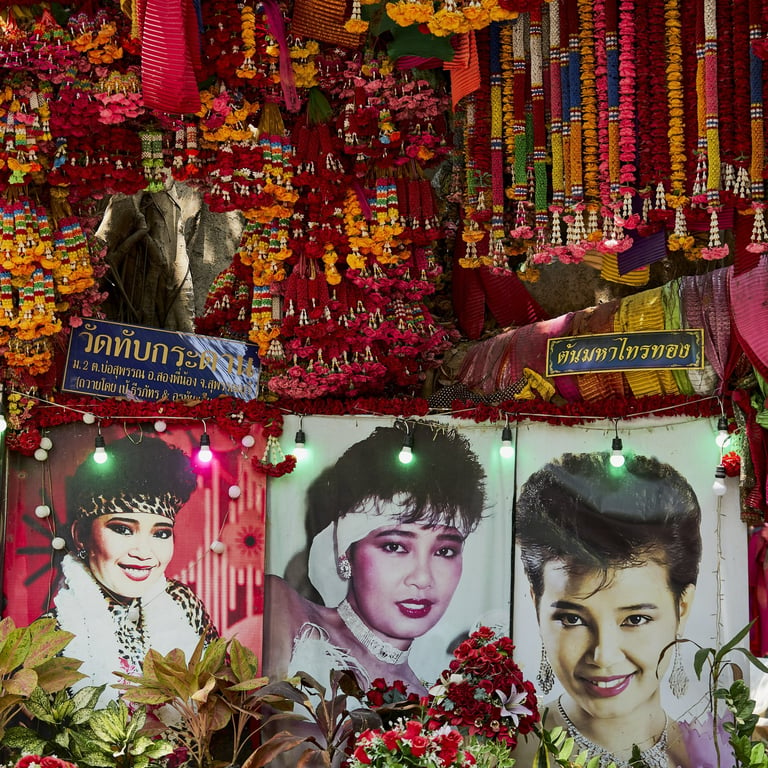
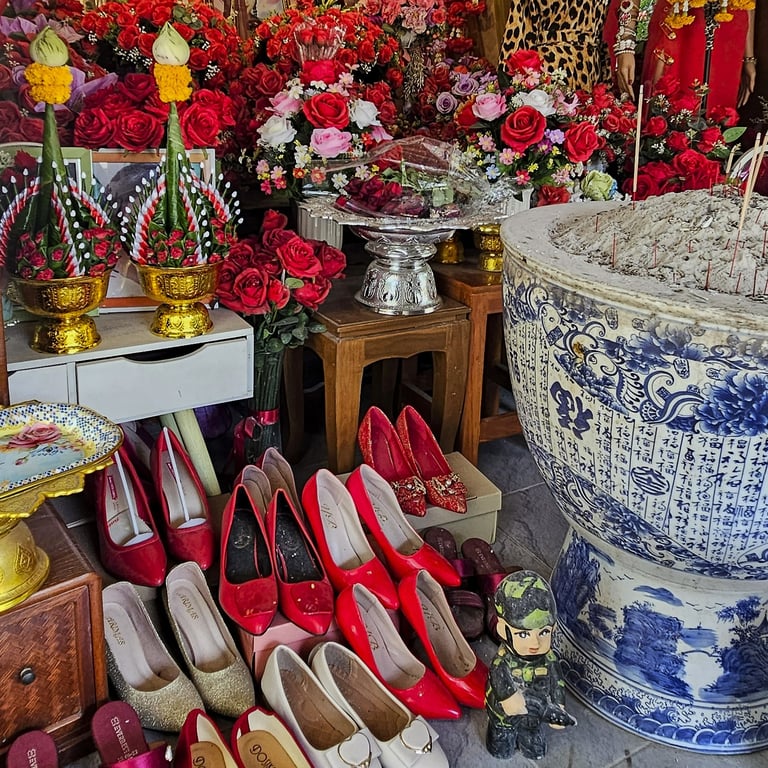
Wat phrathat pha sorn kaew, phetchaburi
The Temple on the Glass Cliff
Wat Phrathat Pha Sorn Kaew (Temple on the Glass Cliff) in Phetchabun Province is another of those huge wats that you can see from miles away, right across the valley as you wend your way towards it. When you get there, you see that it is five seated Buddhas nested in lotus position. Apparently, it represents the five Buddhas that have visited earth. It is a fairly new wat, only begun in 2004, and very photogenic for its uniqueness - every angle will attract your lens. For scale, you can see people in the top photo. Once there you are on the threshold of Loei Province and one of the national parks will likely be your next stop.
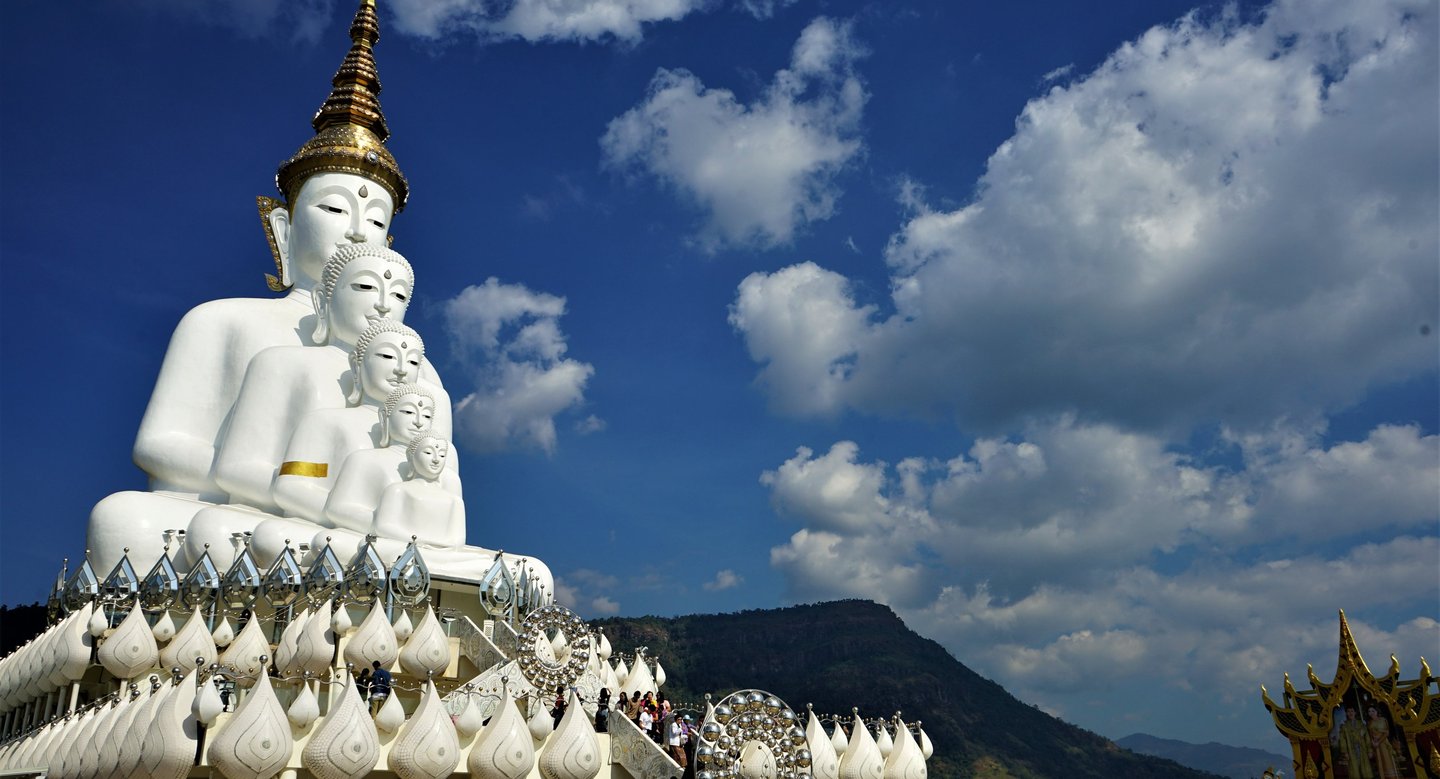


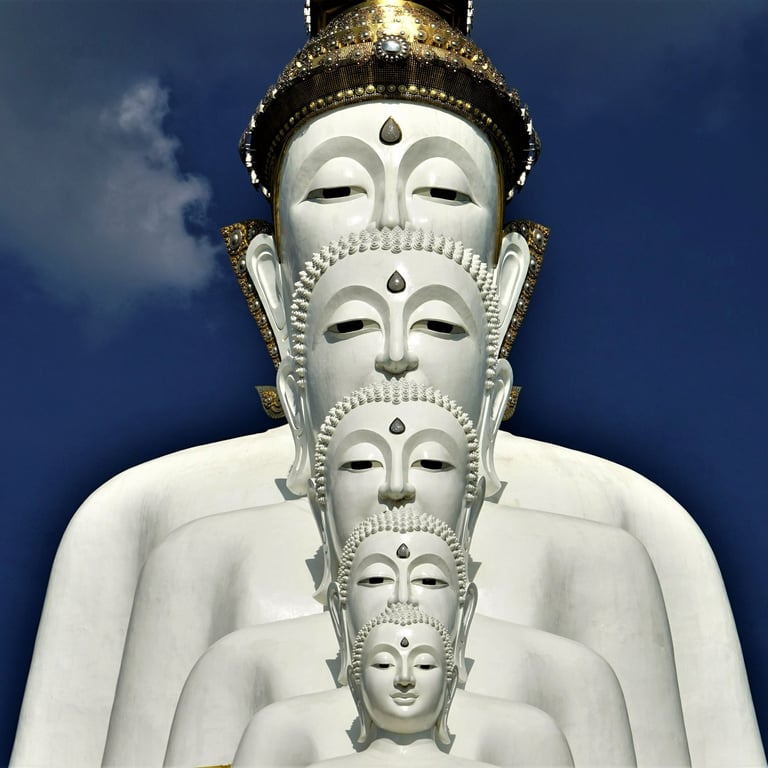
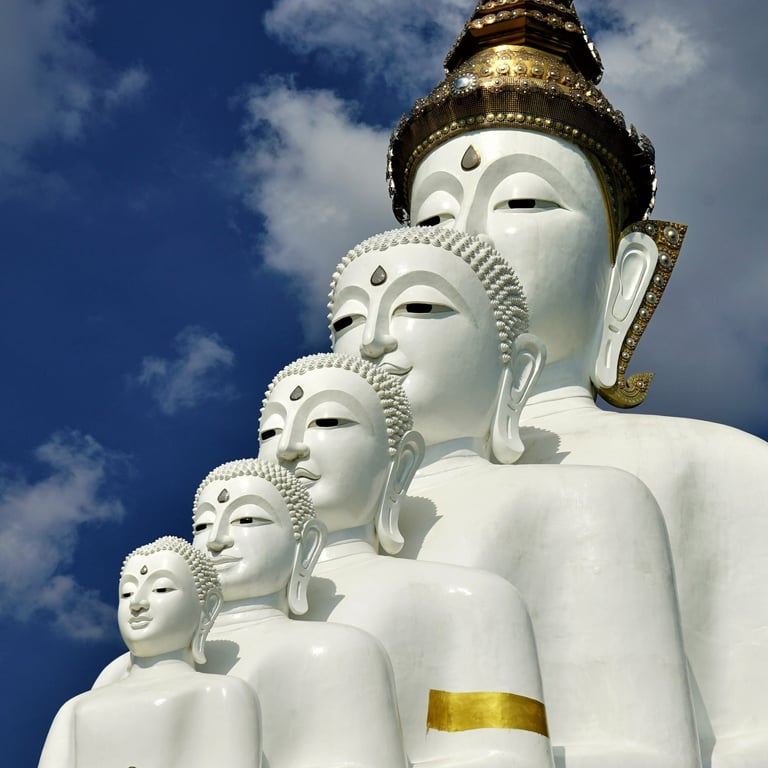
Wat rong suea ten, chiang rai
The Blue Wat
The Blue Wat in Chiang Rai is like walking inside a large blue see-through sweet wrapper, albeit a richly embroidered one. Everywhere you look your eyes just see blue, even the white Buddha is backlit with blue light. These three monks were wondering how to do a selfie, contorting this way and that to get themselves and the Buddha in the frame. I offered to take a shot for them and was proffered their three mobiles one after another, followed by one for myself. To elicit a smile for the camera we say, ‘Say cheese’. Guess what? It is also the same English word in Thai as there is no Thai equivalent.
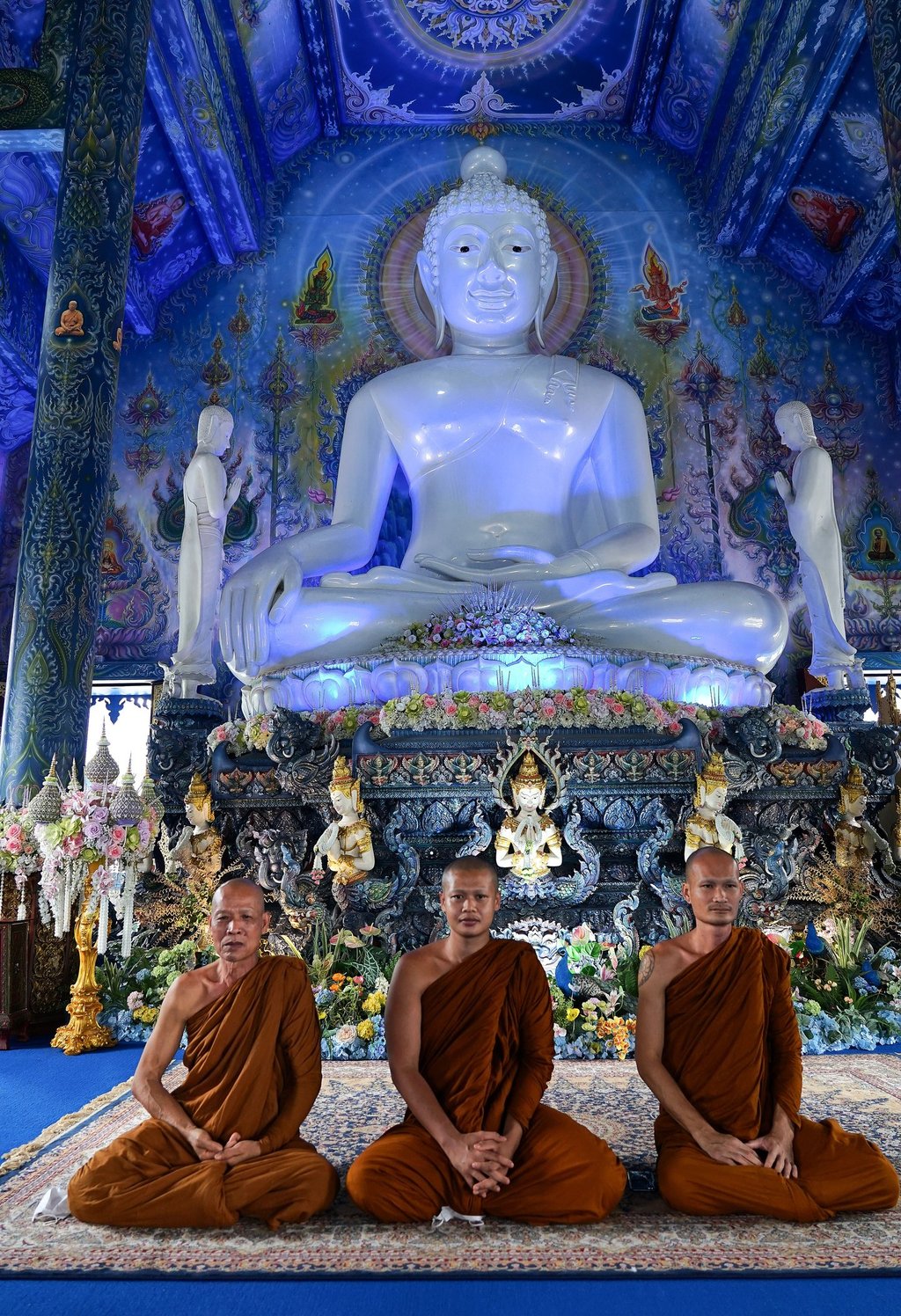

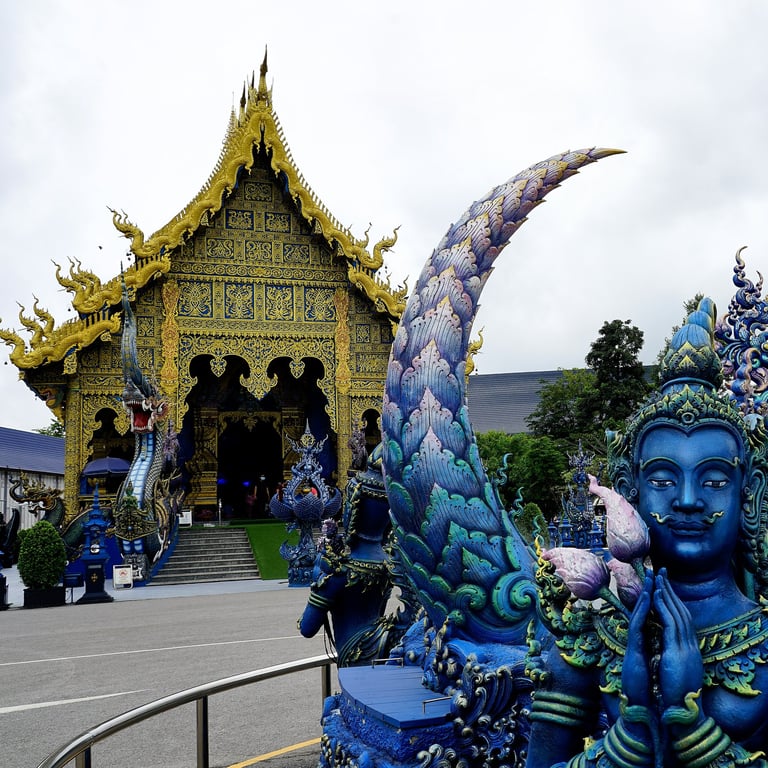
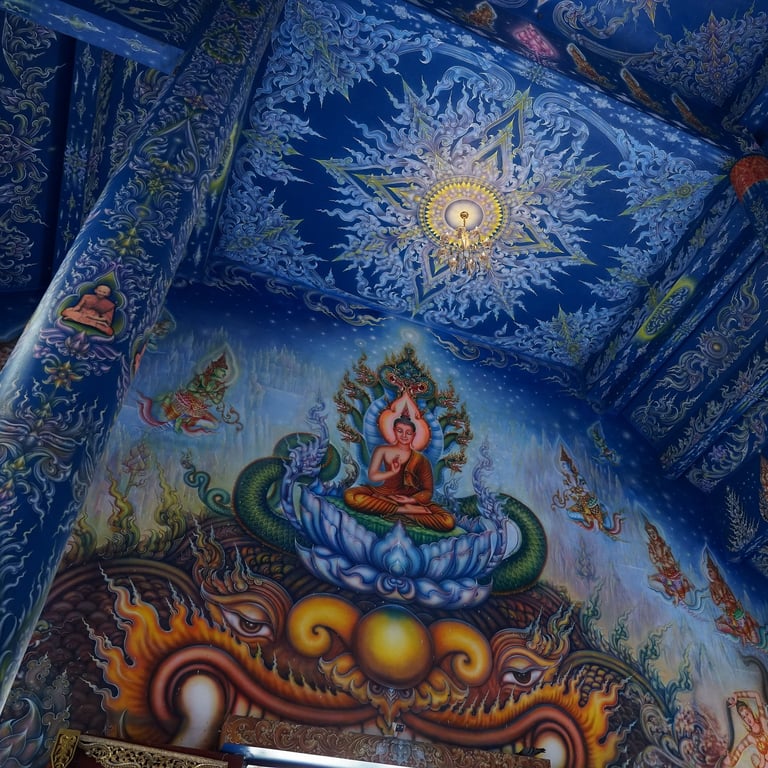
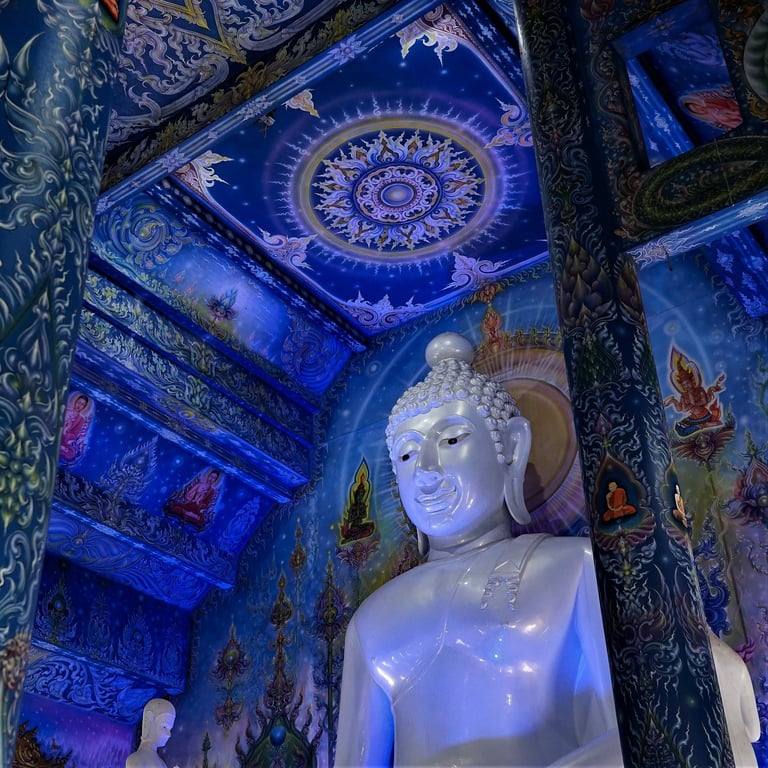
Wat doi ku kham, chiang mai
Golden Mountain
Wat Doi Ku Kham, or Temple of the Golden Mountain, is south of Chiang Mai and perched on a hilltop. It is believed to have been founded in 687. The climb can be started in the forest below or you can drive or get a baht bus up. The forest path is shaded but at 1.5 kms long, you can expect to be dripping wet, whatever the season - then, there are the temple steps... My first essay in Thai language described the walk up from the bottom - new vocab for me included, 'sweat', 'mosquito bites' and 'bad mood'. My teacher got the drift. Photos here are from different days, one hazy, one sunny.
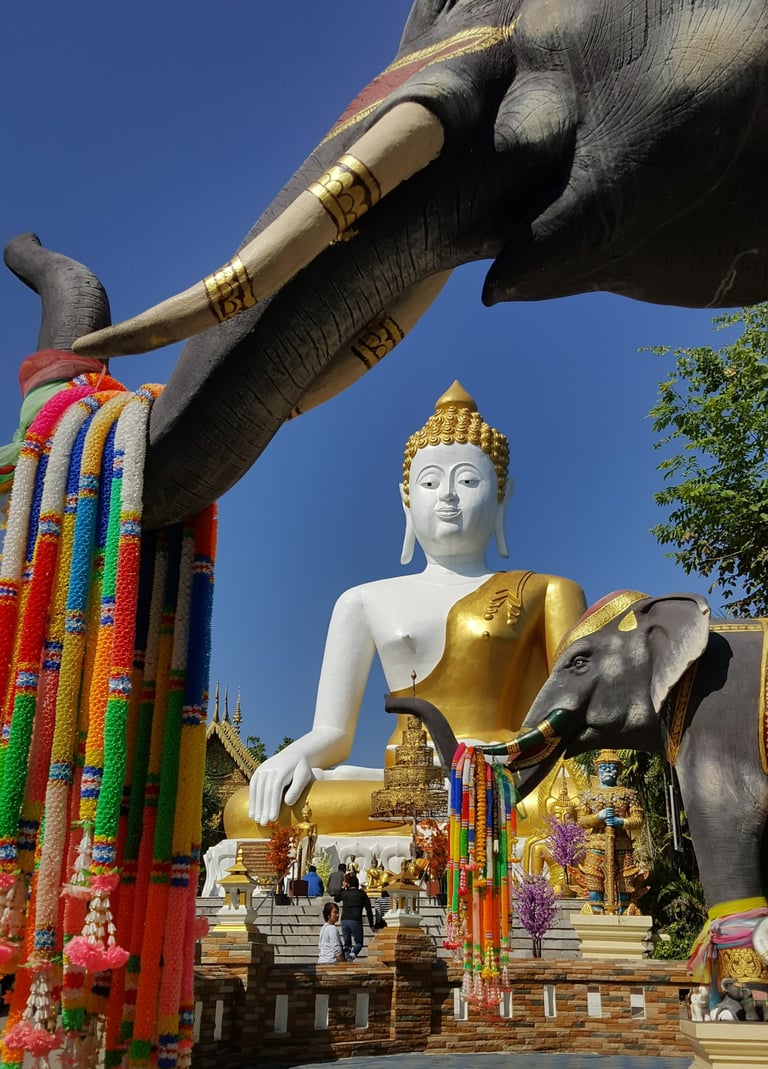

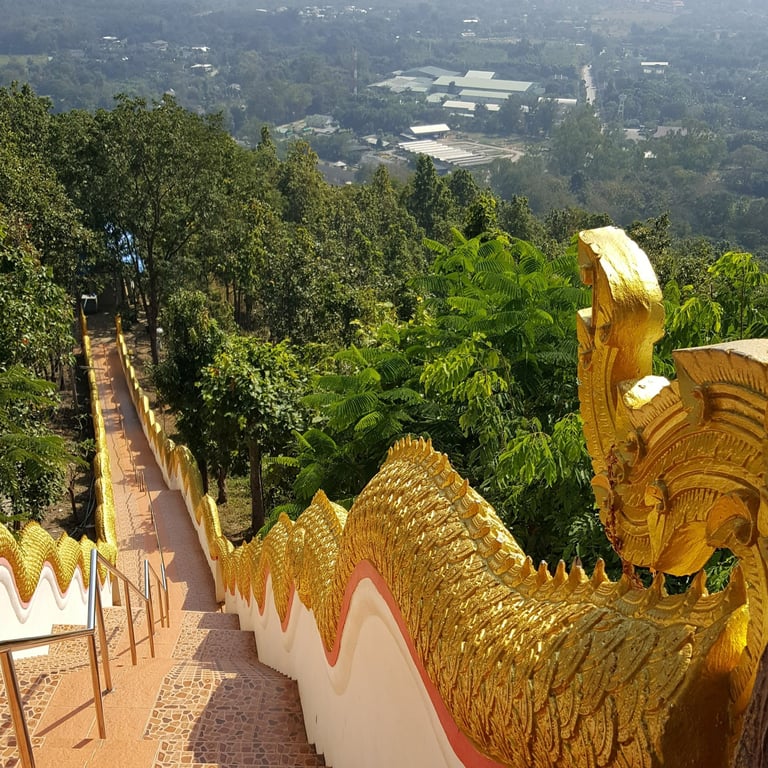
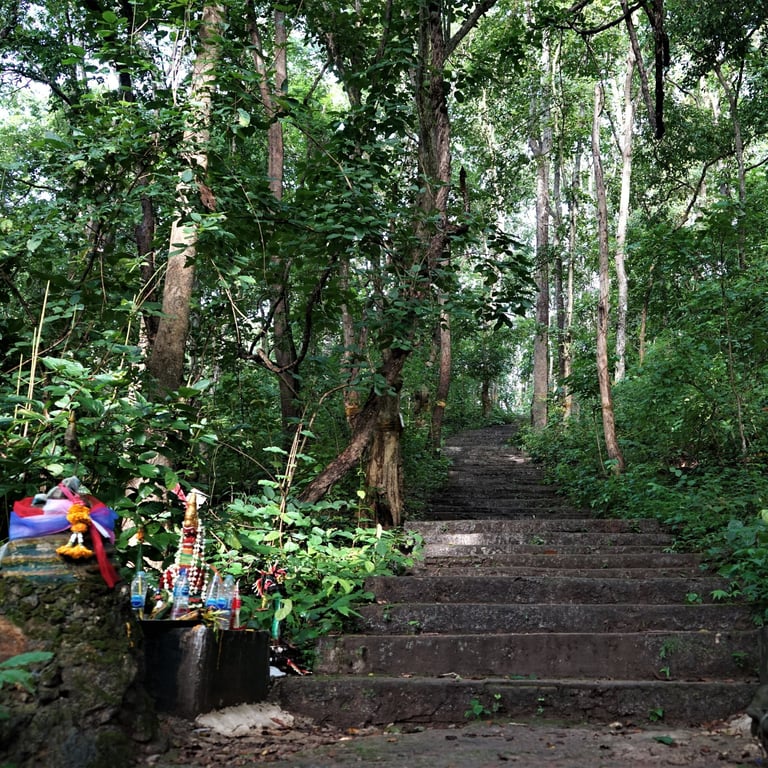
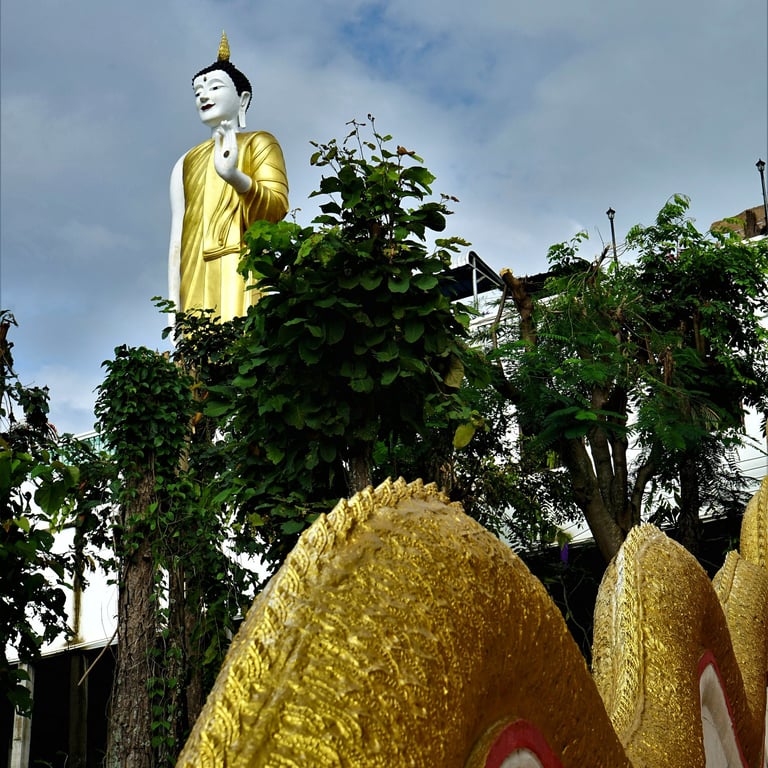
Wat paknam khaem nu, chanthaburi
The Blue Wat (another one)
Wat Paknam Khaem Nu is a thirty minute drive south of Chanthaburi near the coast. The wat was built in 1946 but the original materials corroded due to the sea air. It was then decided to design a ceramic cladding of blue tiles. The detail led to a quite stunning finish as can be seen here. It is known as the Blue Wat, and there's more than a touch of Delft about it. It is well worth the detour from Chanthaburi town but if it is a weekend, you can expect plenty of tour buses for company.
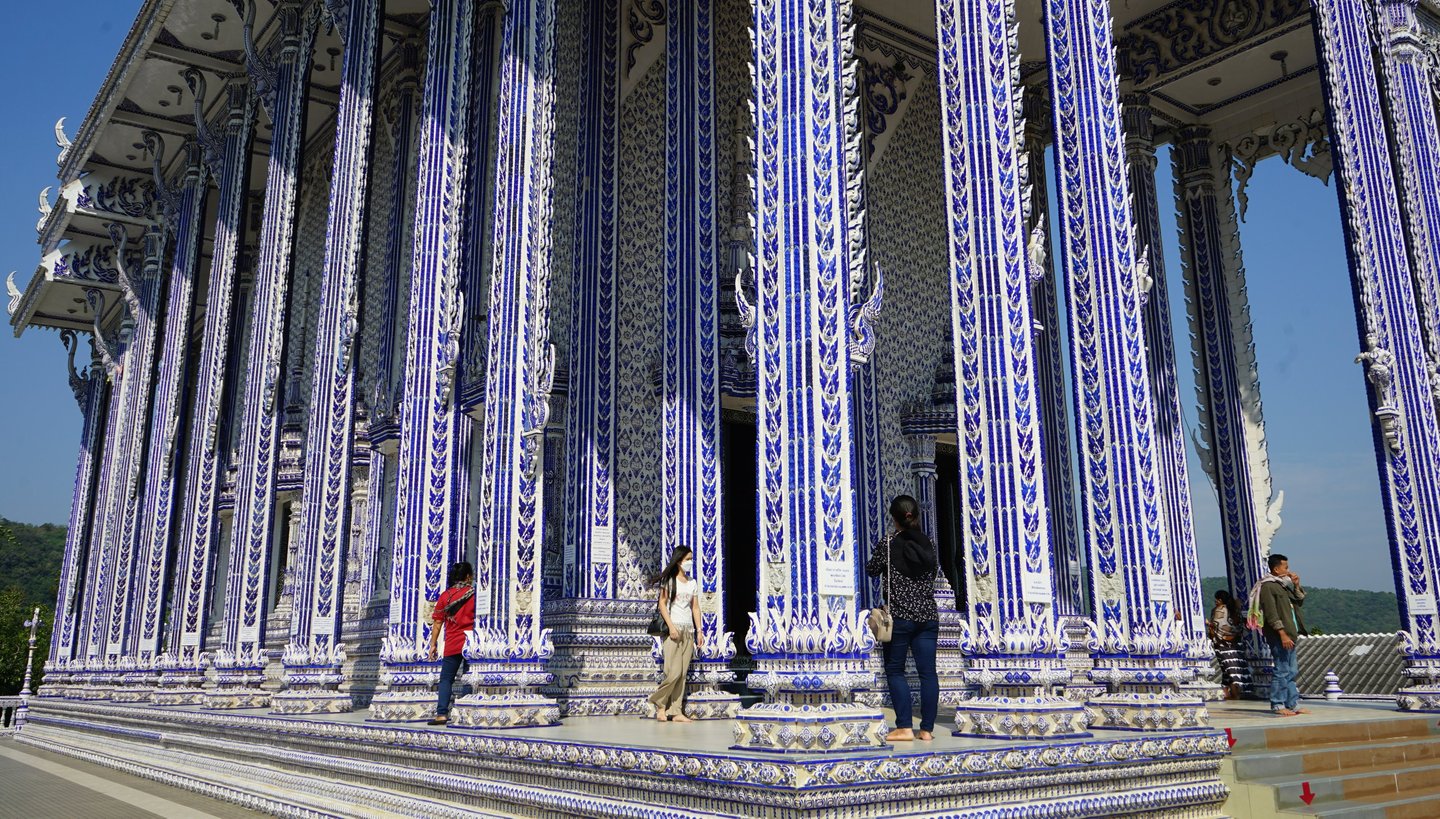

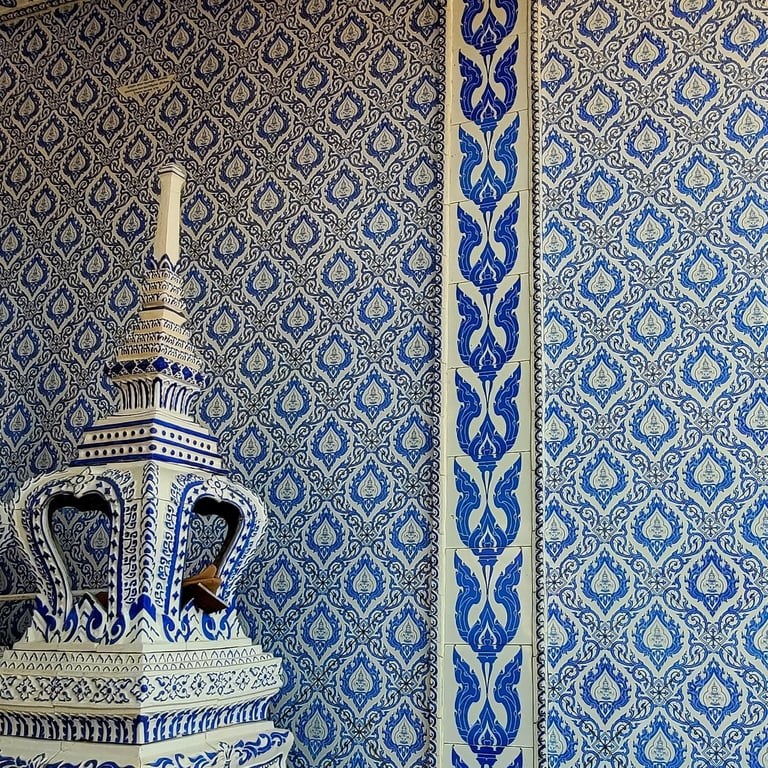
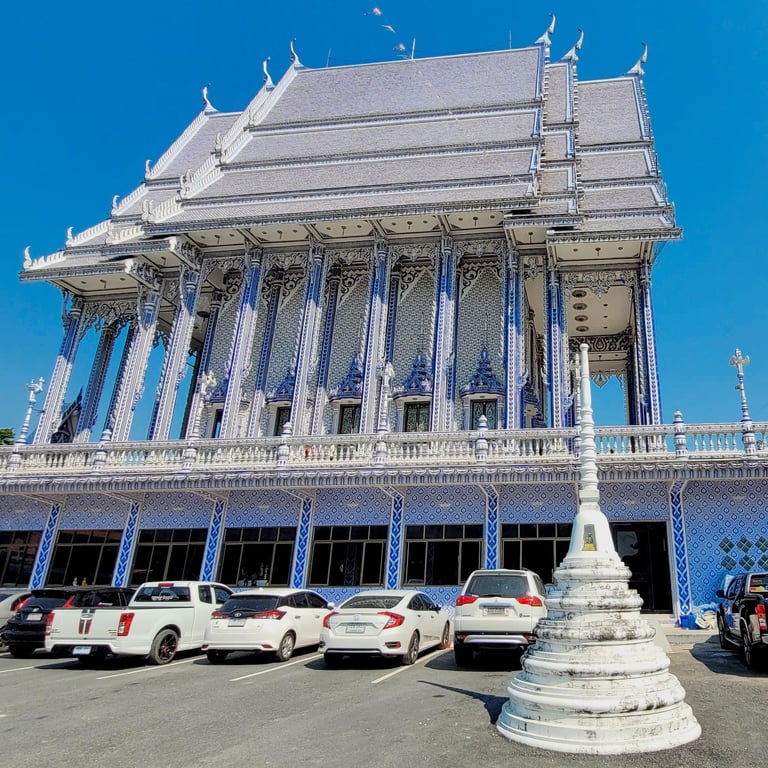
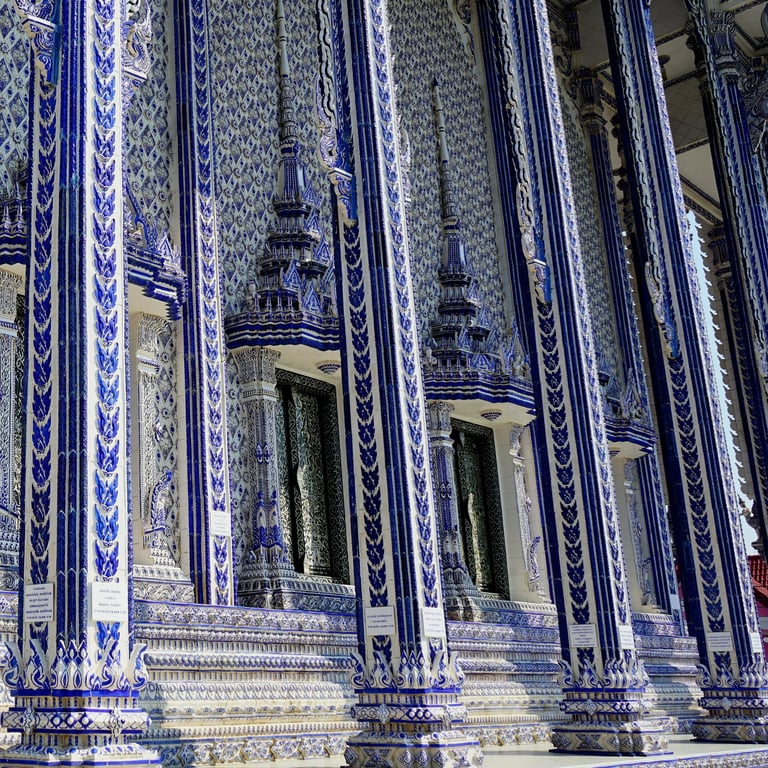
Wat khao angkhan, buriram province
Rust all around
This wat in Buriram Province is on top of an isolated hill in a red sandstone area. It has fairly distinctive grounds, everything being a rust colour, but its upkeep takes away from the overall effect. This is often noticeable in country wats where it is clear that the budget just doesn’t take care of the day-to-day maintenance. Whilst the royal wats in Bangkok are immaculate, freshly painted and not a brick or tile out of place, many of their countryside juniors are languishing rather. At this wat a key feature is the large reclining Buddha with a big shade over it like a football stand. When I was there a storm had flattened the cover which lay on top of the viewing area. I wondered how long it would be before it was fixed?
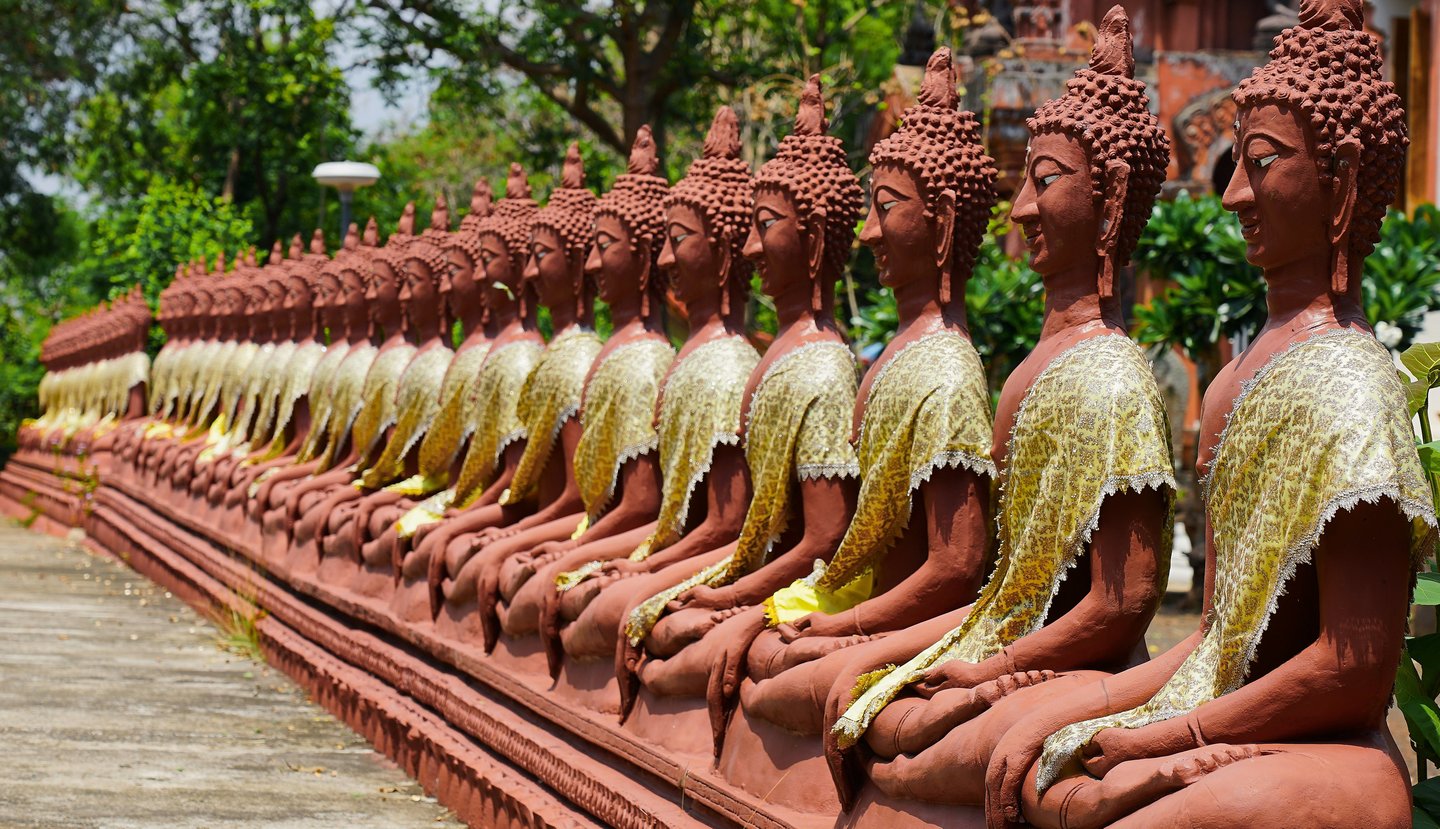

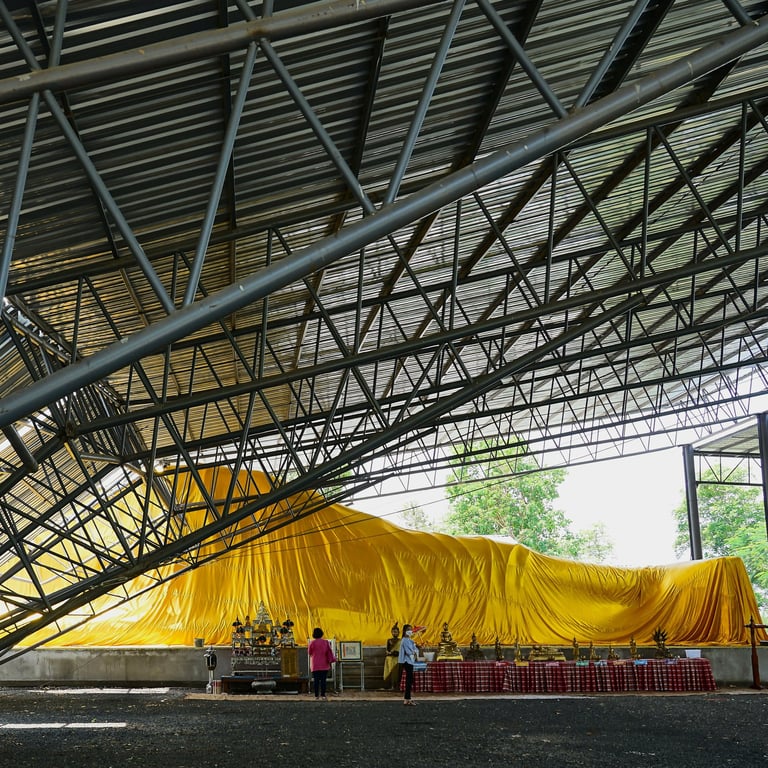
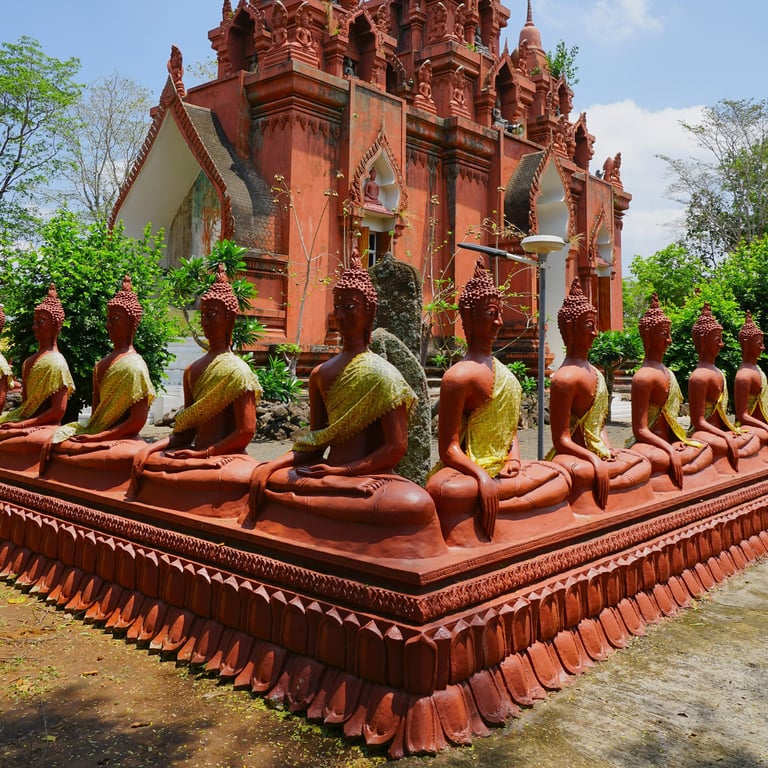
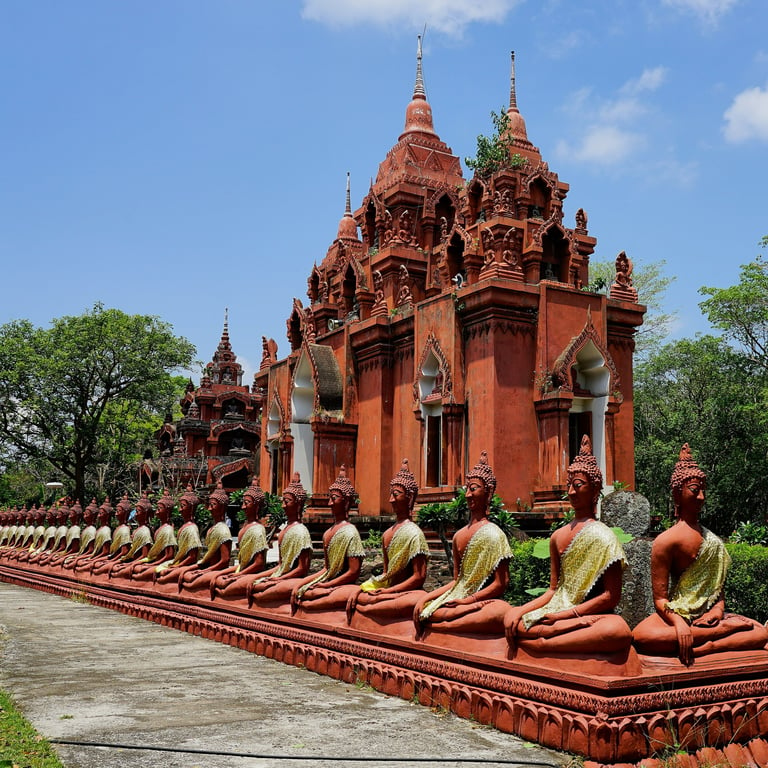
Wat pa ban tat, udon thani
Black and White
This is another of those wats whose setting can be described as majestic. Everything about it is precise: spotlessly clean, beautifully proportioned and strikingly designed. This is the first time that I have seen a wat that is essentially black and white themed – unusual, but it works. The wat was founded by the nationally famous monk, Ajarn Maha Bua who died in 2011 and is said to have attained enlightenment and will no longer return to earth. There is quite a reverent atmosphere around the place with people talking in whispers as they set off from the entrance. I was politely requested to hitch my shorts down to cover my knees. This was no issue at all as they naturally tend to migrate that way without prompting. And let’s face it, elderly knees are rarely an uplifting sight anyway.
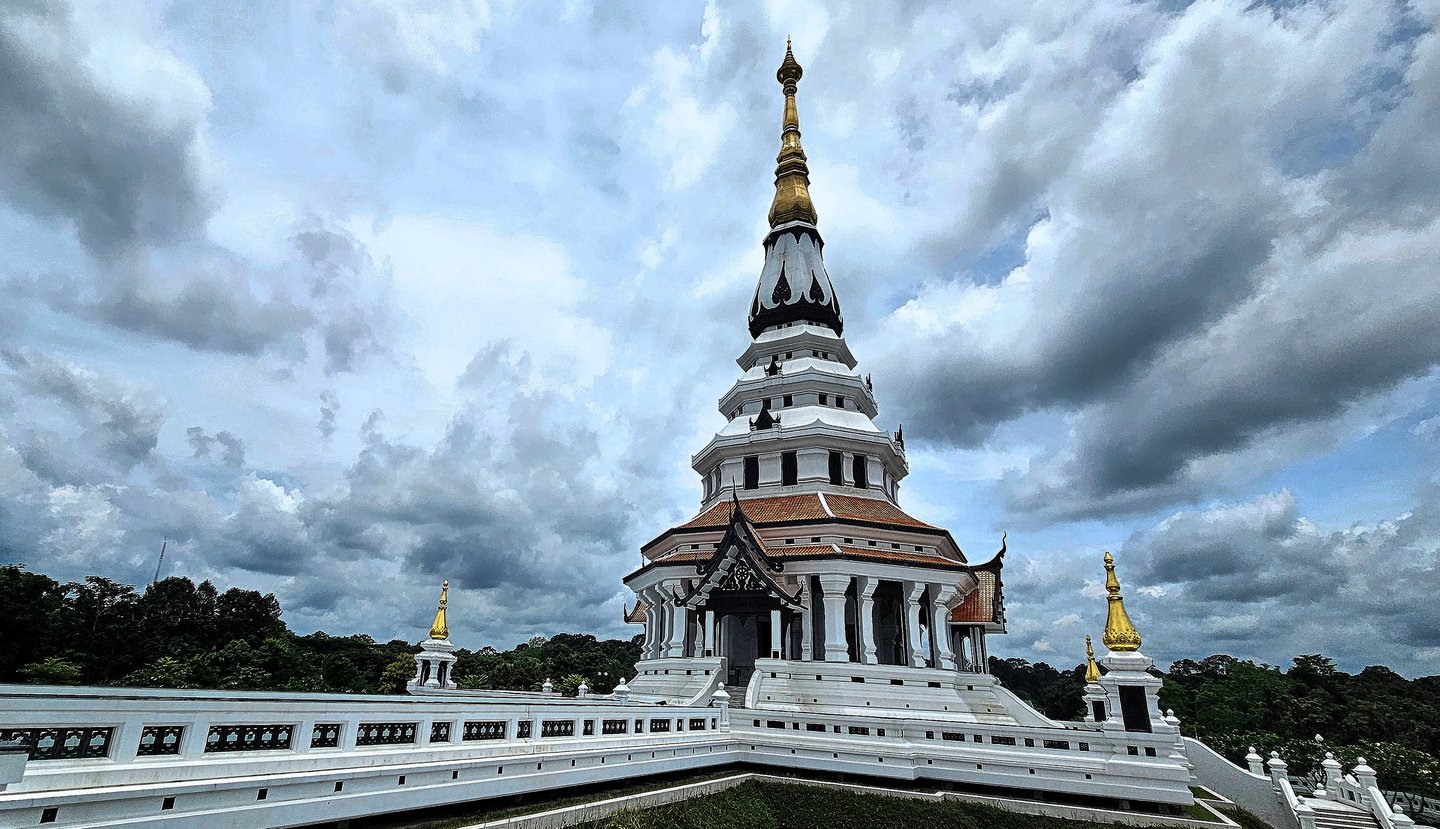

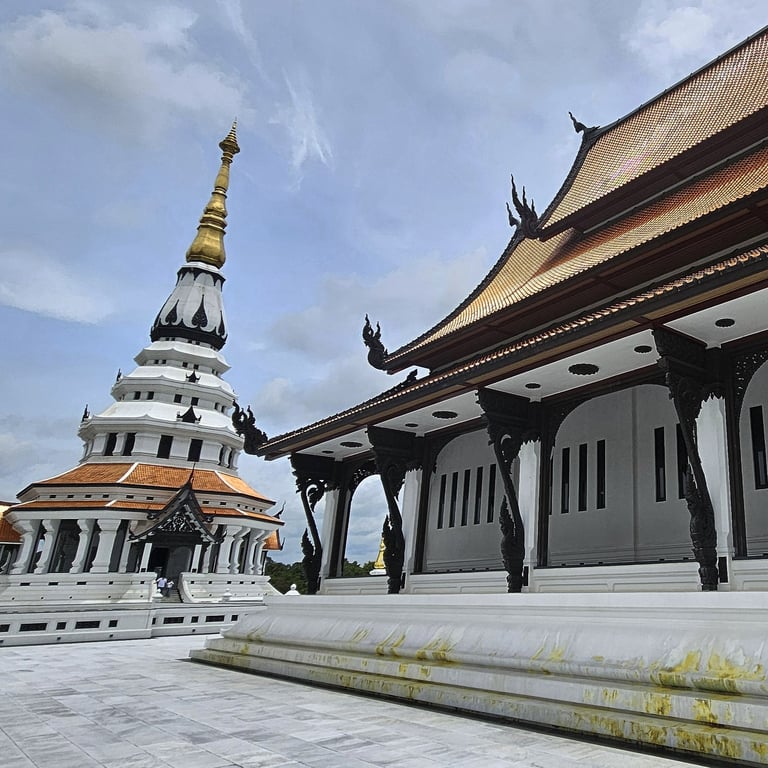
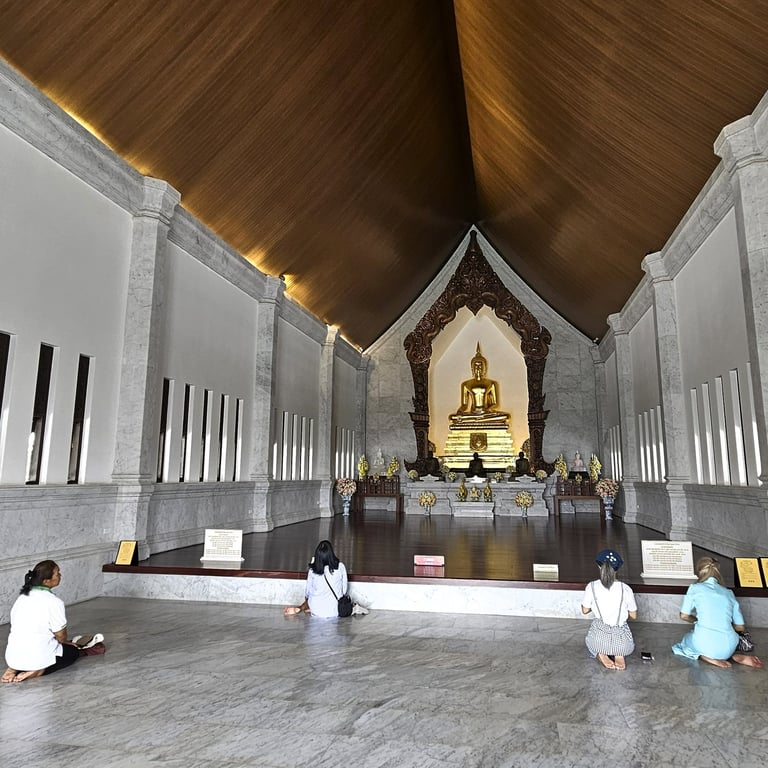
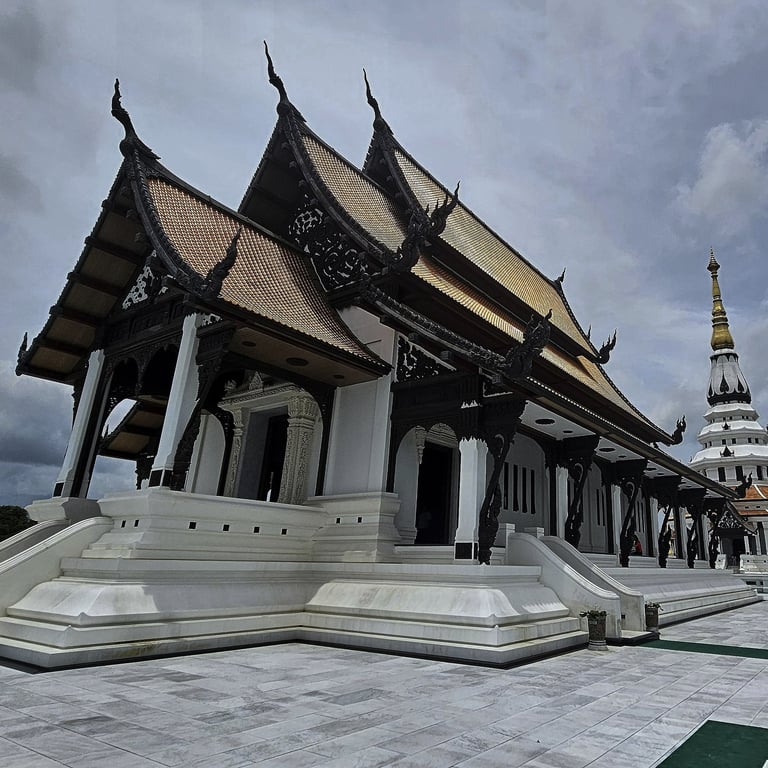
Wat khao tabaek, chonburi province
A world of prayer ribbons
I can imagine a committee meeting where they took a vote and agreed to offer coloured ribbons at the wat entrance for devotees to write their wishes on, before tying them to a tree or pillar. For a fee of course. What a winning idea that turned out to be! The wat and steep approaches are festooned with prayer ribbons, such that there is scarcely anywhere left to affix your offering. I am guessing that the wat upkeep finance account is in good shape. Must be - they've built an elevated glass walkway now. This wat is only a thirty-minute drive away but in an obscure location; I found it while casually browsing google maps and scrolling down its reviewers’ ratings; a quick way of pinpointing local places of interest.
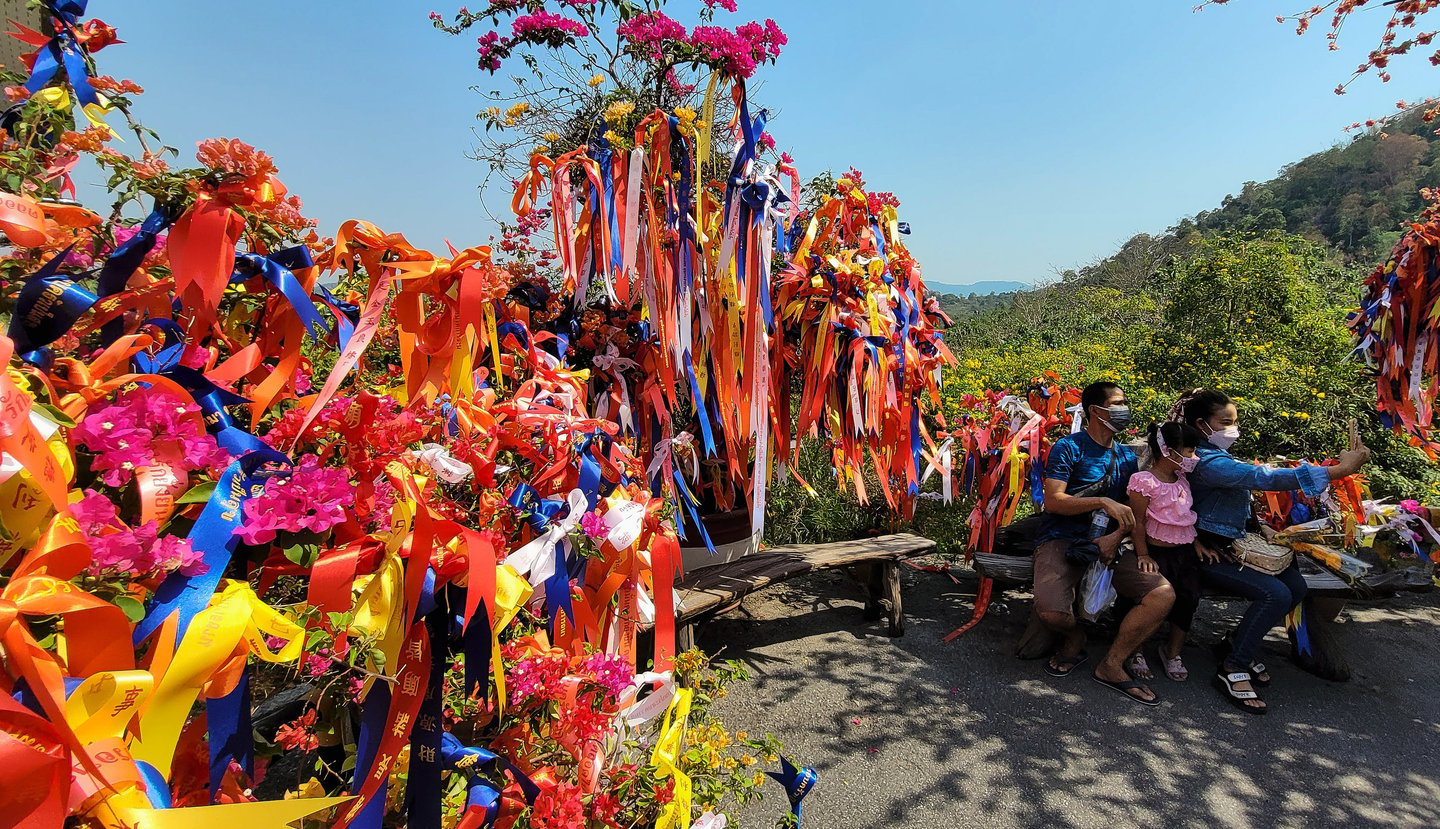

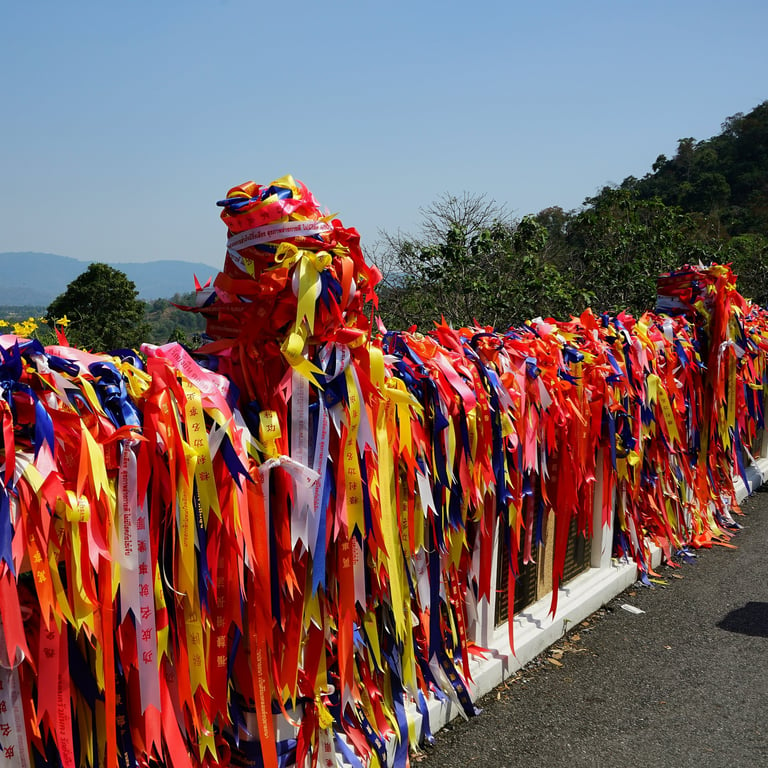
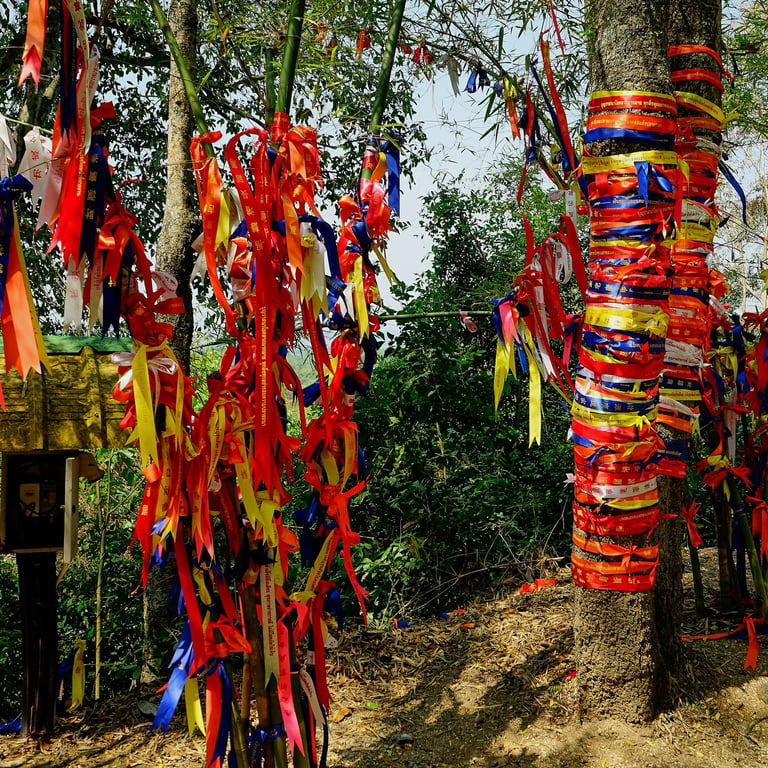
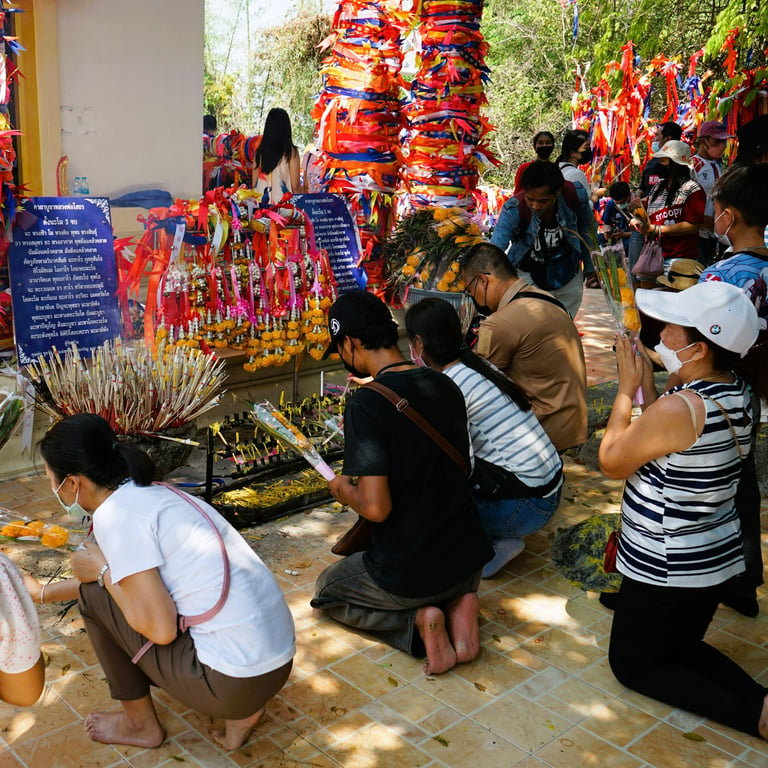
Wat phra singh, chiang mai
Golden
Statues of holy monks are often so realistic that you have to double-take. Slight exaggeration, as a row of golden figures is not likely to contain a living one. But they do invite close scrutiny to take in the detail, and perhaps a probing finger to touch the ingenuity of the sculpture. As with all photography, the light will be the key to the success or otherwise of the picture. Here the light and shade combined to make one particular monk stand out, with a large aperture accentuating the effect.
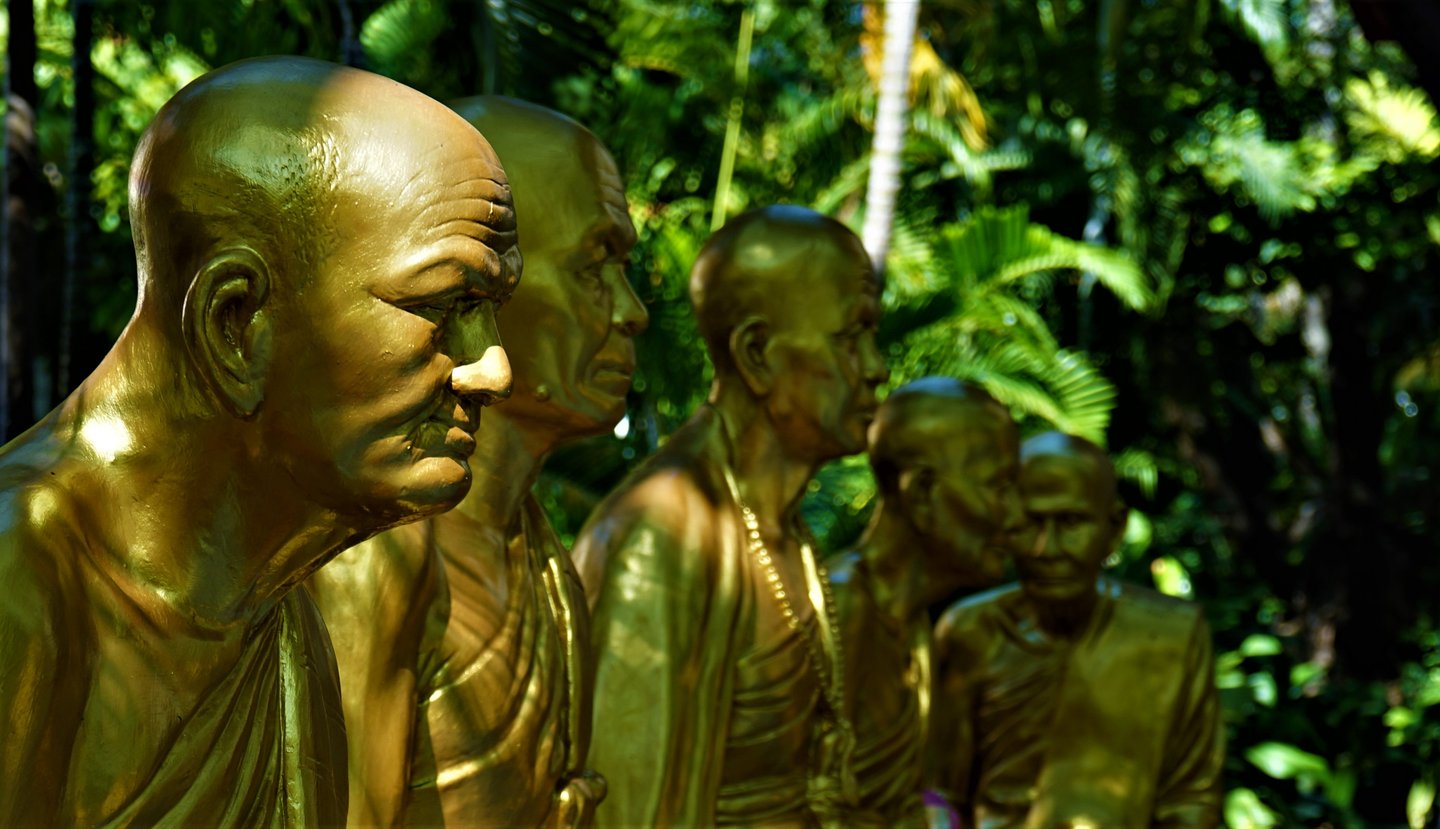

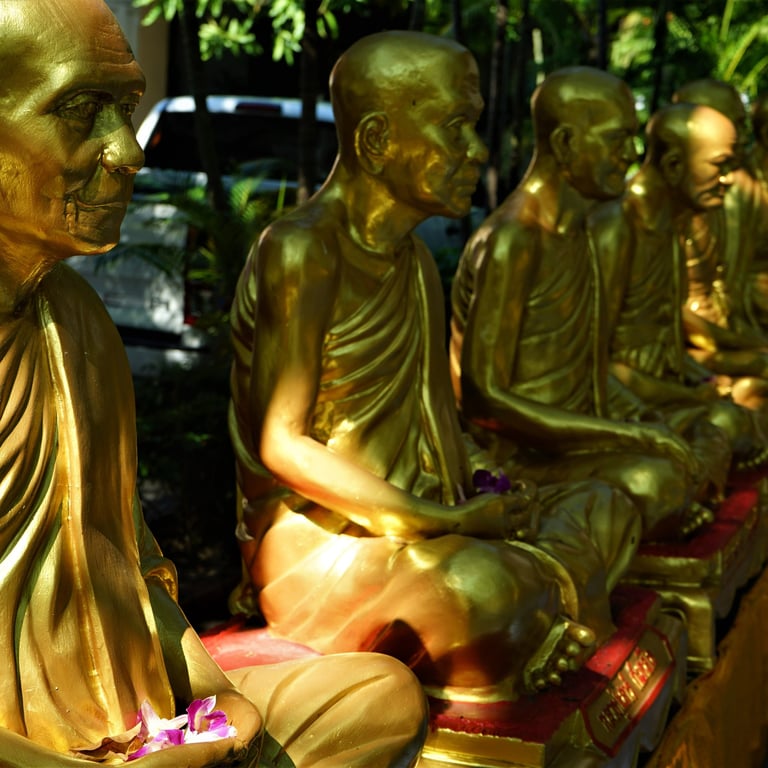
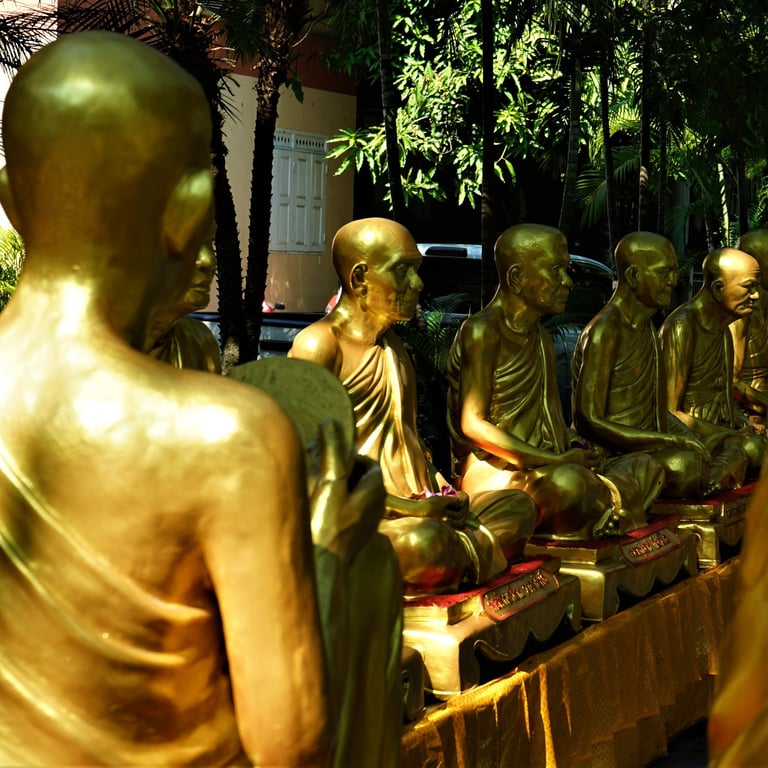
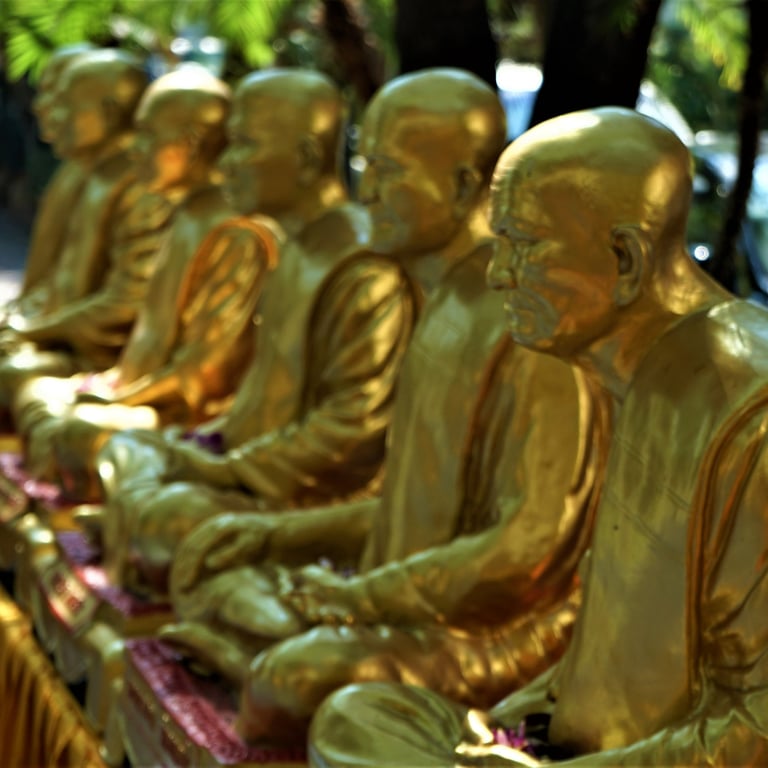
city pillar, bangkok
City pillar for luck
City Pillars in Thai towns mark the original settlement centre. This one attracts crowds, particularly at the beginning of the new year, in order to make merit and pray for good fortune in life. Amongst the rituals, devotees say set prayers while tying a silk scarf round a replica pillar or presenting garlands in front of one of the shrines. There are queues as people line up to take part, so it doesn’t take long before the garlands pile up and the scarves envelop the pillars. Attendants therefore regularly take away the offerings in their trolleys. Round the back I noticed a group of ladies re-folding the scarves and refreshing the garlands to be recycled and used anew. A regular operation behind the screens ensures that the constant stream of folks is well supplied.
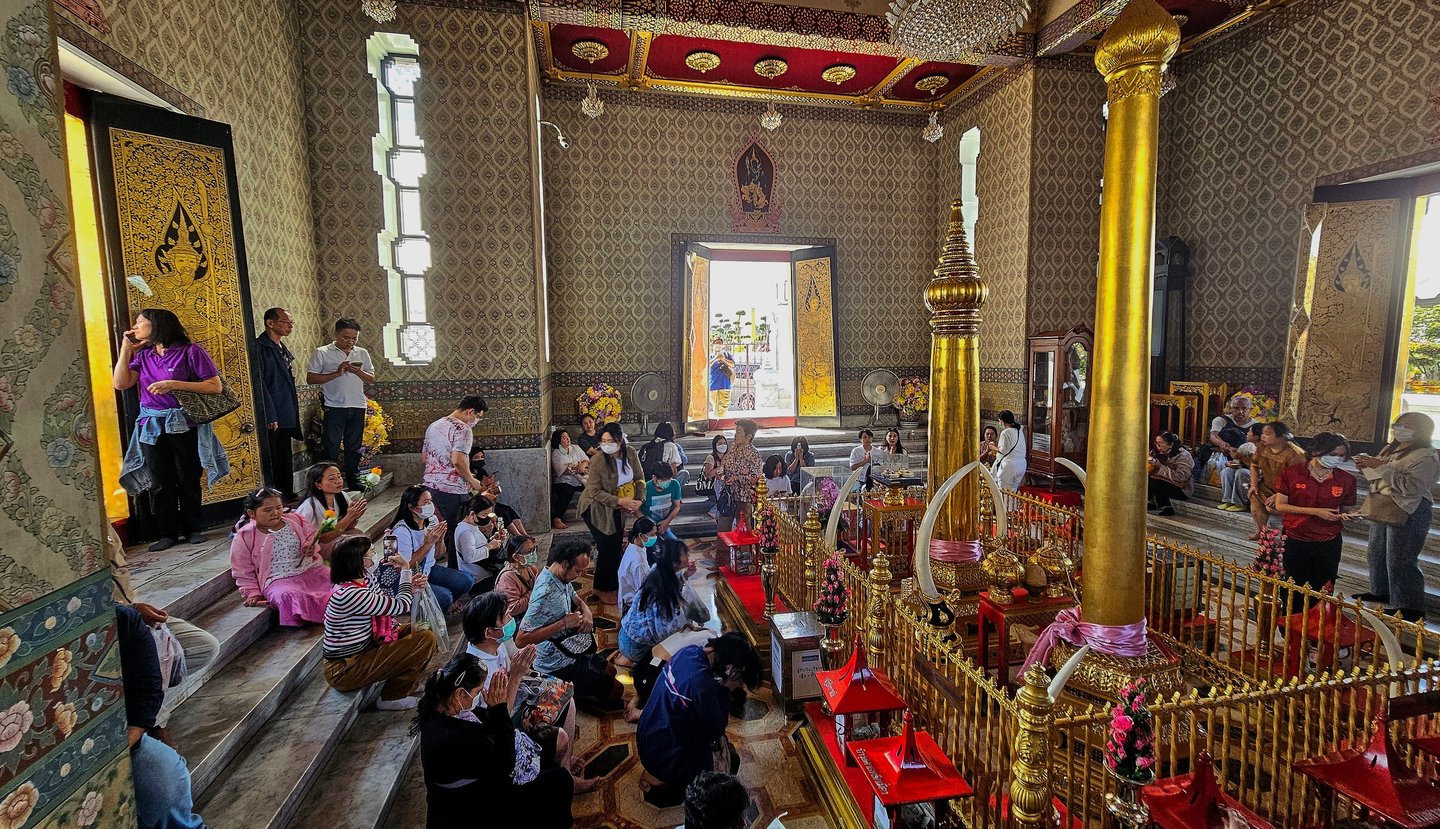

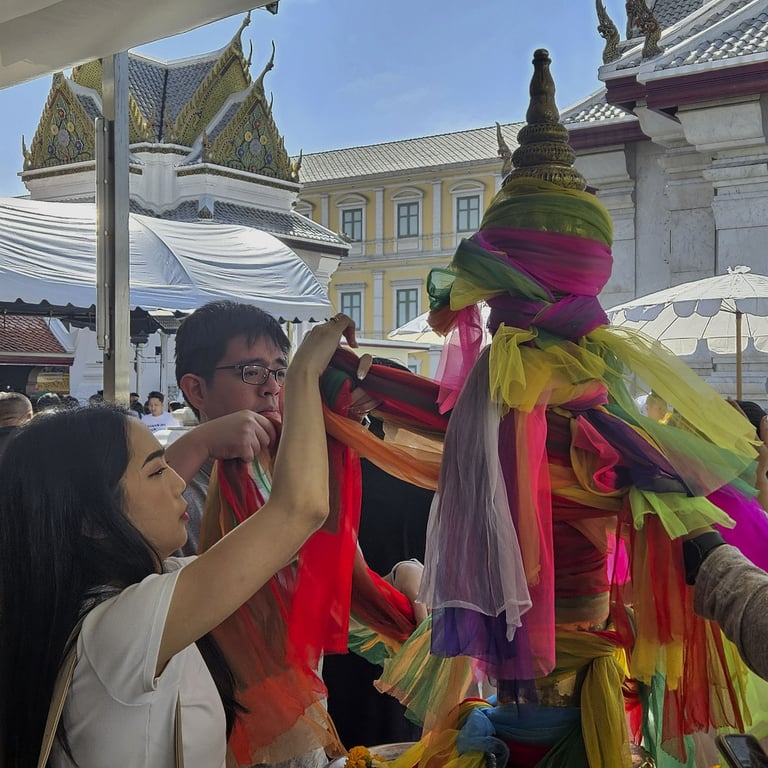
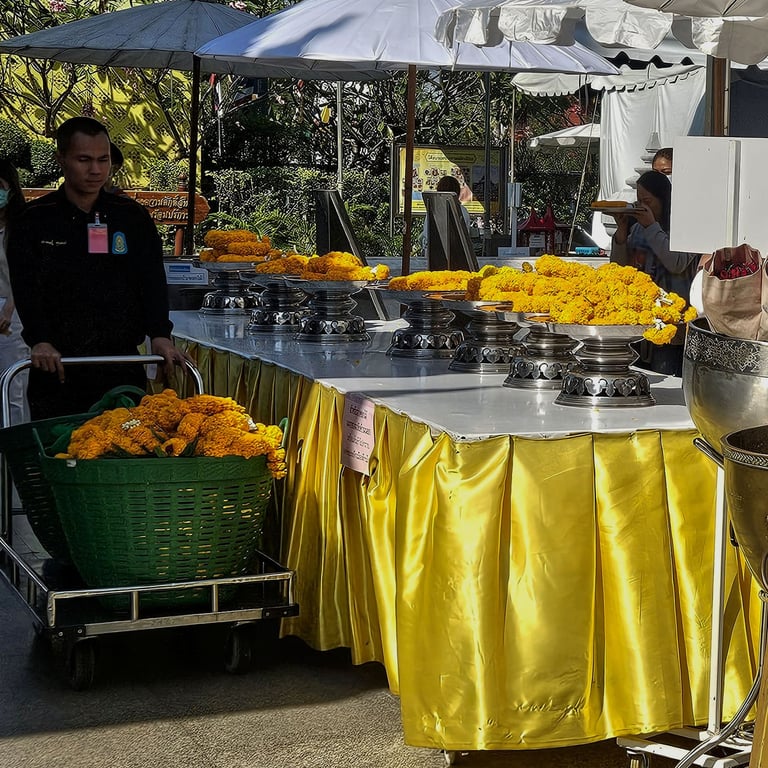
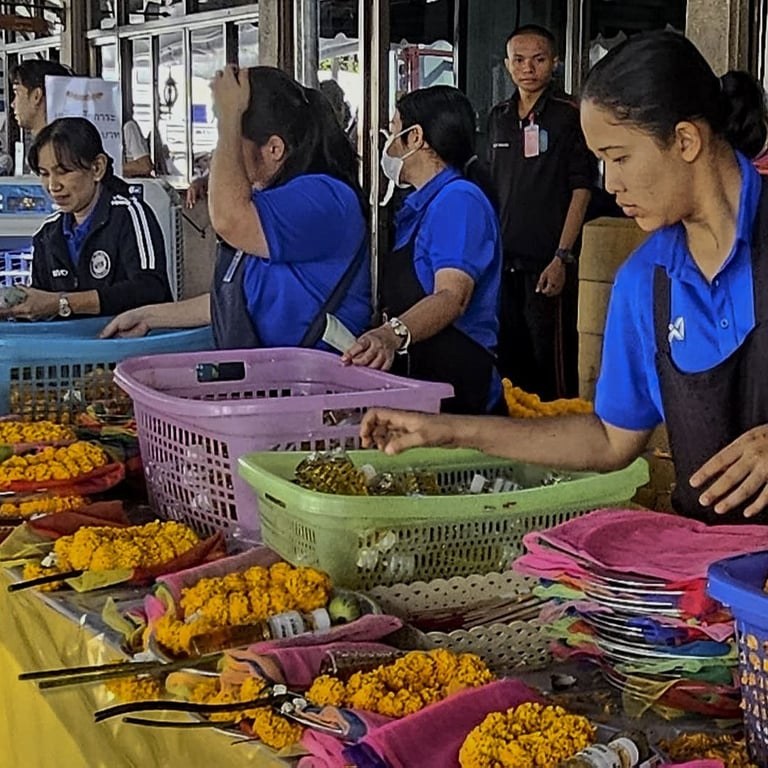
Wat phra that Chaiyaphum
Nested Buddhas
From Sai Thong National Park in Chaiyaphum Province to this wat took over two hours in the car. As is often the case, wats are located in such obscure locations. You drive along for mile upon mile through well-cultivated green fields of this and that, with absolutely nothing to suggest a splendid destination is in the off. As the road starts to climb and snake its way upwards, you do start to think, ‘This would be a good place to build a wat…’ The way up begins with red prayer ribbons tied all over, even to the elephant’s trunk for extra luck, and ends with a setting commanding views all around. The nested gold standing Buddhas make a strong visual for your camera, with a bit of blue sky adding the finishing touches.
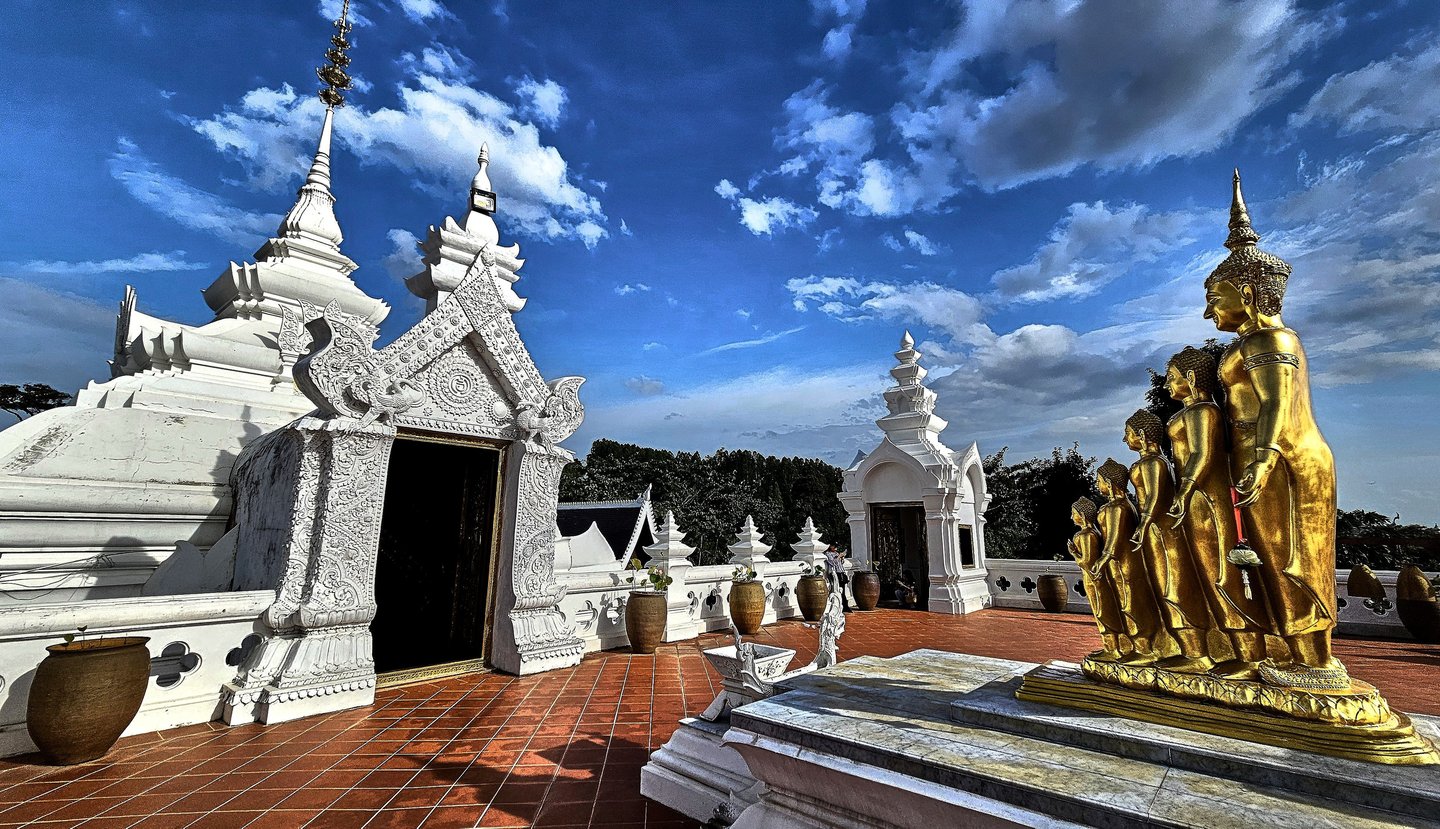

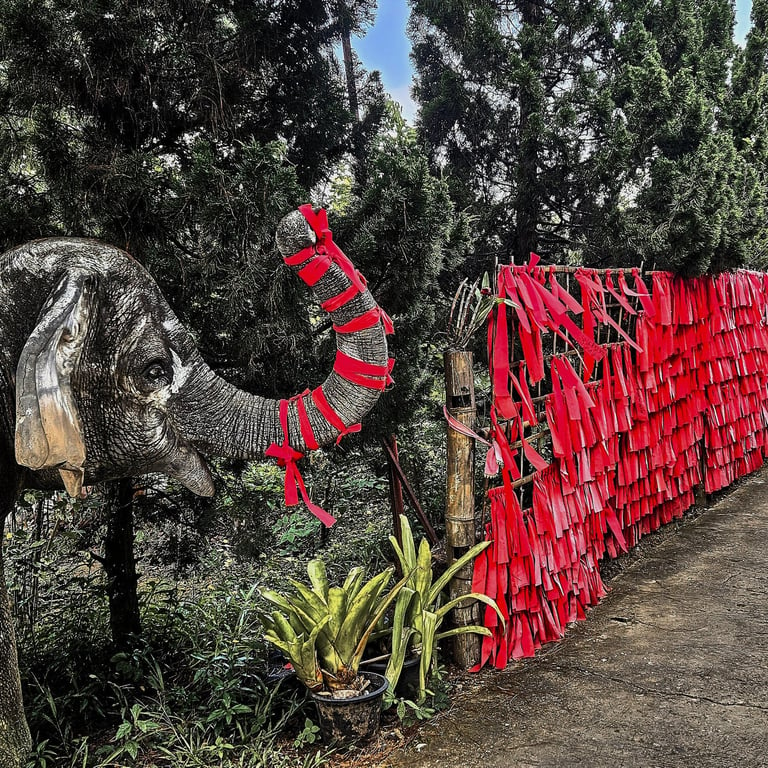
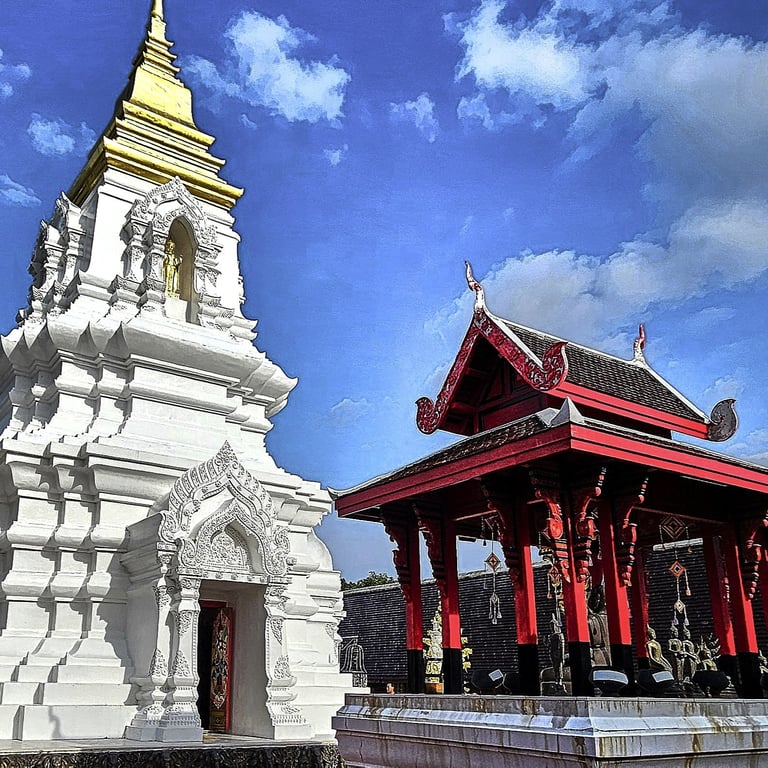
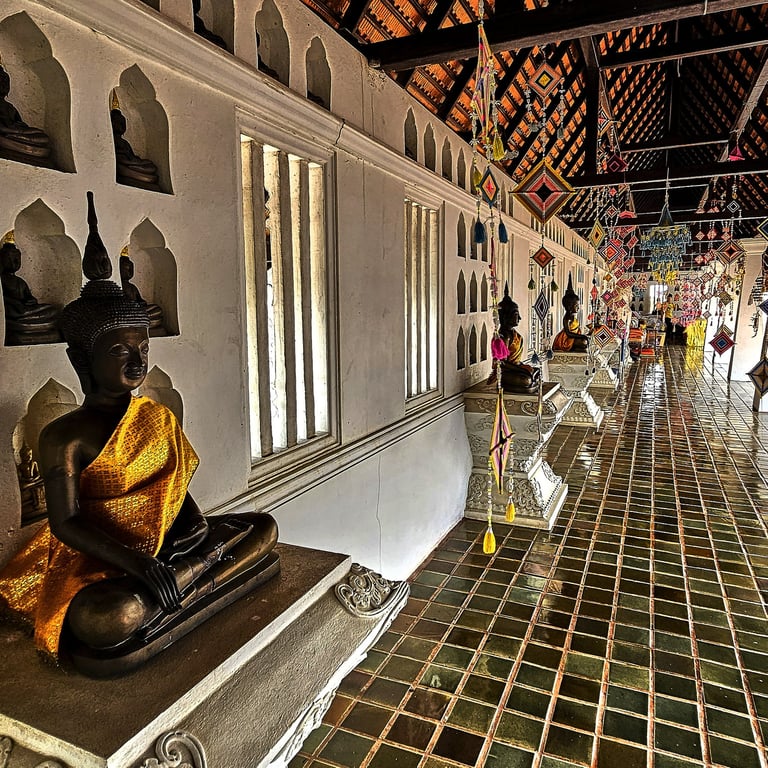
Wat phra that nong bua, ubon ratchathani
A Quincunx
This striking tall pyramid is surrounded by four smaller ones at the corners of the square – a layout called a quincunx, like Angkor Wat. With a wide apron of tiles, there is quite a bit of padding shoeless as you make your way round; rather skiddy after a recent shower (having wet socks was less appealing). Once again, the interior of a wat offered up a surprise – you never know what to expect with odd-shaped exteriors – this one with a kind of lattice structure disappearing upwards. The OTOP styled market outside looked really promising but exiting the wat it was all but wrapped up. Off by 6 pm sharpish was the obvious instruction – I did wonder what the penalty was for missing the deadline – it clearly works!
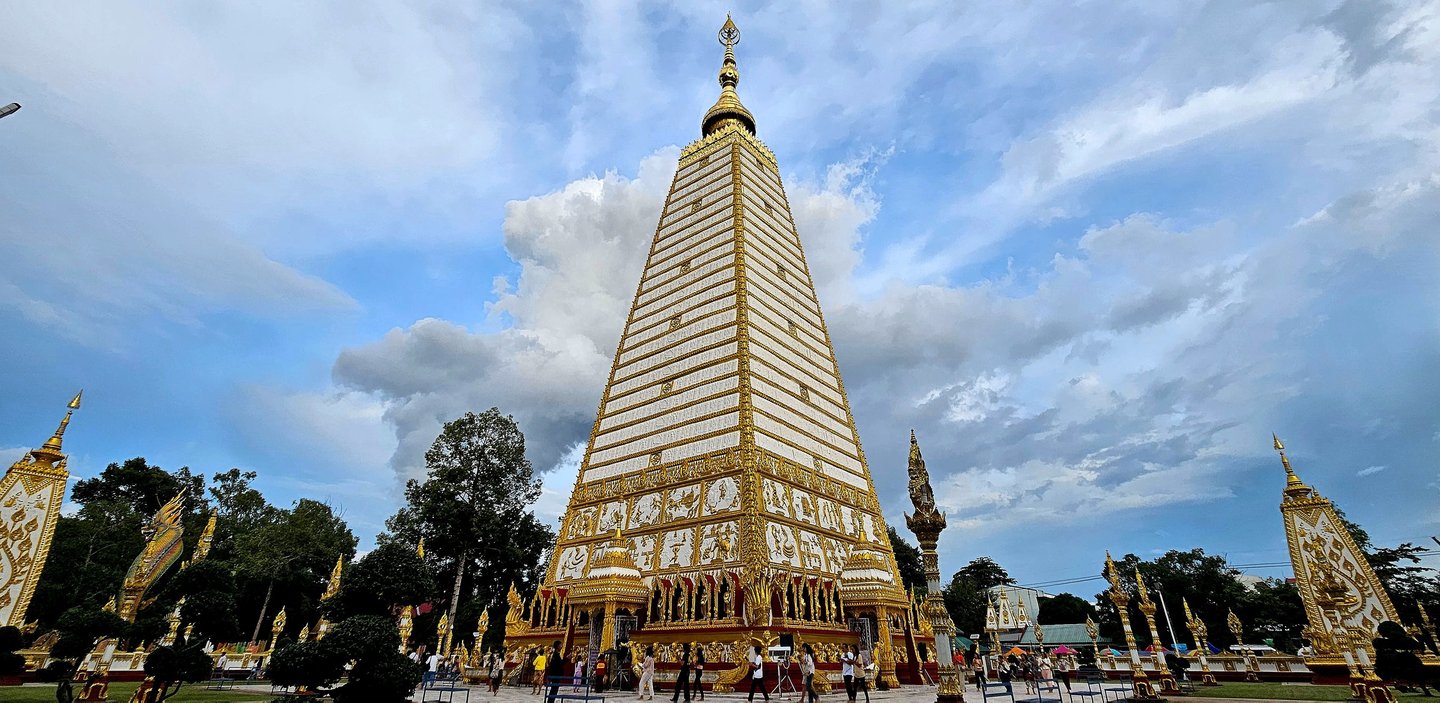

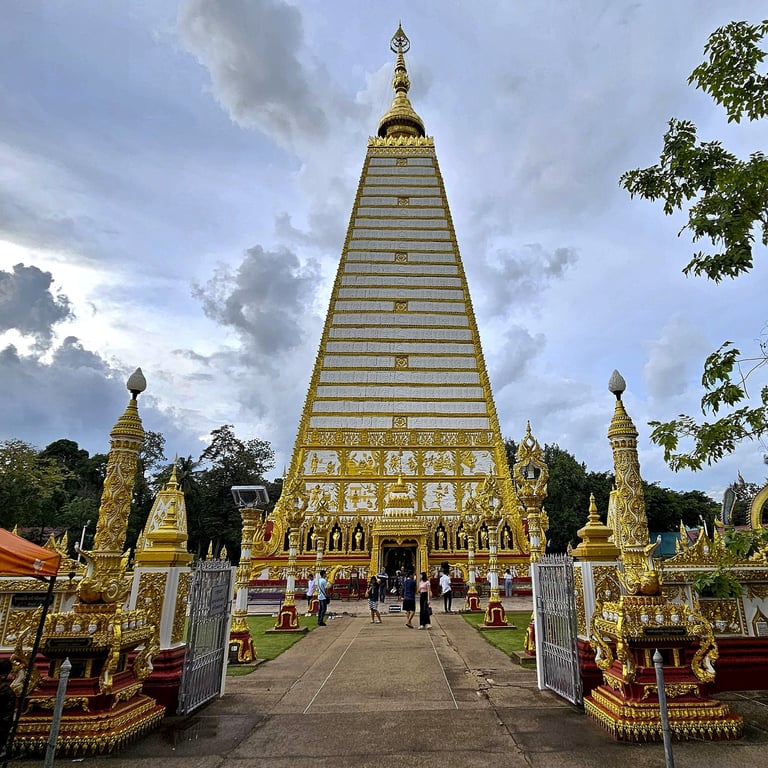
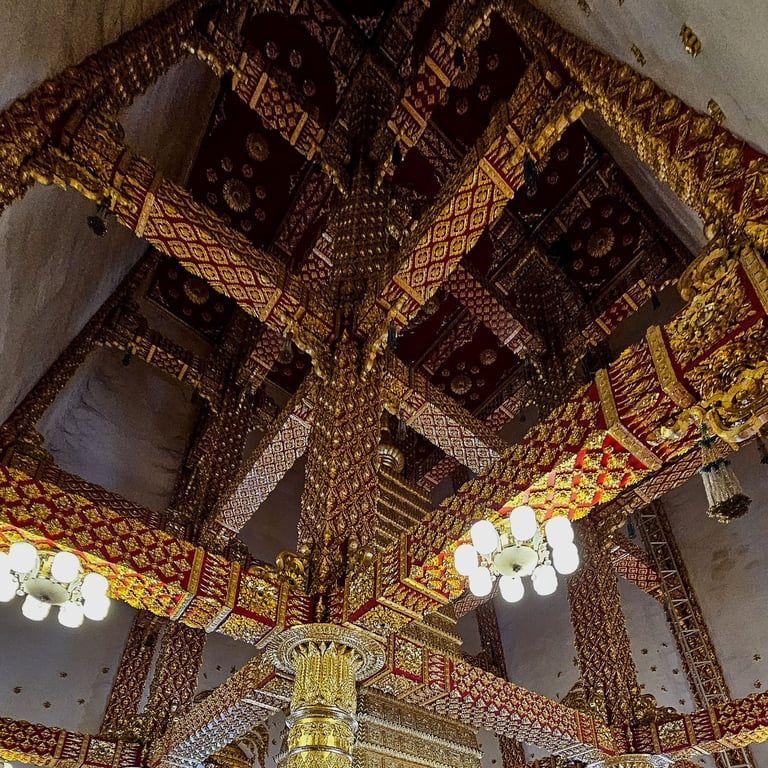
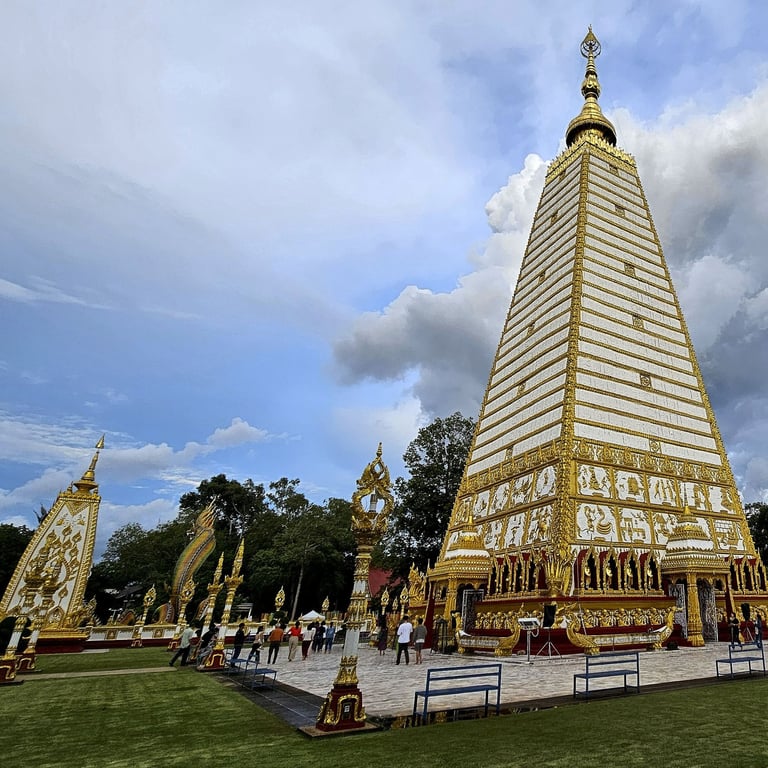
Wat boonyawad, chonburi province
Meditation centre for devotees
Wat Boonyawad in the outer eastern reaches of the province is remote and surrounded by rubber and palm oil plantations. It’s one of those where you park the car but there are no clues as to which way to go, so you follow a group who look like they know what they are doing. They don’t. The second car park at the top leads you to the main stupa and its commanding views across the countryside. The wat is a centre for meditation, with the view certainly augmenting the experience.
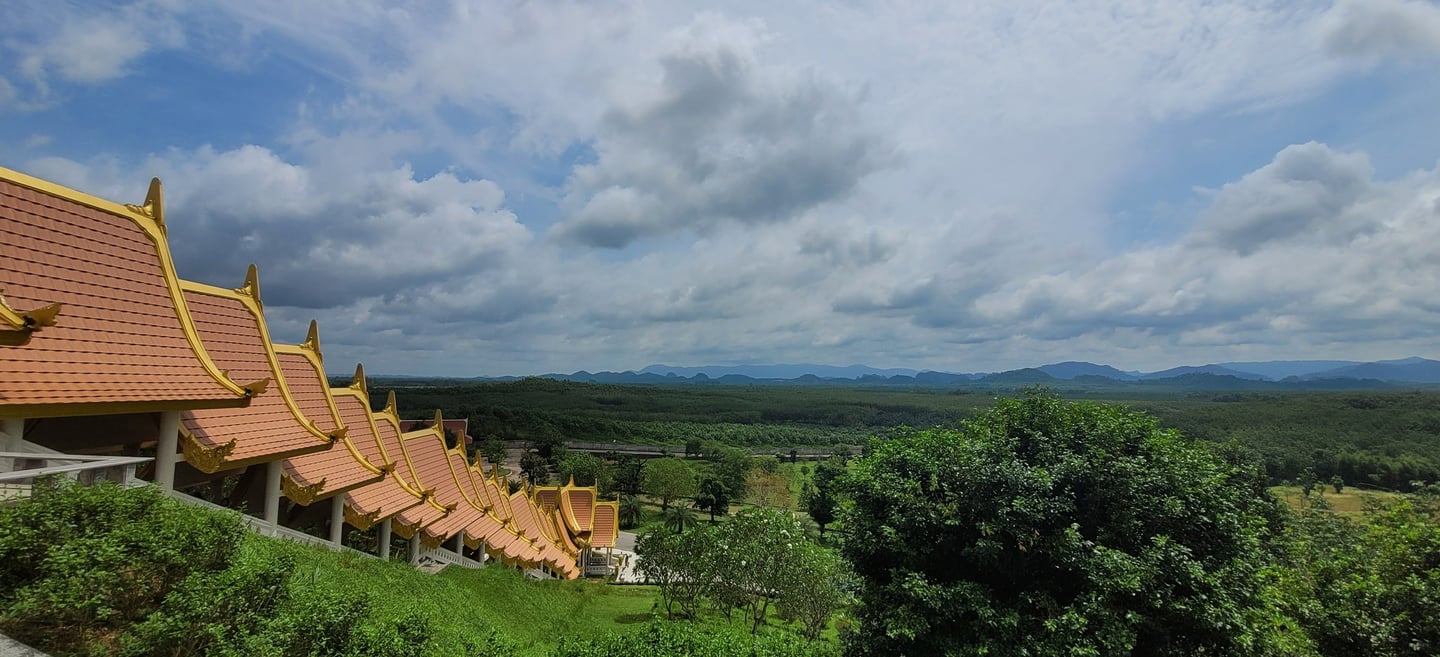

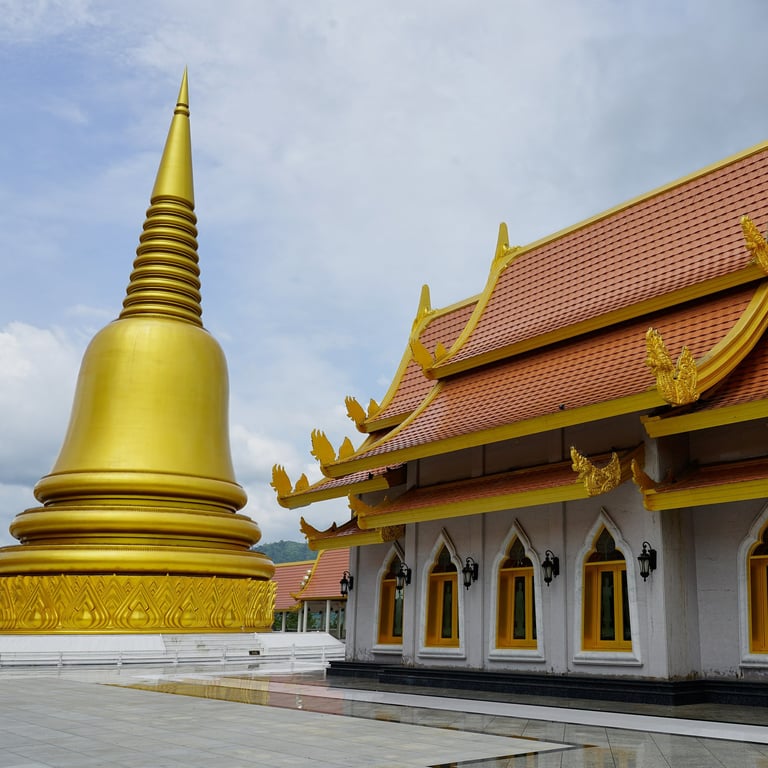
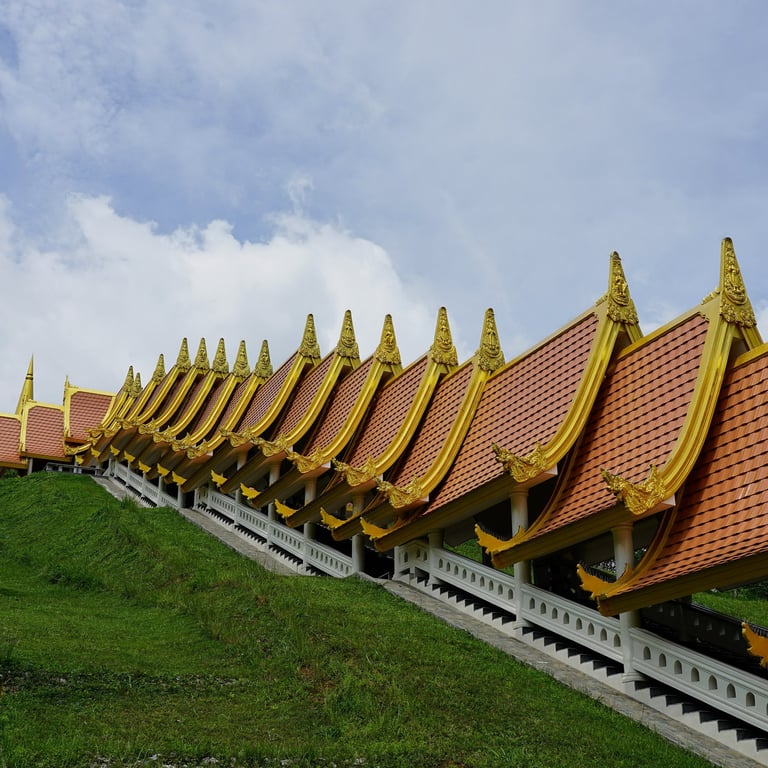
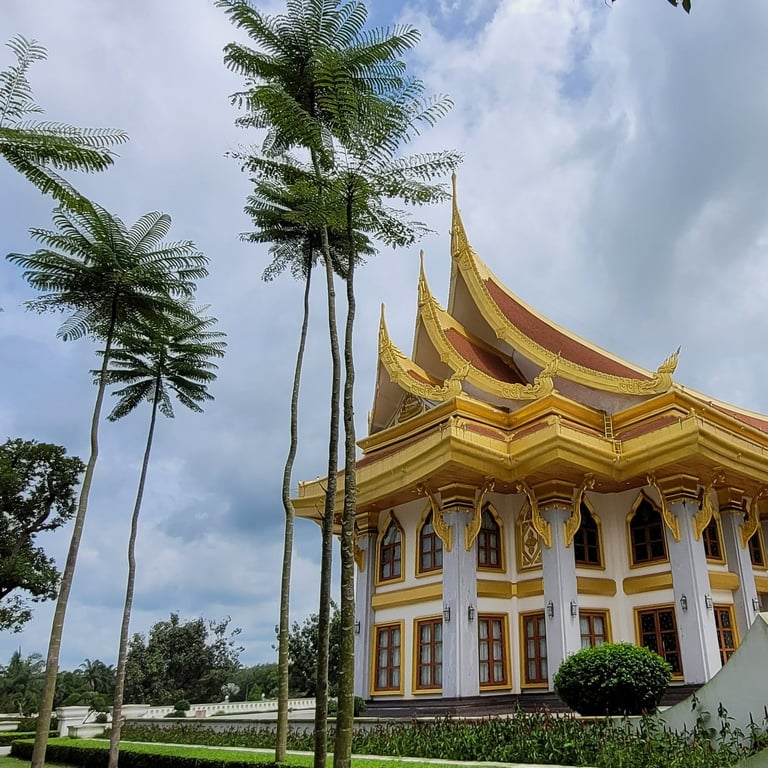
Wat devaraj kunchon, bangkok
Feed the fish!
Wat Devaraj Kunchon is by the Chao Phraya River in Bangkok. The interior of the ubosot is exquisitely painted in rich blue and red ochre. On site is also a teak museum with a display of tree-rings going back to the 1500s. Release a fish into the river for extra merit, or just feed them with food from the adjacent market. Huge catfish churn the waters awaiting your best efforts. These wats in old Bangkok are always a bit of a hike to get to from the nearest public transport stop, and invariably leave your shirt soaked with sweat for your troubles. Just dry out in the MRT train air-con on the way back.
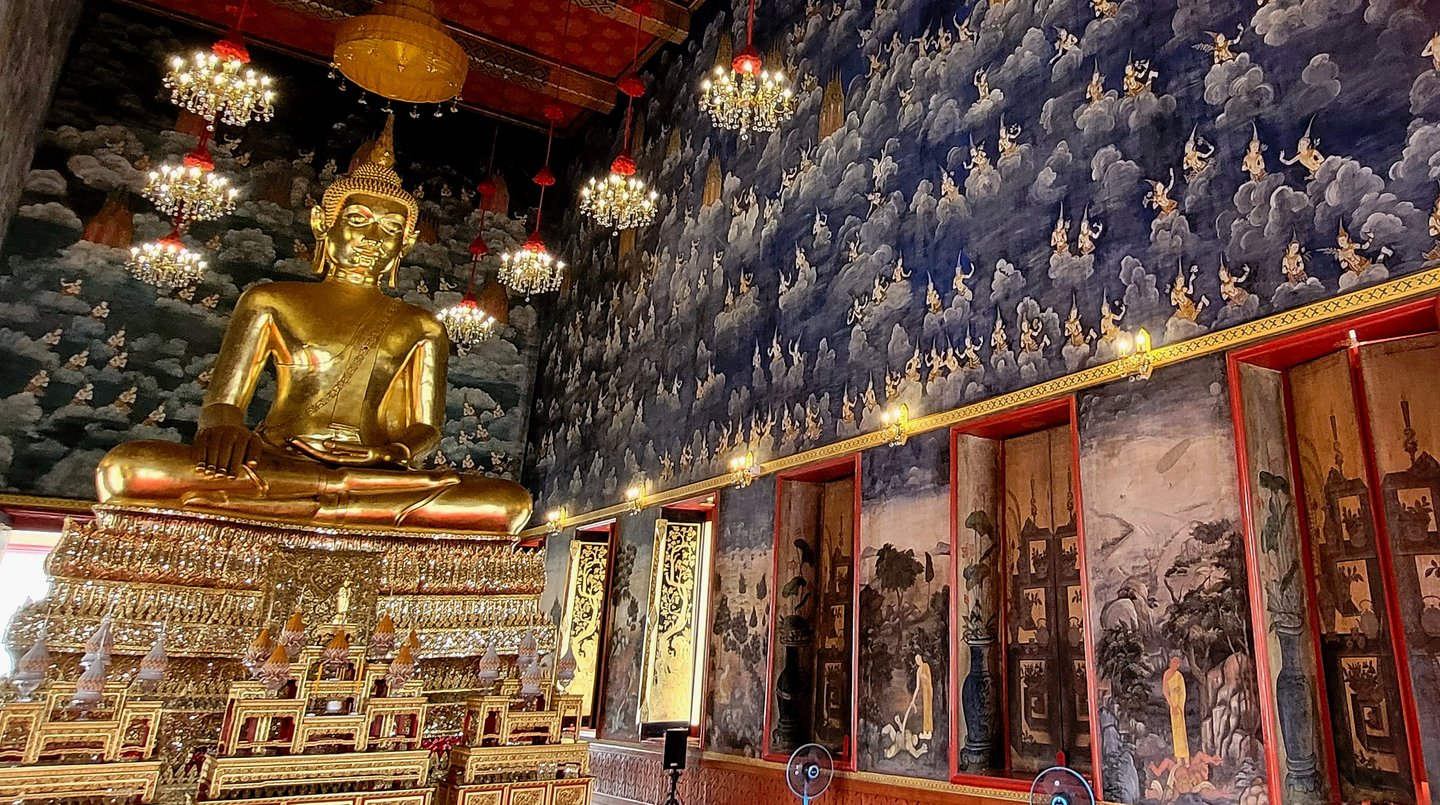

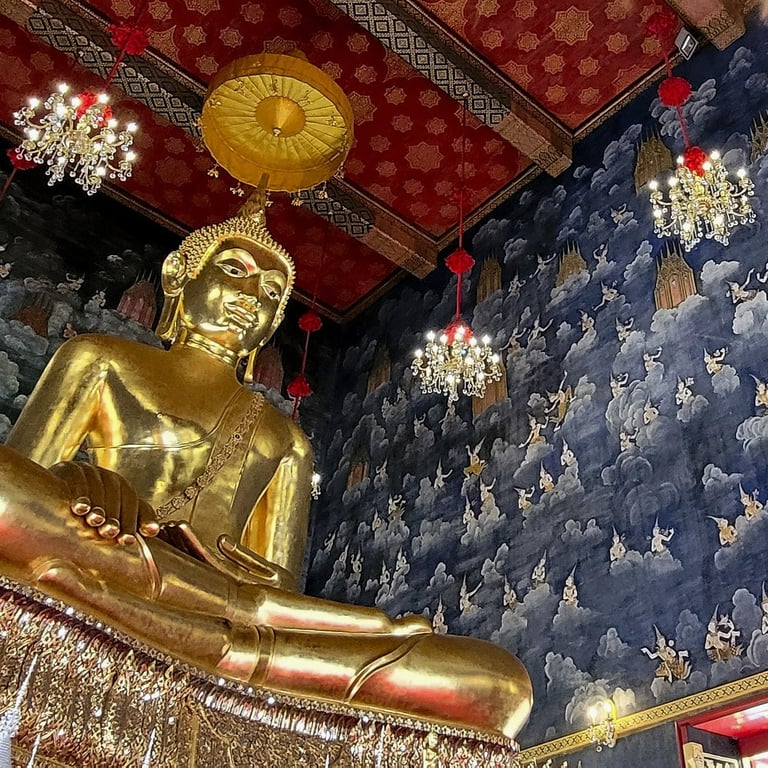
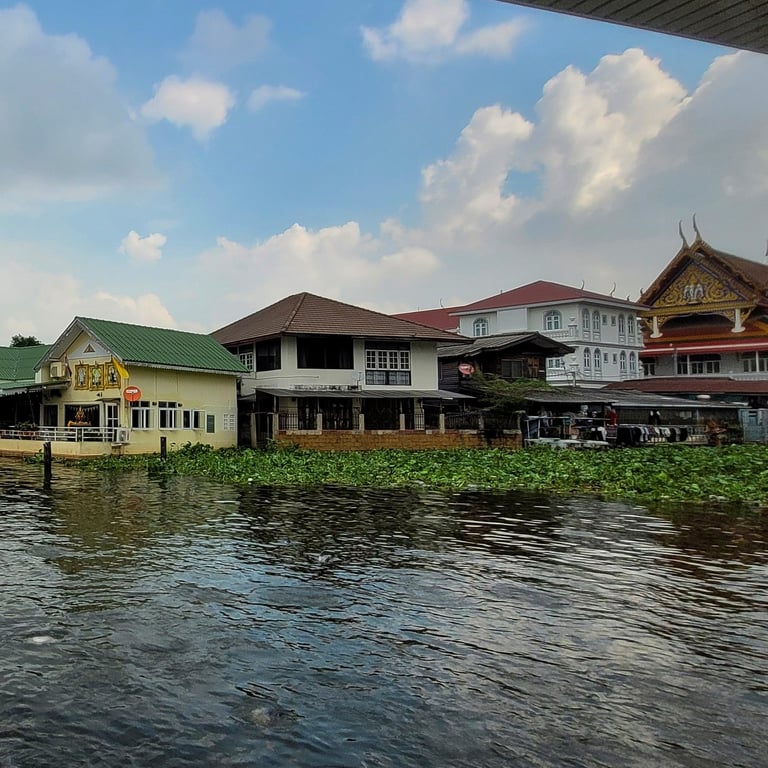
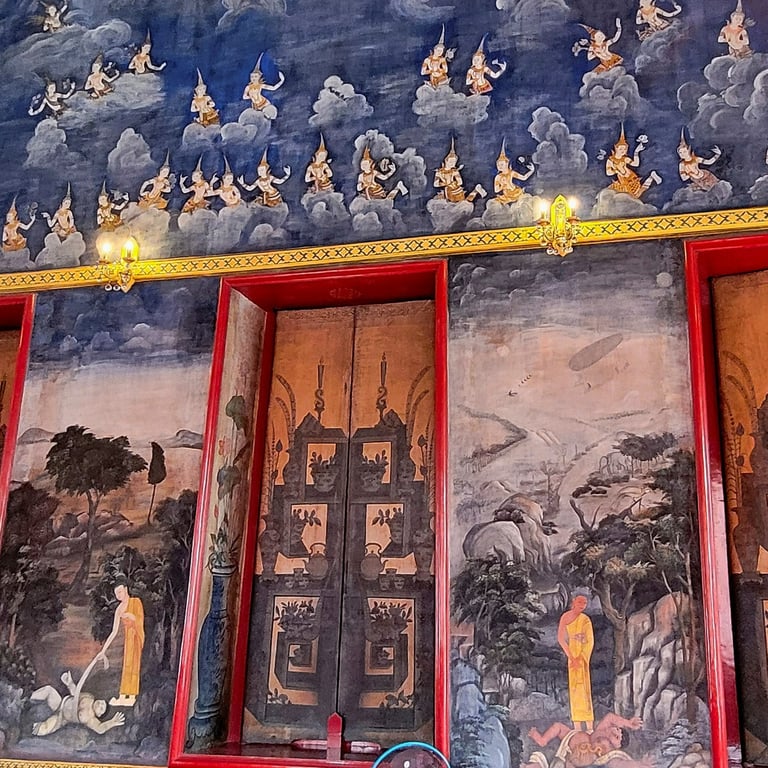
Wat neramit wipatsana, loei province
Red-ochre hit
As you approach Wat Neramit Wipatsana it really looks like it wasn't worth the long detour to get there. Up and down, round and round as you follow the hilly contours. Walking round the laterite brick exterior you might be forgiven for focusing on what you are going to have for lunch later in order to bring some cheer to the day. Once you step inside though, you are facing a red-ochre assault. It is hard to keep your eyes off the rich detail in every nook and cranny. Craning silently upwards, I imagined I heard, 'Your mouth is open, dear,' in several languages.
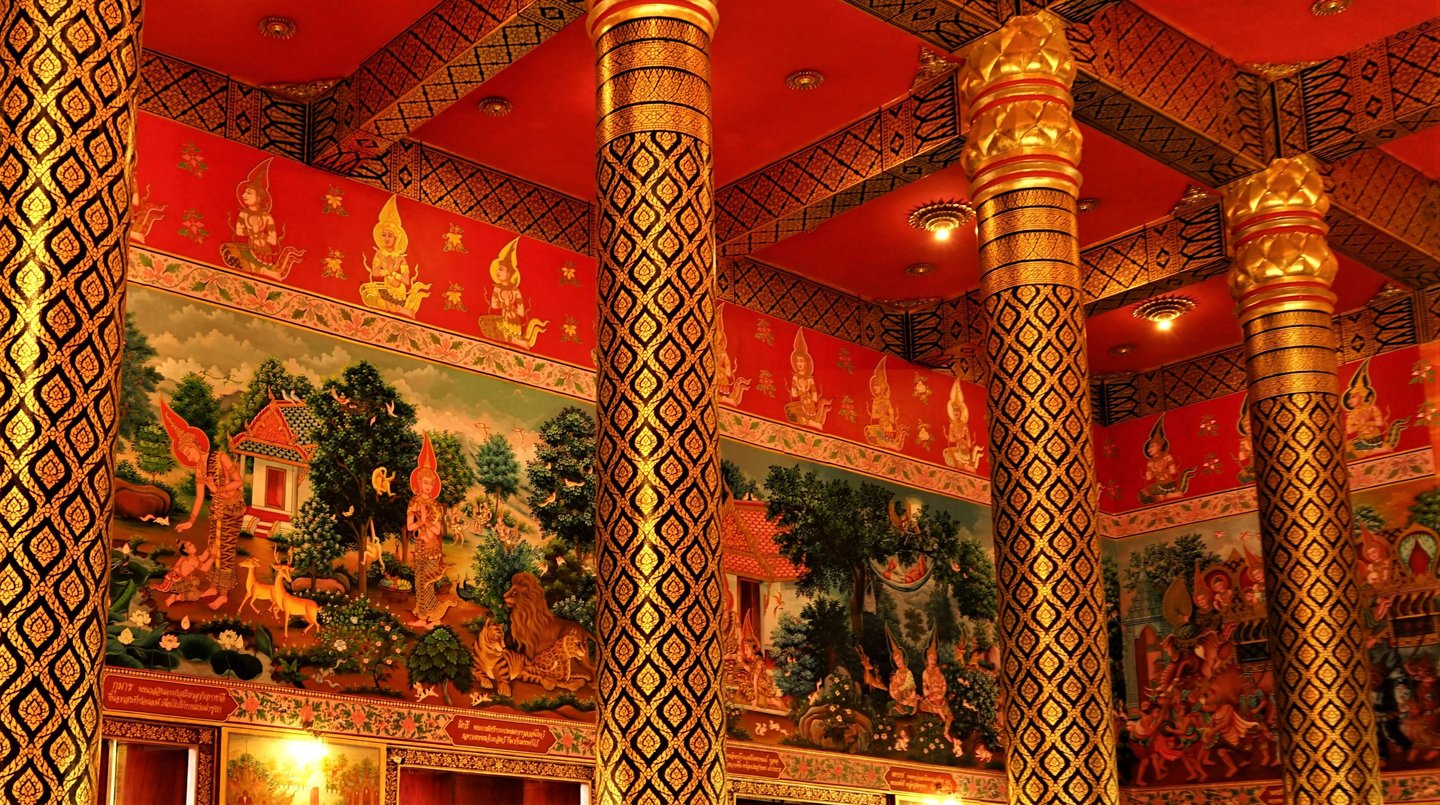

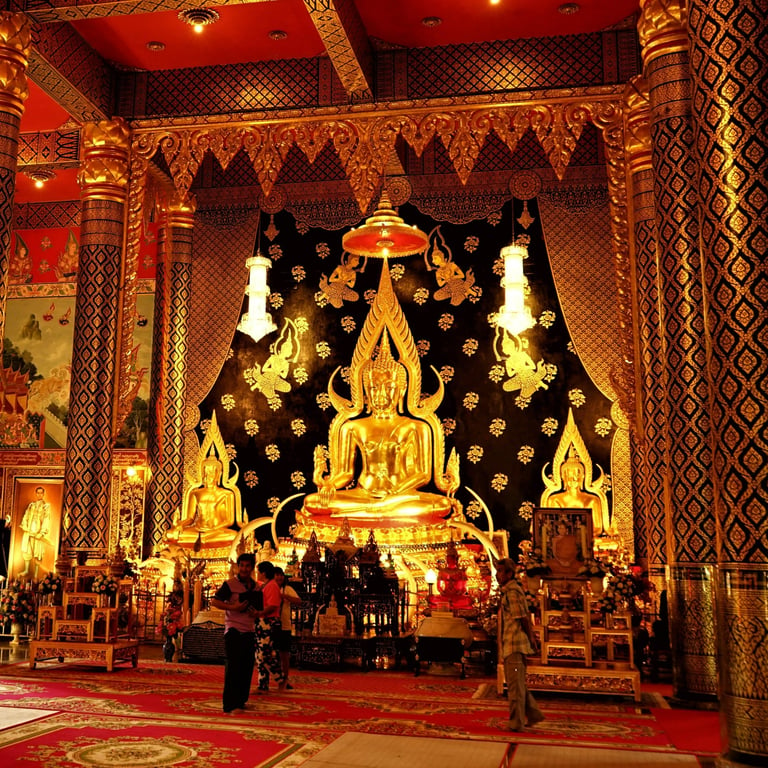
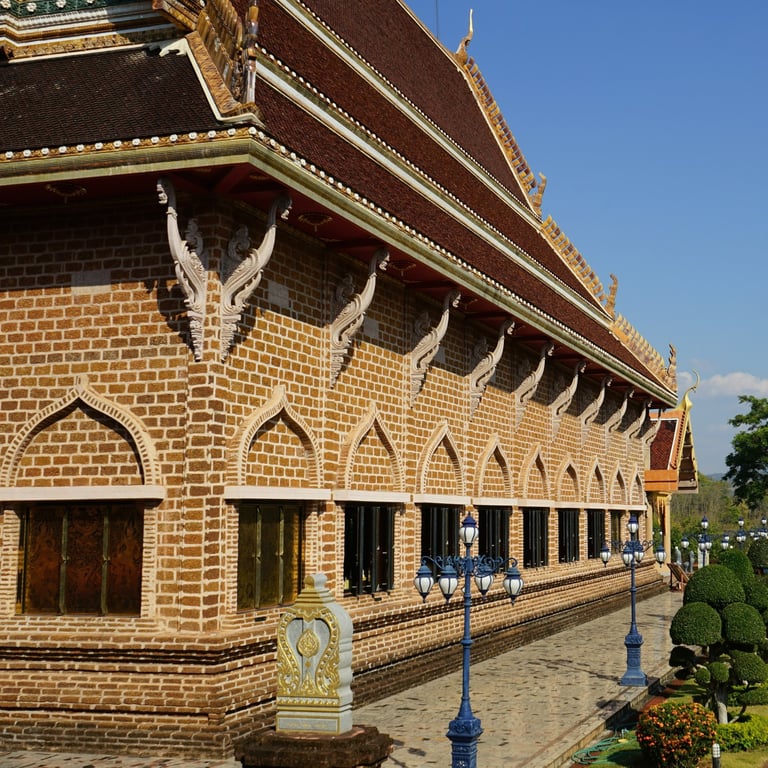
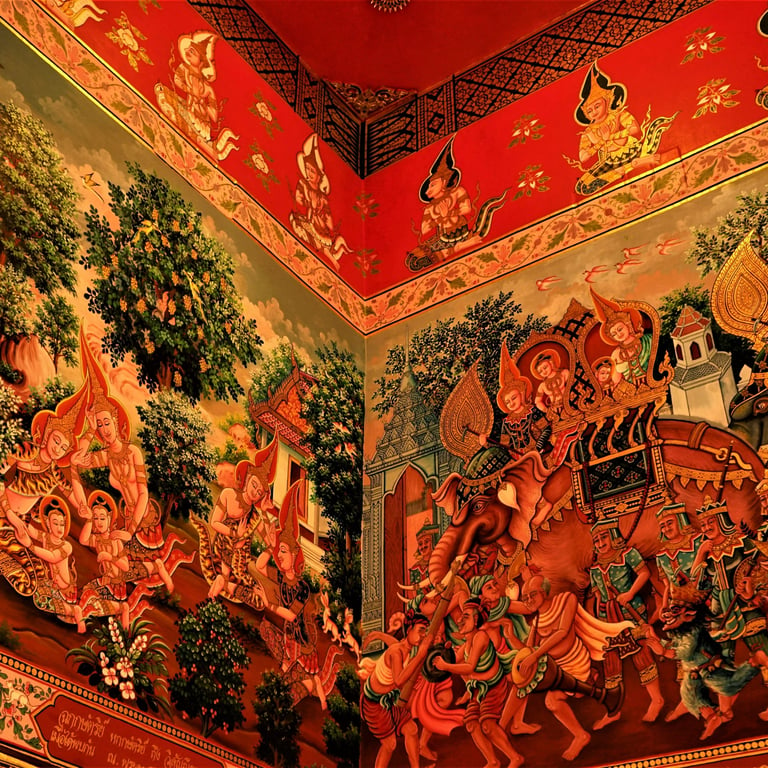
Wat umong suan phutthatham, chiang mai
Tattoo you
This monk was covered both sides in religious tattoos. Monks are often heavily tattooed, not always in a holy way, which is perhaps indicative of their former ways and a quest for atonement. We had a pleasant chat which was rather constrained by our respective hopeless language abilities. But I was able to determine that Nigel used to be a tax inspector in Dorking, Surrey. I've no idea who he thought I was! We went our separate ways with furrowed brows... Want to stop a dog from barking? Paint its face blue, apparently. Does it work? Absolutely no idea beyond this 30-second non-barking encounter.
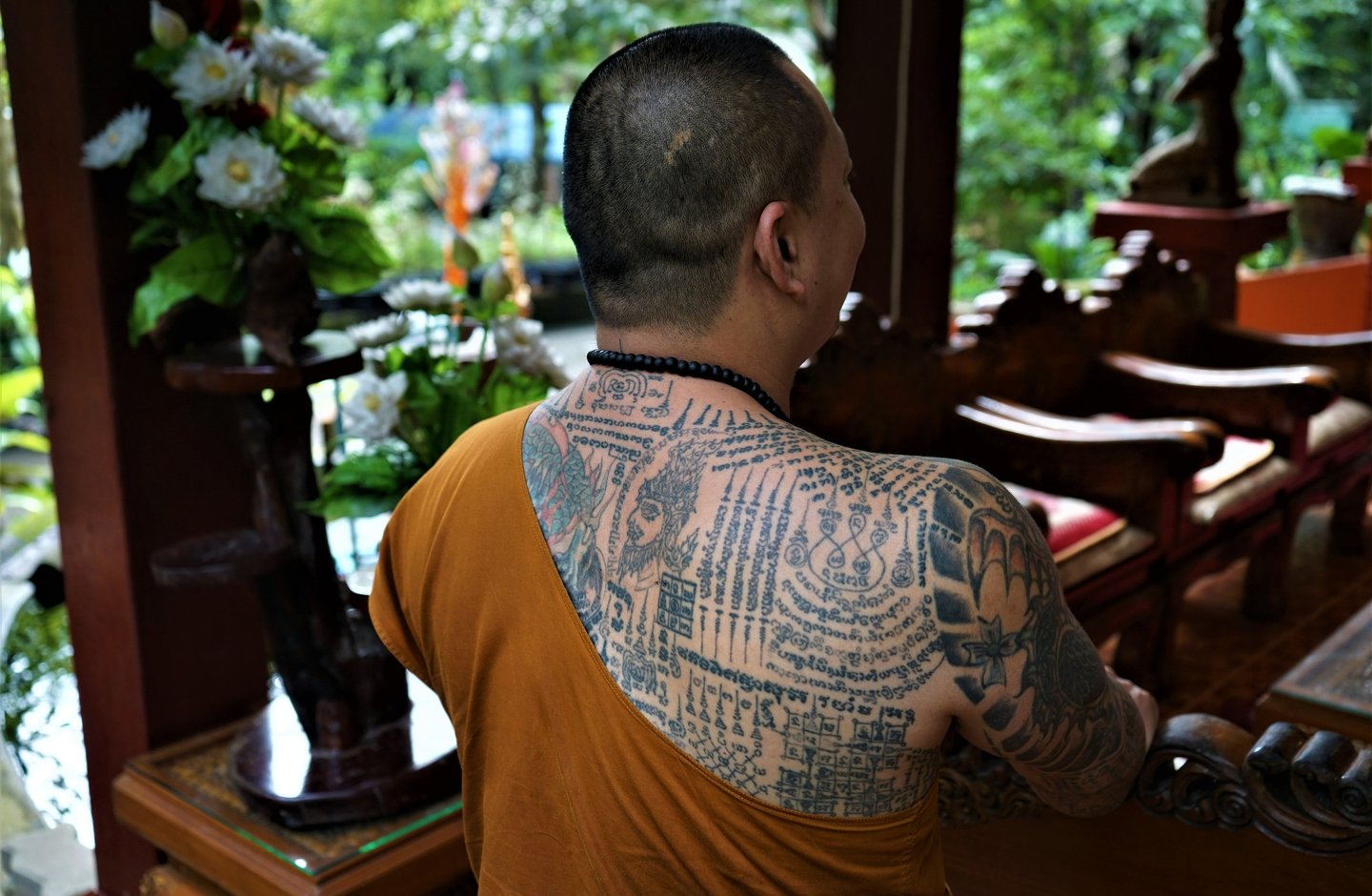

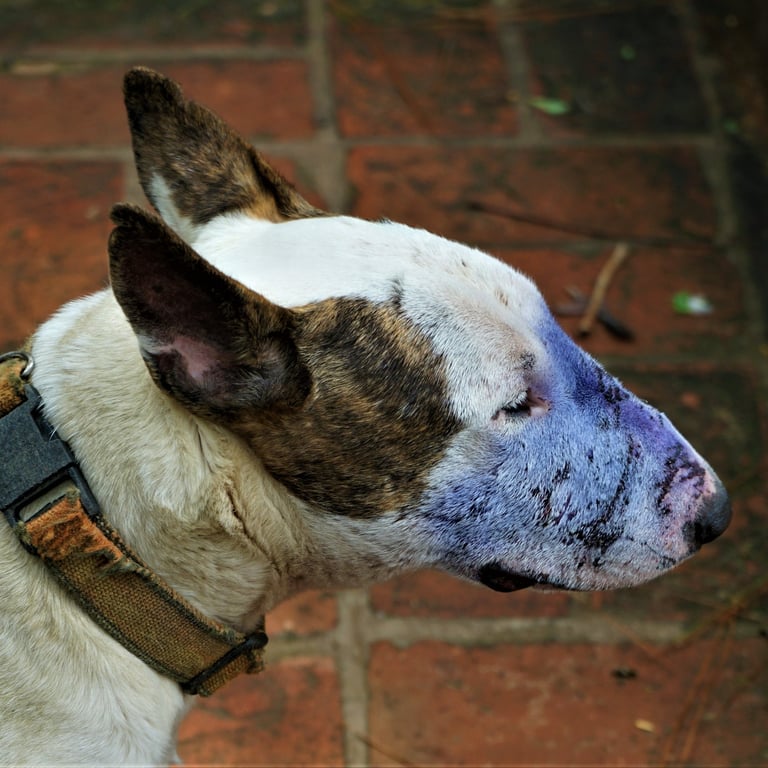
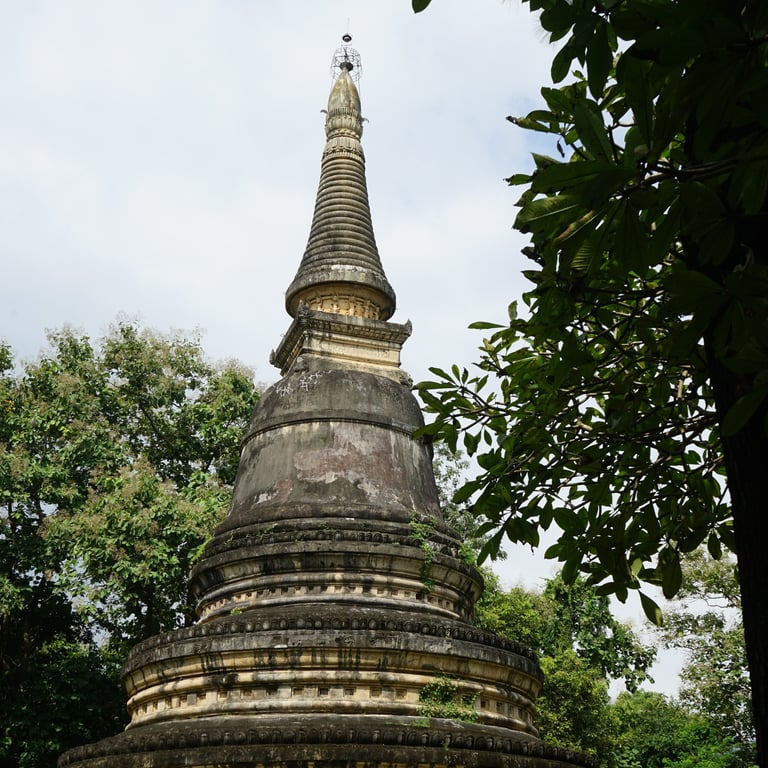
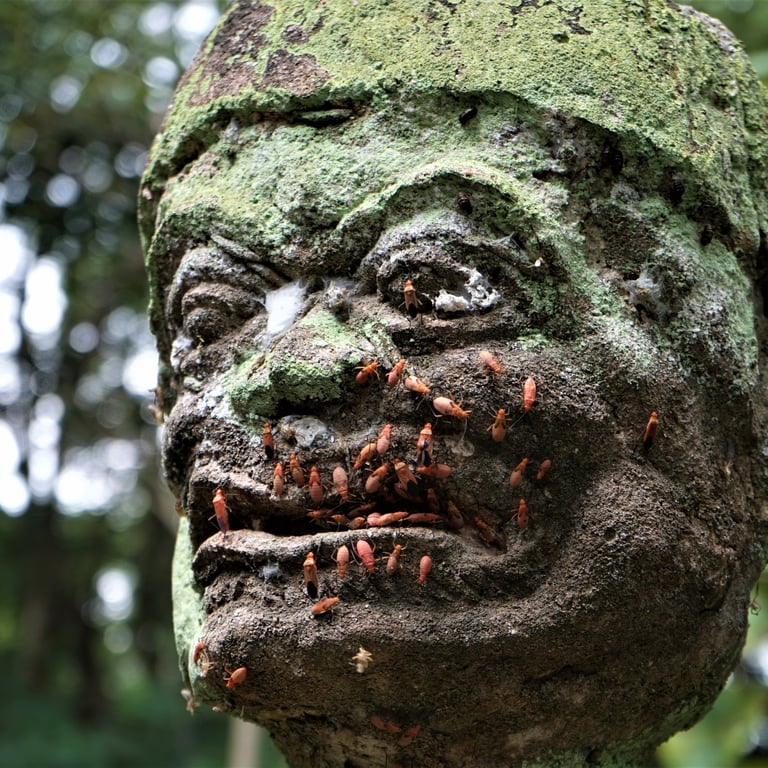
Wat nong wang, khon kaen
Onwards and upwards
The reviews said watch out for the stairs approaching the 9th level as it is a bit scary up there. Alas, floors 5-9 were closed for renovation, as can be seen from the outside scaffolding. Wat Nong Wang is one of those standout wats even so, and sure to make your top twenty list. The nine storey stupa was inaugurated in 1996 to coincide with the King’s 50th anniversary since acceding to the throne. Inside the main hall queues formed for a group blessing on this Saturday morning as the monk intoned into the mic while folks knelt on the carpet and waited to present their pre-packaged offering purchased at the entrance. Every so often the offerings were taken away in a trolley ready to be offered again.
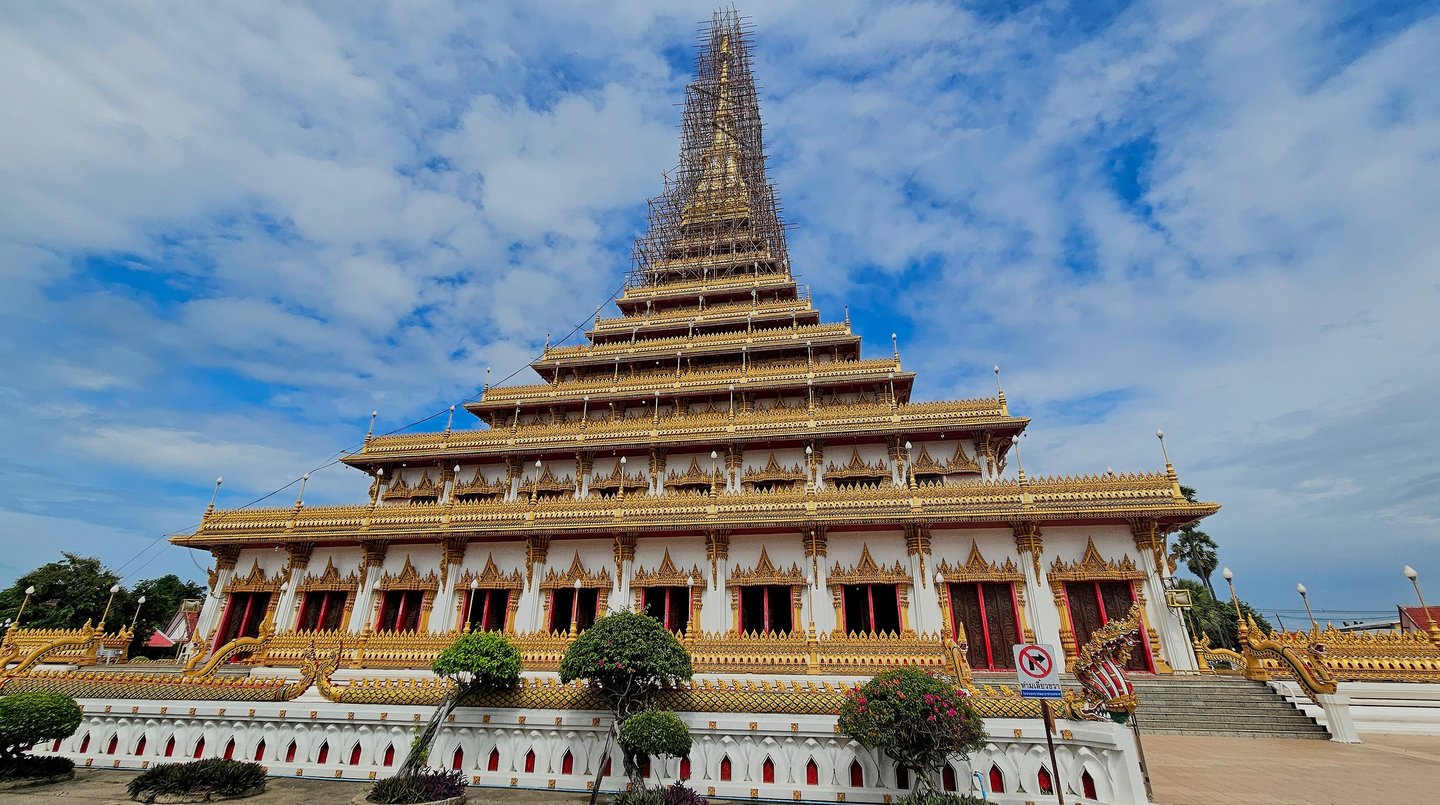

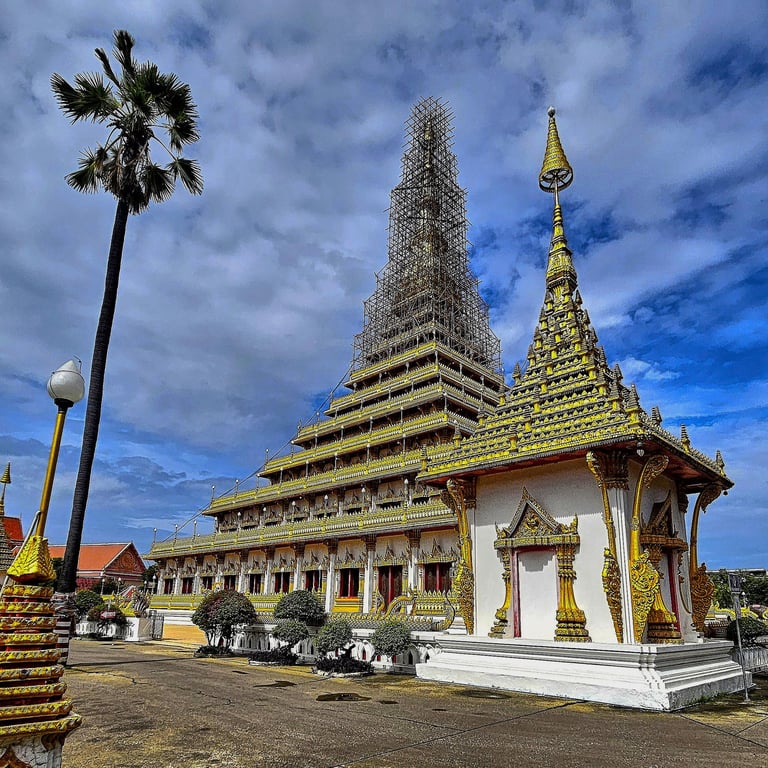
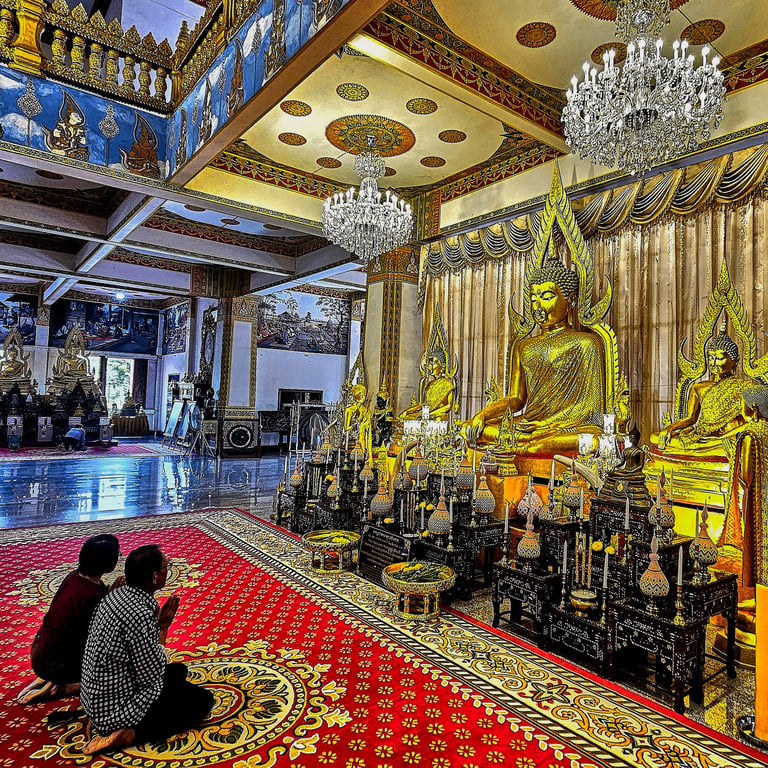
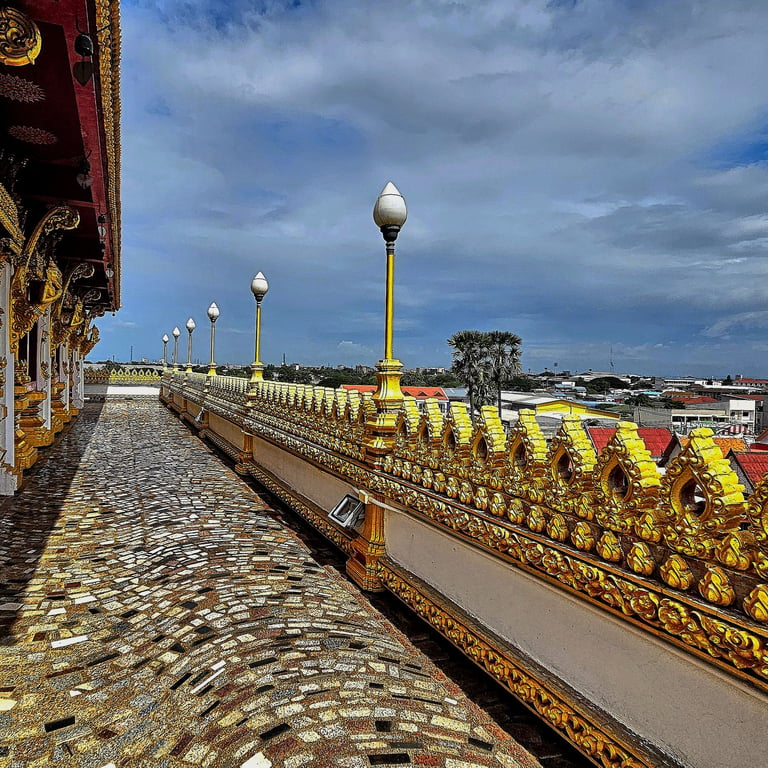
Wat huay pla kang, chiang rai
Kuan Im, Goddess of Mercy
Driving north out of Chiang Rai you soon pick up on Wat Huay Pla Kang. The statue of Kuan Im, the Goddess of Mercy, is visible from a long way off. Once you get there it is obvious that it will take a while to get round as there are teams of car cleaners in the carpark – they know you won’t be back for a good forty minutes. Even with a golf-cart ride to the base and a lift to the seventh floor of the statue, it is an hour plus before you return to your gleaming car.
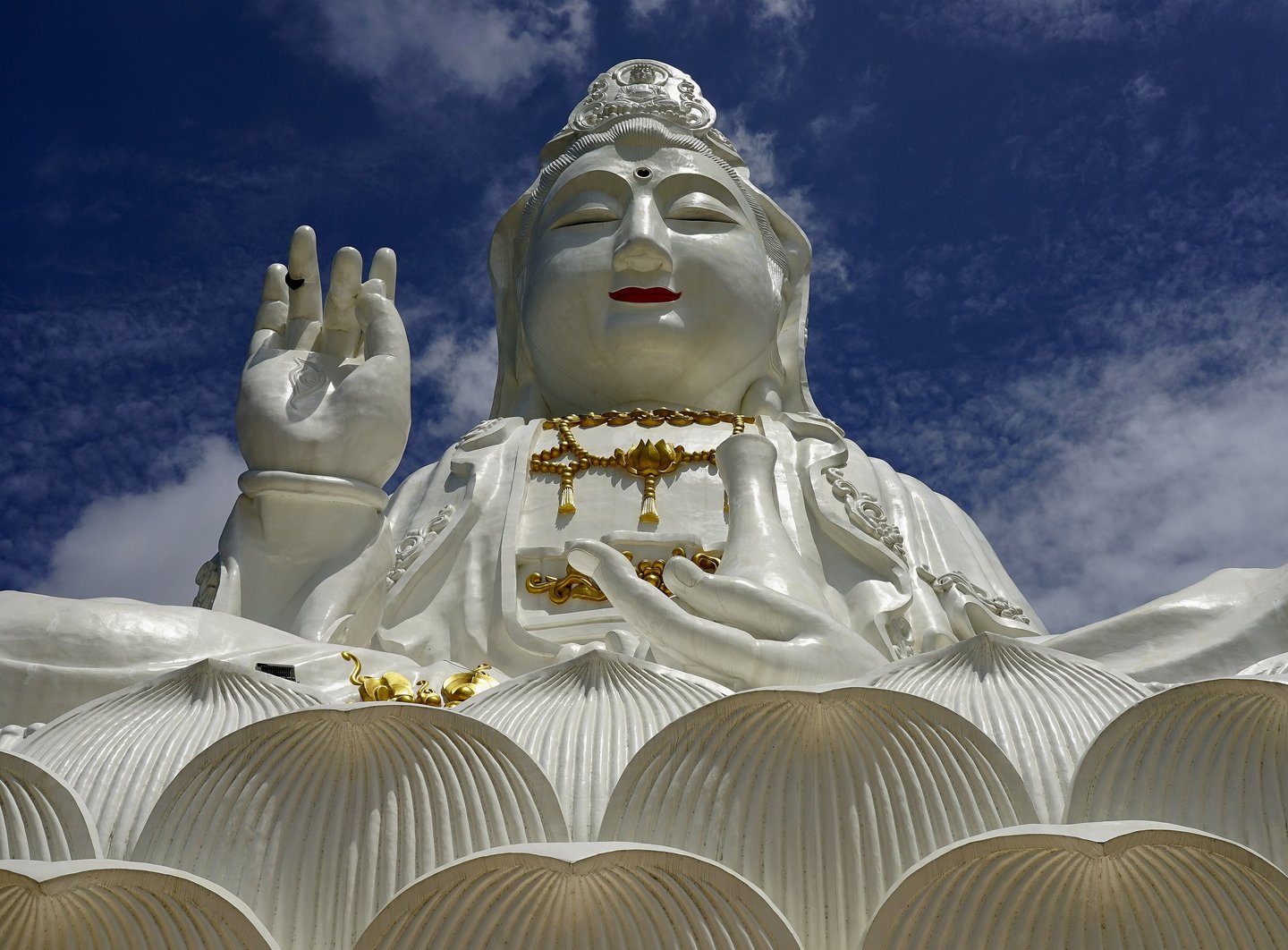

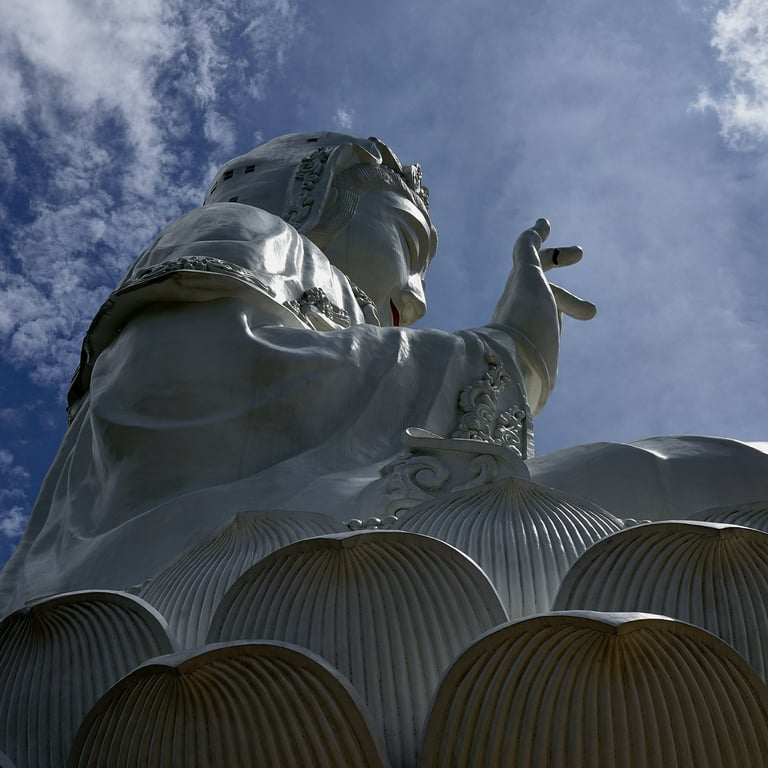
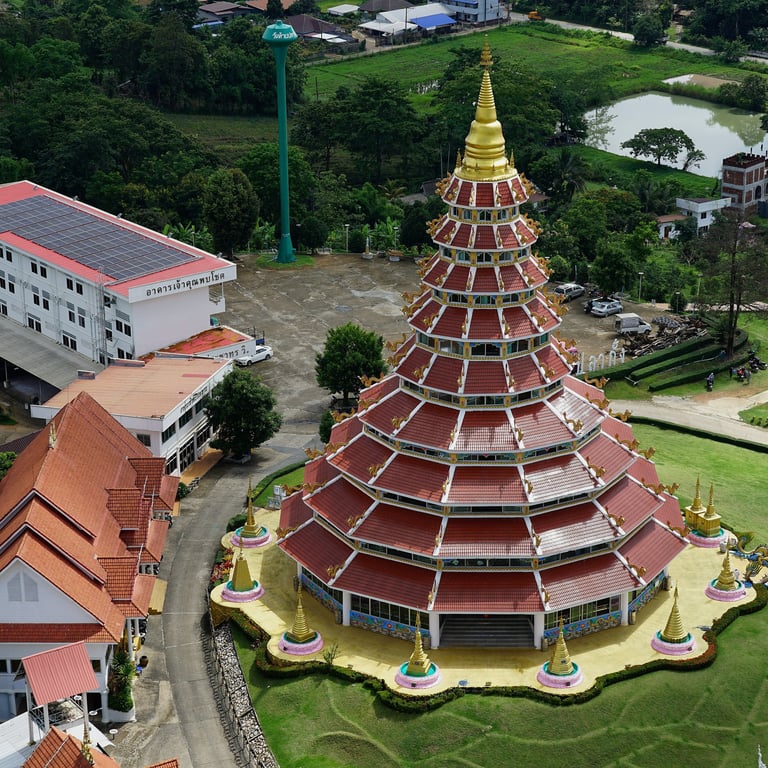
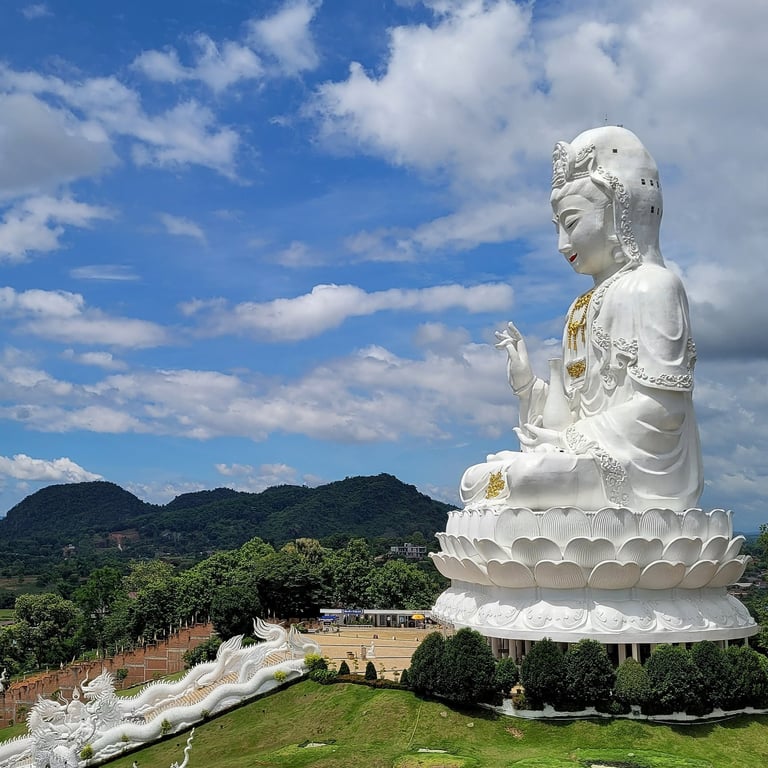
Wat Pa Lelai, Suphanburi
Epic tale
This wat on the outskirts of Suphanburi uses paintings to tell the story of Khun Chang and Khun Phaen. The epic poem in Thai literature, dating from the 15th century, is taken from a folklore tale: it is a love triangle set in a time of war. Khun Phaen (dashing but poor) and Khun Chang (rich but ugly), both vie for the affections of Khun Wanthong. The fast-moving story contains heroism, romance, sex, violence, and comedy. It is universally known in Thailand, with school children leaning key passages. The paintings are an excellent way of telling the long and compelling story - each plaque has an English translation as well. Look out for the 'popcorn' ubosot while you are there.
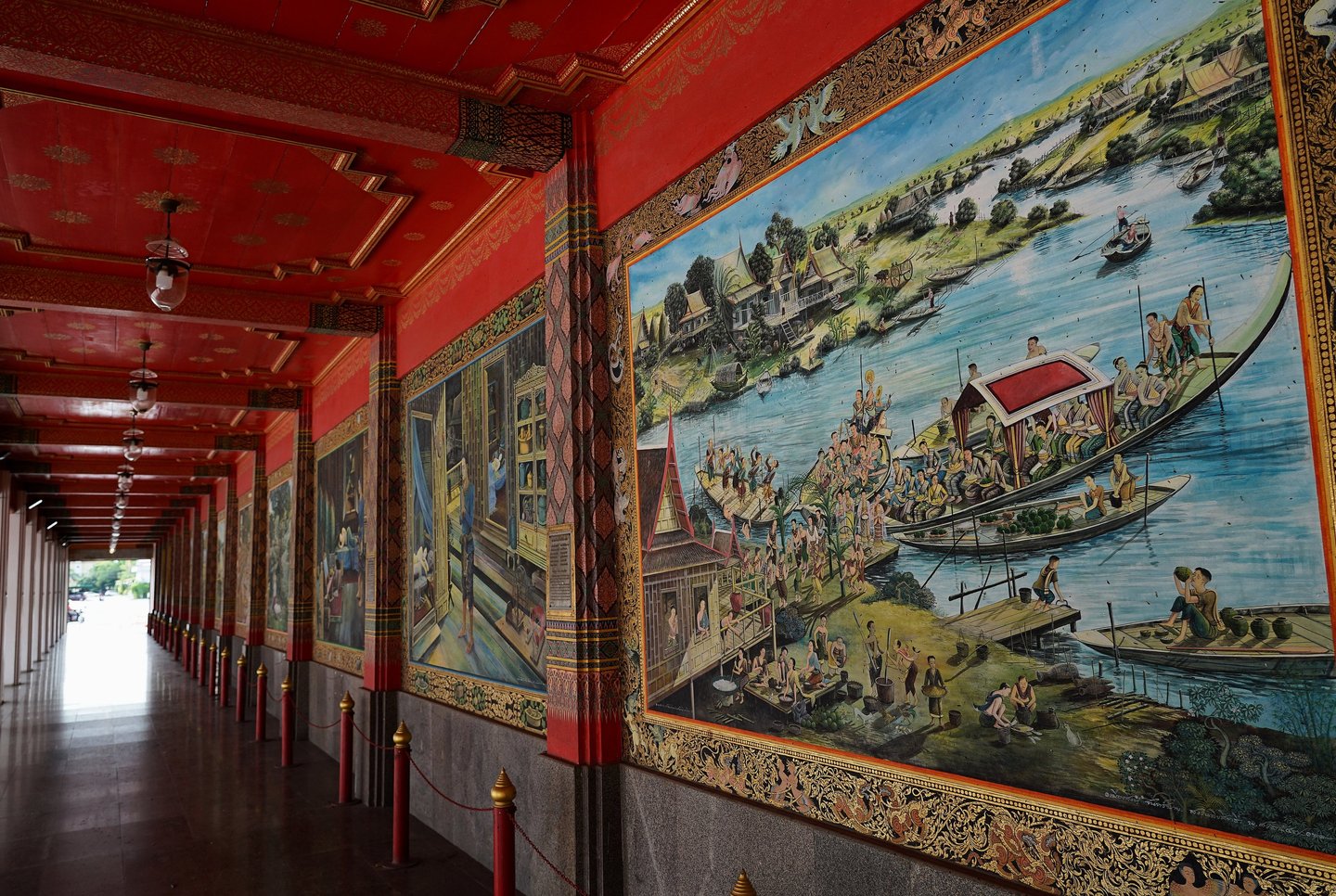

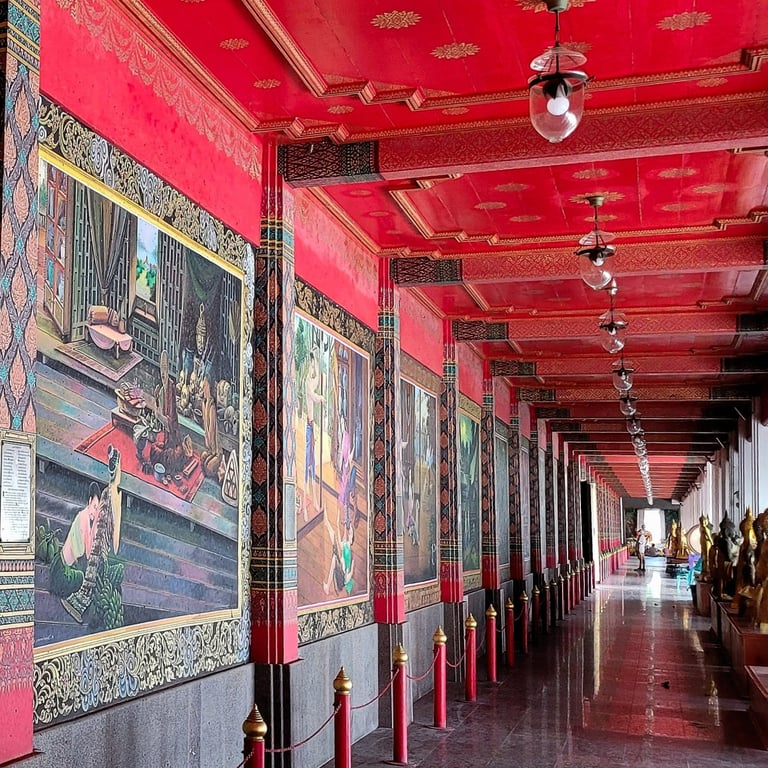
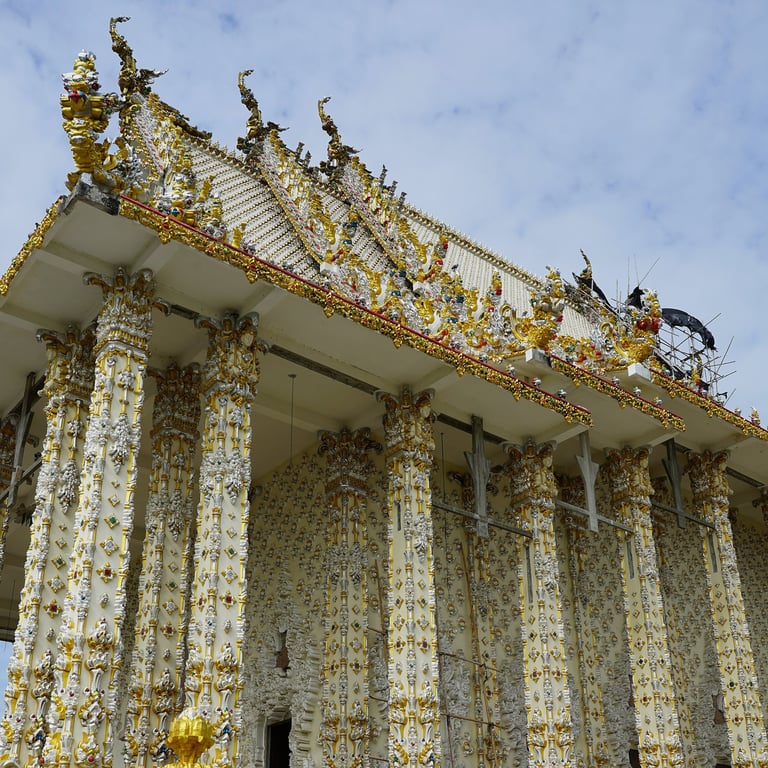
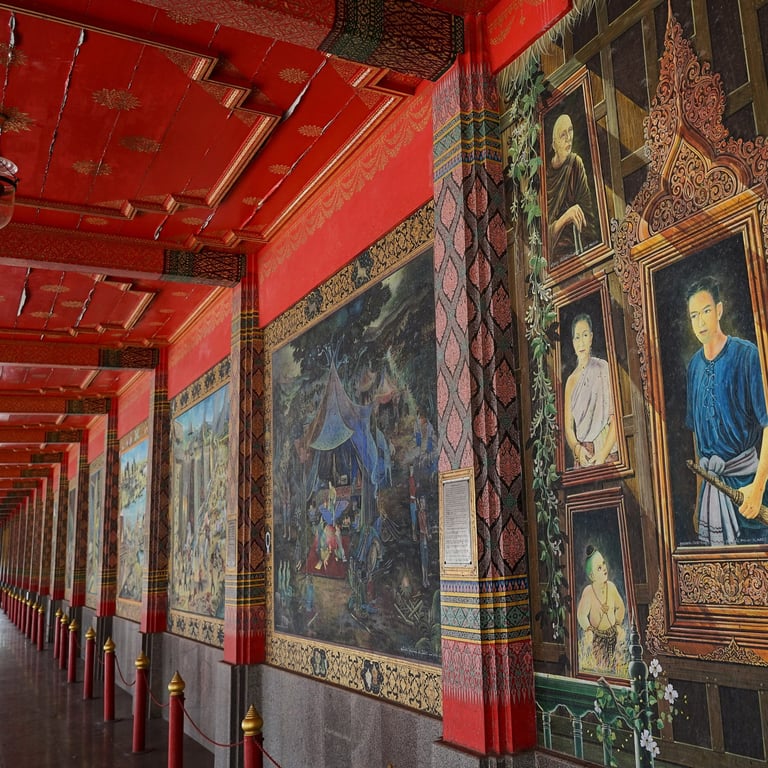
Wat traimit, bangkok
Hidden gold!
Wat Traimit Withayaram Worawihan is also referred to as the ‘Temple of the Golden Buddha’. The solid gold Buddha image known as Phra Phuttha Maha Suwan Patimakon is believed to be 7-800 years old and is the largest gold Buddha in the world. Its style suggests that it was cast in the Sukhothai period between 1238 and 1438. Later it was moved to Ayutthaya but then disguised in plaster during the Burmese sacking of the city. It was moved to Bangkok in the 1930s but the gold beneath the plaster was only discovered in 1955, thus revealing the statue’s true identity.
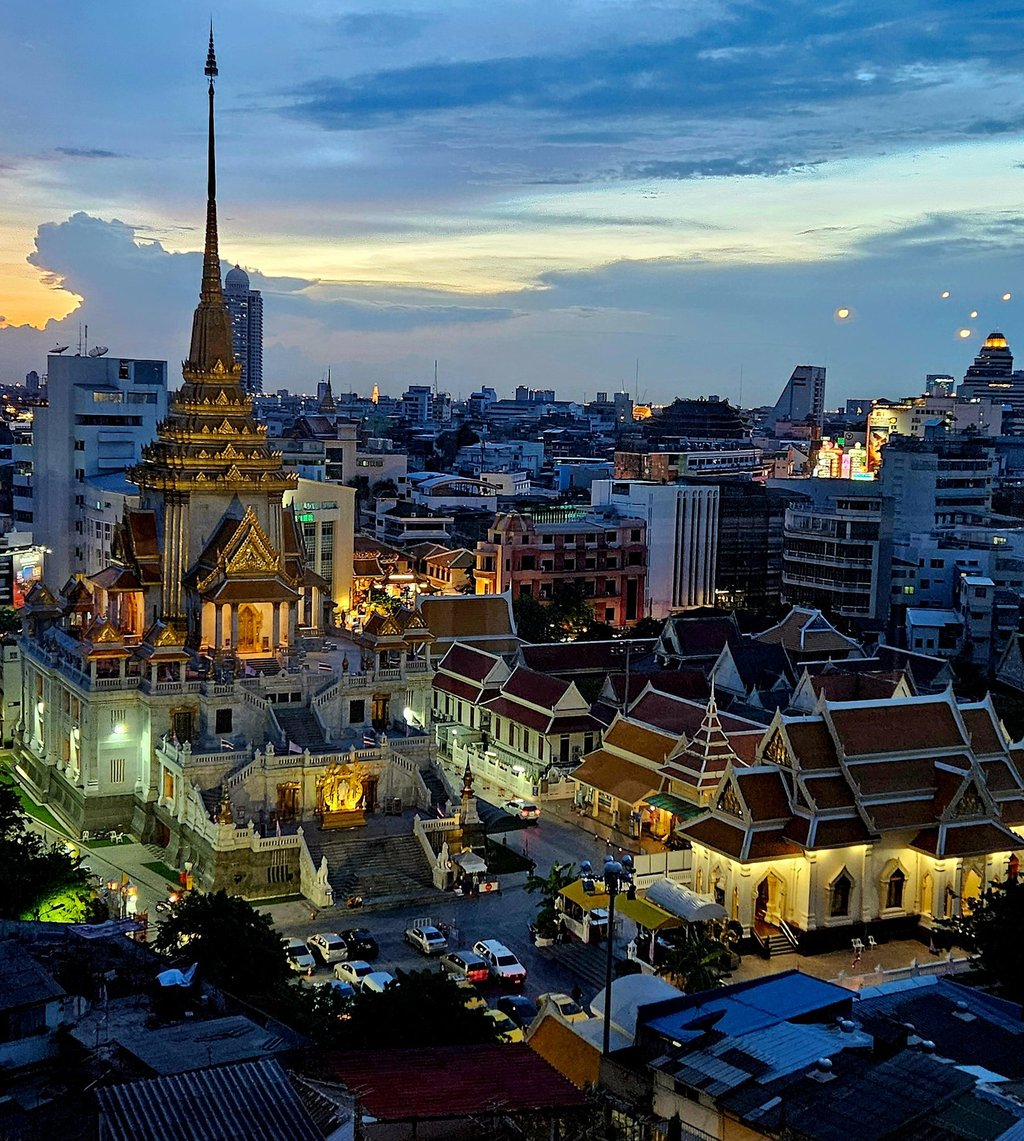

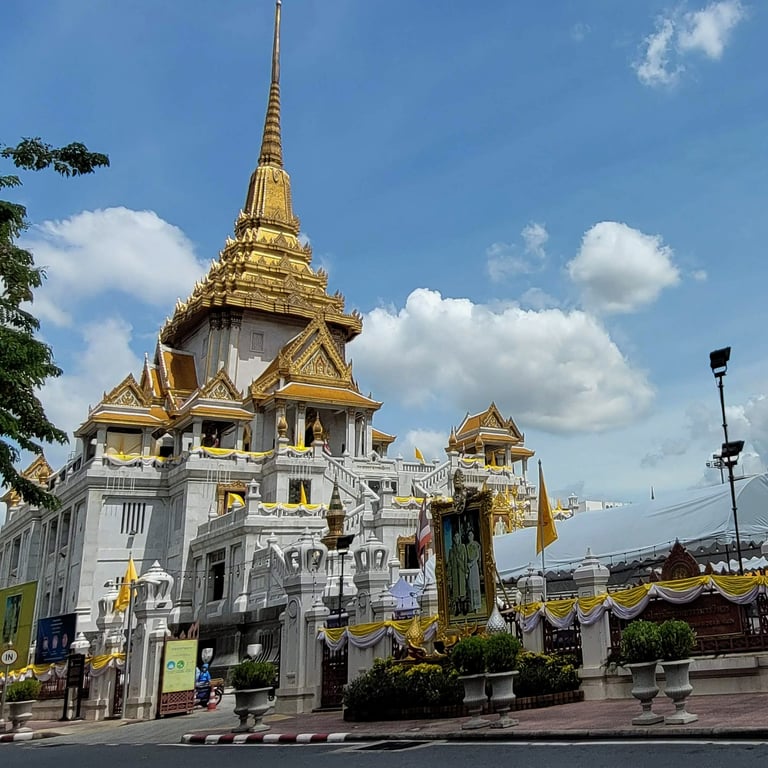
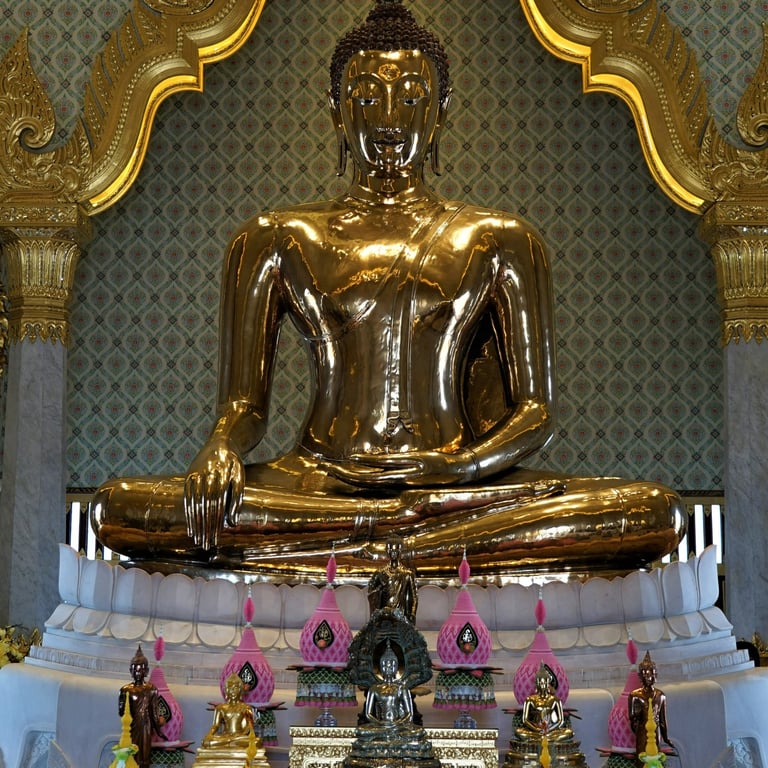
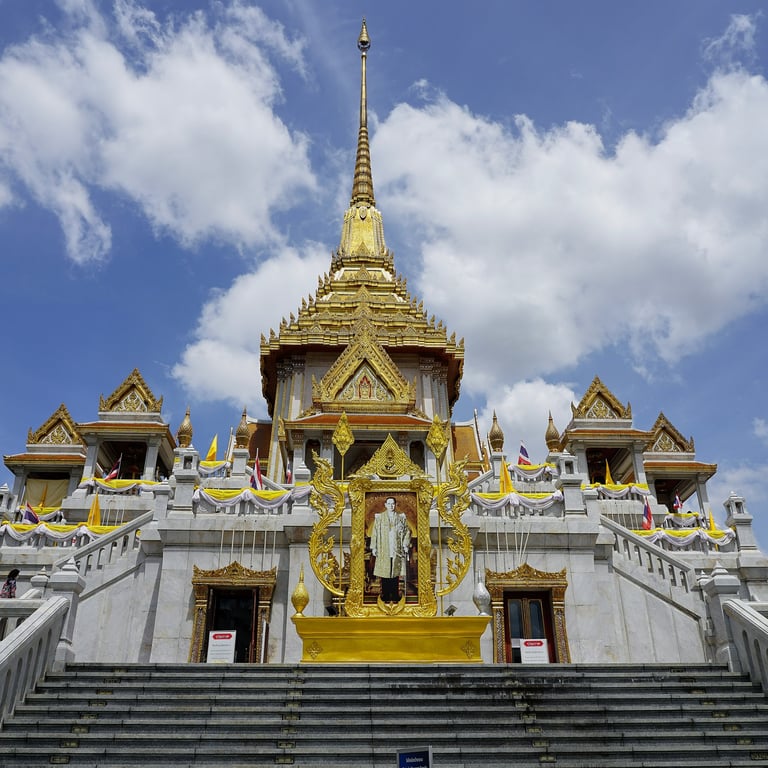
Wat ban den, chiang mai
Splendid indeed
Wat Ban Den is 60 kms north of Chiang Mai and not very findable without google maps. It means ‘splendid house’ in Thai. An understatement if ever there was one. There are 12 statues for each of the zodiac signs. It is as if the teams of workers set out to outdo each other with paint and glitter. Each statue depicts some weird mythical beast or other, giving it the feel of an alien zoo (extrapolating there). The huge reclining Buddha is the centre-piece though and looks like it is covered in real gold with a texture that adds to the realism. Impossible to fit in the viewfinder, a close-up is the best option.
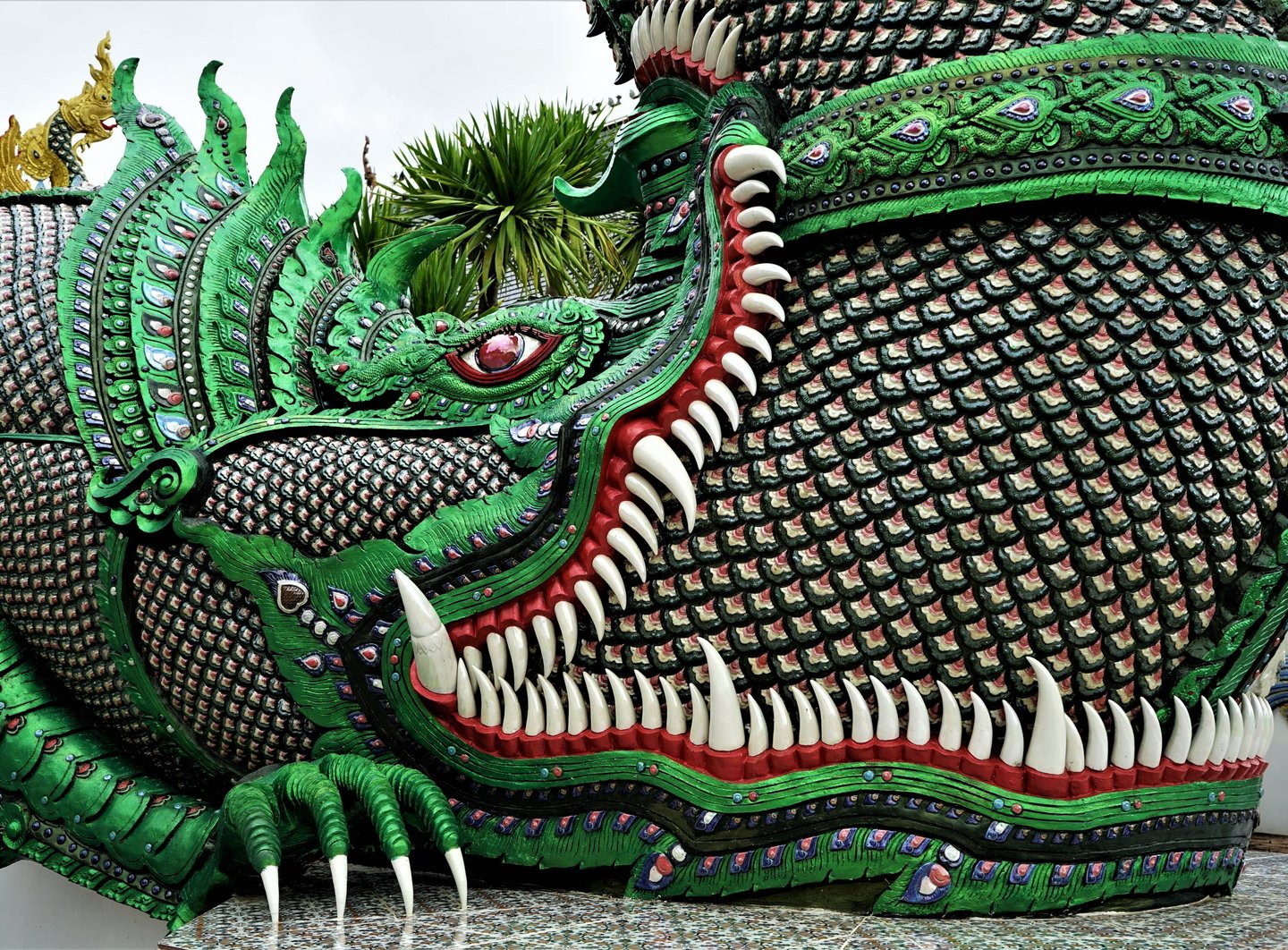

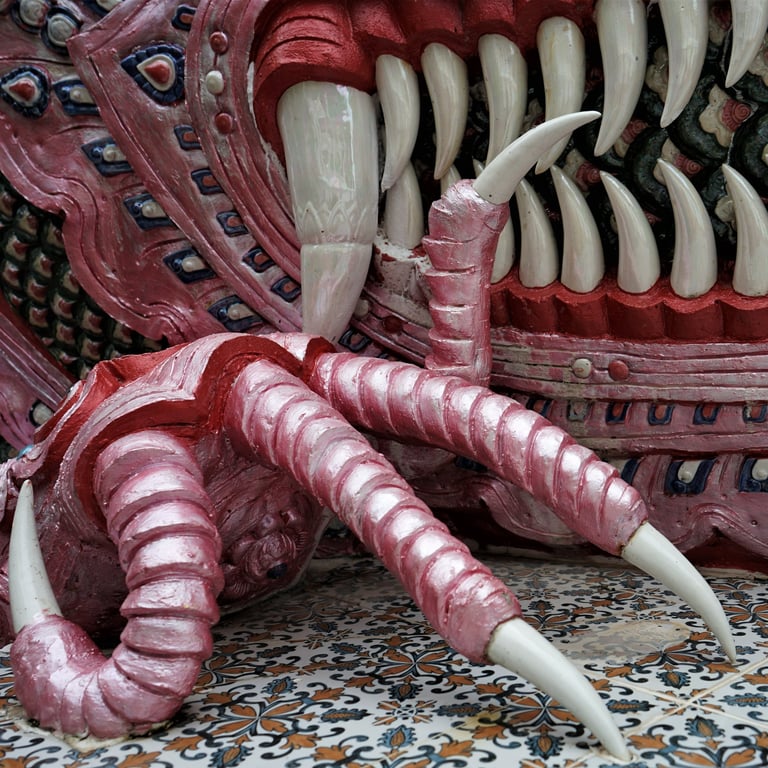
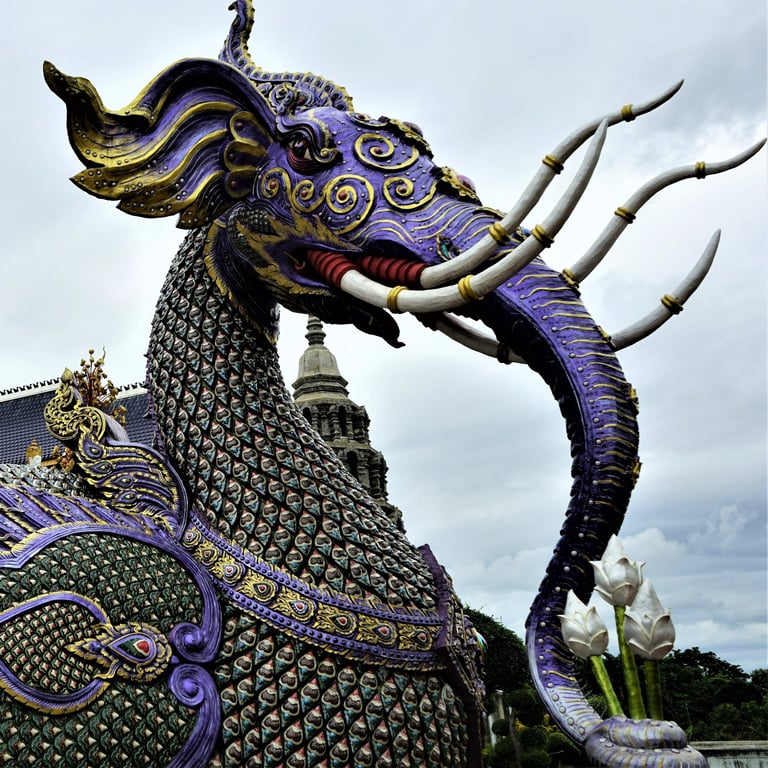
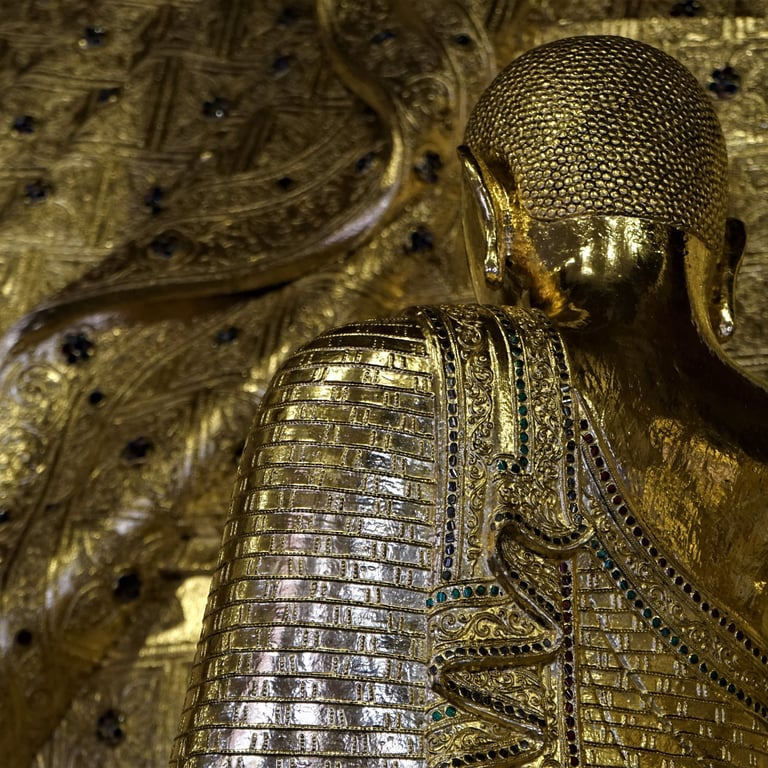
Senior Dance troupes
Golden years
Several times I have been at a wat, when suddenly music blares out from speakers and a senior ladies’ dance team takes to an impromptu stage – often just a clearing in the crowd. Without exception, they are graceful and elegant as they go through a faultless routine. What a great way to spend your evenings in your golden years, rehearsing at the village hall ready for an upcoming performance or festival. They also get to dress in some splendid finery when they step out. Pictured here, the ladies at Wat Yai, Phitsanulok.
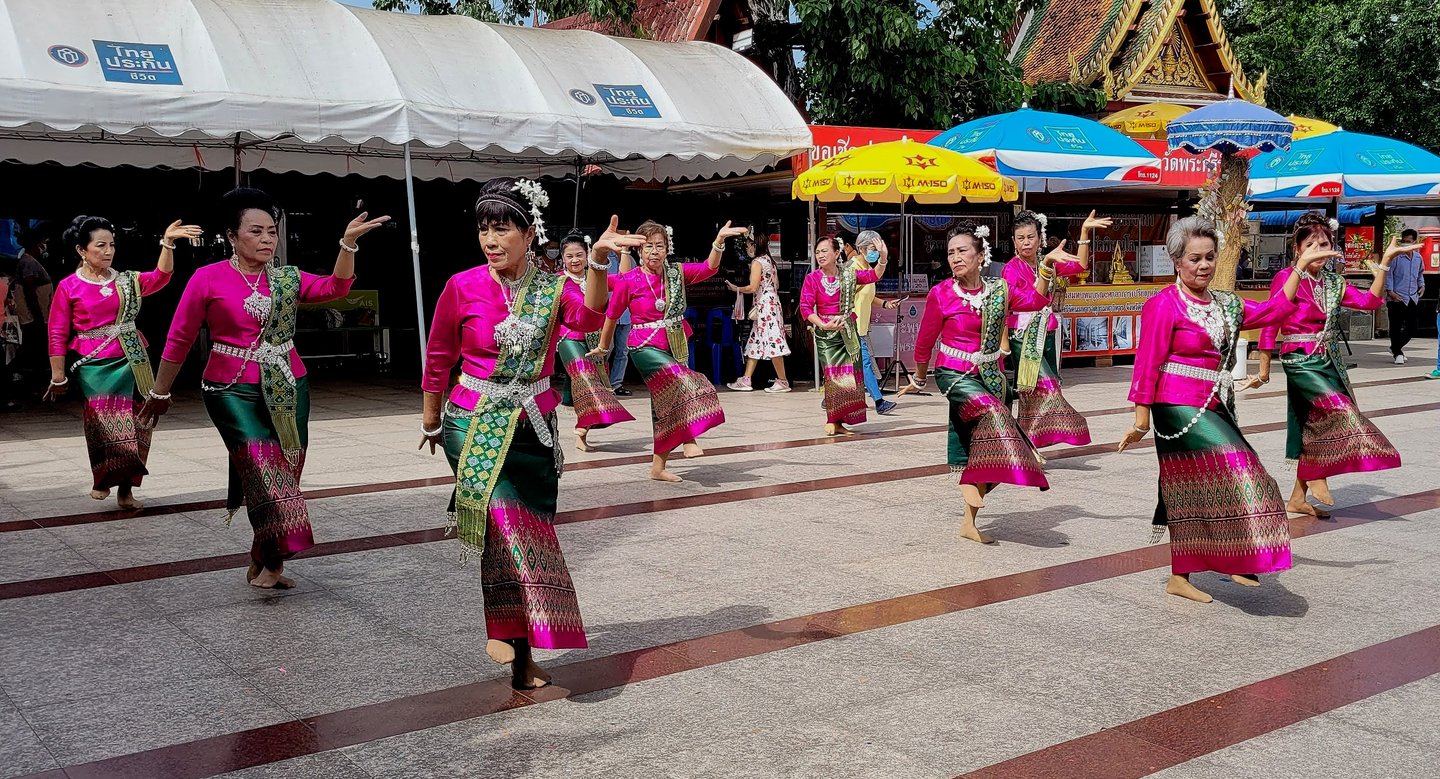

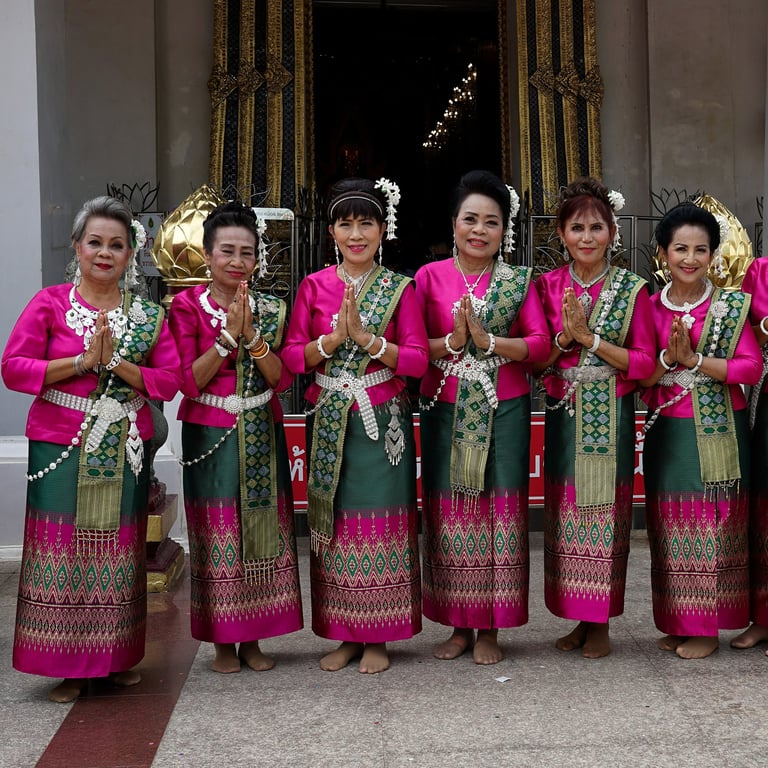
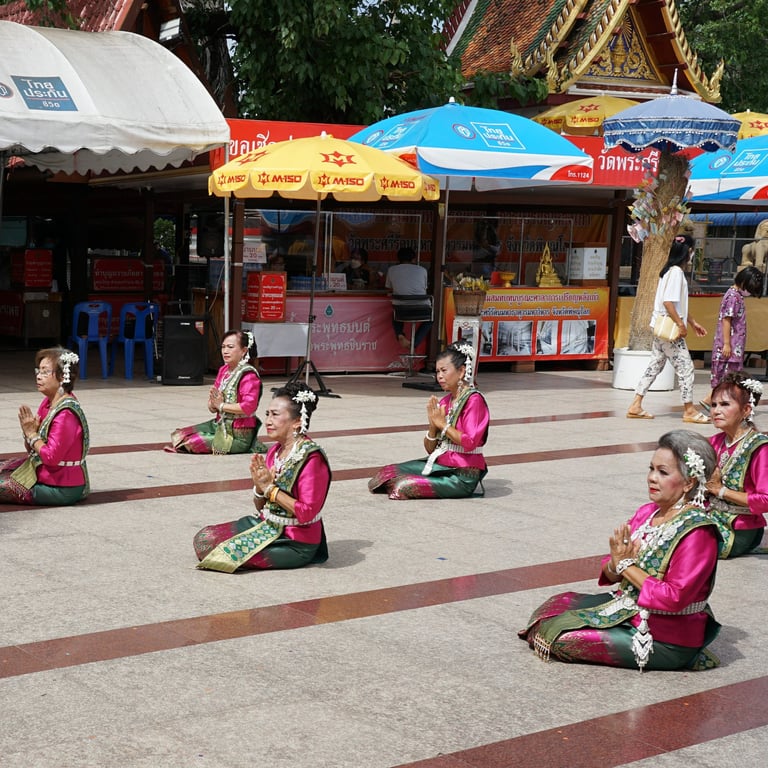
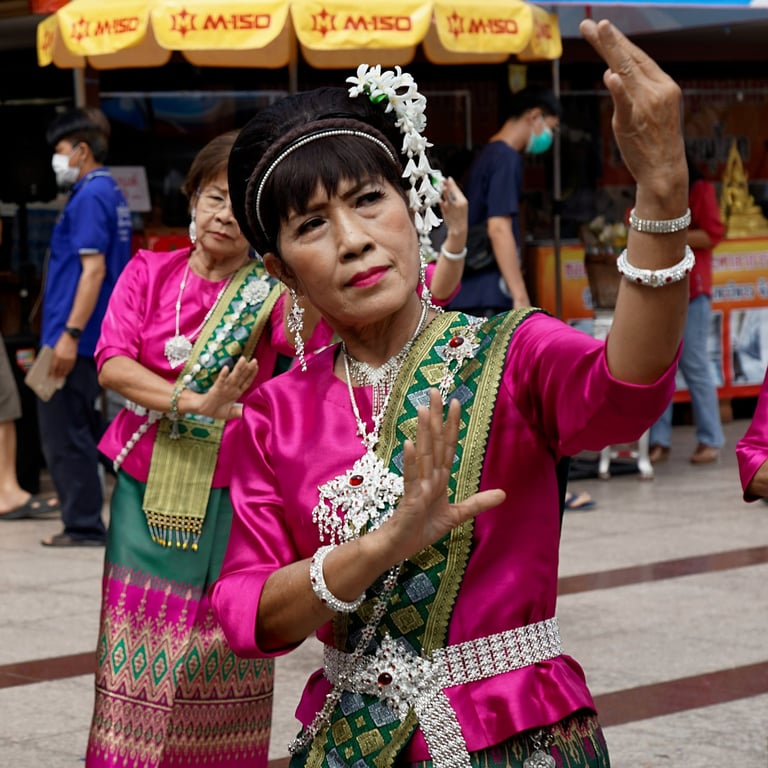
Wat suphan, chiang mai
The Silver Temple
The Silver Temple is hidden down a small soi on Wualai St (the market-walking-street, active on a Saturday night). Once illuminated with strategically placed lights, thoughts of silver disappear as the ordination hall exterior radiates its hues in the night. The colours fade in and out leaving the actual silver ubosot looking like a poorer relation of itself in the dark, while it momentarily awaits its magic-coloured cloak. Sitting there for thirty minutes you have ample time to rank the effect of the colours. Violet wins, with blue, red and green trailing behind.
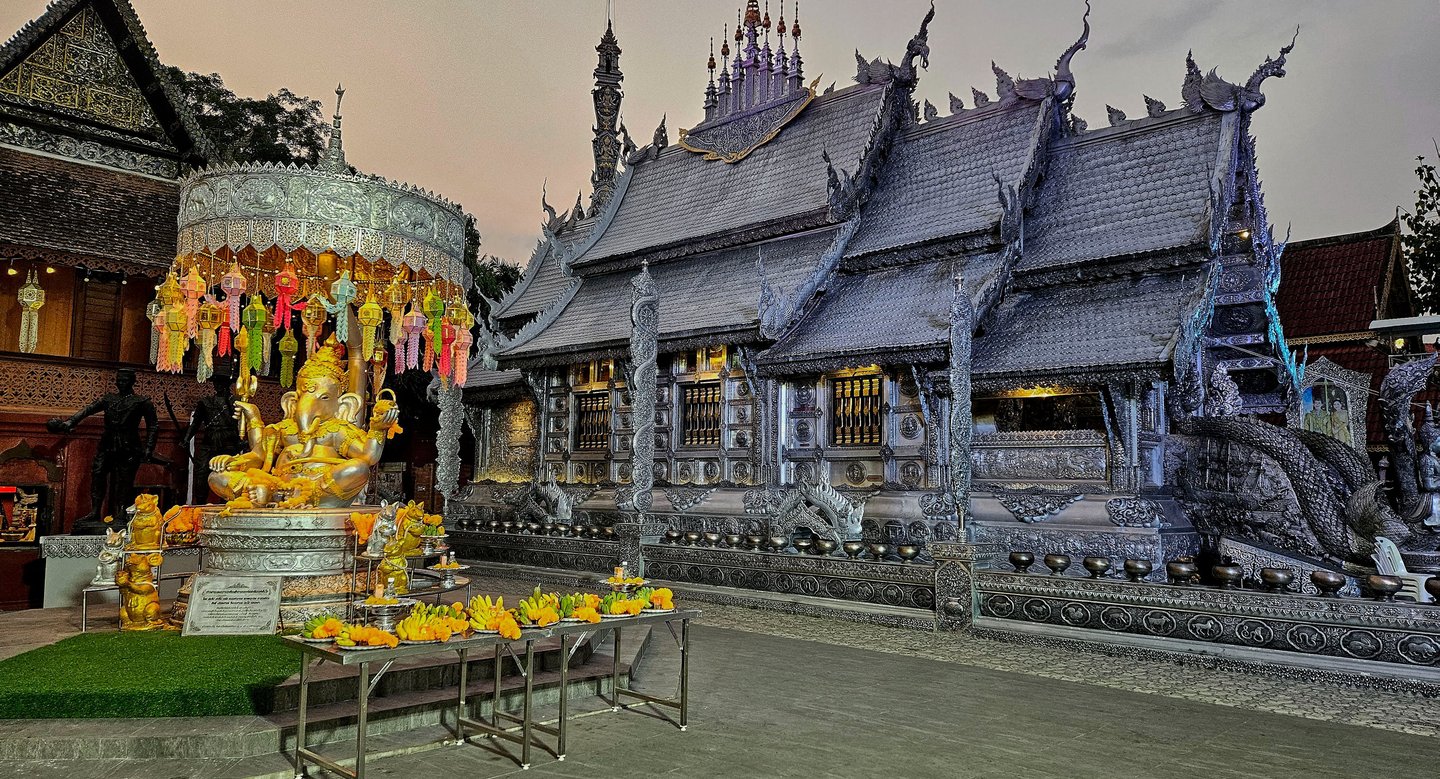

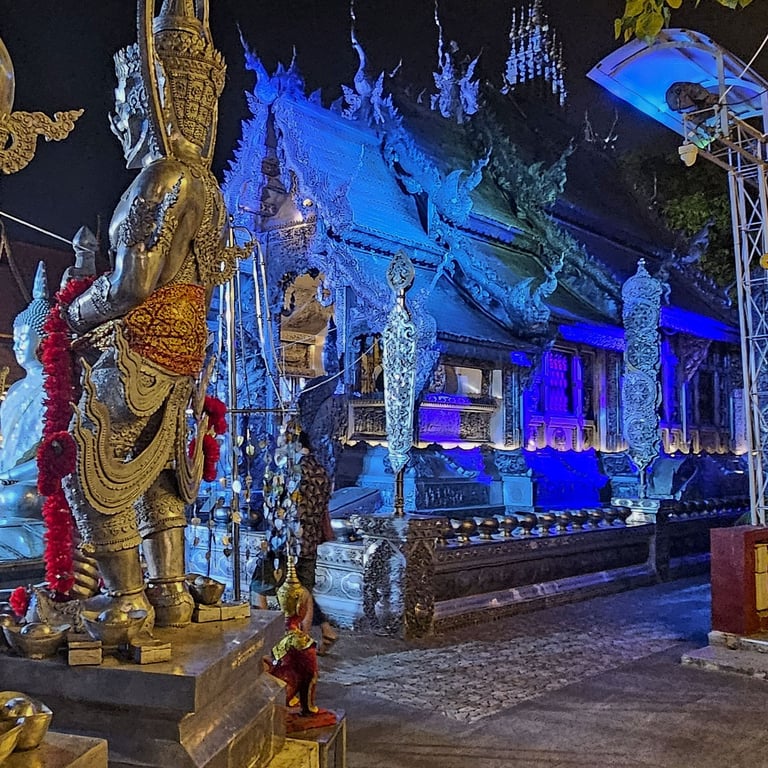
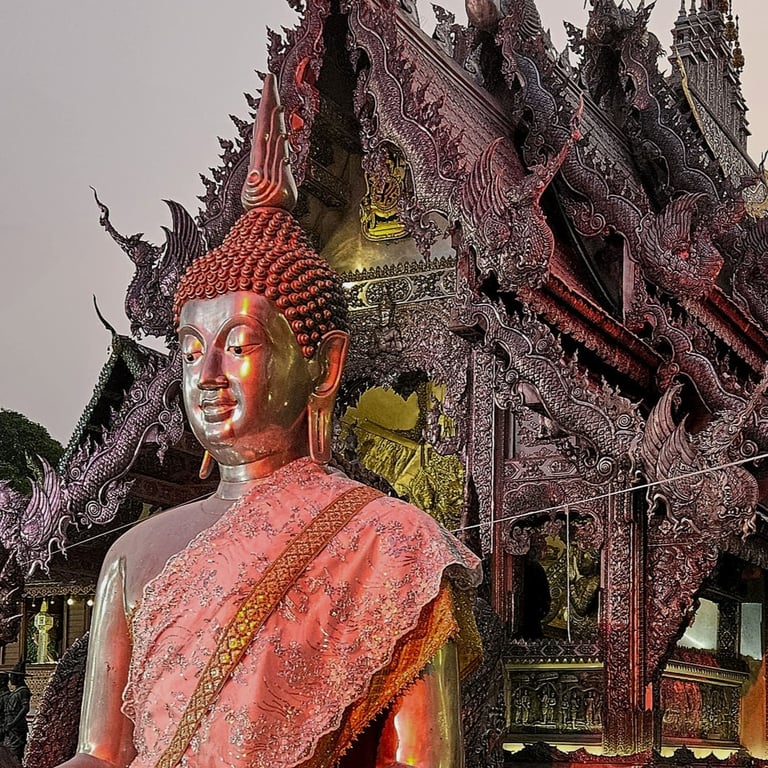
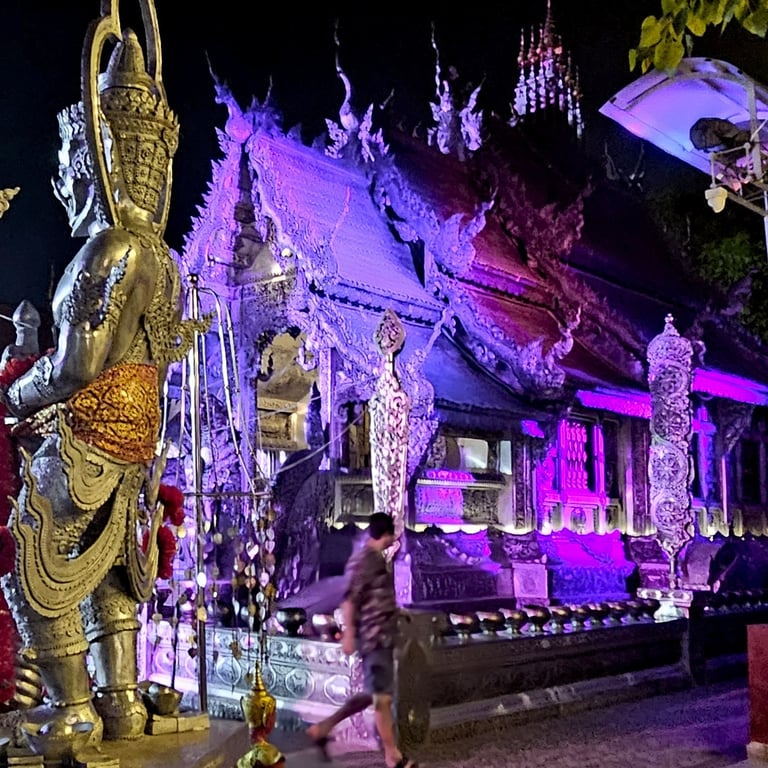
Wat phra that haripunchai, lamphun
Ancient calm
Lamphun is 25 kms south of Chiang Mai, so quite possibly you are on the way to somewhere else. It was the capital of the 11th Century Haripunchai Mon Kingdom. Wat Phra That Haripunchai was founded in 897, but the current compound dates from 1044. The unusual pyramid shaped Chedi Suwanna was built in 1418, and the main stupa restored in 1443, in classic Lanna style. Lamphun is a quiet town on the Ping River, which seemed to be the only thing moving on the day that I was there. Chedi Suwanna was depicted on the back of a one satang coin, in case you were wondering.
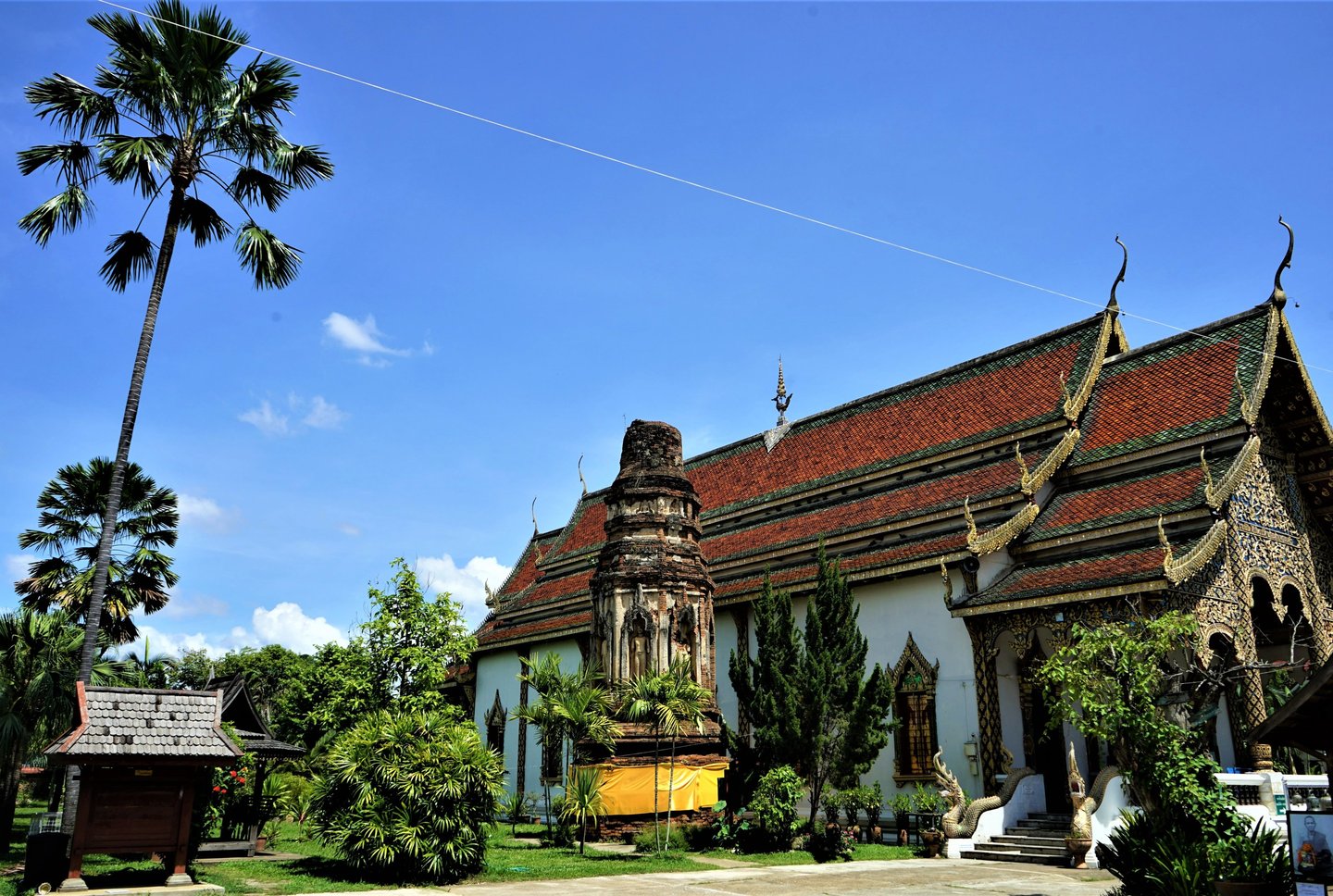

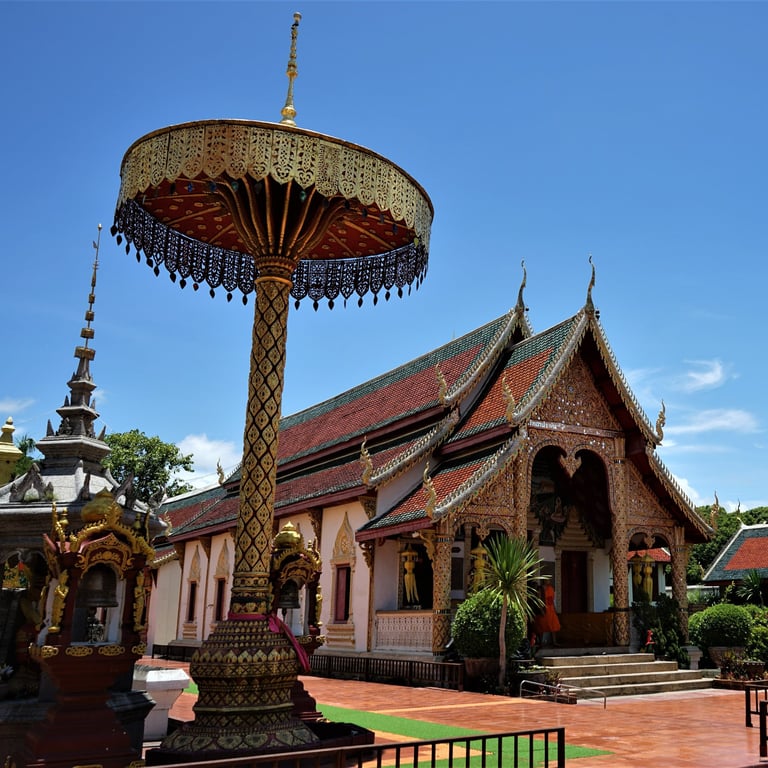
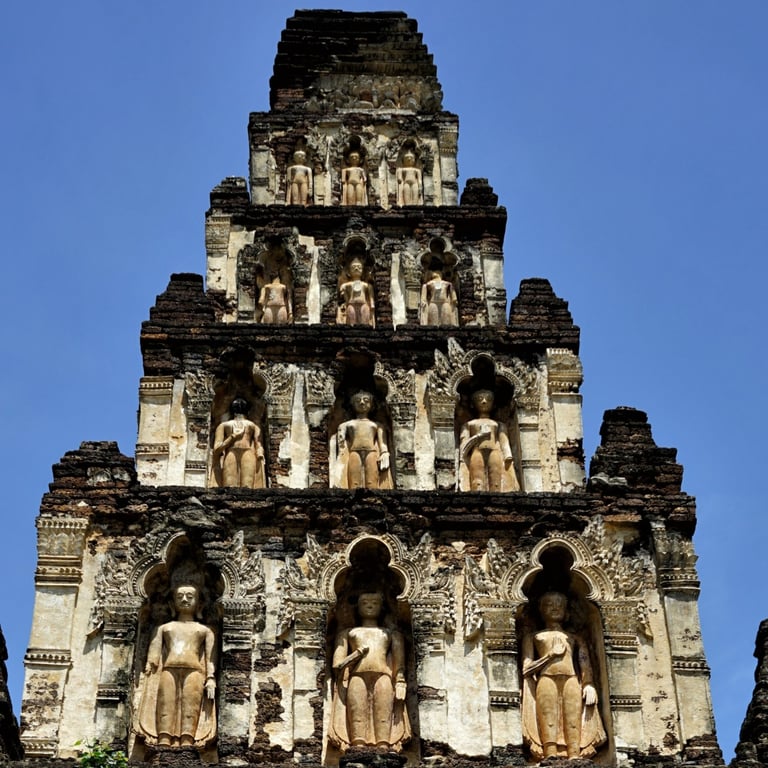
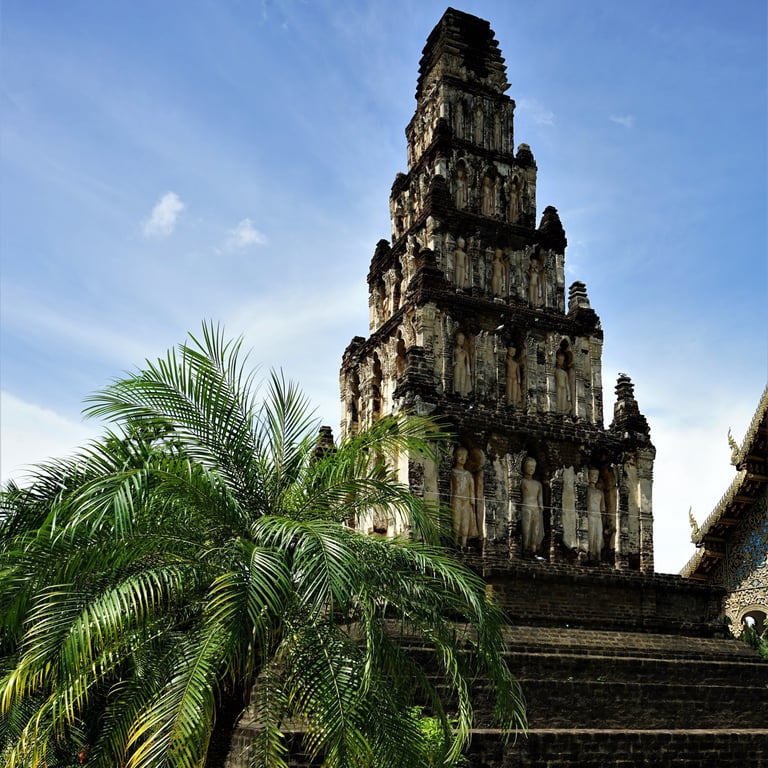
Wat loha Prasat, bangkok
Golden spires
Wat Ratchanatdaram Worawihan, meaning Temple of the Royal Niece, was built by Rama III. The wat is usually called Wat Loha Prasat which means ‘Iron Monastery or Castle’ and refers to the iron spikes in the central and corner spires. In fact, there are 37 golden spires representing the 37 virtues required to reach enlightenment. The tiered design of the wat is based on a Sri Lankan temple which no longer exists. The interior is on three levels; a wooden spiral staircase takes you up to the very top next to the single spire which is the centre-piece. You can step out at each level to take in the surrounding views.
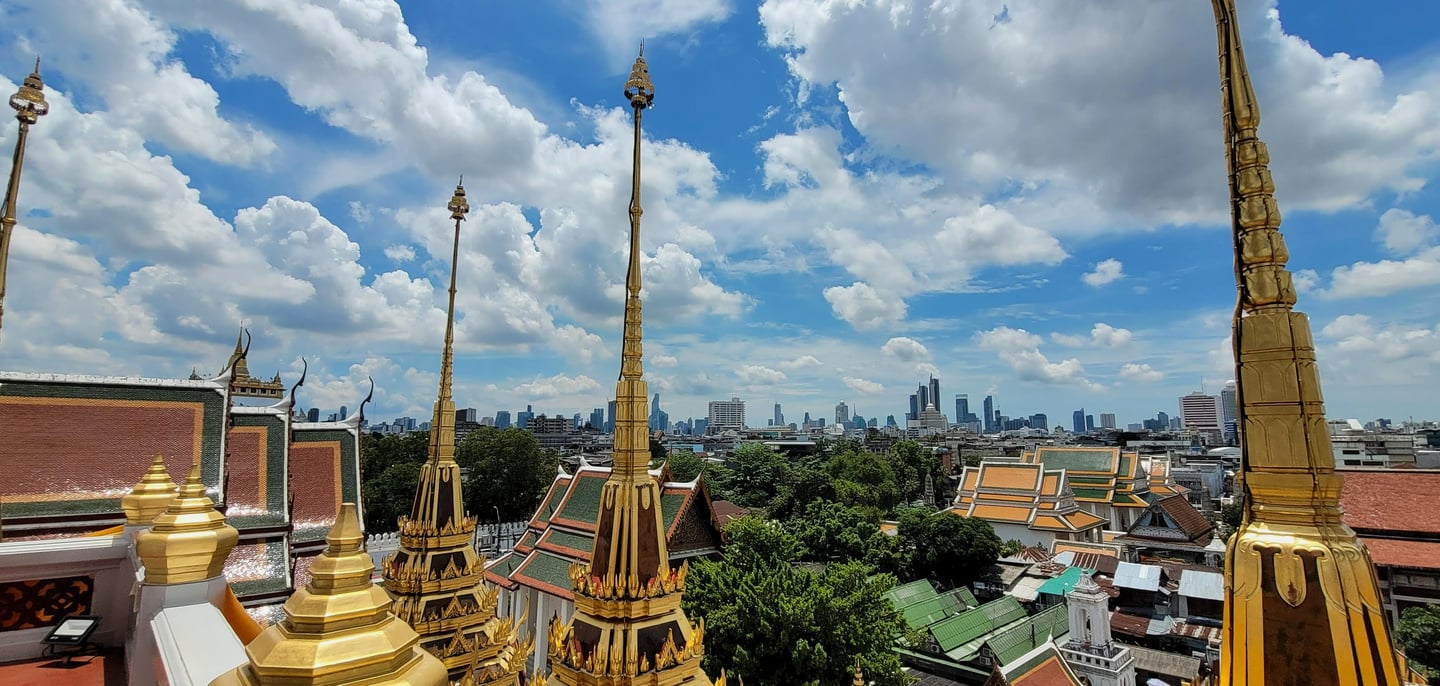

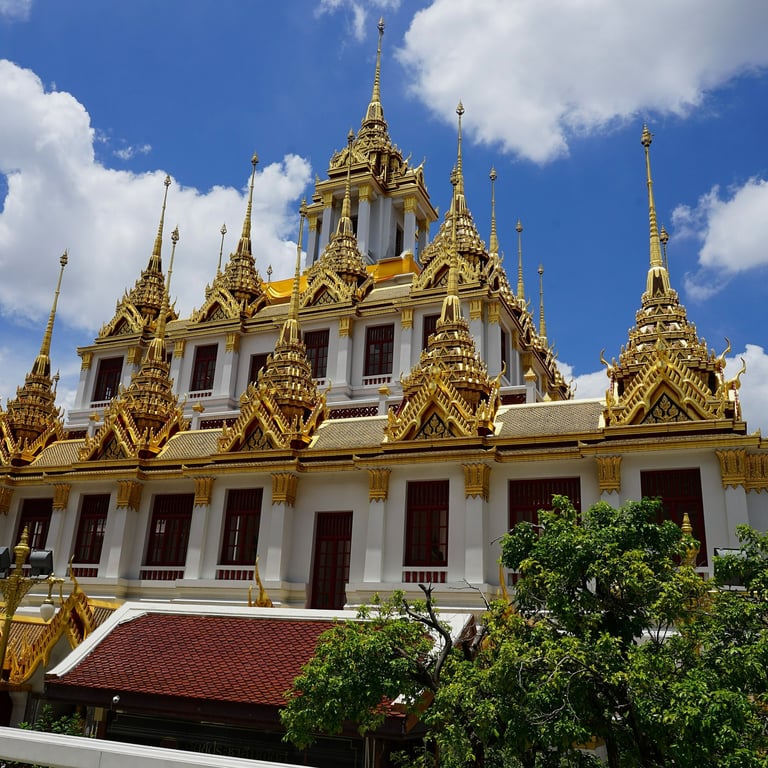
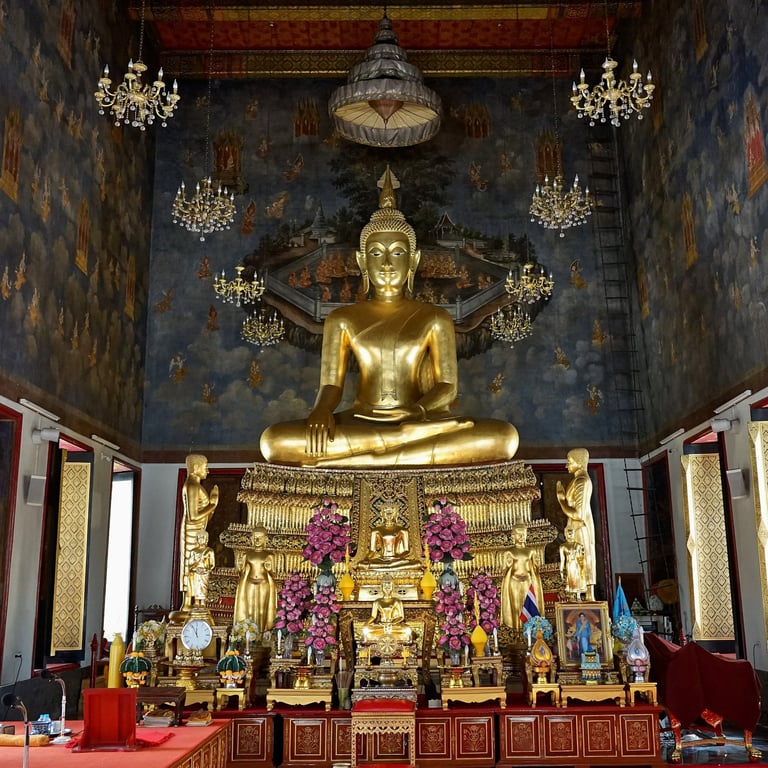
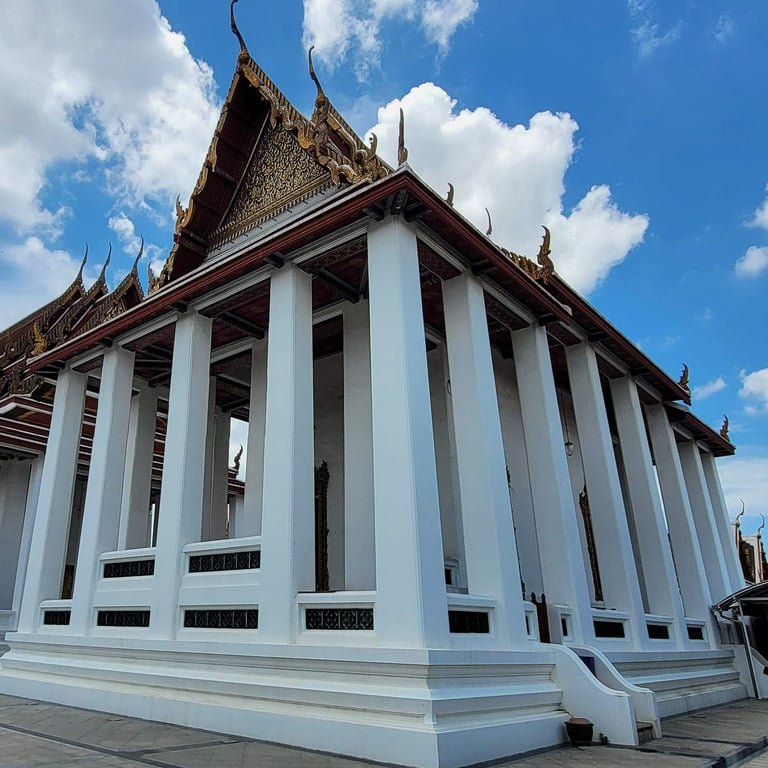
Wat roi phra phutthabat, mukdahan
The naga watches all...
Wat Roi Phra Phutthabat Phu Manorom is on top of a hill which looks down on Mukdahan and the Mekong River. The view also takes in Savannakhet in Laos. You park at the bottom of the hill and get a baht bus to the top. The wat itself has two main features: the huge white Buddha, which can be seen for miles around, and the striking Naga statue to one side. The Naga is 120 metres long and resplendent in the sunshine with its bluey-green sheen. The interior of the statue is a work in progress and looks like it will have decorated galleries at different levels eventually. From its base to its top, the Buddha is 84 metres tall, constructed in honour of Rama IX’s 84th birthday. For scale, you can see people in the photo bottom left, touching the fore-finger for luck. There didn't seem to be much to Mukdahan to be honest, but this side-trip was definitely worth it.
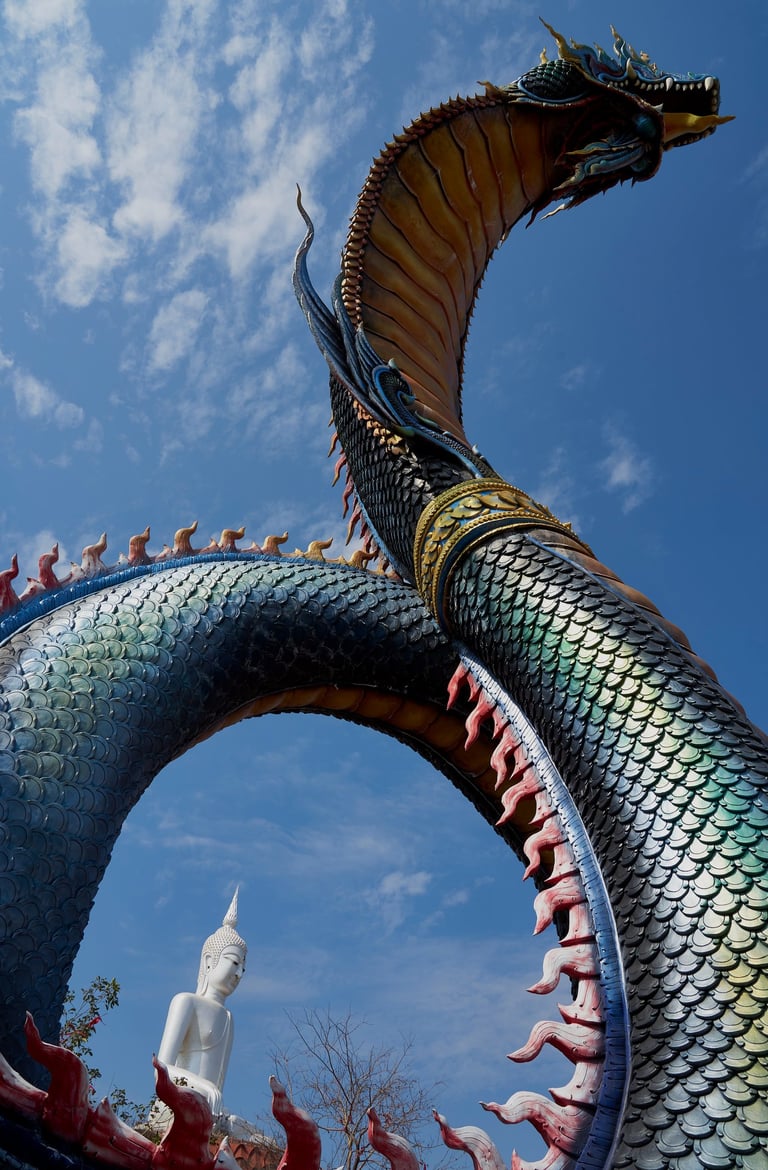

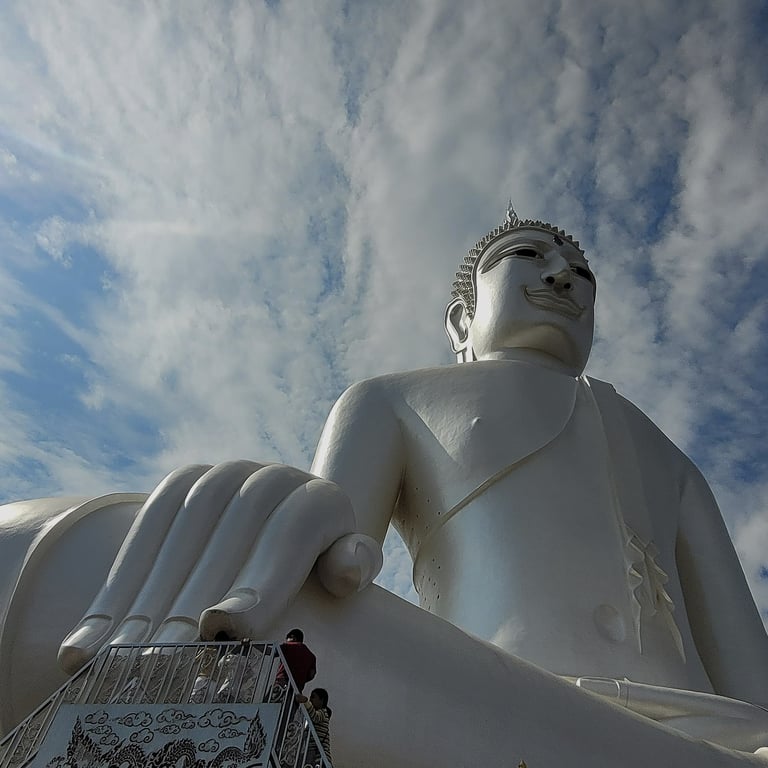
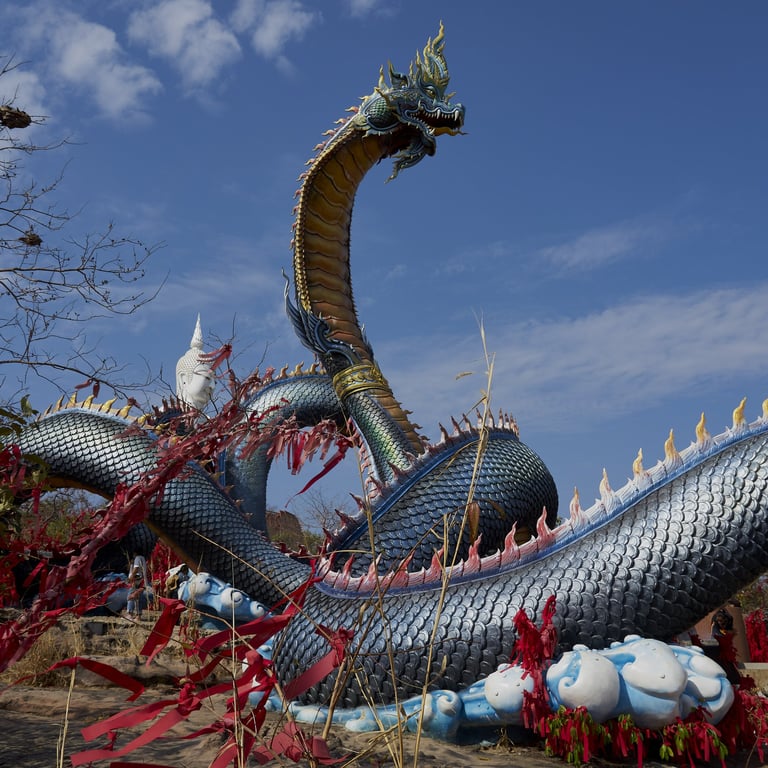
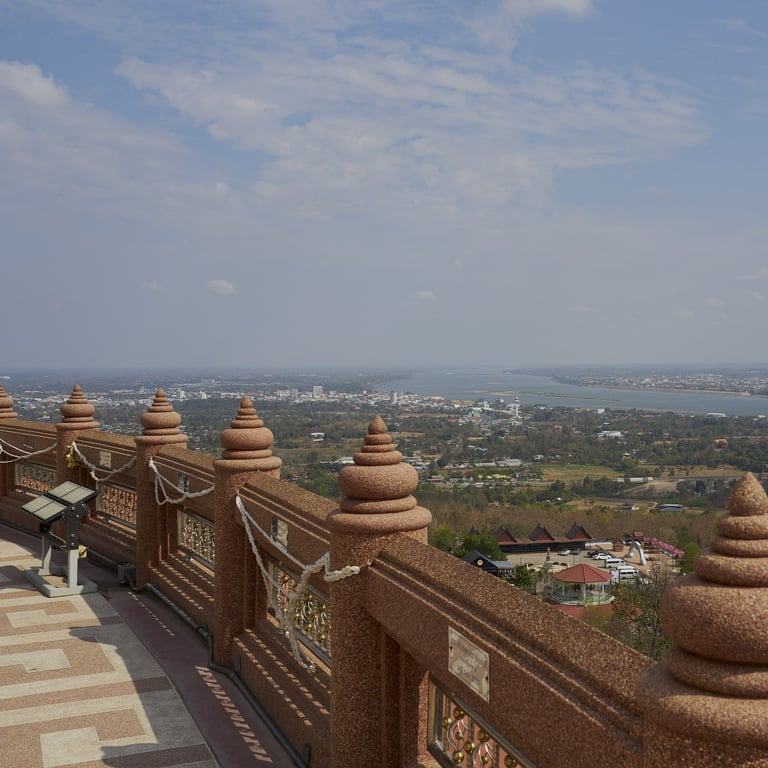
Wats & Shrines in chanthaburi
Colour all around
Somdej Prachao Taksin Maharat Shrine is dedicated to King Taksin the Great who used Chanthaburi as one of his staging posts as he gathered forces before proceeding to defeat the Burmese in battle in 1767. The shrine is styled after the headgear seen in depictions of King Taksin. While standing there, a group of Hells Angels roared in - Holy Angels, I guess. Next to the shrine is San Lak Muang, a splendidly colourful Chinese temple, and down the road is the golden Wat Suan Mamuang (Mango Garden Temple). Chanthaburi welcomed immigrants from China and Vietnam hundreds of years ago, their communities impacting strongly on their surroundings.
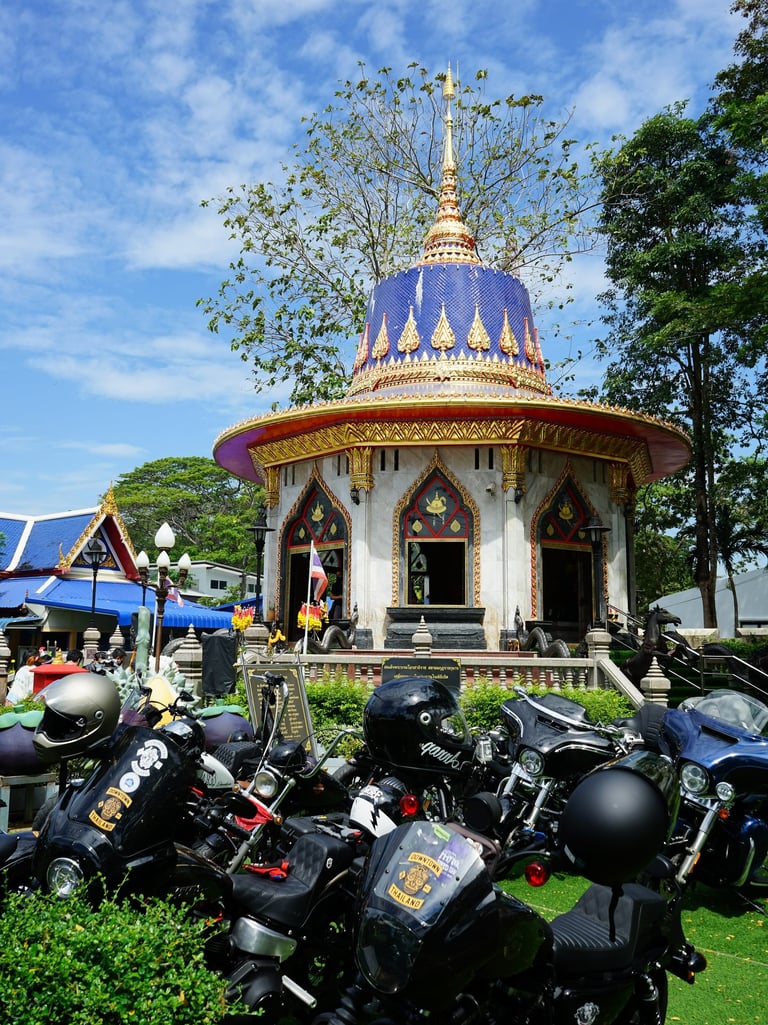

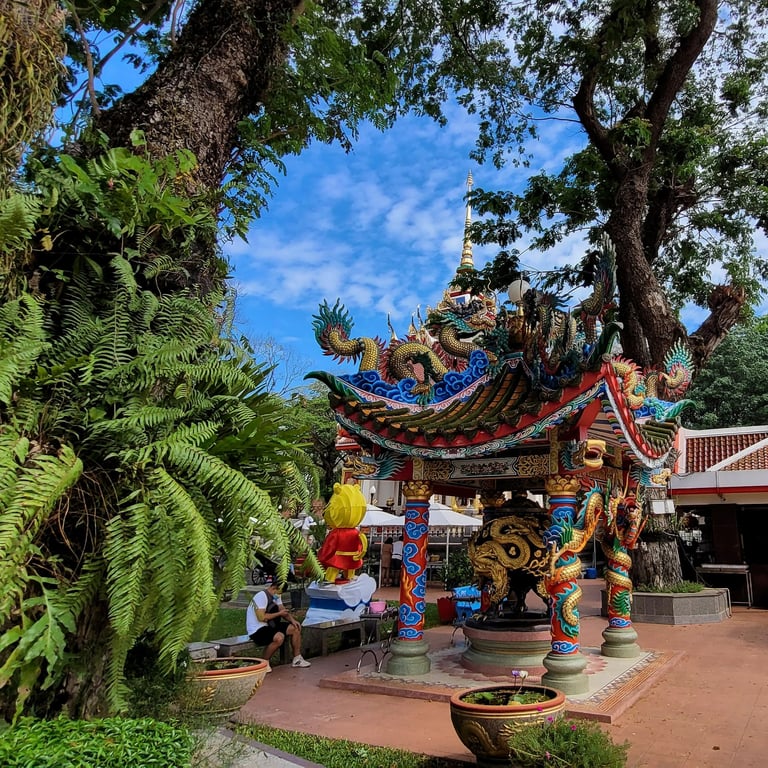
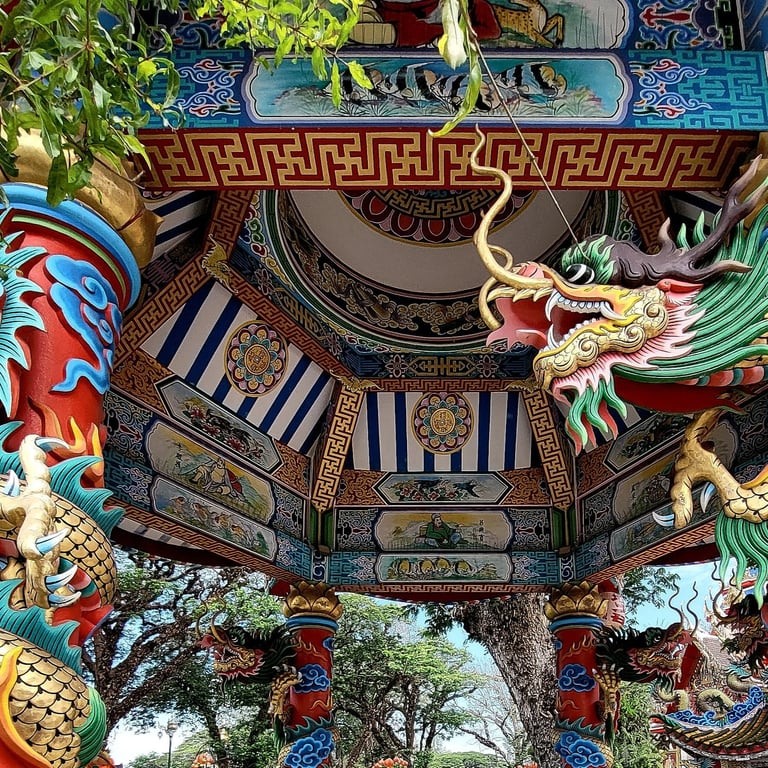
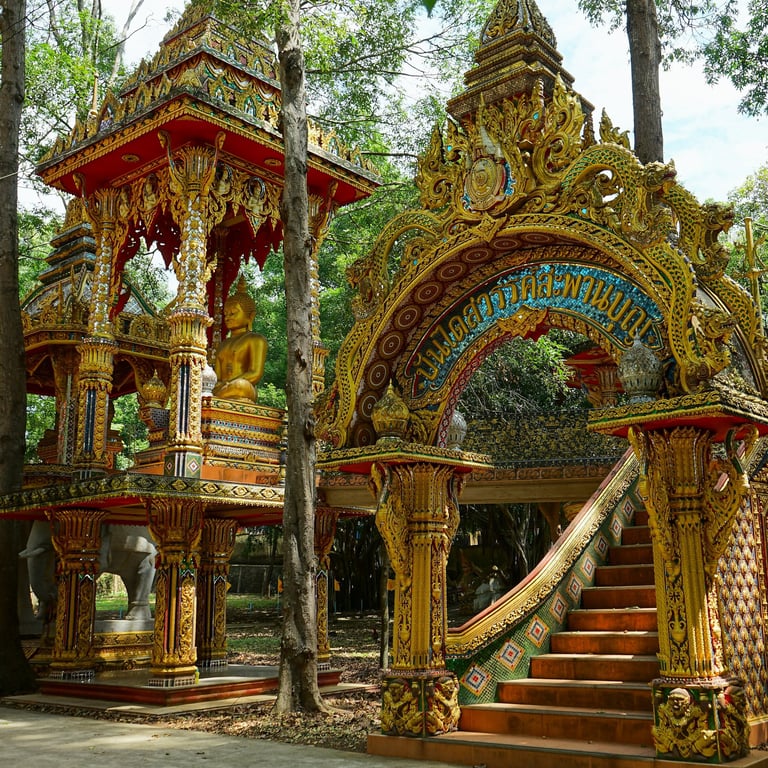
Wat pho, bangkok
Just say Wat Pho
The full name is Wat Phra Chetuphon Wimon Mangkhalaram Rajwaramahawihan - let's stick to Wat Pho, then! Like everyone else I had heard of the famous Wat Pho, but I had a mental image that wasn't particularly flattering, so never put it on the list. When I finally visited, I was surprised at how much there was to see by wandering round the site away from the crowds. The Reclining Buddha is a main draw of course, the shot here shows some unlikely toe-prints.
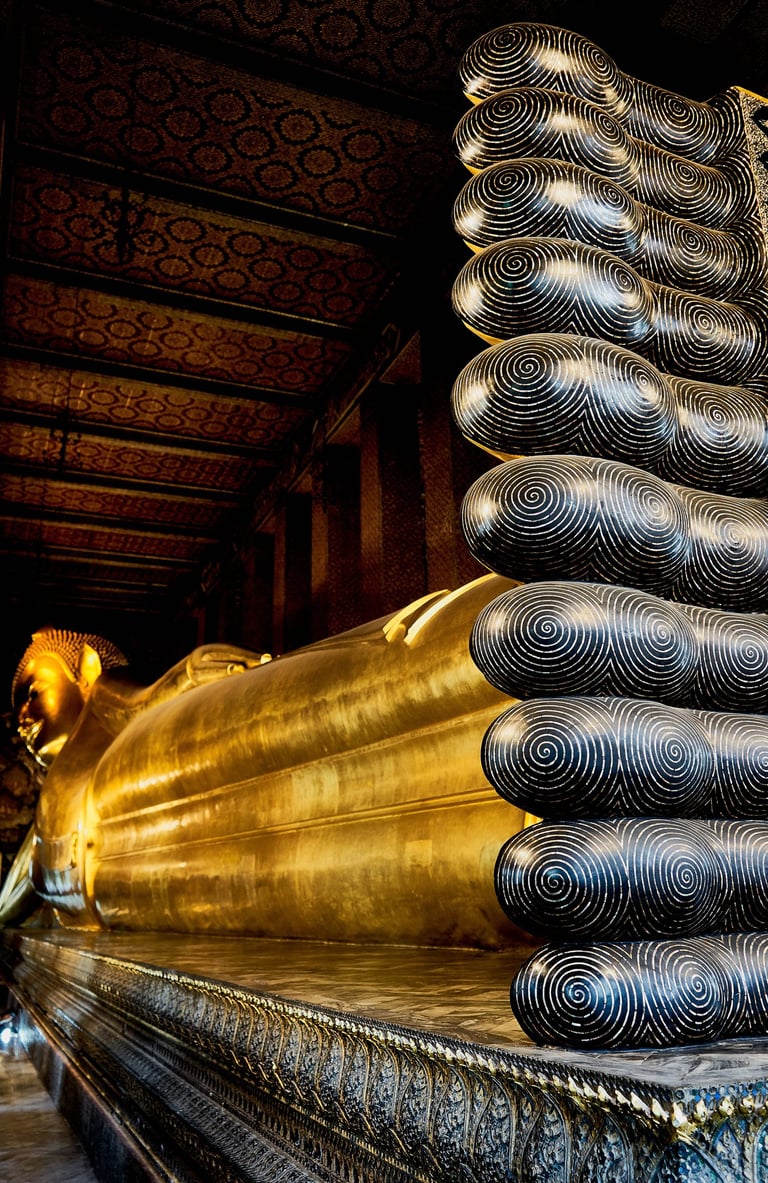

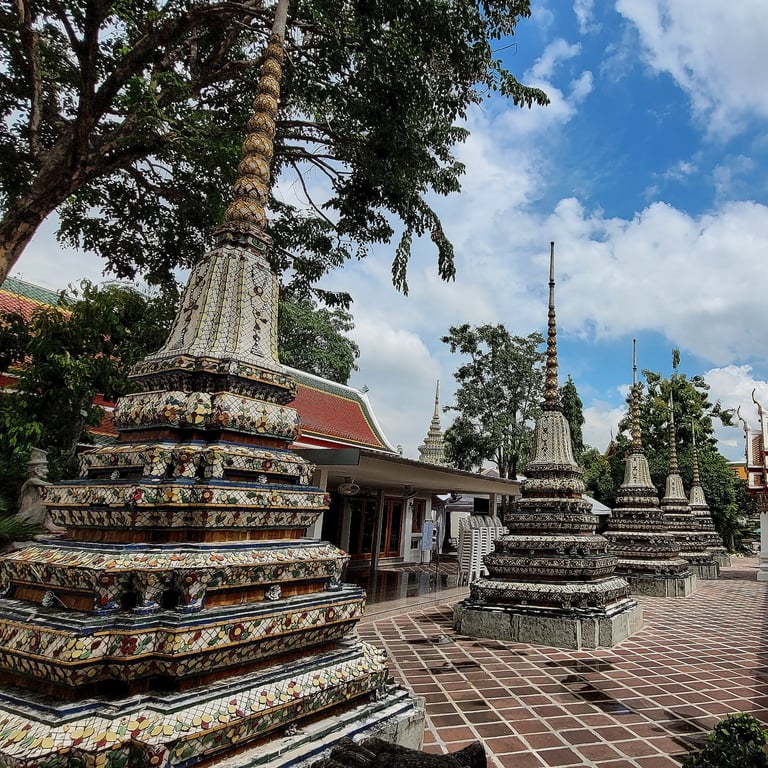
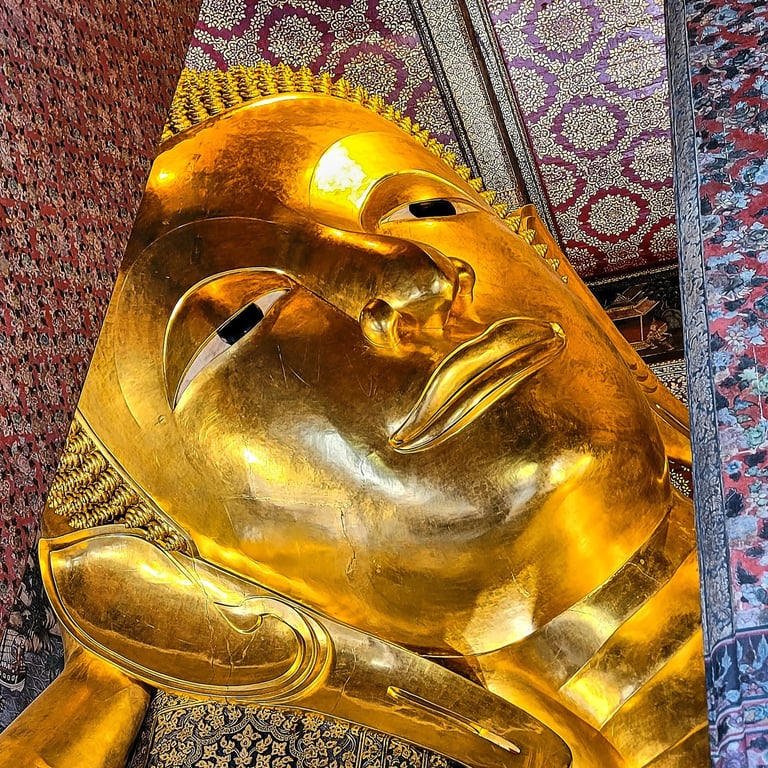
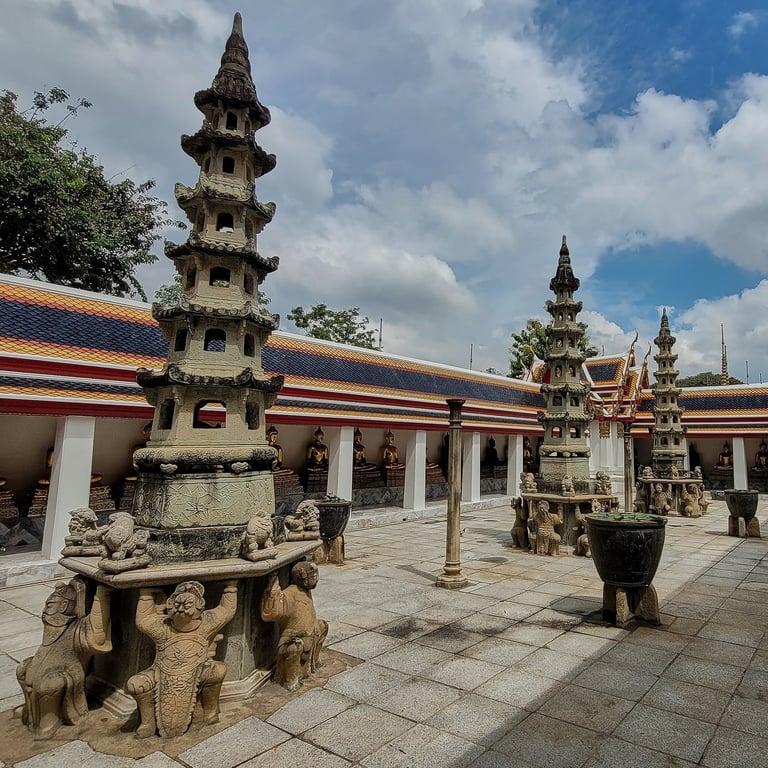
Wat phai rong wua, Suphanburi
Hell garden!
Developed over a period of 50 years, this huge site features several wats and row upon row of Buddhas. The main Buddha at 15 metres tall, is visible from some distance away. It is an hour’s drive from Bangkok or 40 minutes from Suphanburi, but to be fair, it is all a bit tumbledown and in need to some TLC. The star attraction is supposedly the Hell Garden, replete with a hungry ghosts section, all of which shows what is in store for sinners. The statues revel in gore, making it fairly gruesome to walk amongst them - definitely not one for the children!
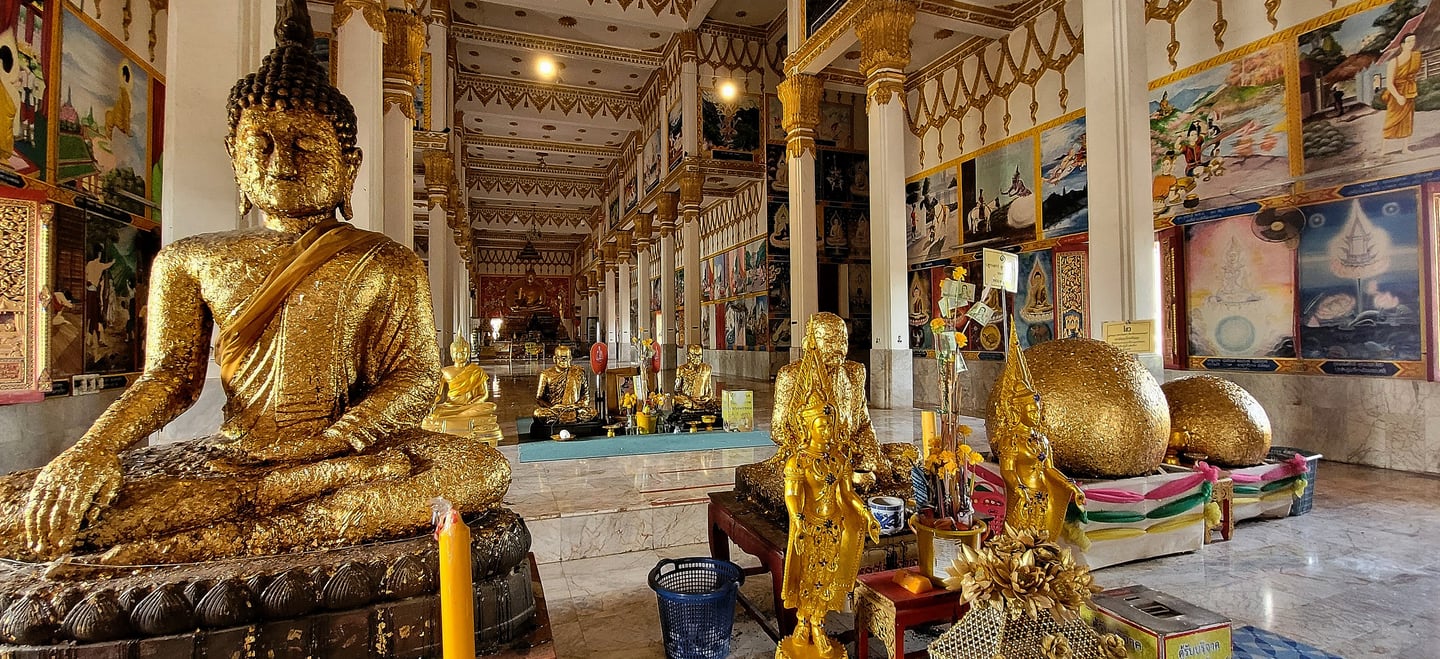

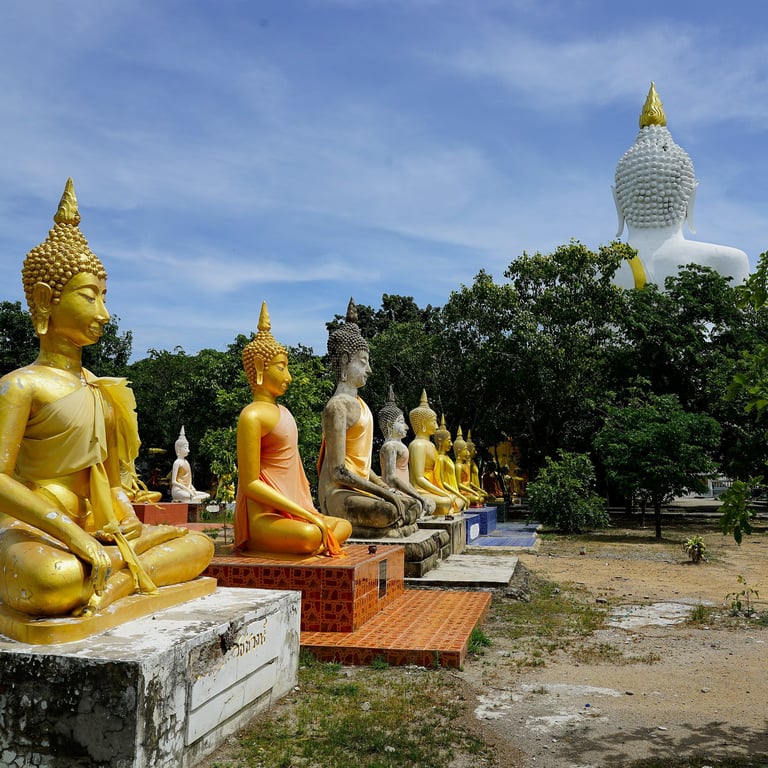
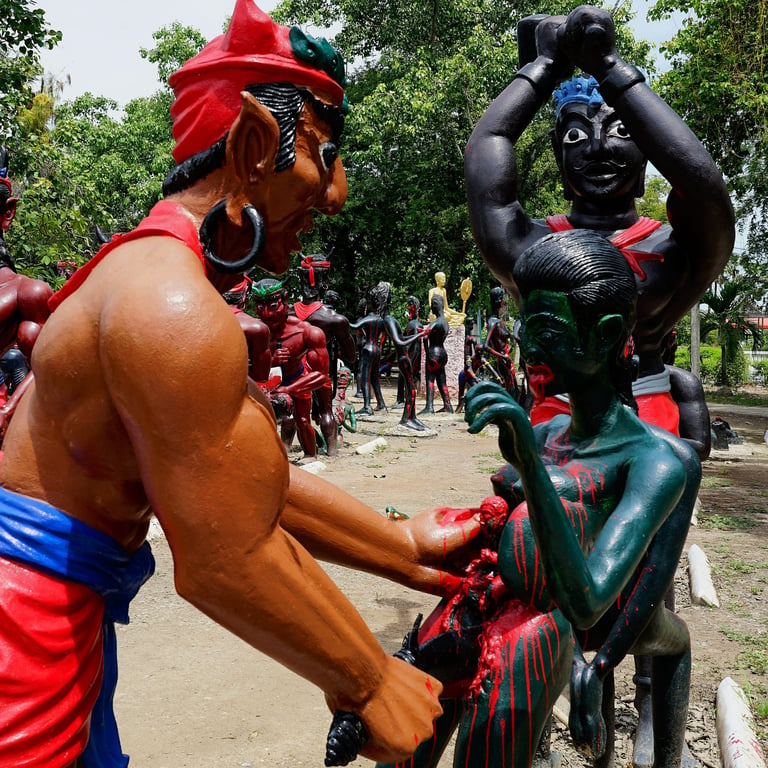
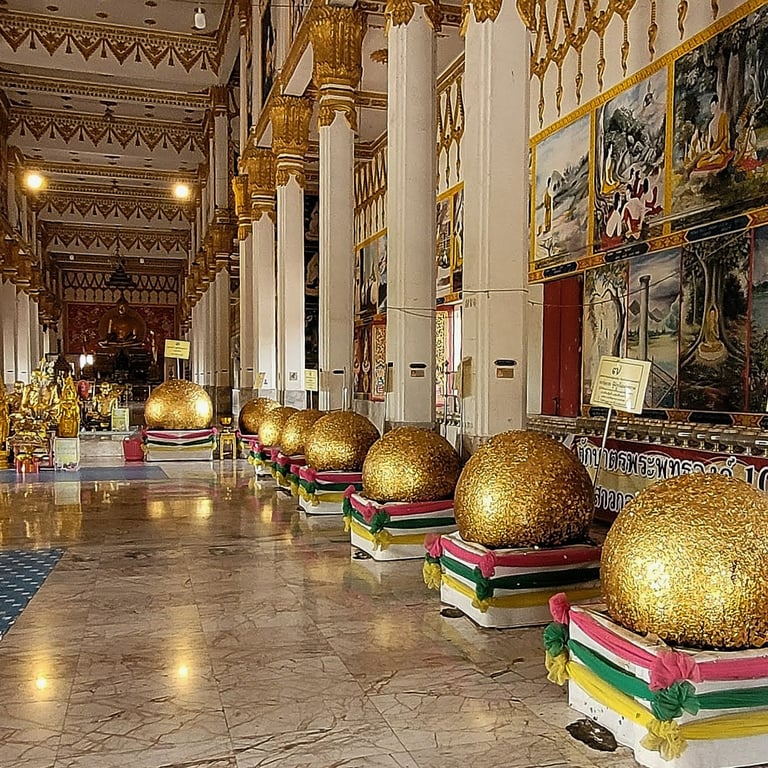
wat hai sok, udon thani
The Business!
This one wasn’t on the list until the taxi driver said, ‘Nah, you don’t want to go there to have your business enterprise blessed, you want to go to Wat Hai Sok - it’s a no brainer, take it from me.’ To be fair, locals do know about these sorts of things. He didn’t mention that the 40-minute drive features miles of potholes linked by the occasional bit of road though. This is an interesting wat, built from blocks of laterite (or faux laterite from a nearby builder’s yard?) giving it a unique appearance. Sure enough, monks were waiting patiently on the stage for entrepreneurs seeking favour, being in need of some good fortune regarding their ailing endeavour. Purchase your merit-making gift and let the blessings begin.
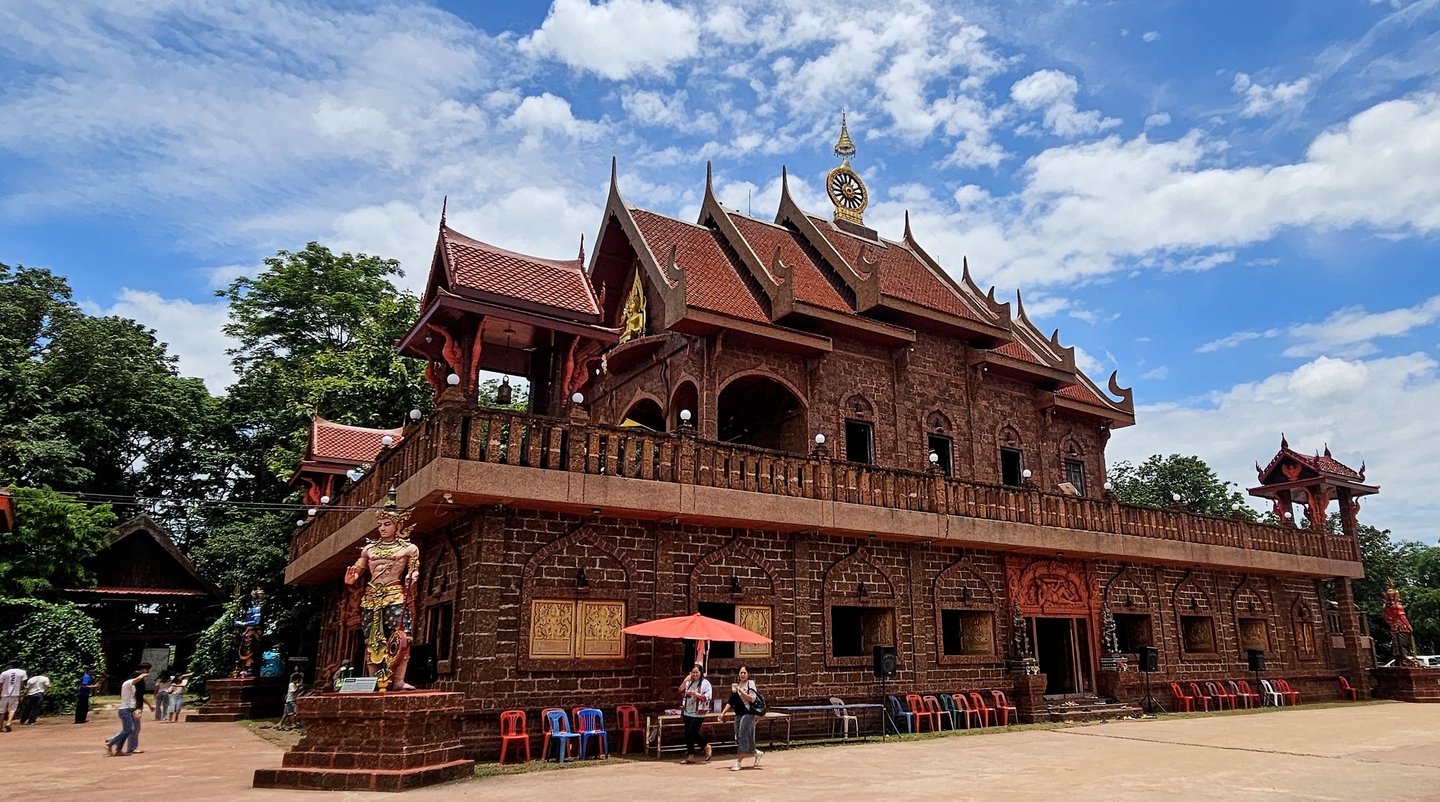

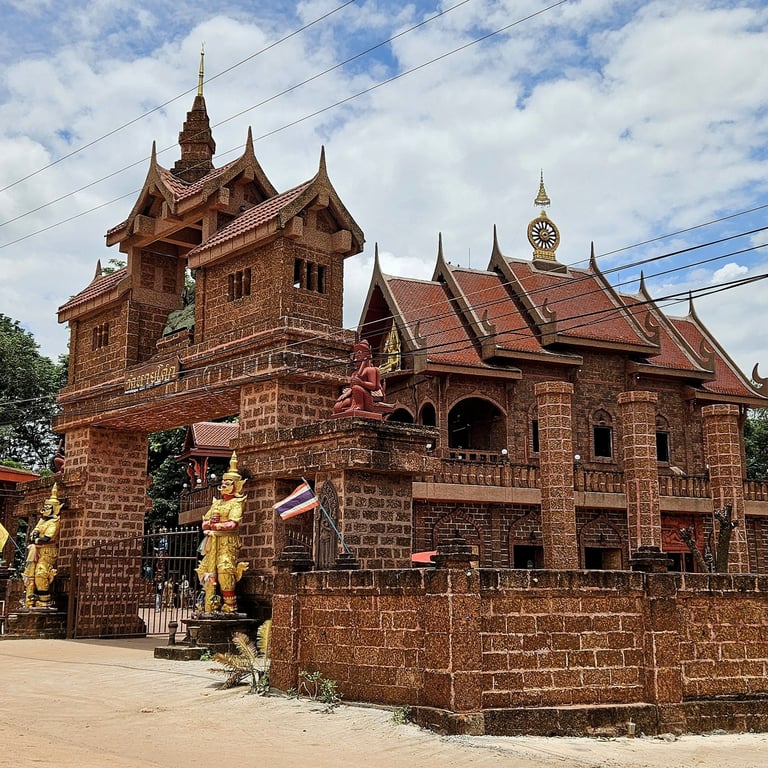
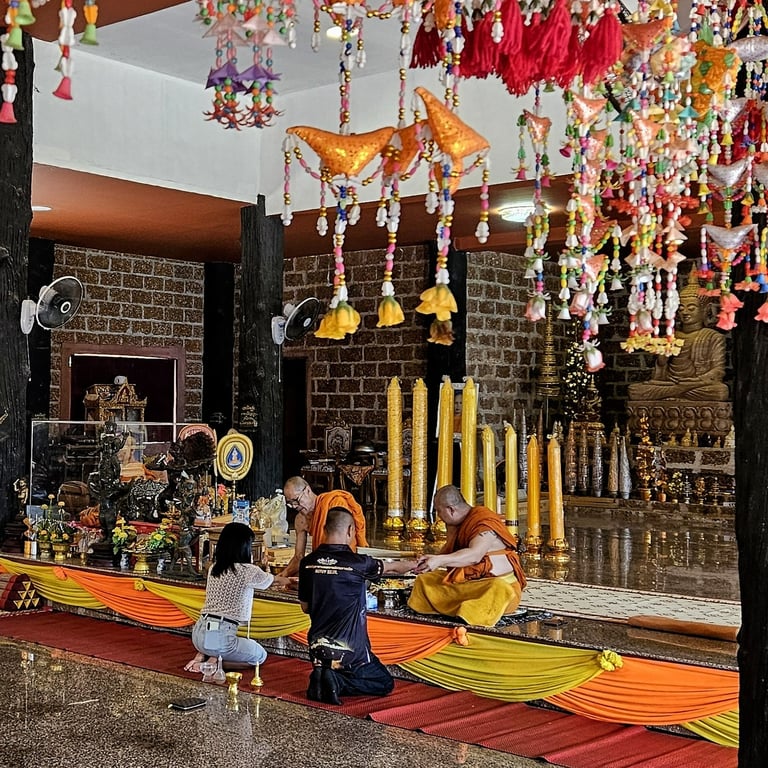
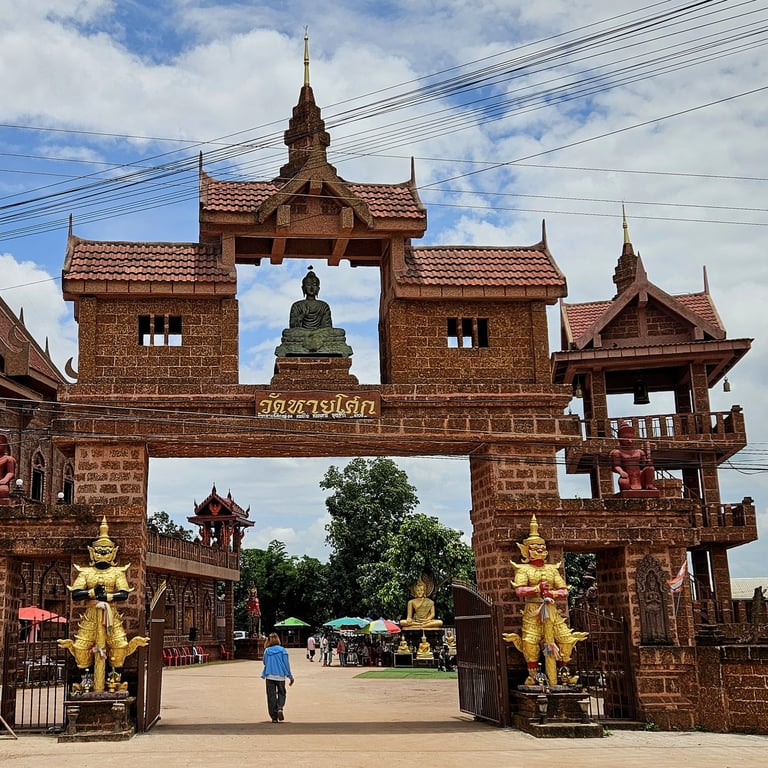
na jasa tai chue shrine, chonburi
Colour overload
Located in Ang Sila, a fishing village in Chonburi, this Chinese temple is a riot of colour and intricate detail. The Dharma Rasami Maneerat Foundation developed the shrine in honour of the King of Thailand’s 72nd birthday, with small additions and touching up still taking place. All deities are represented, as well as historical figures and murals depicting tales from Chinese folklore. Pilgrims visit to pray for luck in health, business, love and life in general – indeed, the main challenge is being able to find the figurine or statue specific to your quest to kneel before – there are simply so many! For the photographer, your lens will be drawn to the rich details, even though you know that your software won’t be able to make sense of the assault of colours!
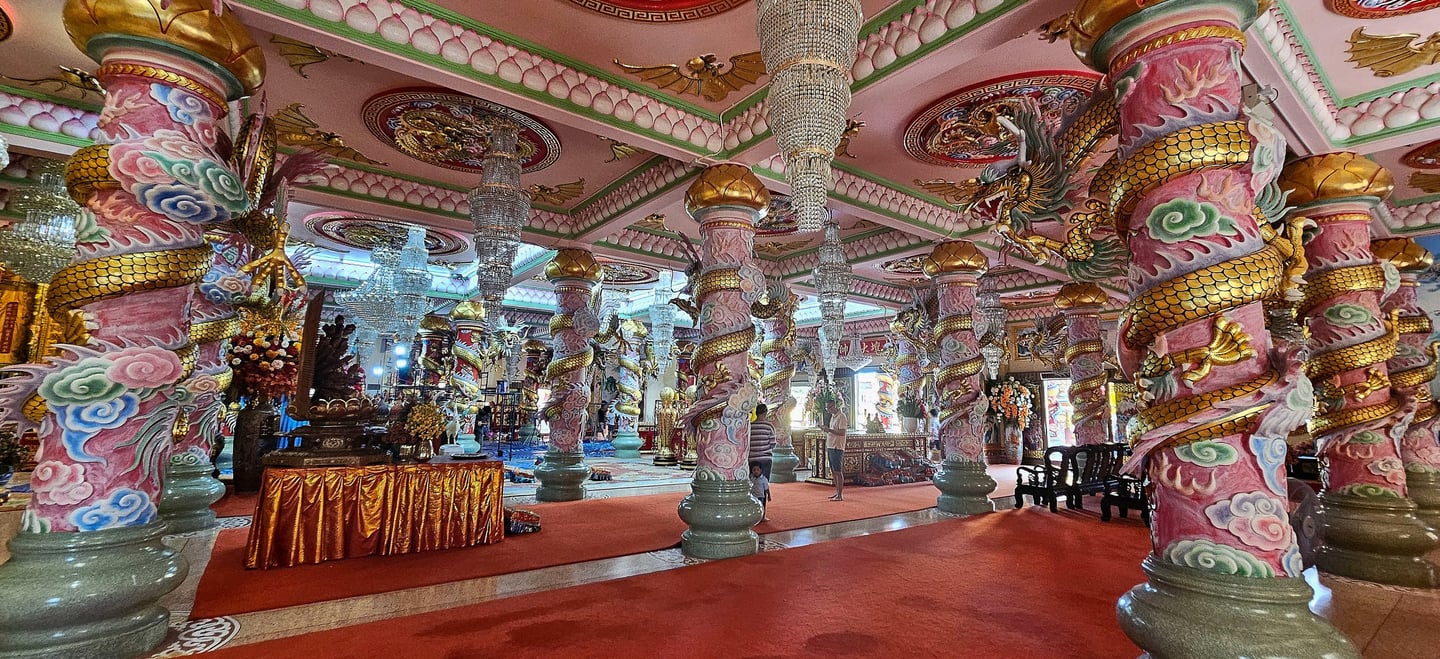

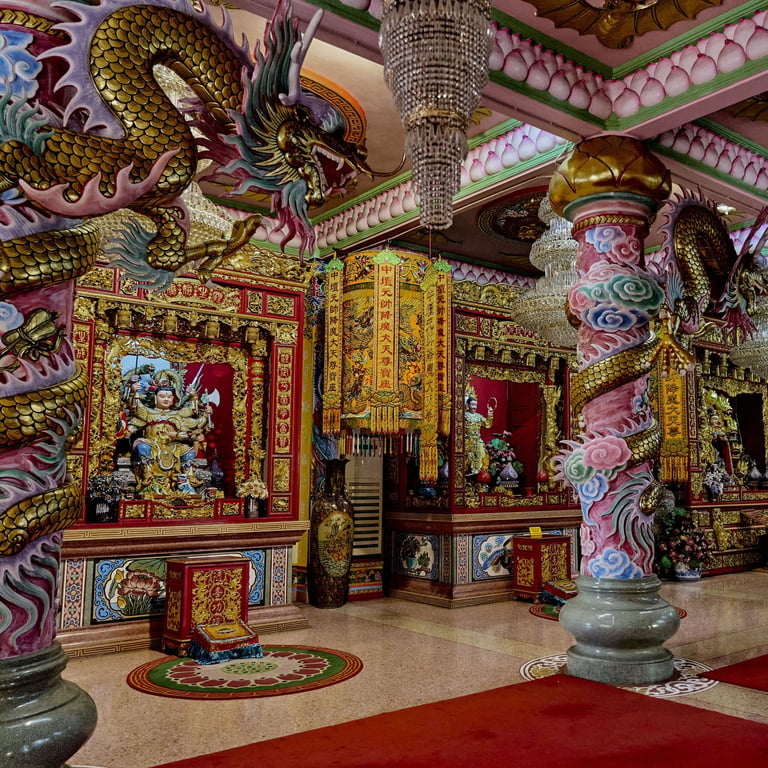
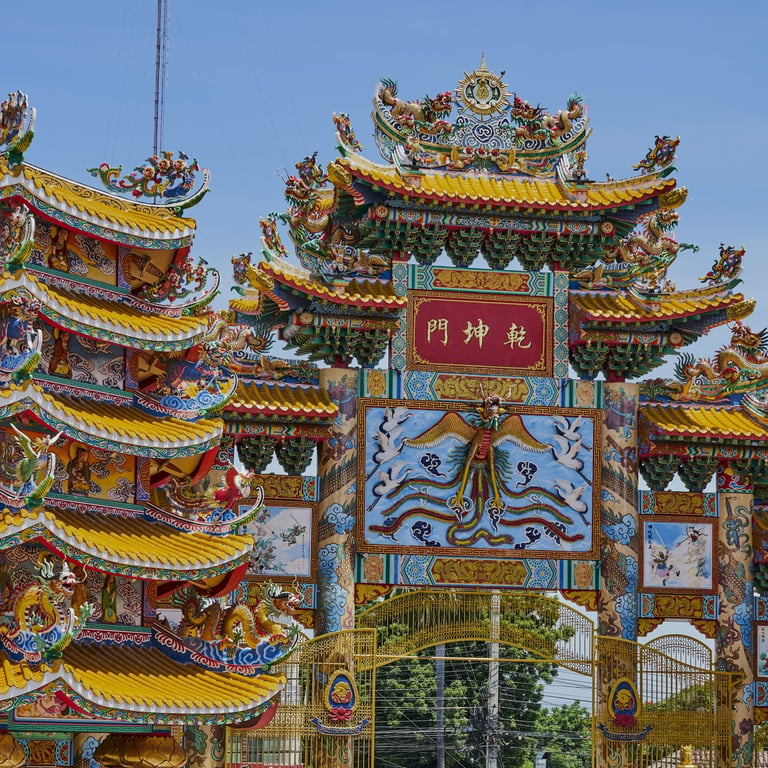
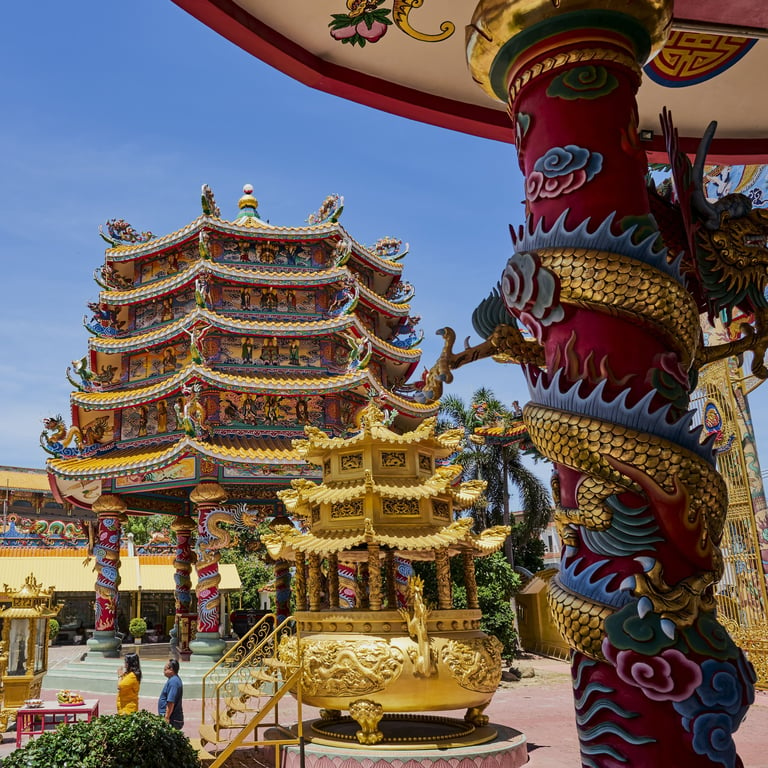
wat suthat, bangkok
Simply beautiful
Its full name is Wat Suthat Thepwararam Ratchaworamahawihan, the latter part referring to its ranking as a royal temple of the first grade. Built during the 19th century, Wat Suthat is immaculately well kept and impressive, not just for its huge size, but also for the splendour of its ornate interior finish. Outside the main gate is a giant teak swing which was used for ceremonial purposes. Wat Suthat is situated in the heart of old Bangkok which is reflected in the houses lining the adjacent streets. Wat Suthat, so dignified, is one of my absolute favourites.
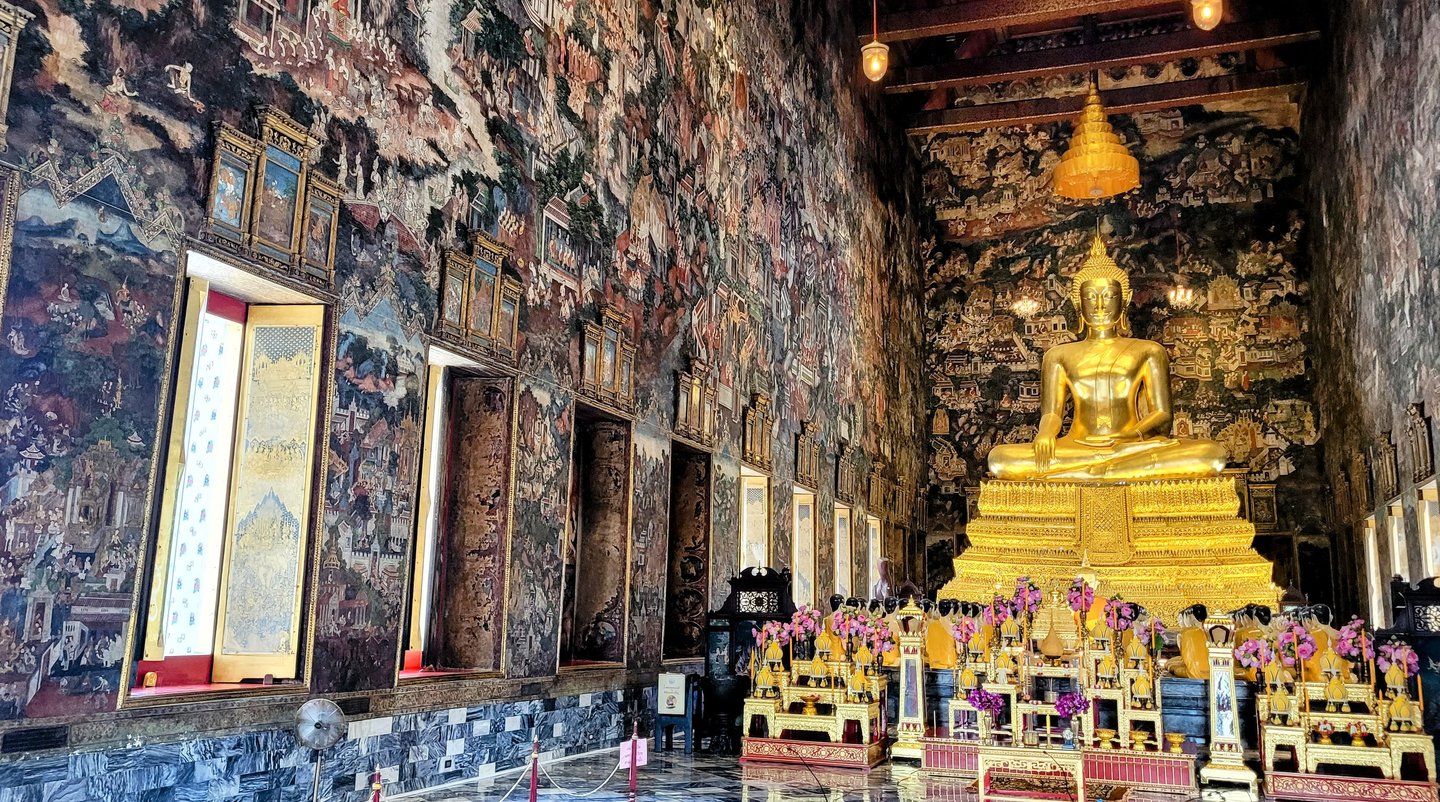

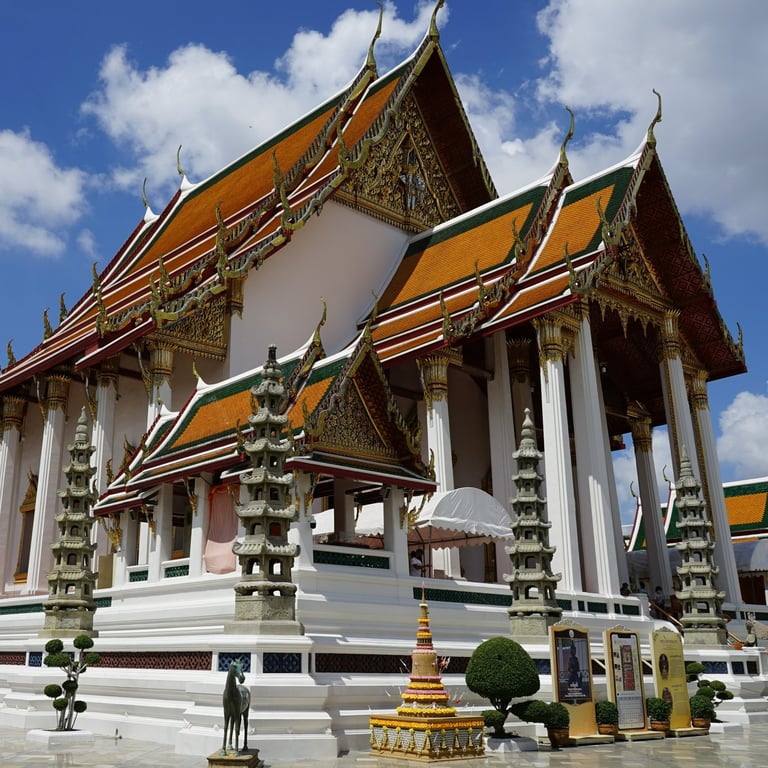
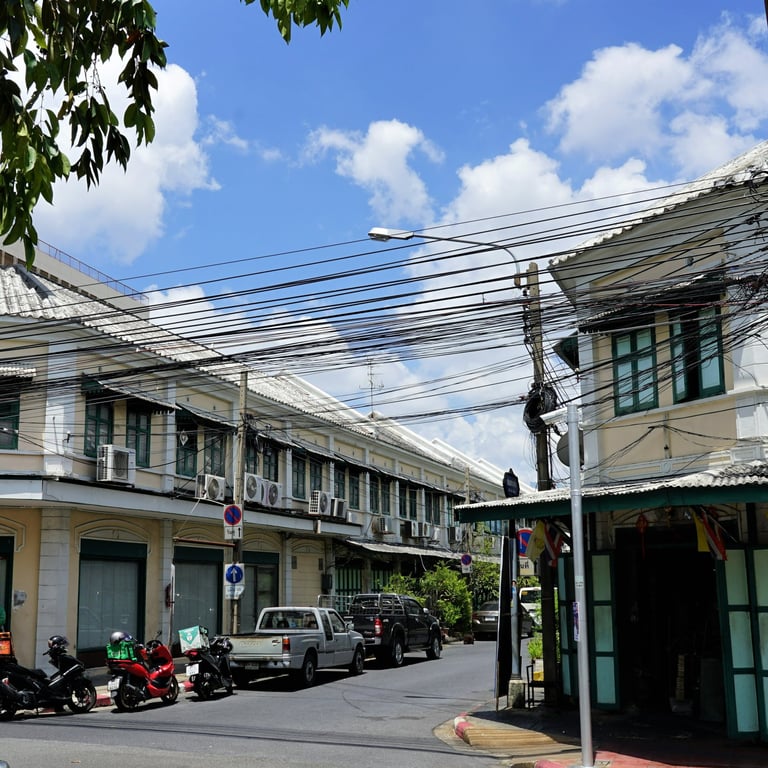
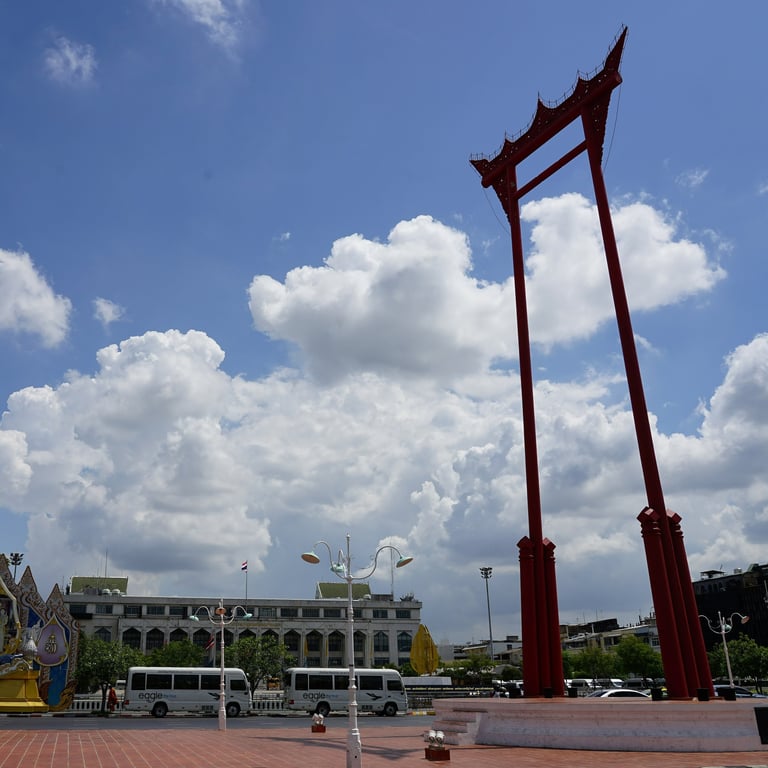
wat rong khun, chiang rai
The White Temple
The original wat was in need of repair, so local artist, Chalermchai Kositpipat, stepped in to turn it into an art statement. It was opened to the public in 1997 and it is still undergoing development. Crossing the bridge to the main building symbolizes the initiation of Buddhist rebirth. You pass over outstretched hands representing temptation, greed and desire. Once inside there are a bewildering number of modern motifs (look it all up), be ready for Michael Jackson, Harry Potter and the Terminator - really! This, as well as the Blue Wat and the Black Museum (Baan Dam), make for an illuminating Chiang Rai trip. Careful where you park, mind!
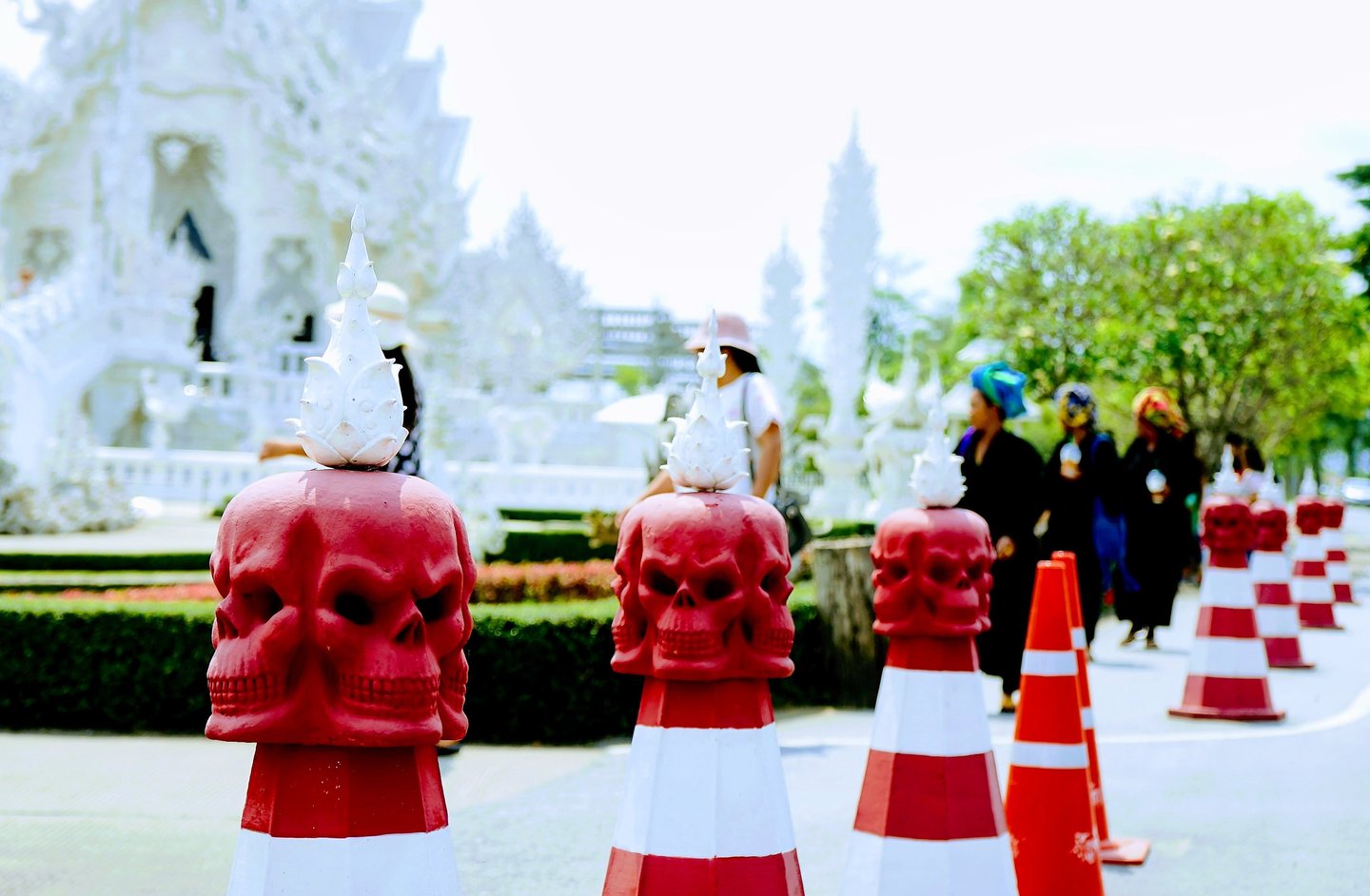

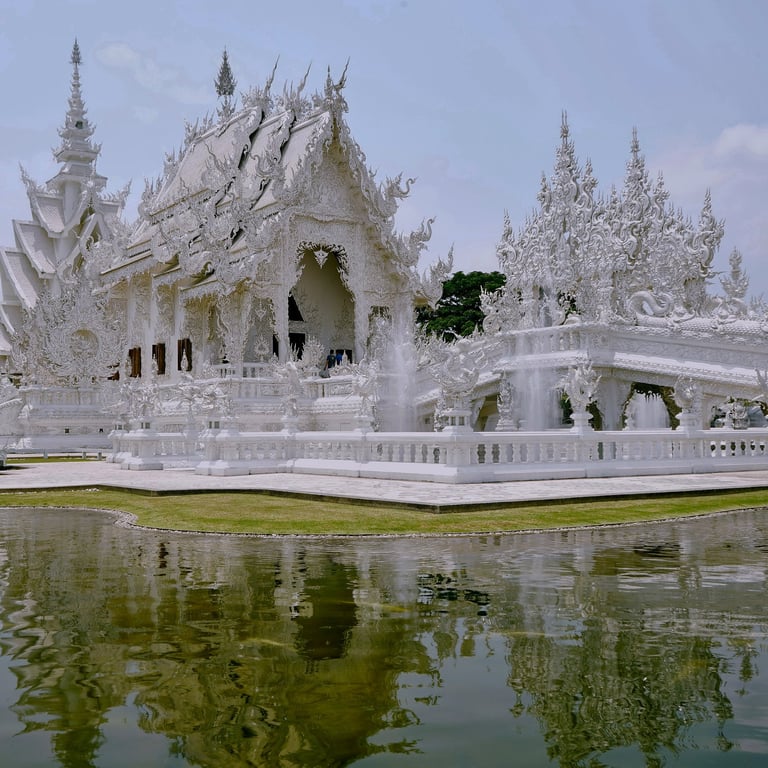
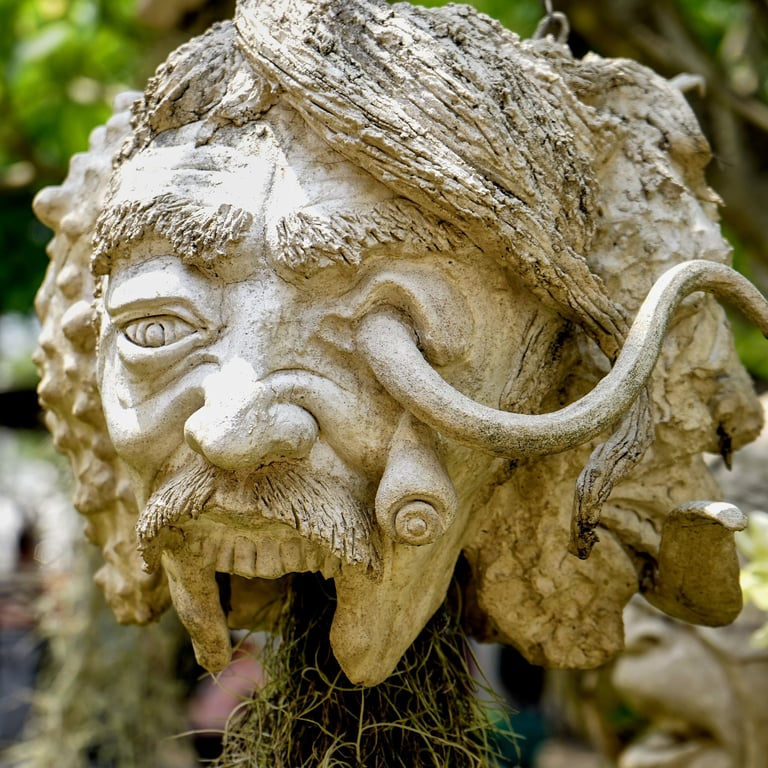
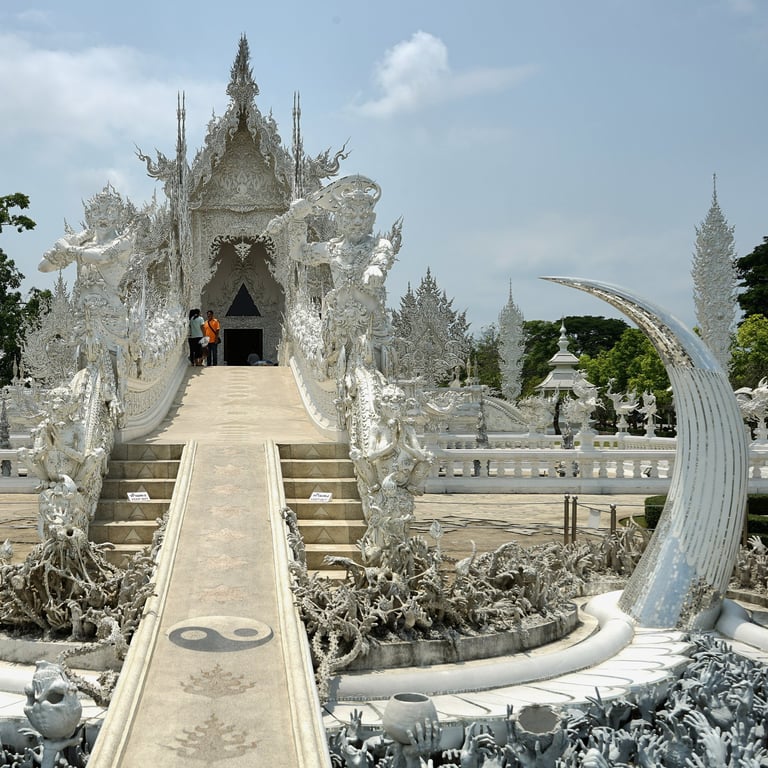
wat sanam rattanaram, chacheongsao
Lord Ganesh
Chacheongsao is a town in a province of the same name, east of Bangkok. It lies on the Bang Pakong River and is famous for its temples - many other notable ones are widely scattered within the province. Pictured here is the very pink Lord Ganesh Temple, or Wat Saman Rattanaram dedicated to the Hindu deity. There is usually quite a crowd here as people seek blessings to give their business a boost. On this occasion, the senior ladies also put on a very commendable show.
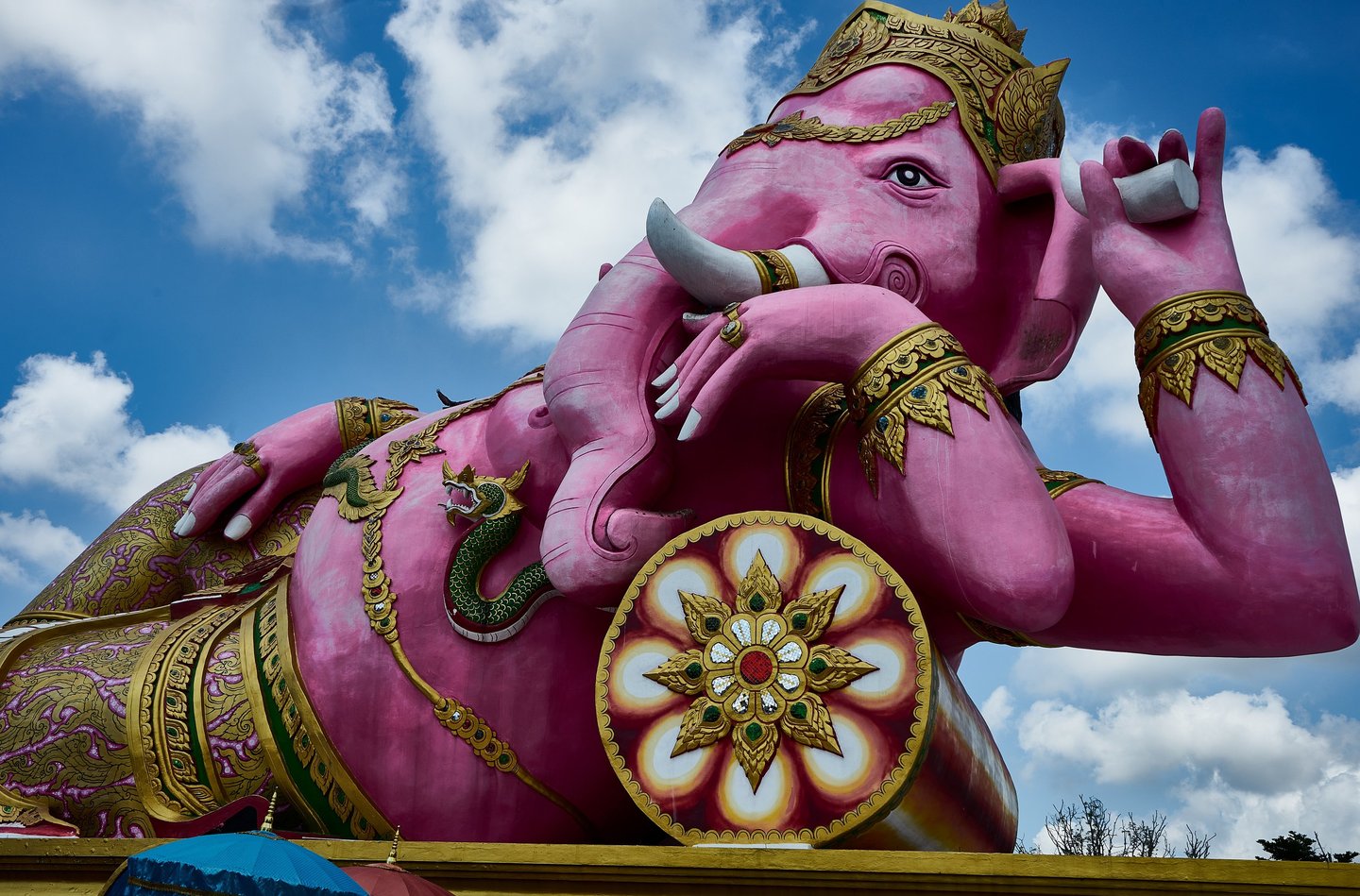

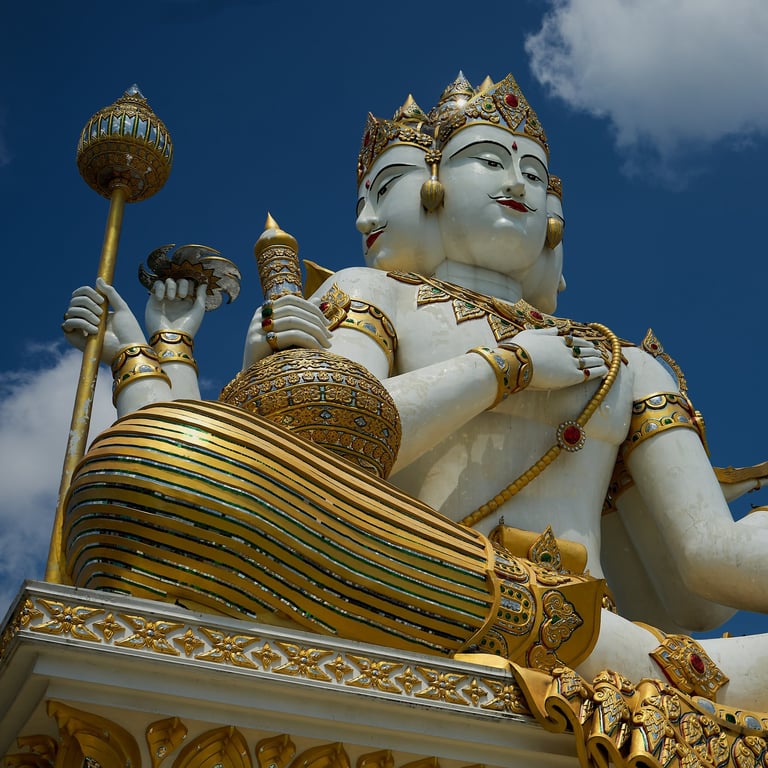
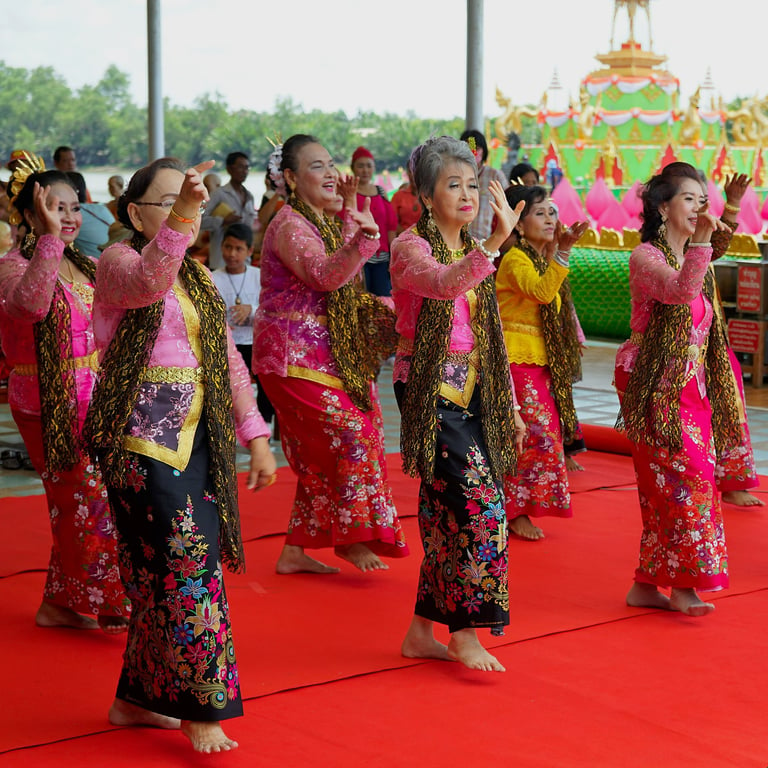
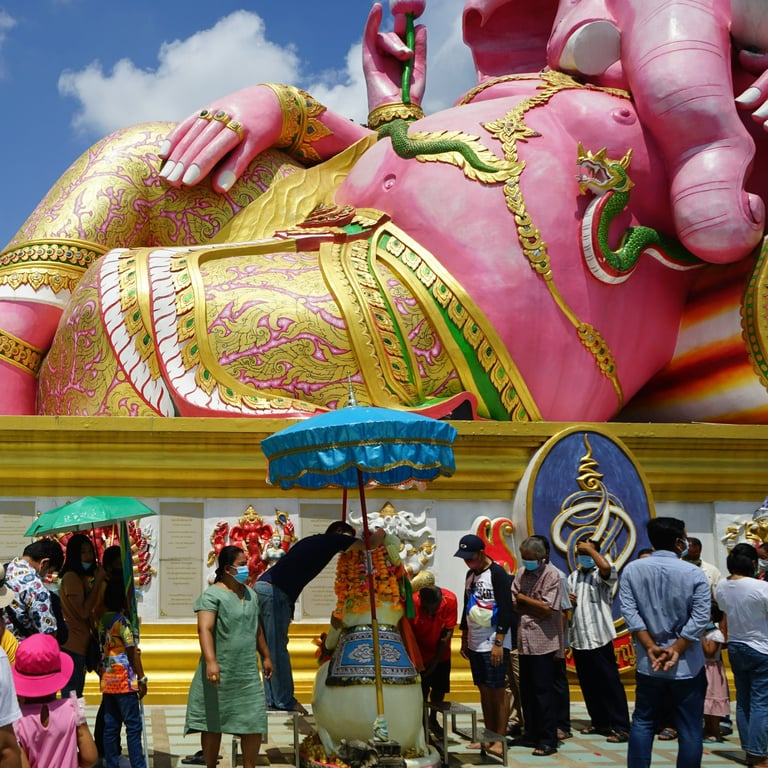
wat nong wa makham khu, rayong province
Keeping a watchful eye
If you have been to Koh Samet or Koh Chang and are driving back to Bangkok, you will likely use Highway 36 before it connects to Highway 7 (the motorway). This is a speedy dual carriageway (often three lanes now) laced with heavy-duty traffic from the Map Ta Phut-Rayong industrial areas. Your route will pass a huge reclining Buddha visible from the main road. You have probably sped past it many times in the past - it is certainly eye-catching. It is worth a stop if you've got time, and definitely a chance for a bit of calm before you enter the fray once more.
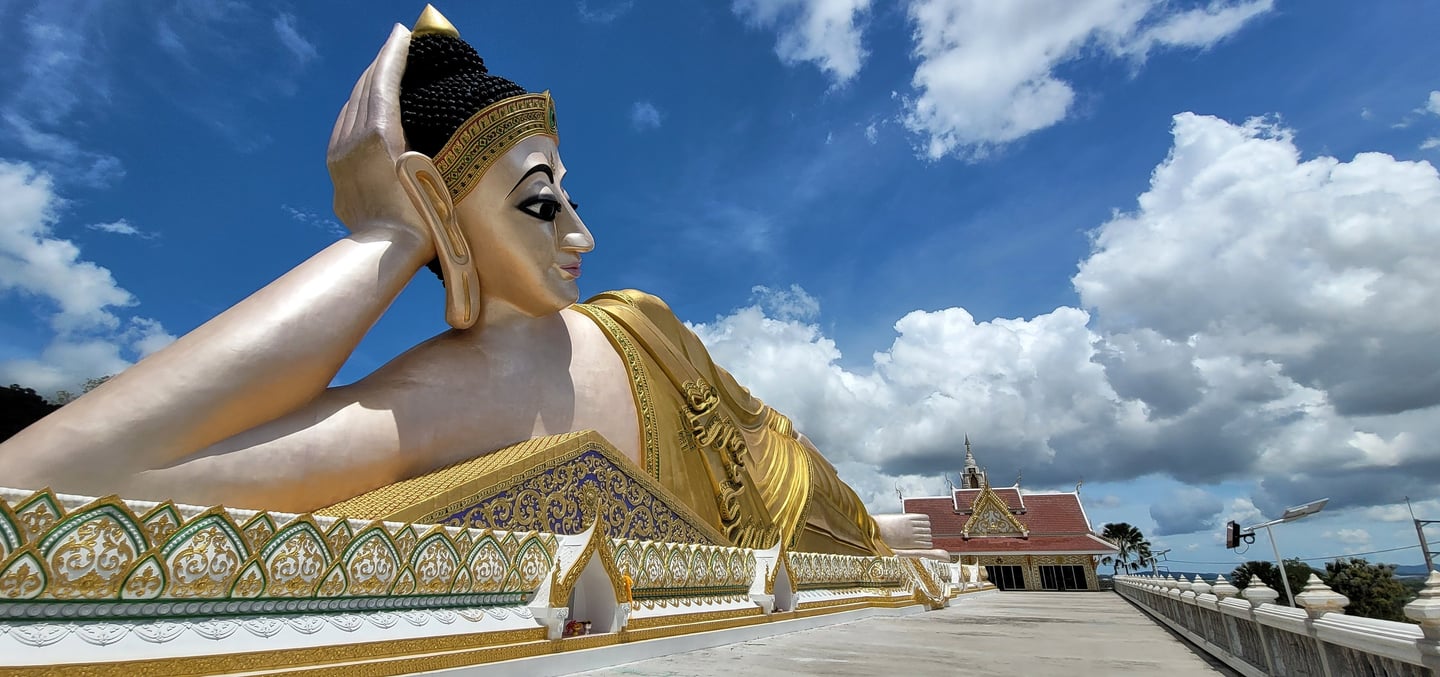

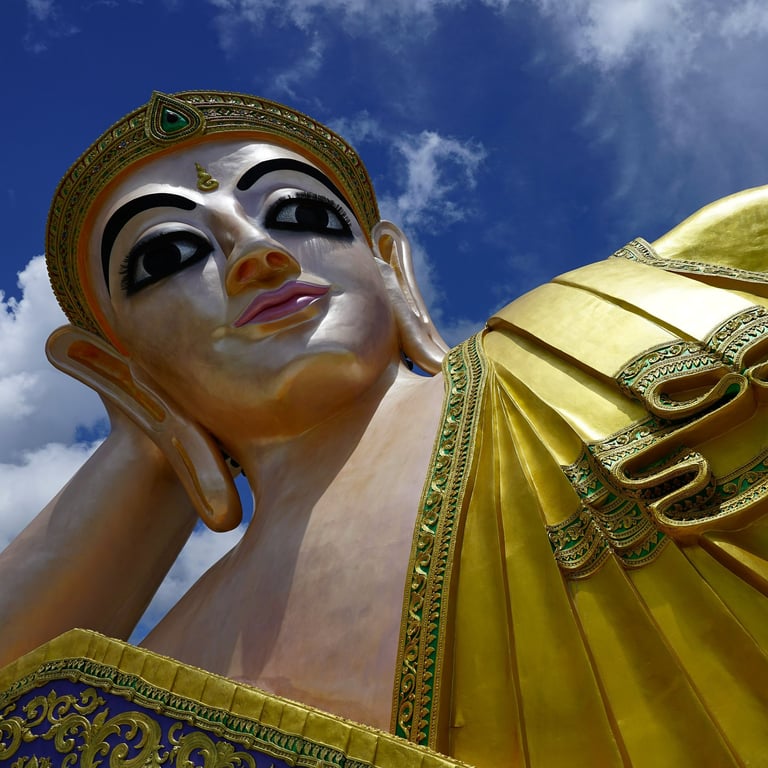
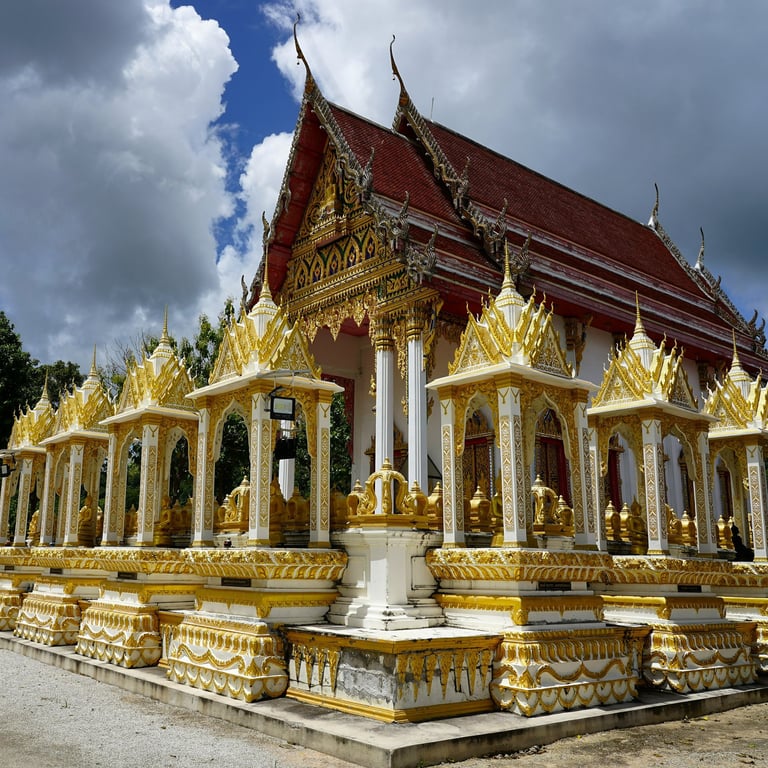
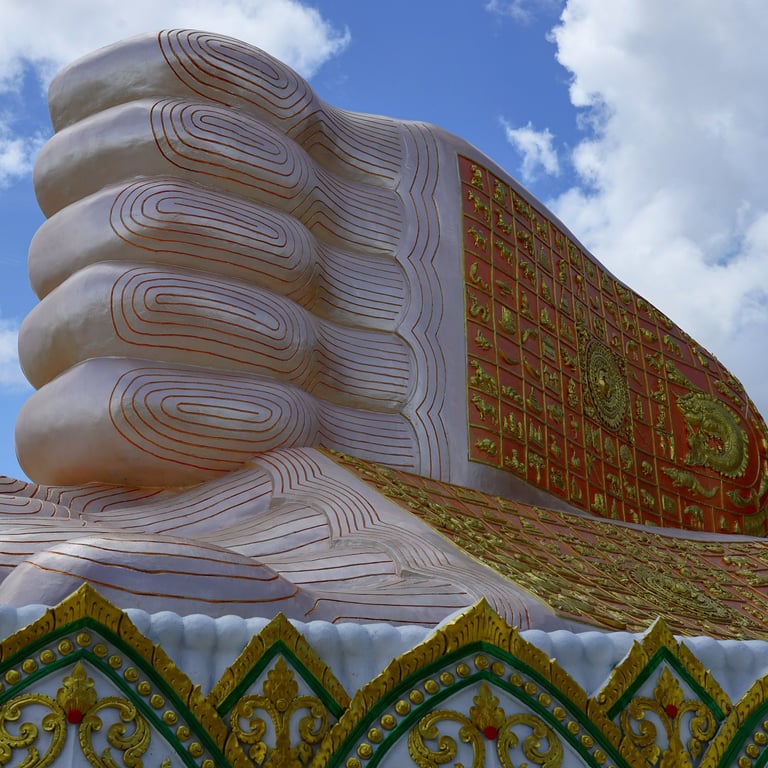
wat saket, bangkok
The Golden Mount
Wat Saket, full name, Wat Saket Ratcha Wora Maha Wihan, was established during the Ayutthaya era. It was later renovated when Bangkok became the capital. Rama III subsequently built a huge chedi but the soft soil was unable to support it, causing it to collapse. Hence the hill which towers over the local area. The modern Wat Saket is a twentieth century addition, supported by concrete walls which were constructed in the 1940s. The Golden Mount is ascended by a wall-perimeter staircase, with an ‘up’ and a ‘down’ to guide the steady flow of visitors - expect a long wait for your viewfinder to be clear of people. The huge wat is hard for your camera to capture close up, it doesn't really reveal itself until you pass the final step at the top. Walk away and try one of the canals for complete view - a tall building nearby would be your best bet.
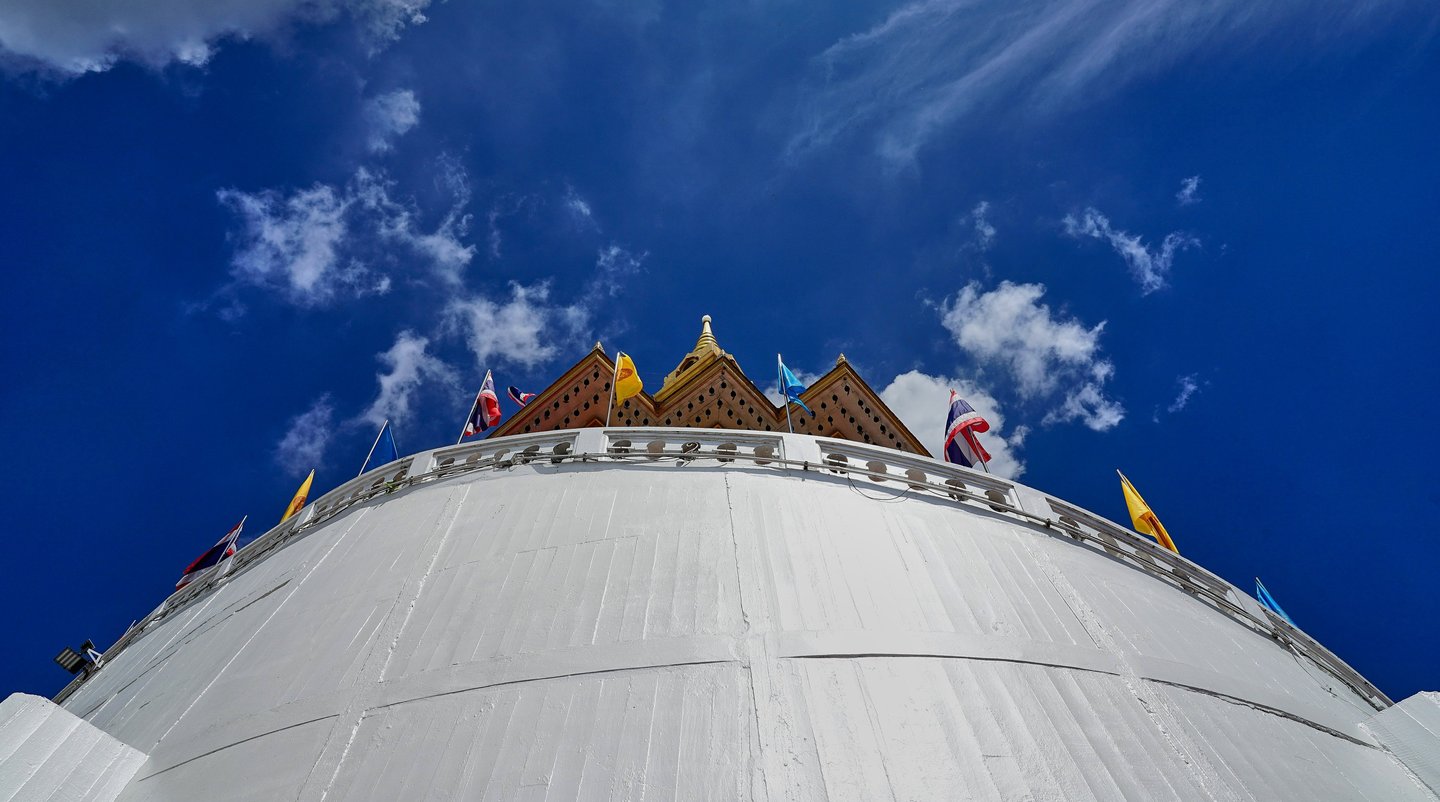

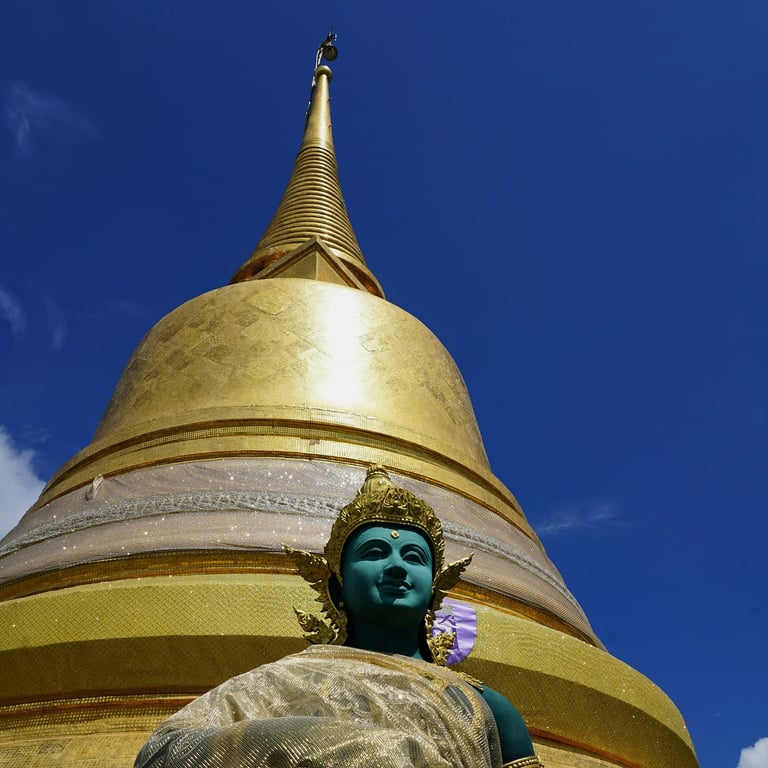
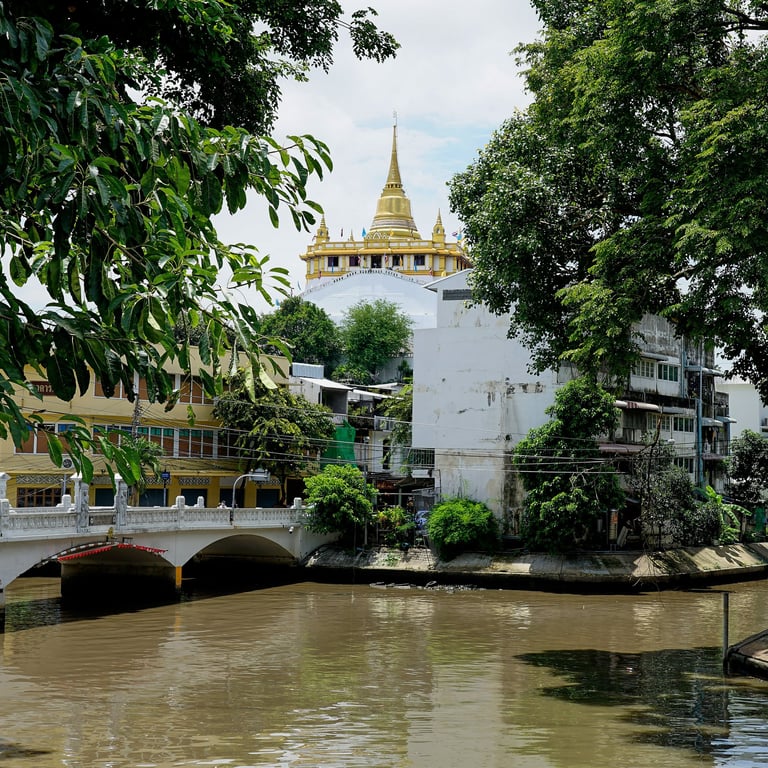
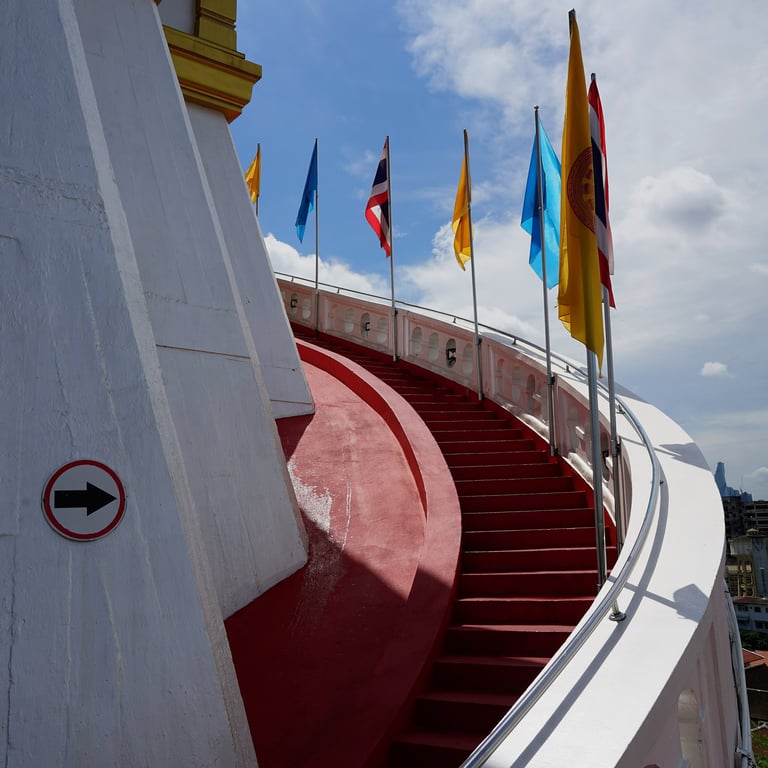
wat ton kwen, chiang mai
Lanna style
Wat Ton Kwen, dating from 1218, is 11 kms south of Chiang Mai in Hang Dong District, back off the main road. This rare wooden temple is considered to be an architectural masterpiece of the Lanna period. Its name ‘ton kwen’ comes from the name of a local tree in the Lanna dialect. It is also known as Wat Intharawat after the abbot who built it. Get there early before the tour buses in order to enjoy its natural serenity.
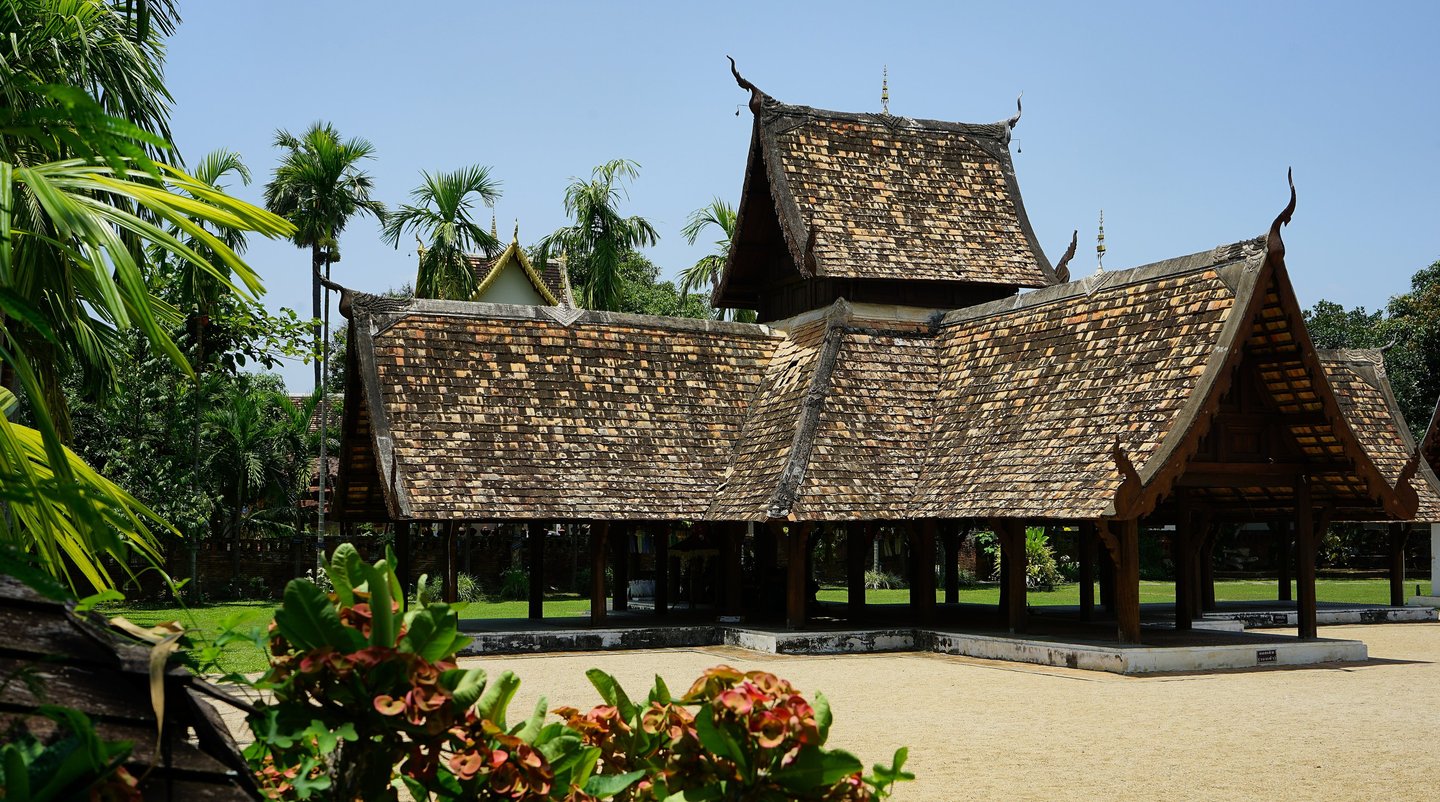

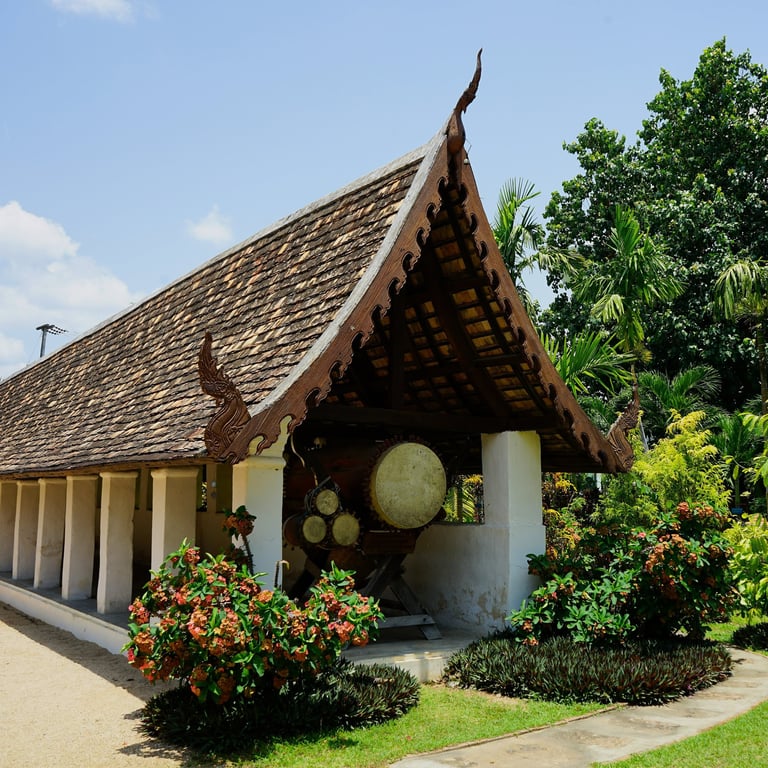
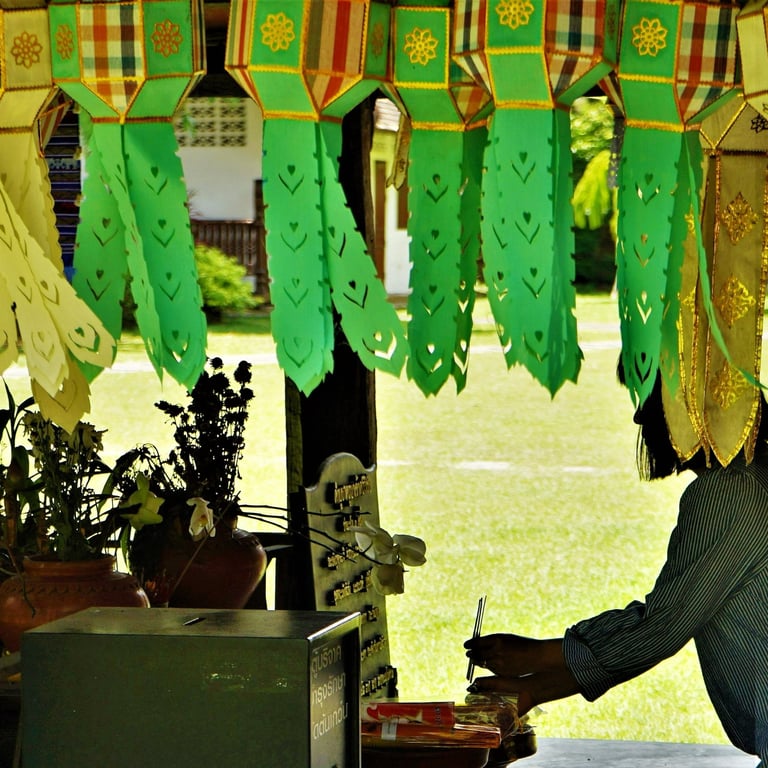
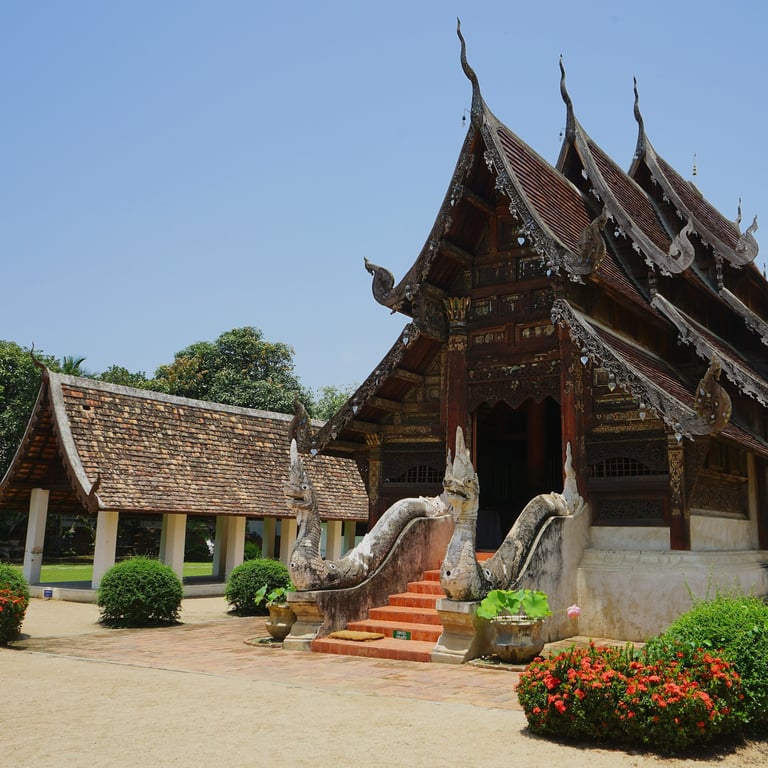
wat yan sang wararam, chonburi
Chinese Museum
The Buddhist complex of Wat Yan Sang Wararam Woramahawihan is situated 20 kms south of Pattaya, covering an area of some 58 hectares. It is dedicated to the Thai Royal Family. Nearby is Viharn Sien museum which was developed by the Thai-Chinese community to exhibit gifts from China to the Chakri Dynasty. Amongst the artefacts are bronze statues and replica terra-cotta warriors. Also nearby are two other sites: Khao Chi Chan or Buddha Mountain, at 109 metres, the tallest carved Buddha image in the world, and the Bodhagaya Stupa replica (shown here). There are cycling lanes all around as well as coffee-shops for breaks after tackling the hilly landscape.
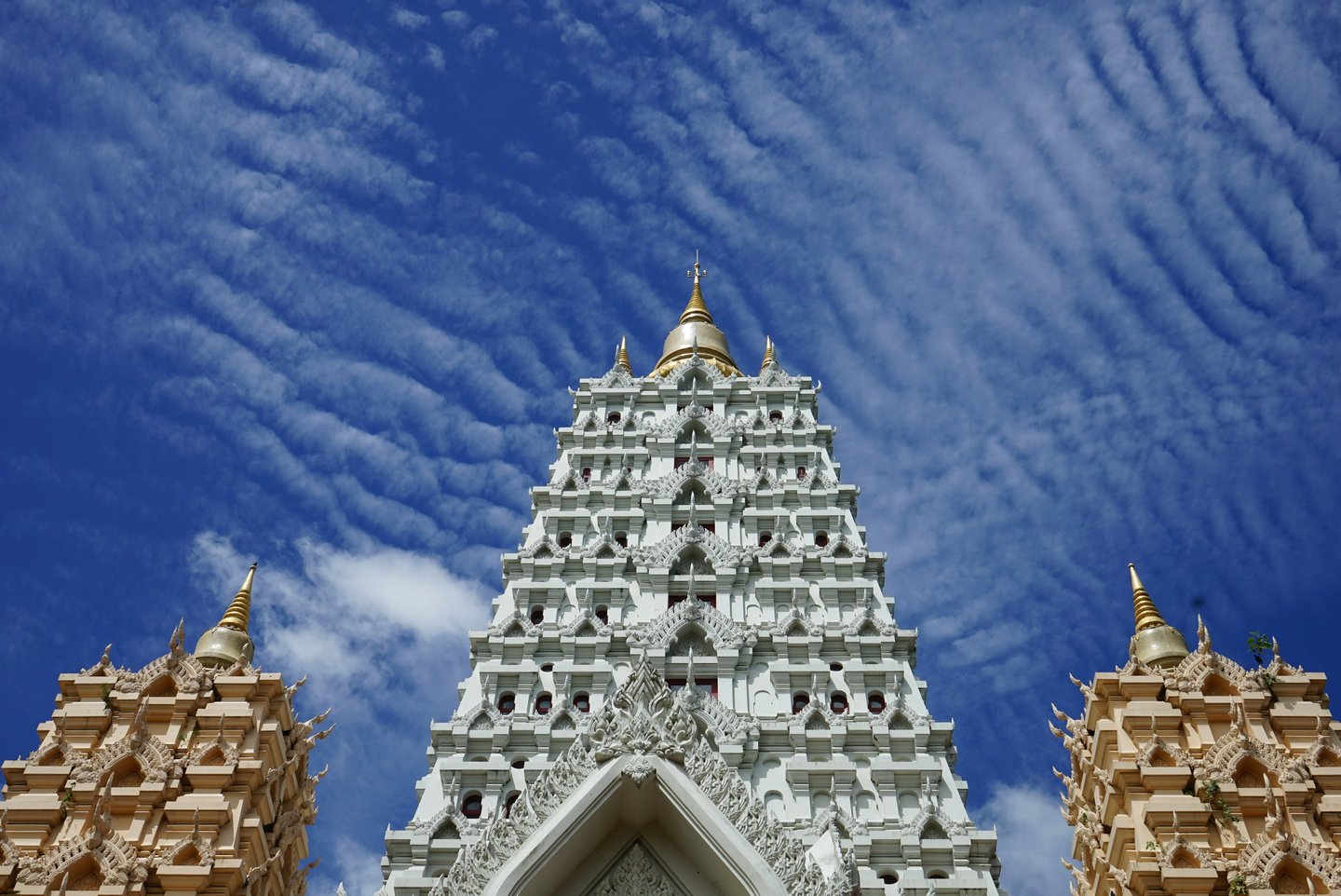

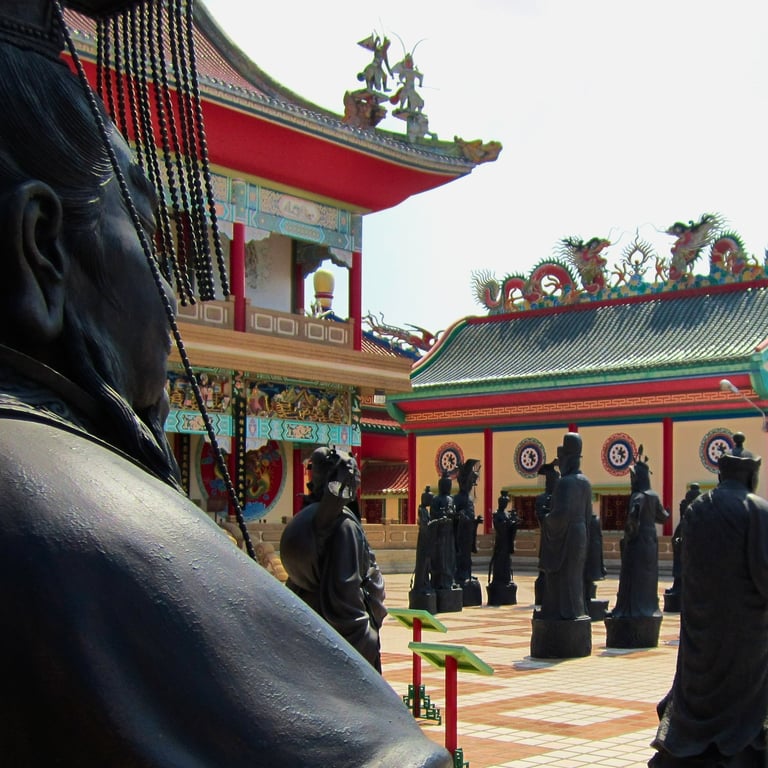
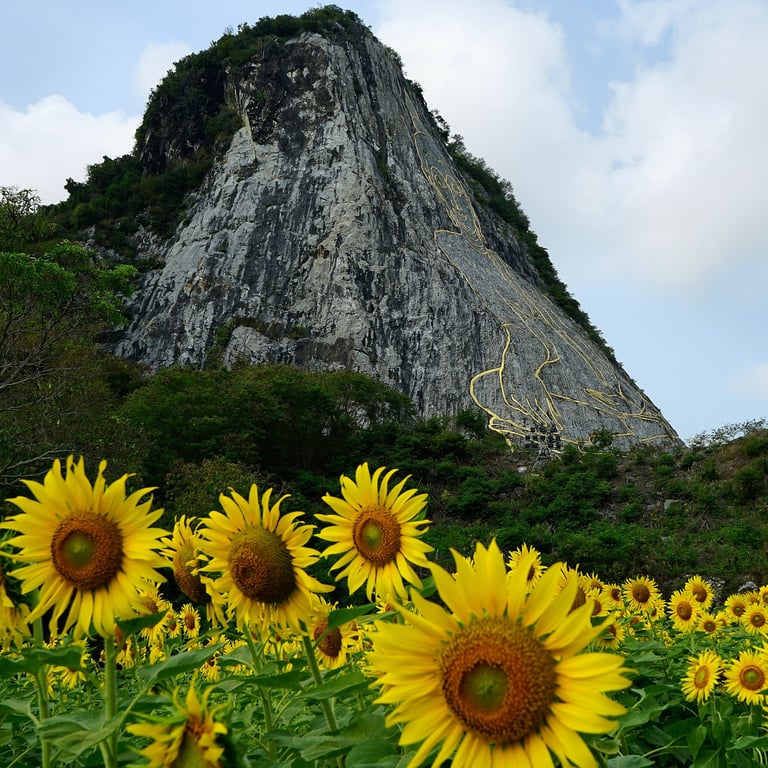
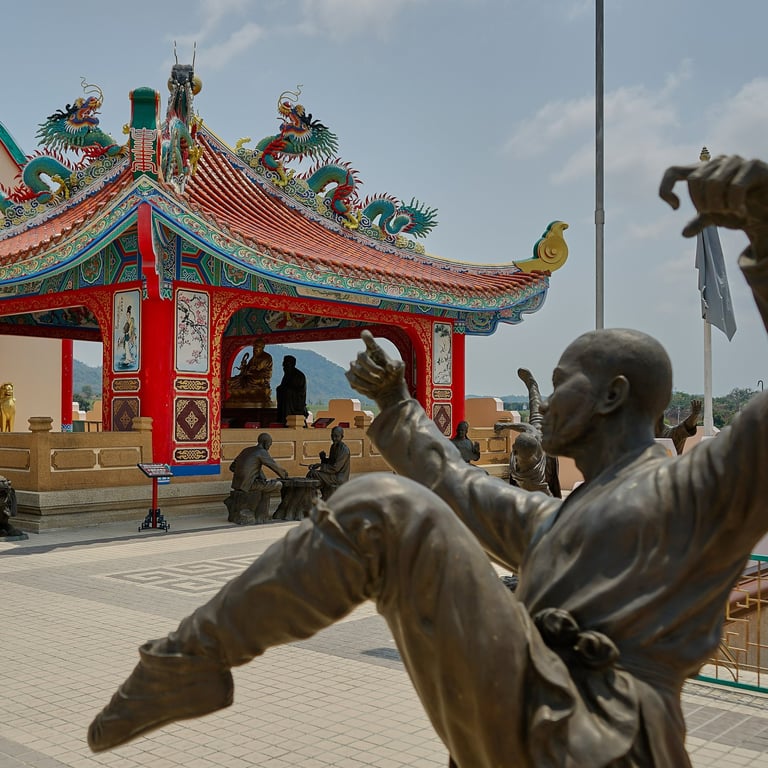
wat pha Nam Thip THeP, roi et
TLC alert
Wat Pha Nam Thip Thep Prasit Wanaram is located 90 kms north-east of Roi Et, on a huge site. The wat sits at the top of a hill and is dominated by one of Thailand’s largest pagodas: Phra Maha Chedi Chai Mongkol. After parking, you take a golf-cart up to the entrance where, once inside, you are facing the main chedi which is surrounded by six minor ones and galleries containing rows of Buddha statues. Once inside the main chedi, you ascend to different levels via the stairwells, the final one being a spiral staircase which narrows scarily as it approaches the ceiling. The interior is beautifully decorated with gold inlay and stained-glass windows. Outside, the grounds are so huge that you would need an army of workers constantly on duty to stay on top of maintenance. Sadly, the site is rather careworn. Having said that, it is impressive and definitely worth a visit.
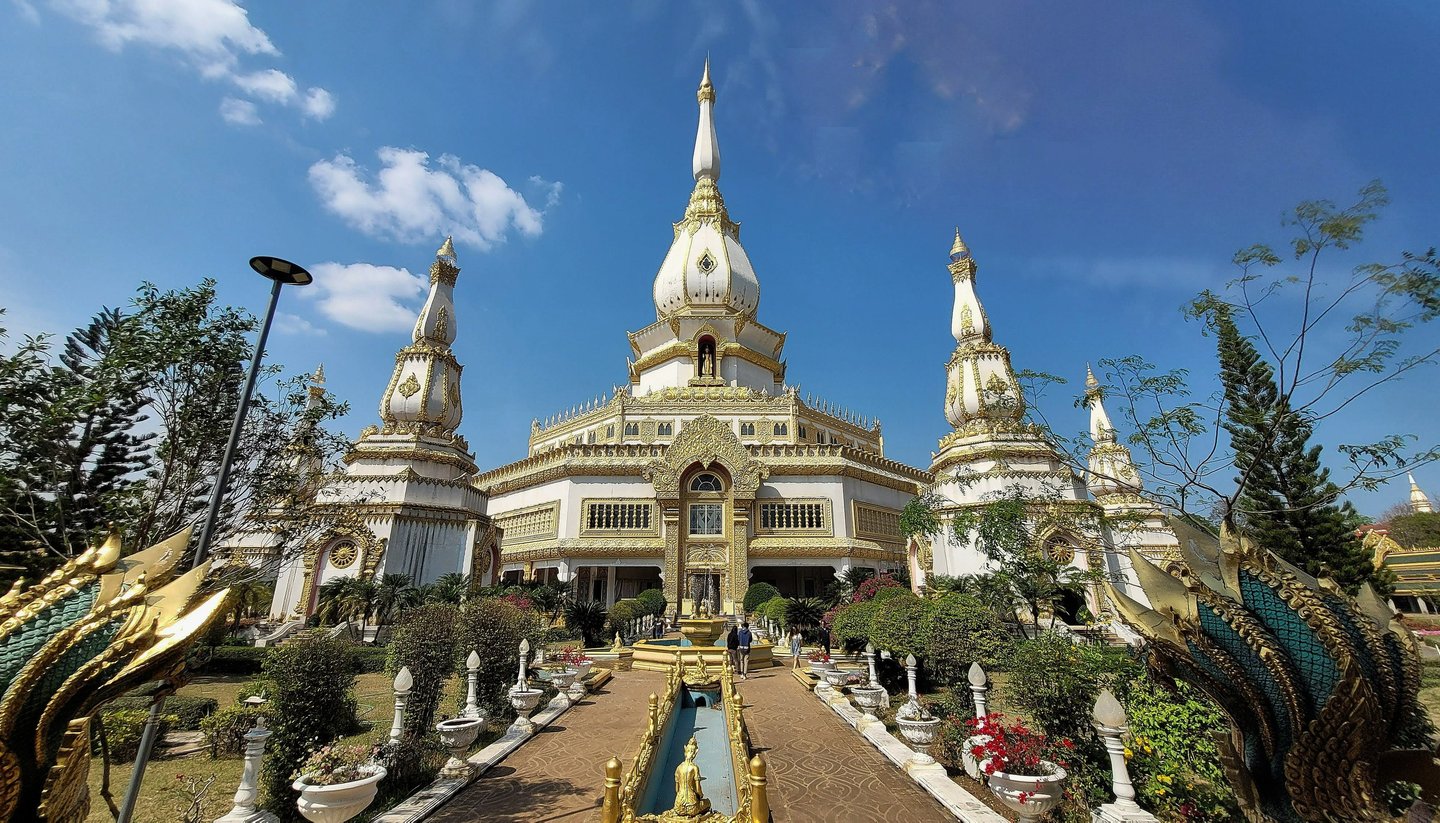

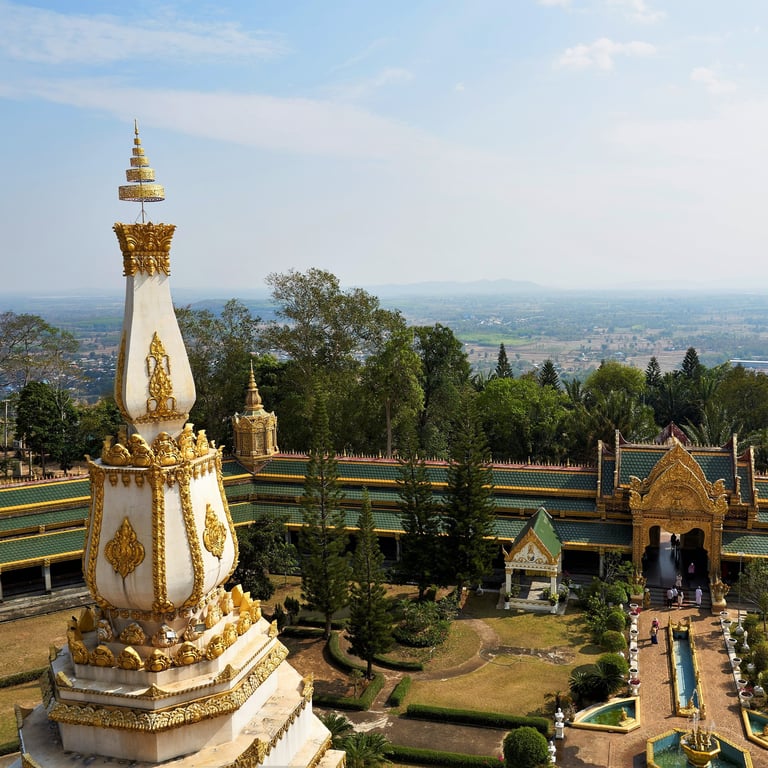
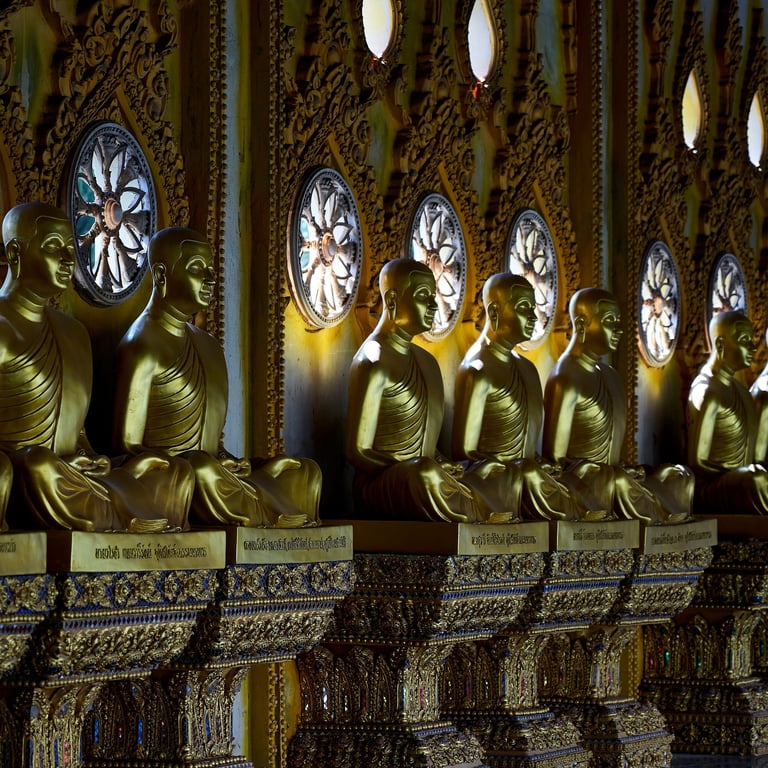
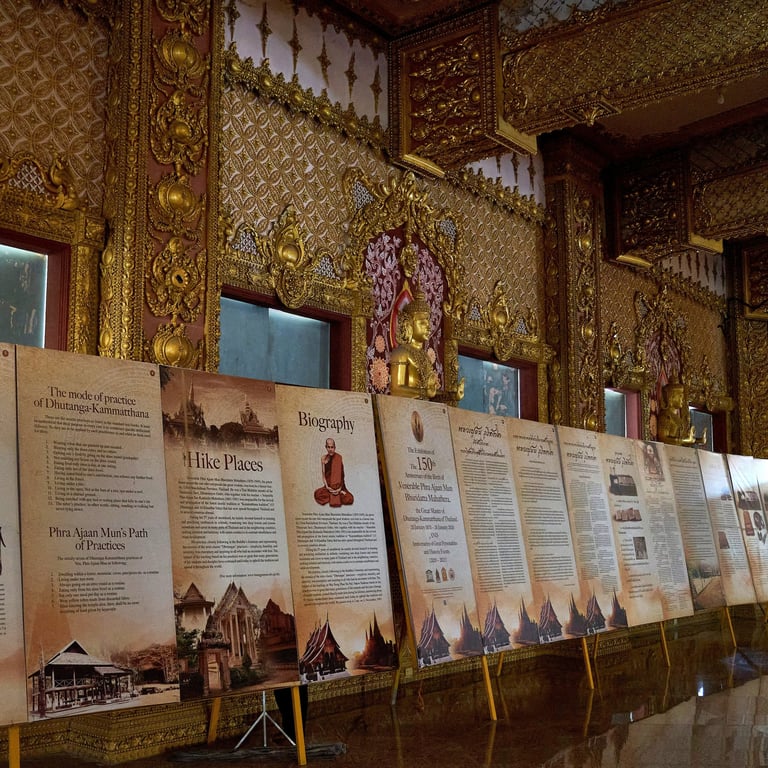
asorm phrom thada, chiang mai
Nepalese style
Phrom Thada Ashram is a centre for meditation and Buddhist teaching, located 65 kms south of Chiang Mai. It is the only wat in the north of Thailand built in Nepalese style; the central stupa is a smaller version of the Bodhnath in Kathmandu. Elements of both Buddhist and Hindu worship are evident as you walk around. Set on a hill, surrounded by rice paddies, the ashram is a calm, if a little strange, experience.
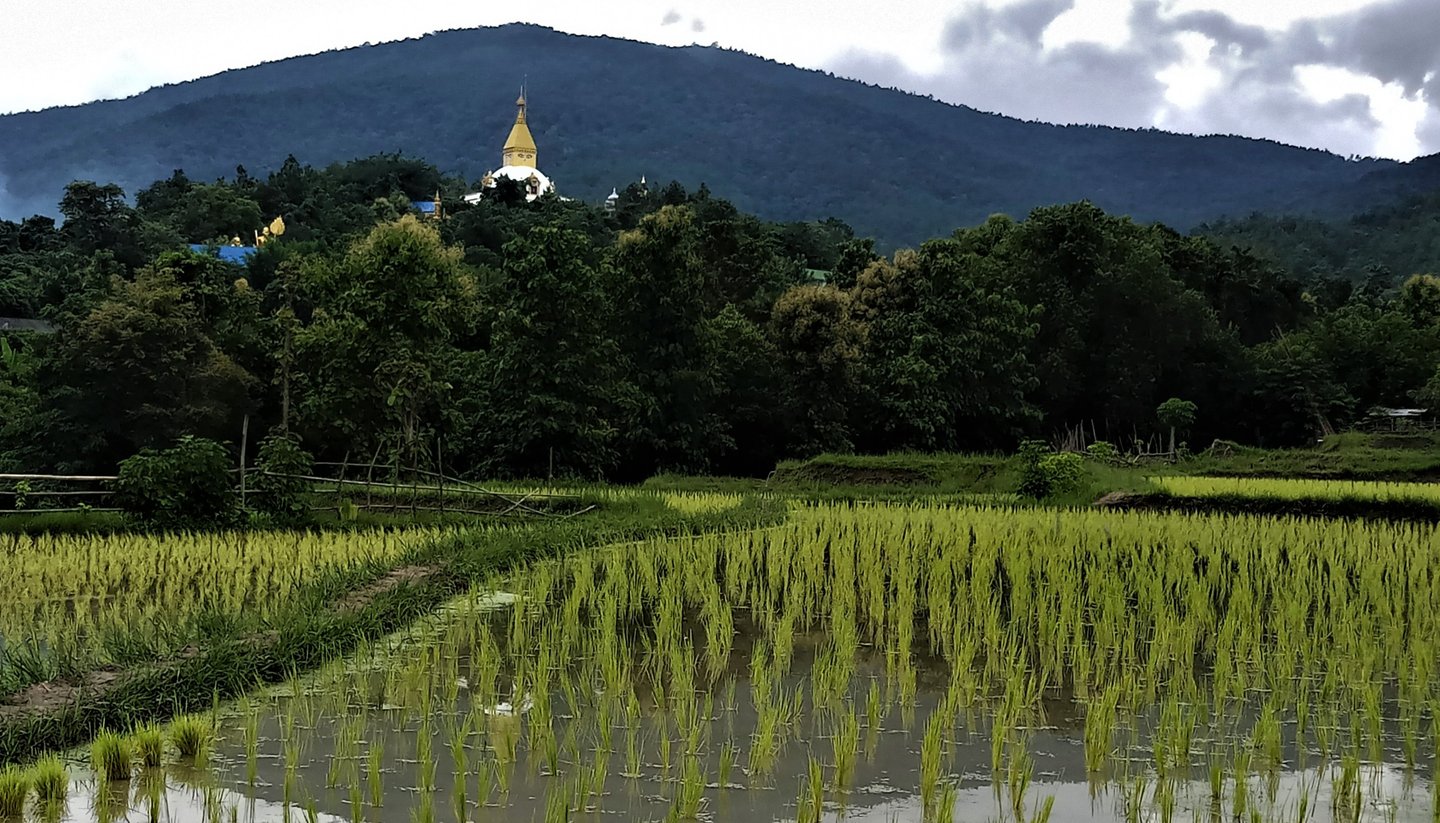

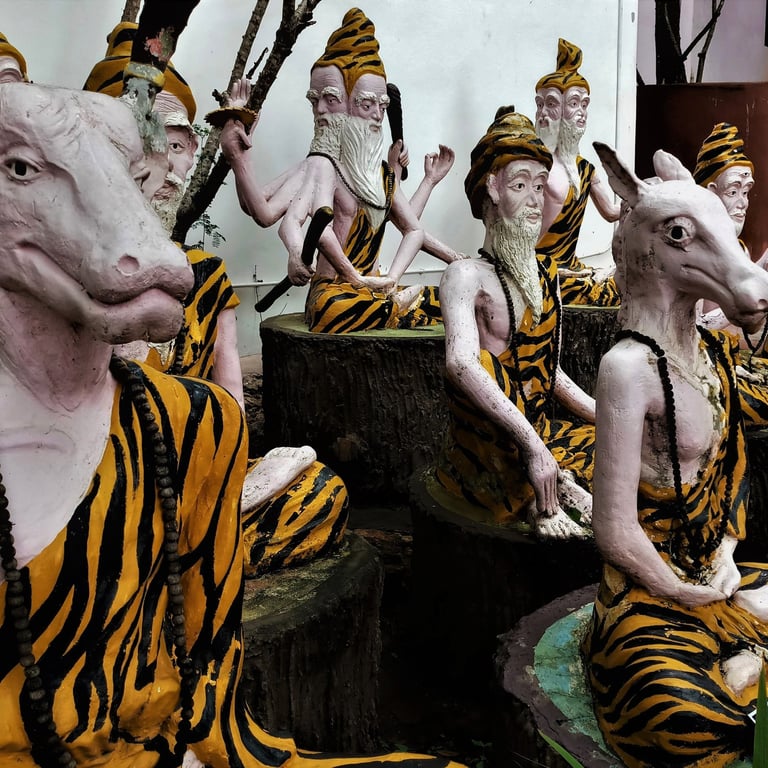
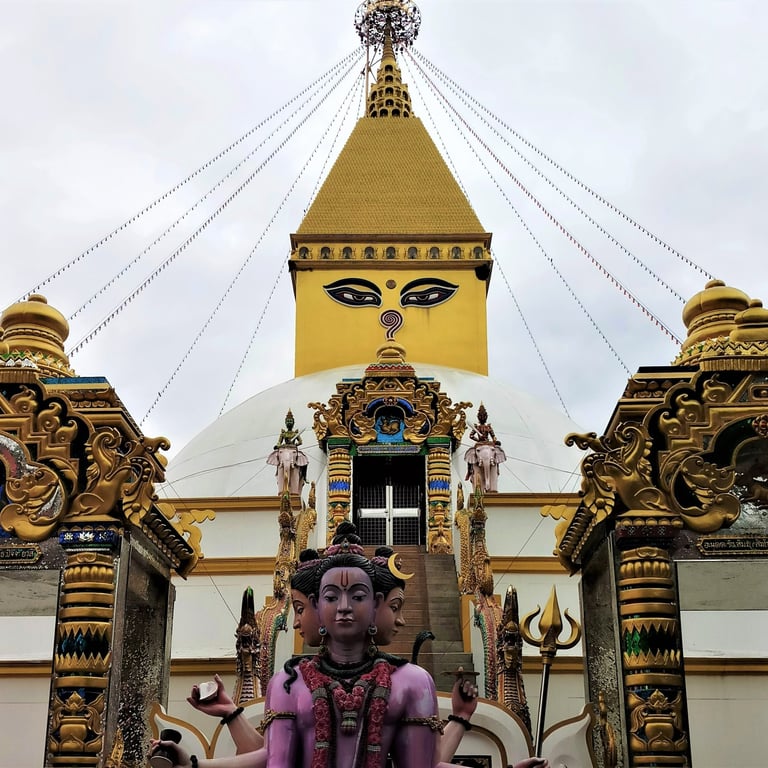
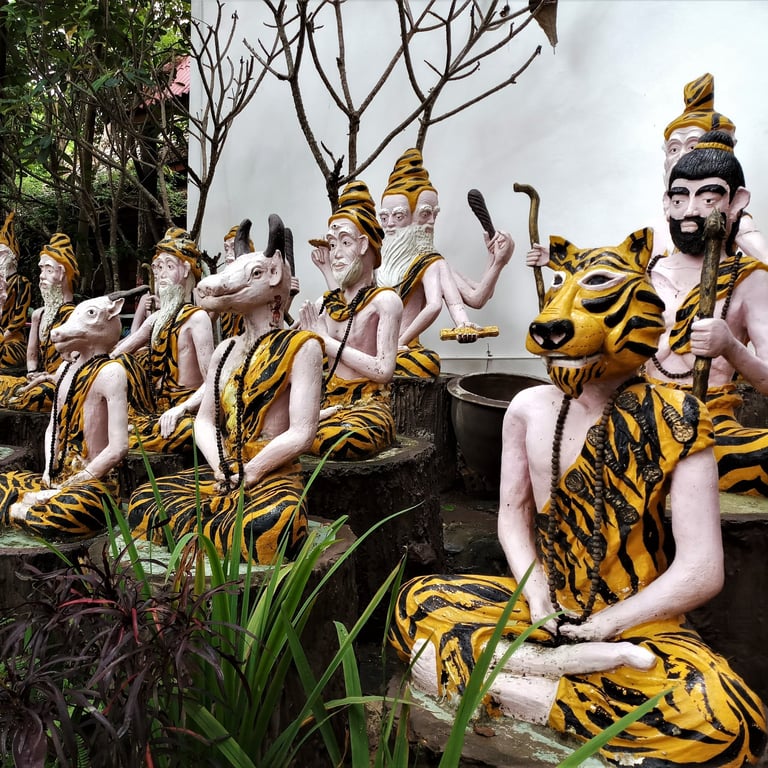
wat paknam phasi charoen, bangkok
Now you see it...
The huge 70-metre tall Buddha dominates the skyline across the Chao Phraya River and is clearly visible from the elevated platform at nearby Bang Phai BTS Station (bottom right picture). Once you are down at street level, it is obscured by humdrum suburban buildings with not even the occasional glimpse until you are almost upon it. The wat is not on the main river but on a tributary khlong, and this approach by long-tail boat is probably the way to go, as part of a multi-stop river itinerary.
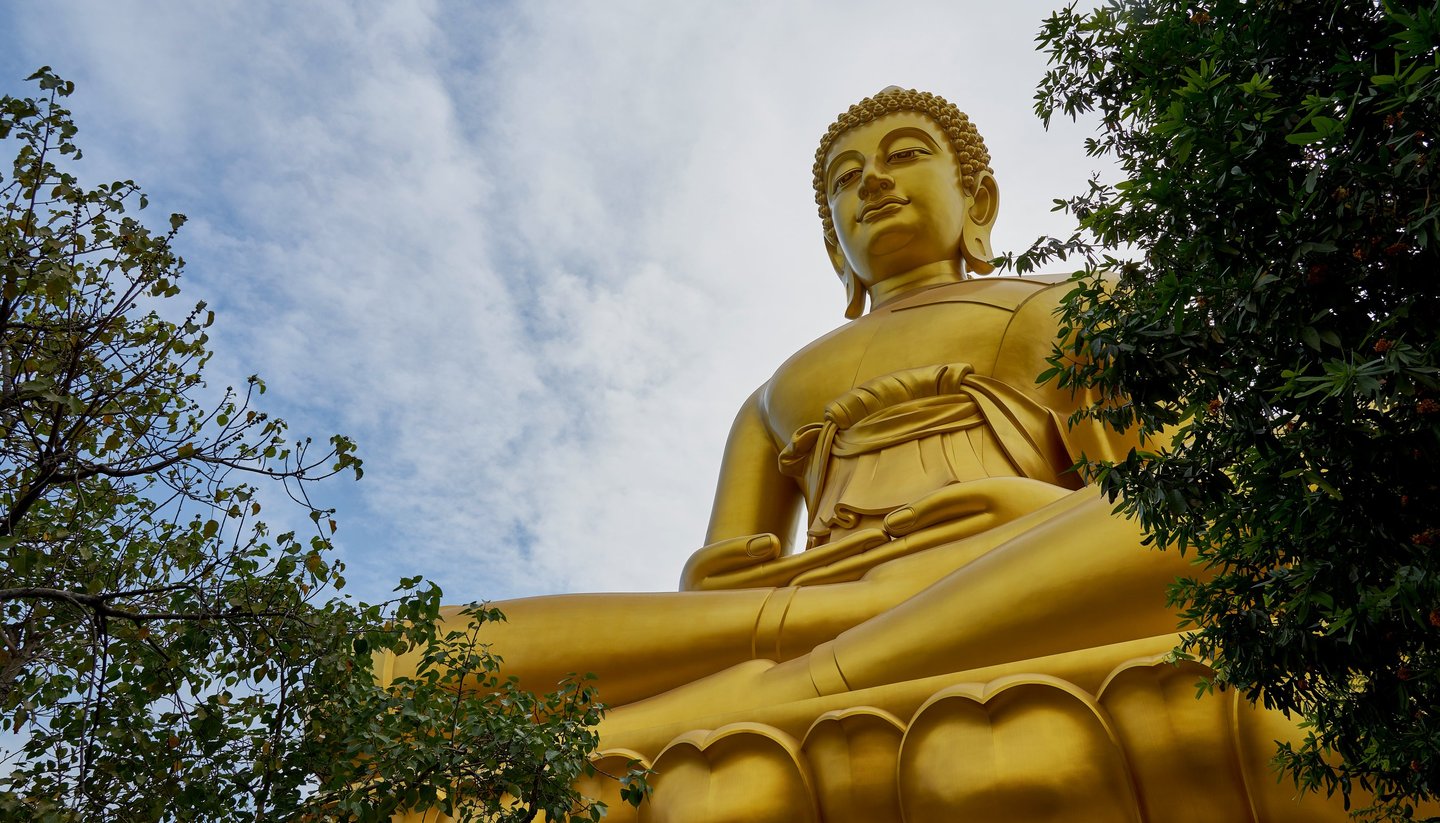

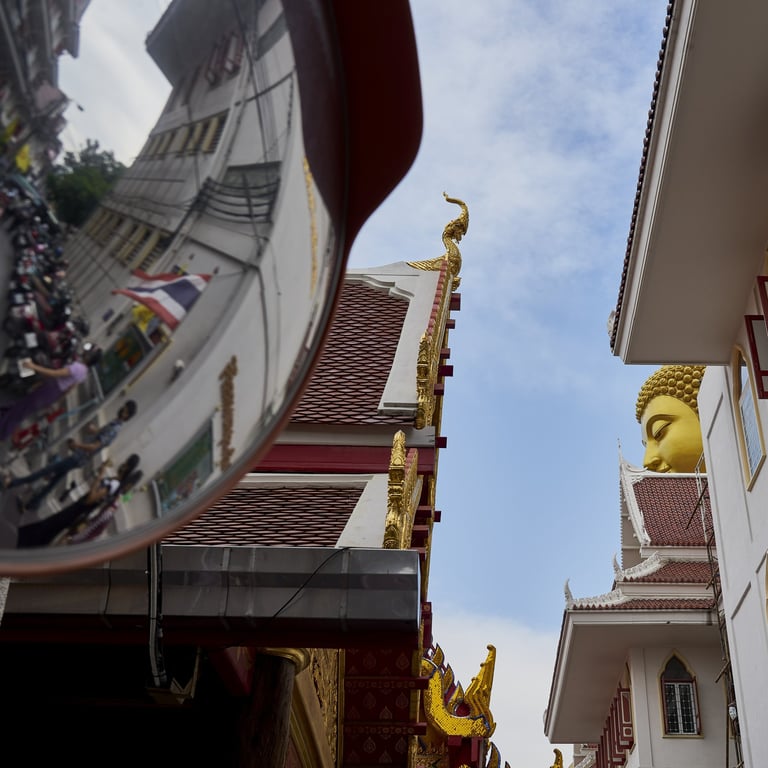
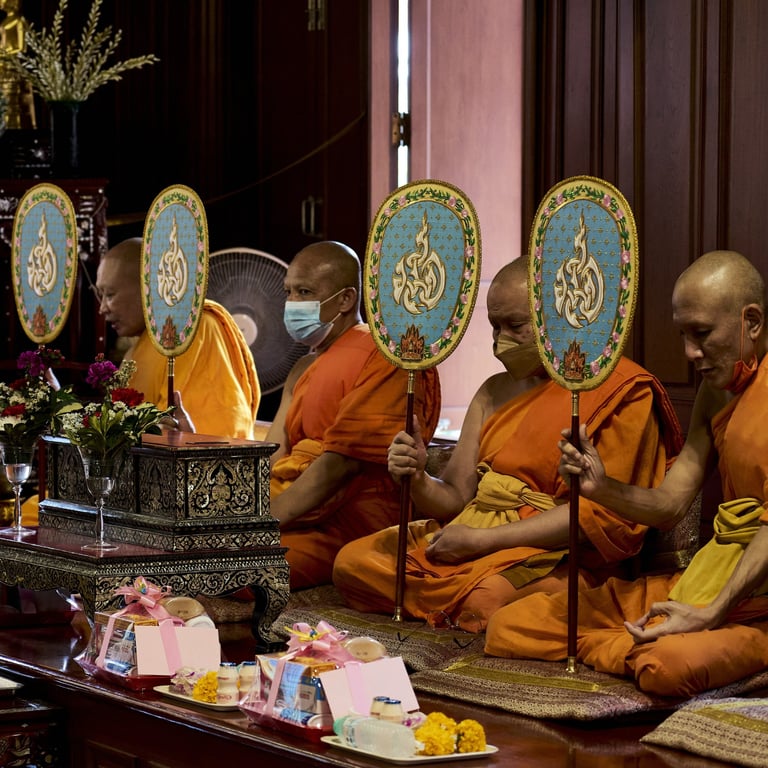
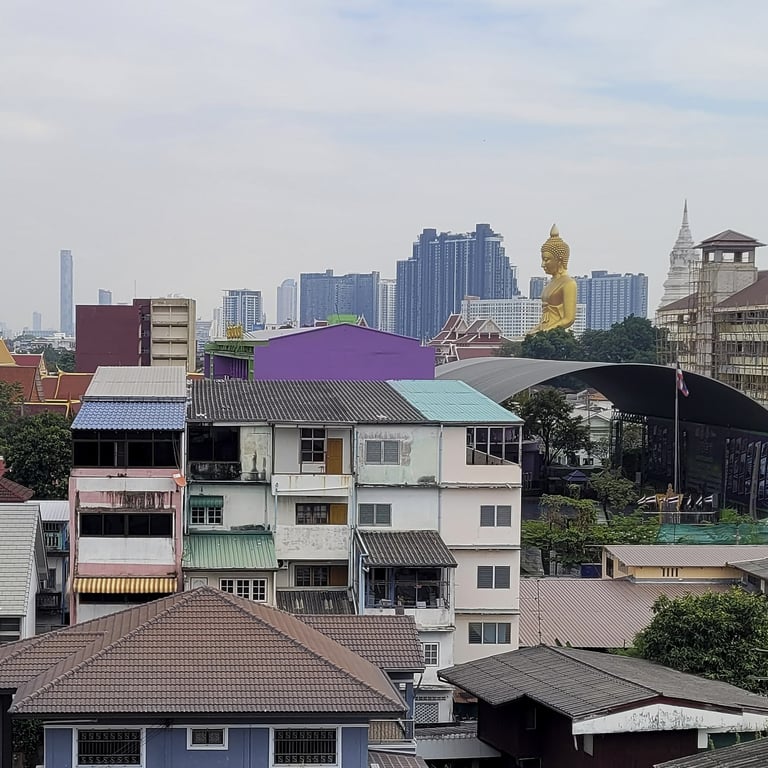
wat phra that phanom, nakhon phanom
Holy chedi
Wat Phra That Phanom Woramahawihan, located 50 kms south of Nakhon Phanom, is one of the most important wats in north-east Thailand. The main chedi, 57 metres tall, in Laotian style, is visible from some distance away. The chedi contains a holy relic (the Buddha’s breastbone), along with 110 kg of gold, hence the wat's fame. The site receives a regular flow of pilgrims; all seem to congregate in front of the chedi to have their photo taken, such is its holy status. Hawkers abound: photographers mainly, but also youngsters selling this and that or offering you a caged bird to release.
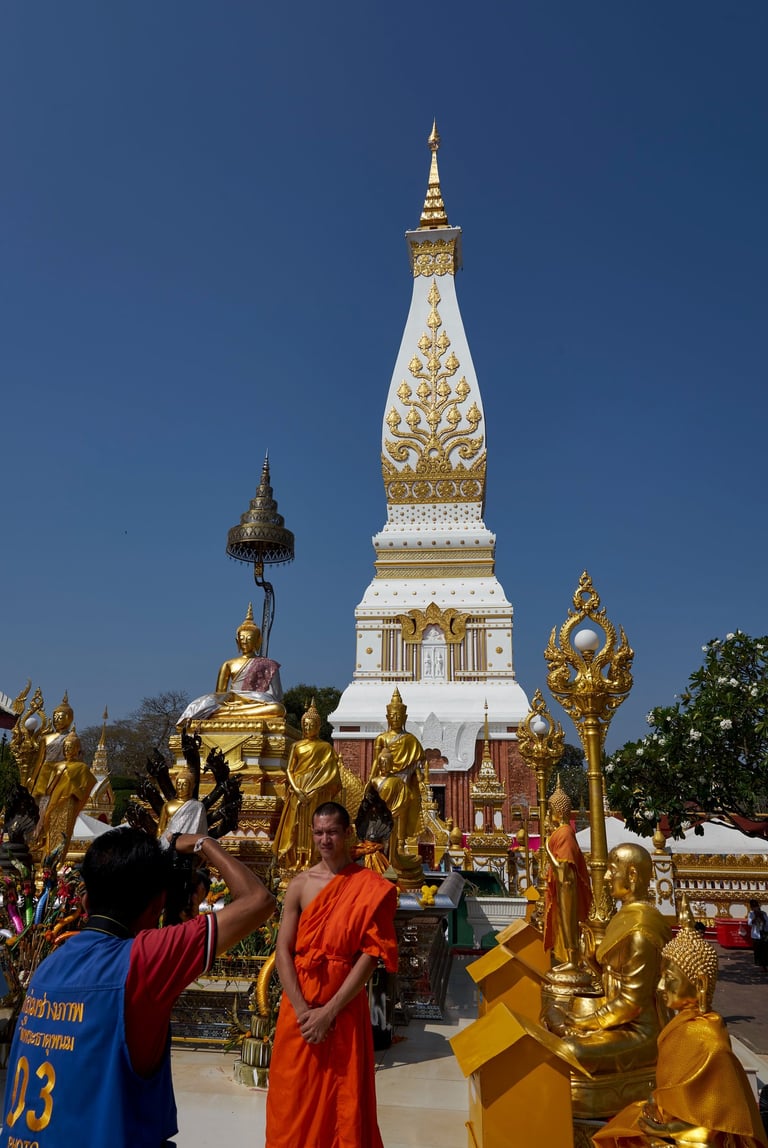

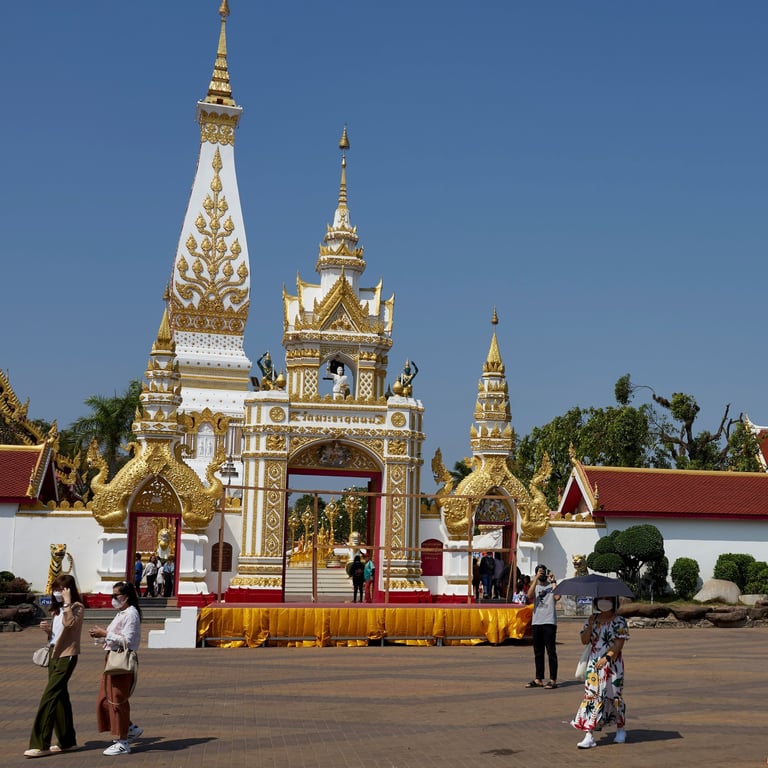
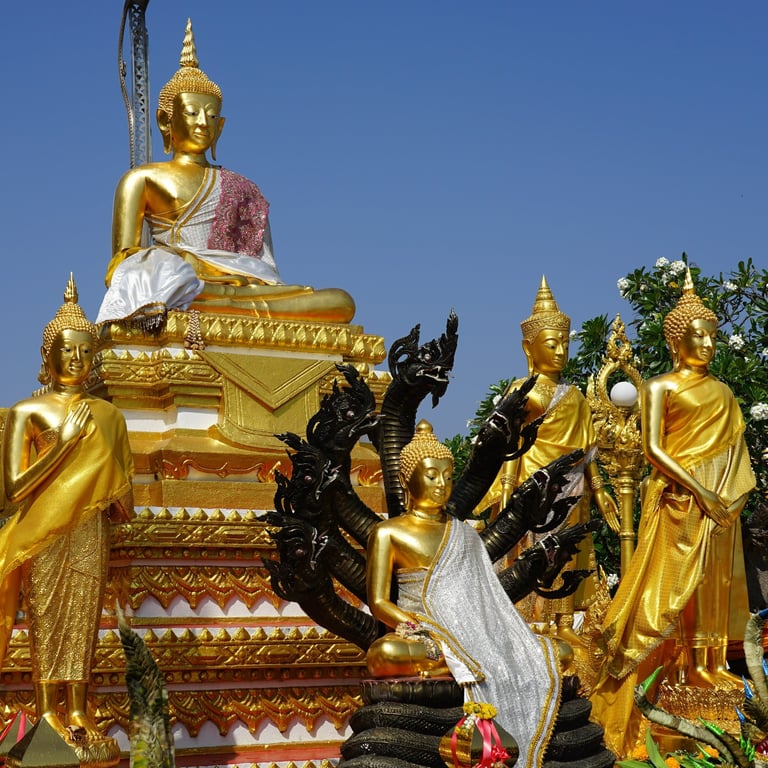
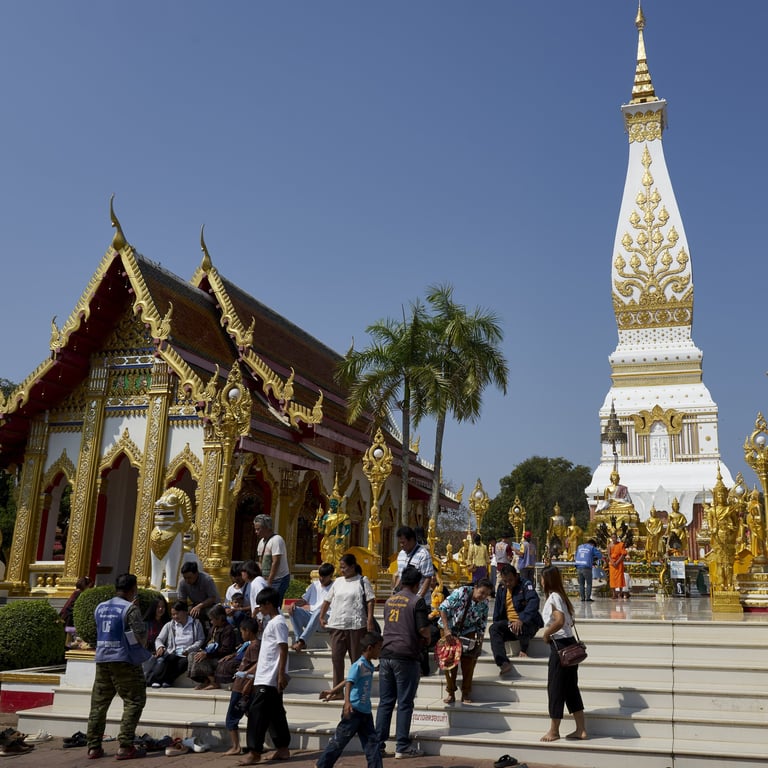
wat intharawihan, bangkok
Community at work
Wandering around the wat I happened upon some community work going on at the periphery. Young folks were training under supervision in giving haircuts and manicures. What a great idea. Regular folks were lined up to get a free session and no doubt save a few baht. What’s the worst thing that could happen? Electric shaver runs amok? Frosted pink wasn’t what you pointed at? No problem, with the overseer hovering to correct mistakes. And anyway, if the haircut was a total disaster, you would be well placed to become a monk for a month. ‘Want a haircut?’ the lady shouted to me. ‘Por lao,’ I replied, taking off my hat: ‘Enough already,’ in reference to my less than abundant thatch.
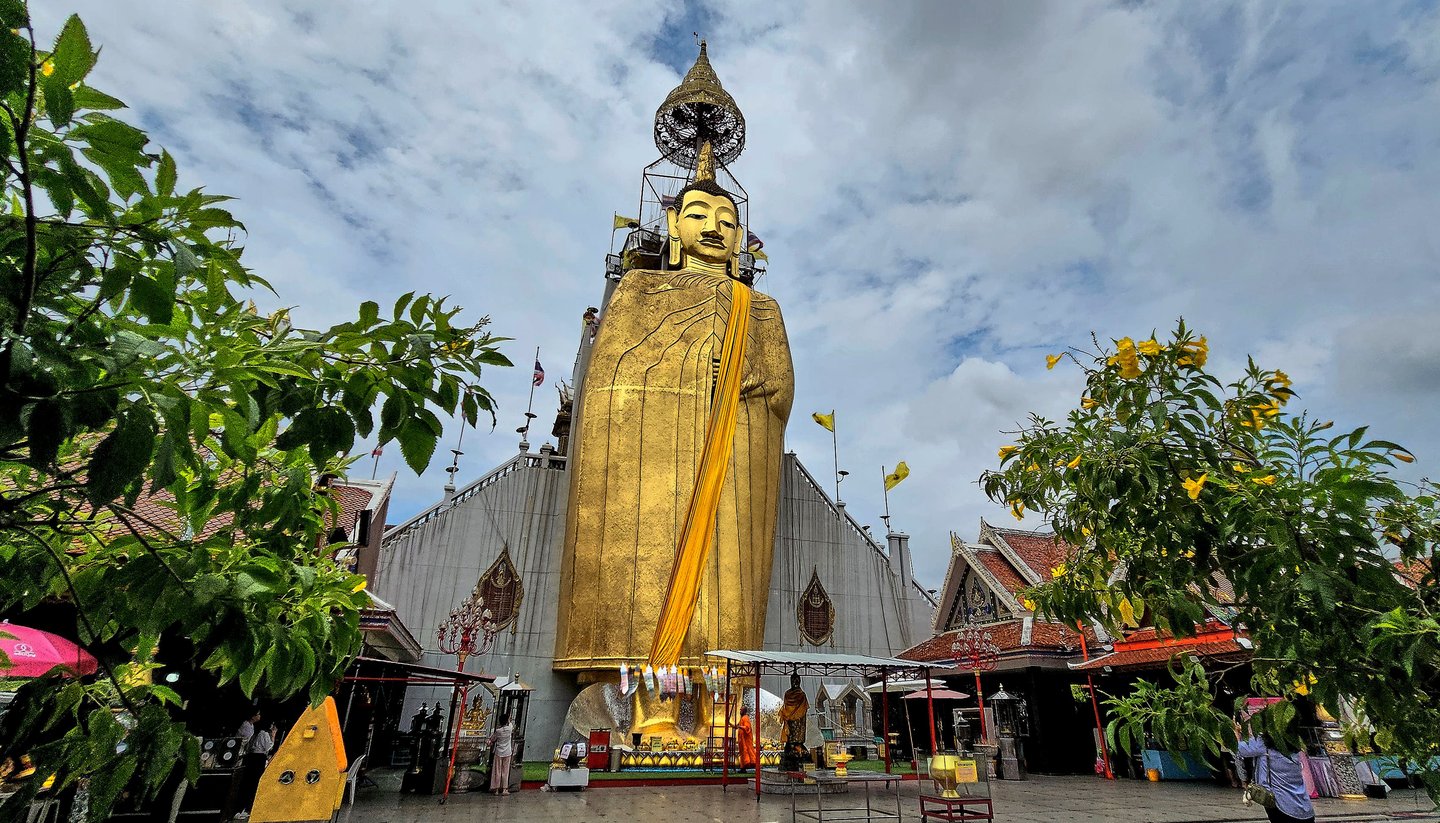

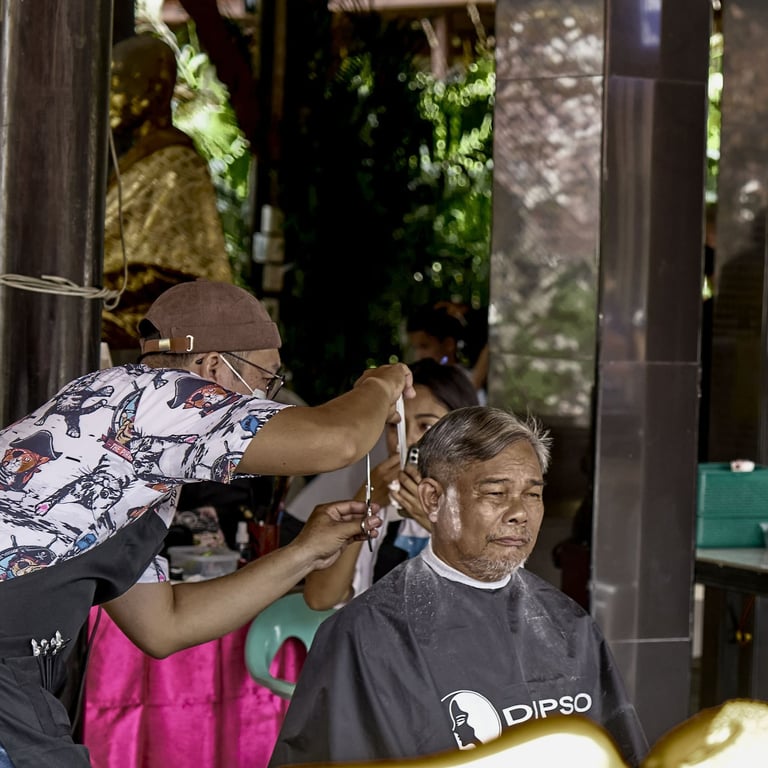
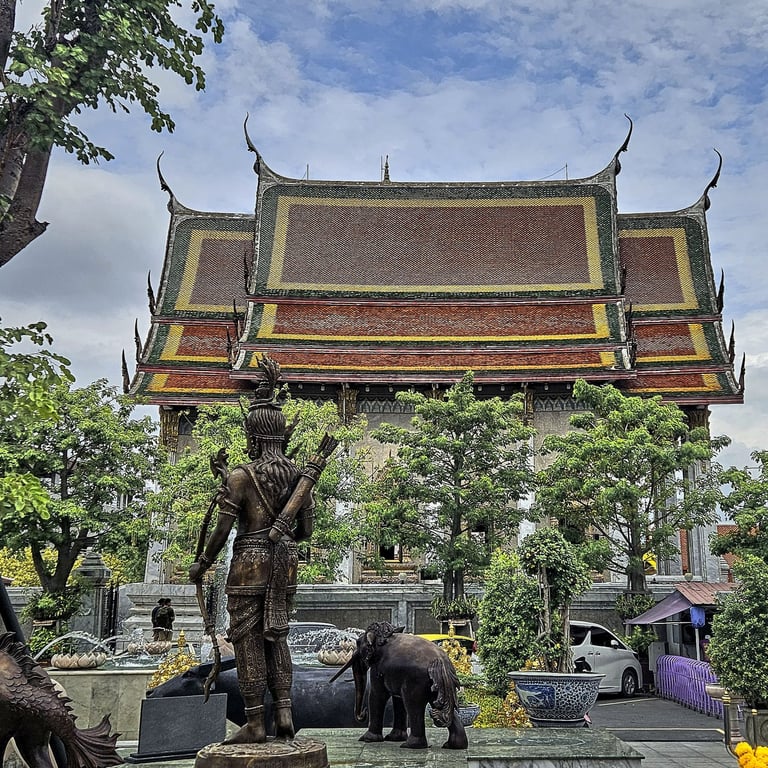
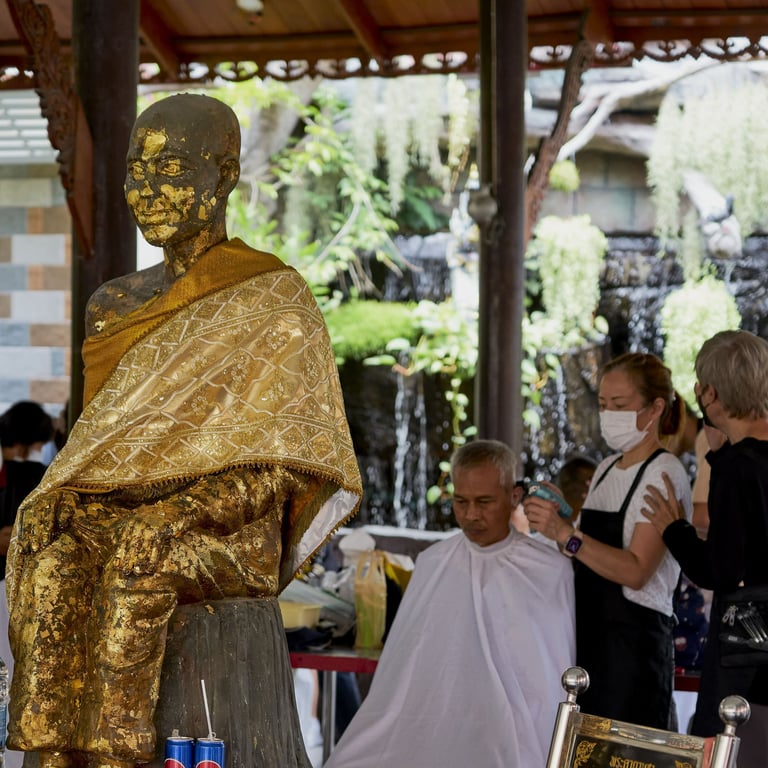
wat phra that doi suthep, chiang mai
High on the mountain
Doi Suthep is a mountain 15 kms west of Chiang Mai, it stands at 5,499 feet (1,676m). High up on the mountain is Wat Phra That Doi Suthep Ratchaworawihan (usually referred to as just 'Doi Suthep') at 3,478 feet, and dating from 1383. The wat's relic is said to be part of Buddha's shoulder bone, making it a sacred site visited by hundreds of thousands each year. The temple grounds look down on Chiang Mai airport; you can watch planes take off to the north before circling east. Be careful with the steep drive up, or just take a baht bus. Motorbikes are a no-no for the inexperienced, but cyclists often grind their way up for the thrill of the descent.
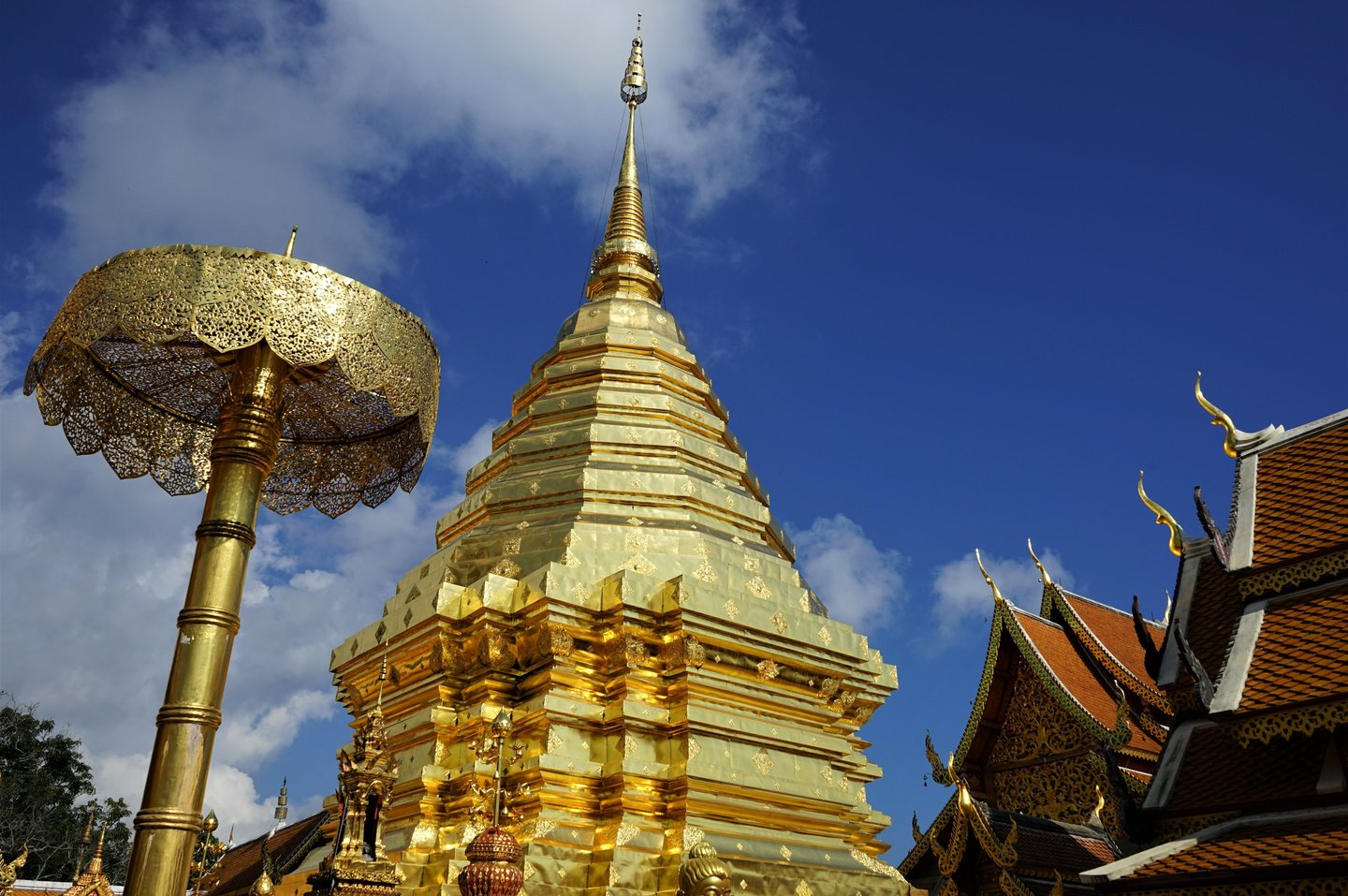

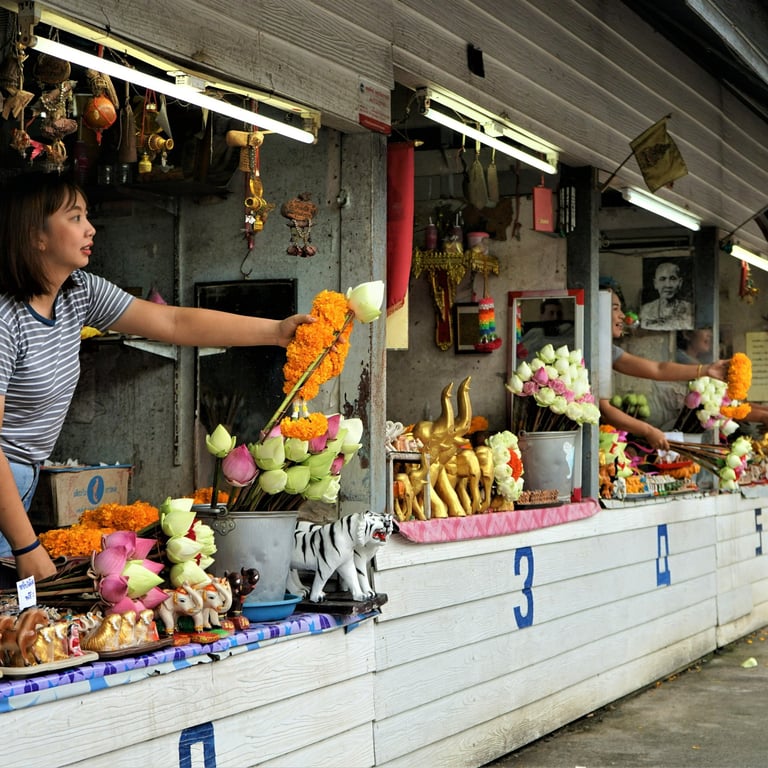
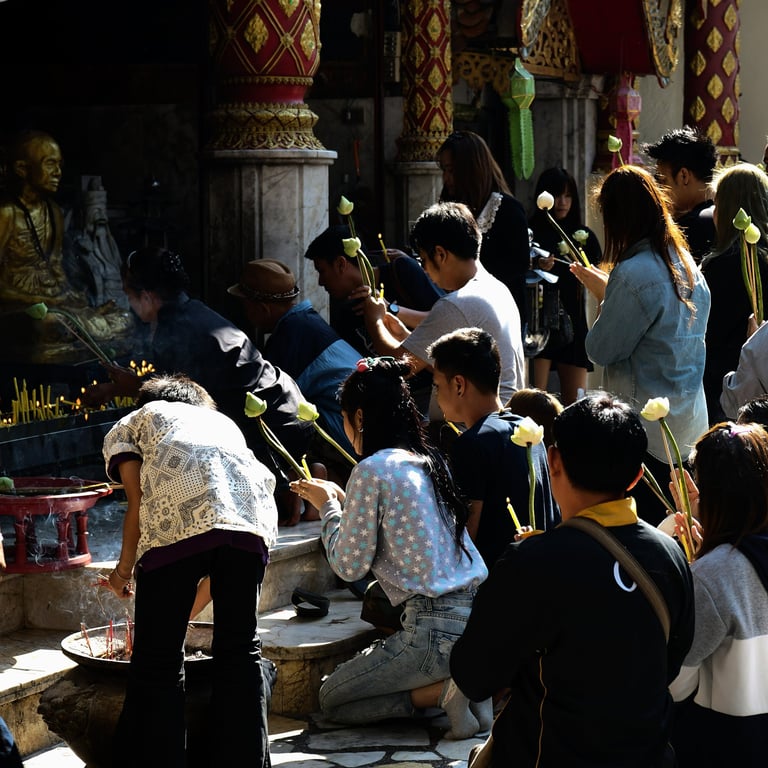
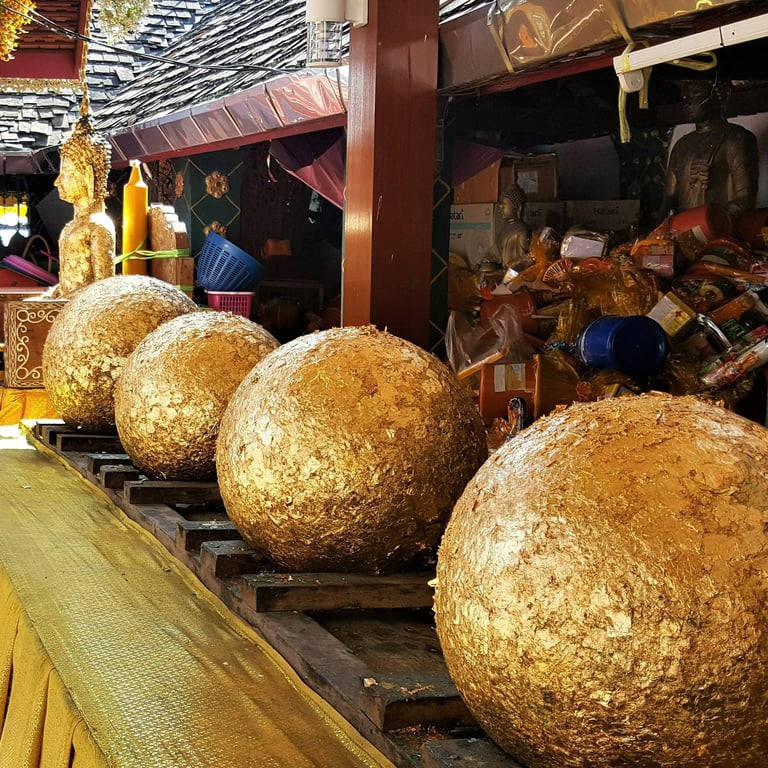
wat yai, phitsanulok
Much revered
Wat Phra Si Rattana Mahathat known locally as ‘Wat Yai’ was founded in 1357. It is famous for its gold Buddha known as Phra Phuttha Chinnarat. This statue’s classical form, with its black background, is considered to be very beautiful, and much copied in other wats. The Buddha statue was cast between the 10th and 14th centuries, with some dispute over the exact date. The wat also features a Khmer-style Prang and draws pilgrims from far and wide.
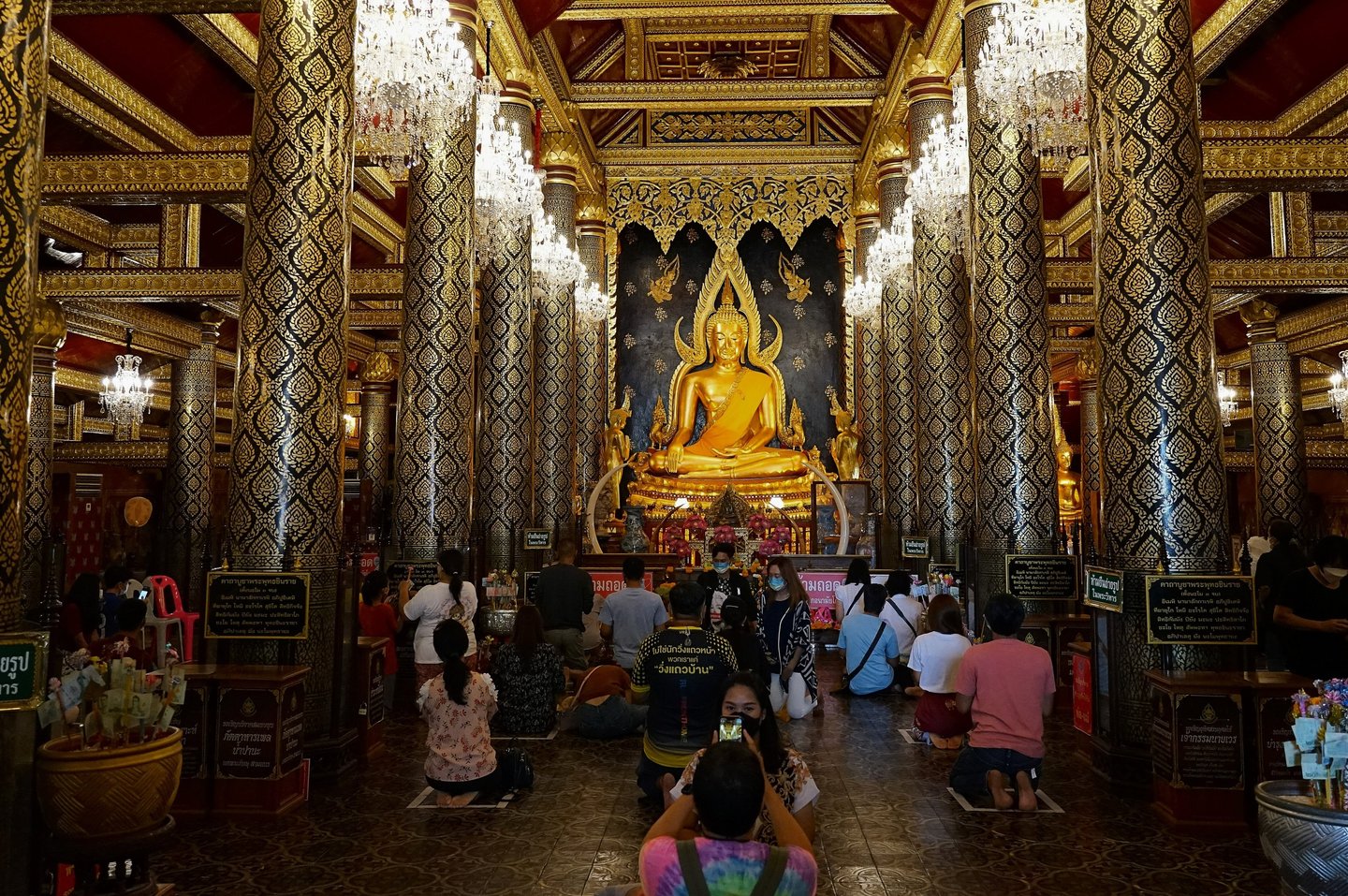

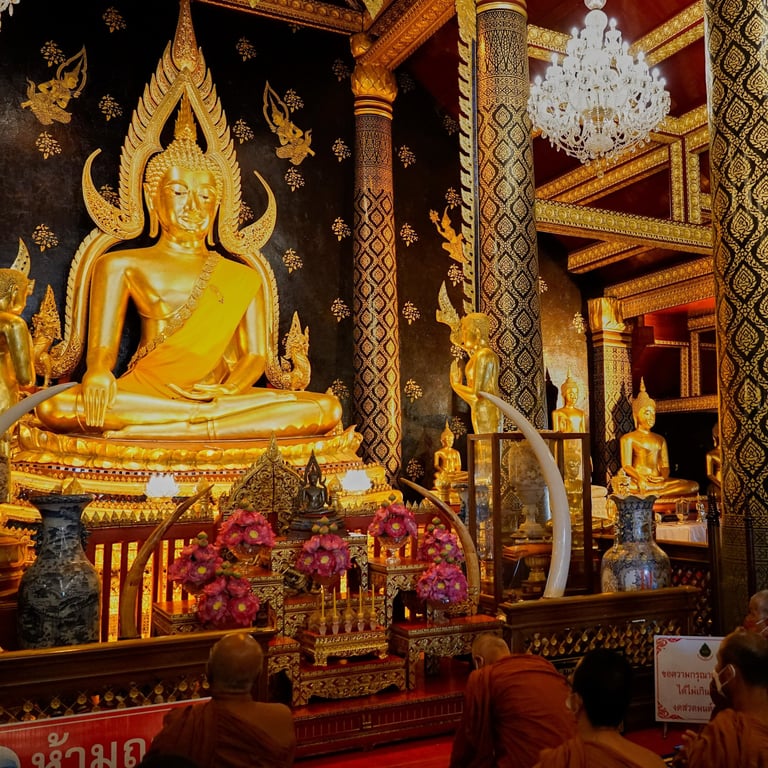
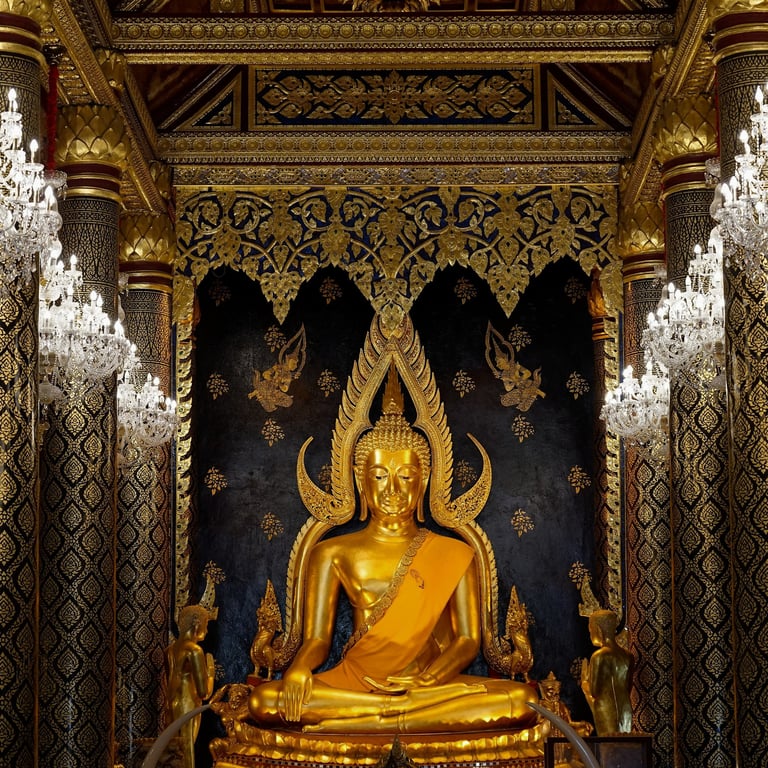
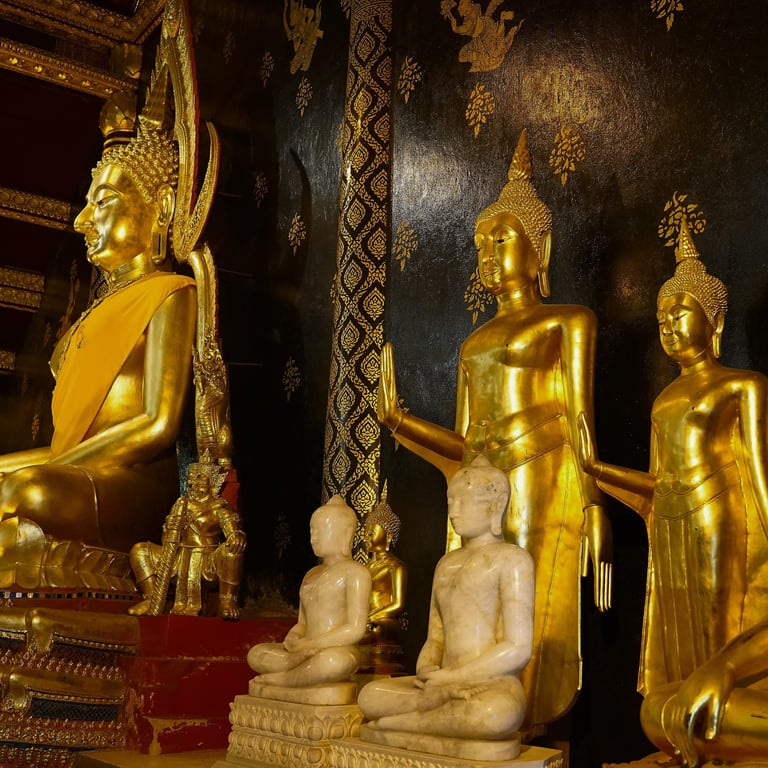
wat min mueang, nan
Ornate ubosot
Right in the town centre, with an unprepossessing entrance, it might be easy to walk straight past this wat. The white stucco exterior is reminiscent of the White Temple in Chiang Rai, while the ornate interior depicting everyday life in Nan is outstanding. The original wat on this very compact site was built in 1857 but later abandoned before eventually being demolished. The new wat was constructed in 1984 and hosts Nan’s three-metre tall city pillar.
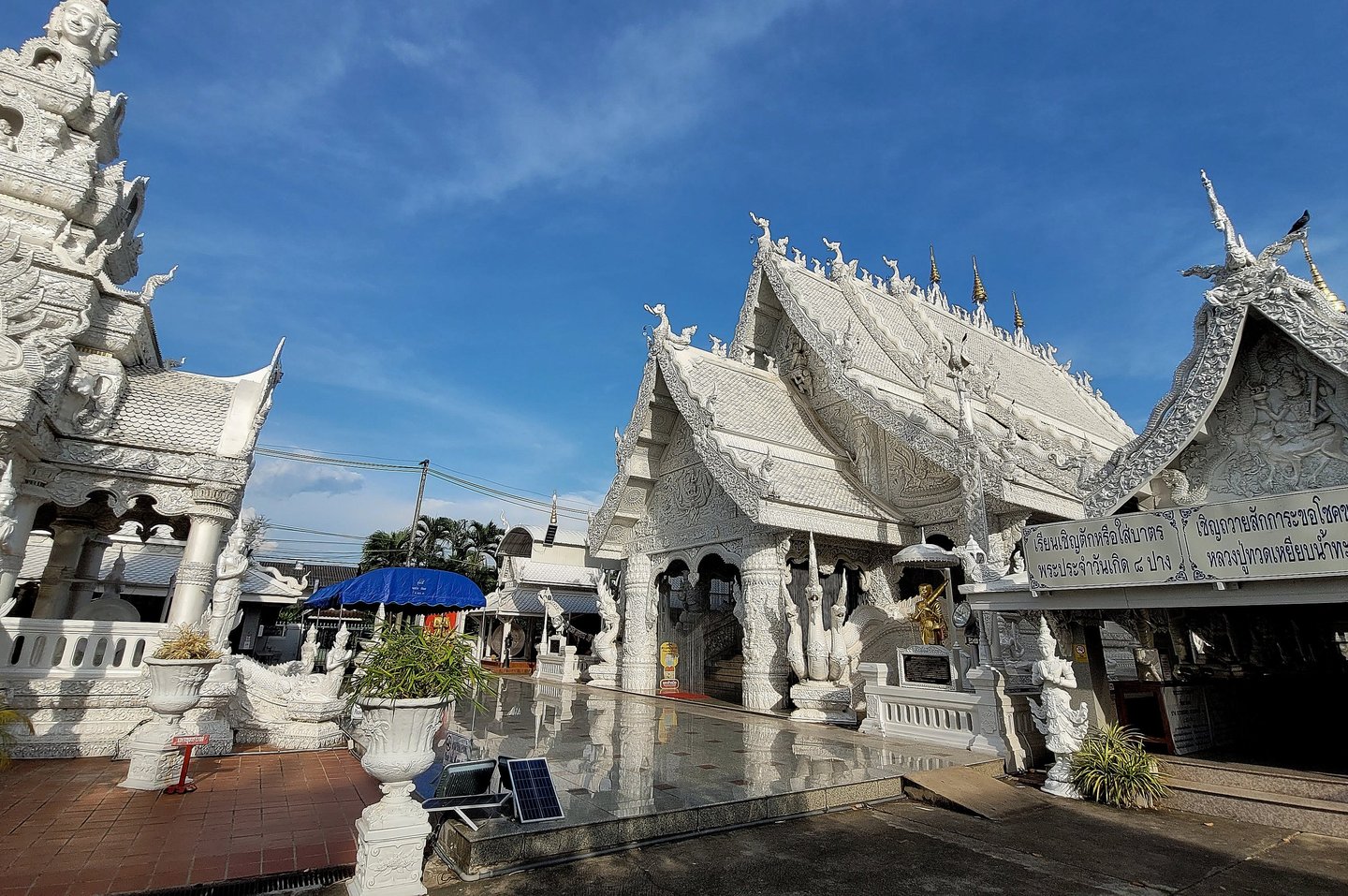

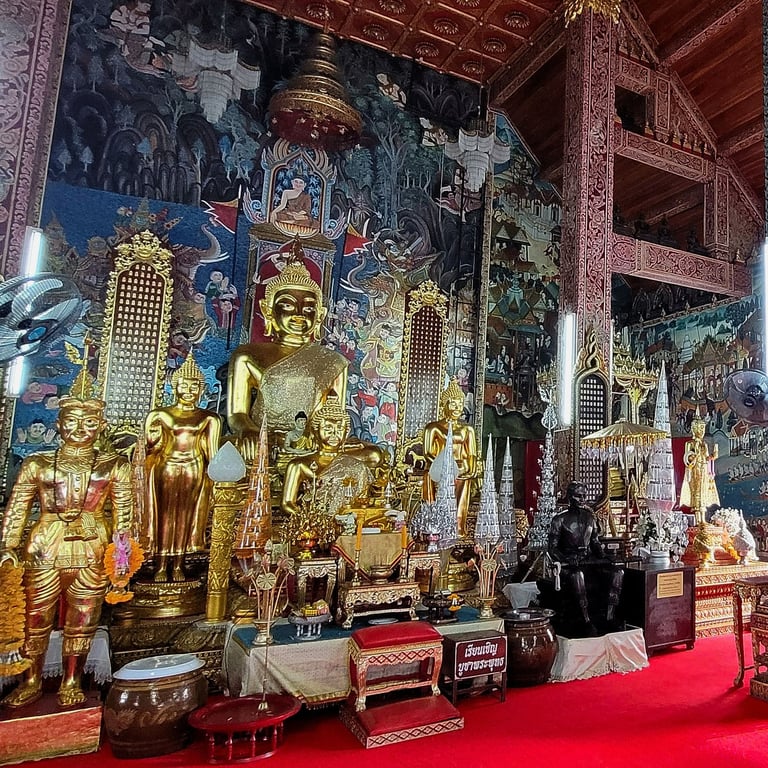
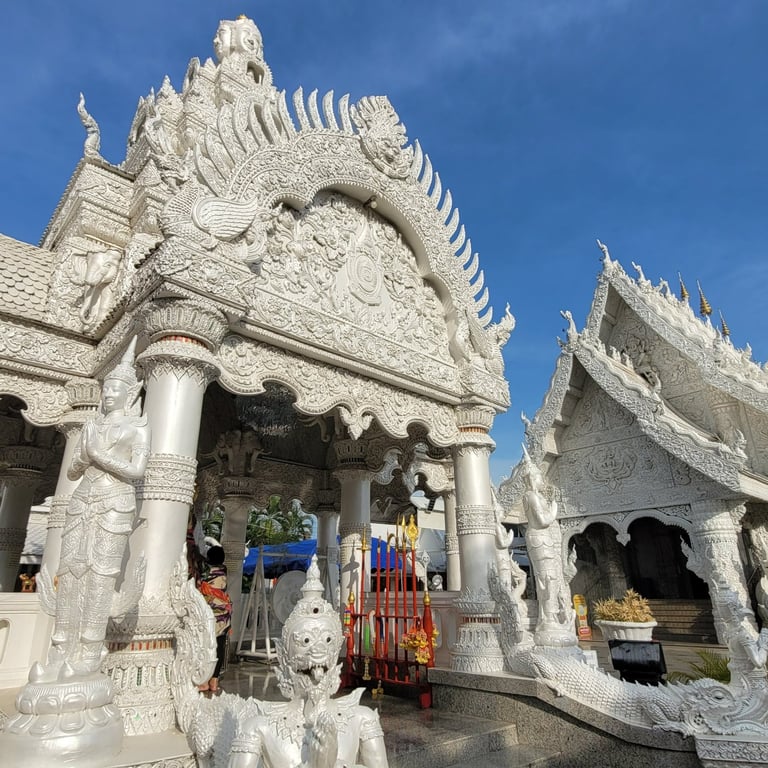
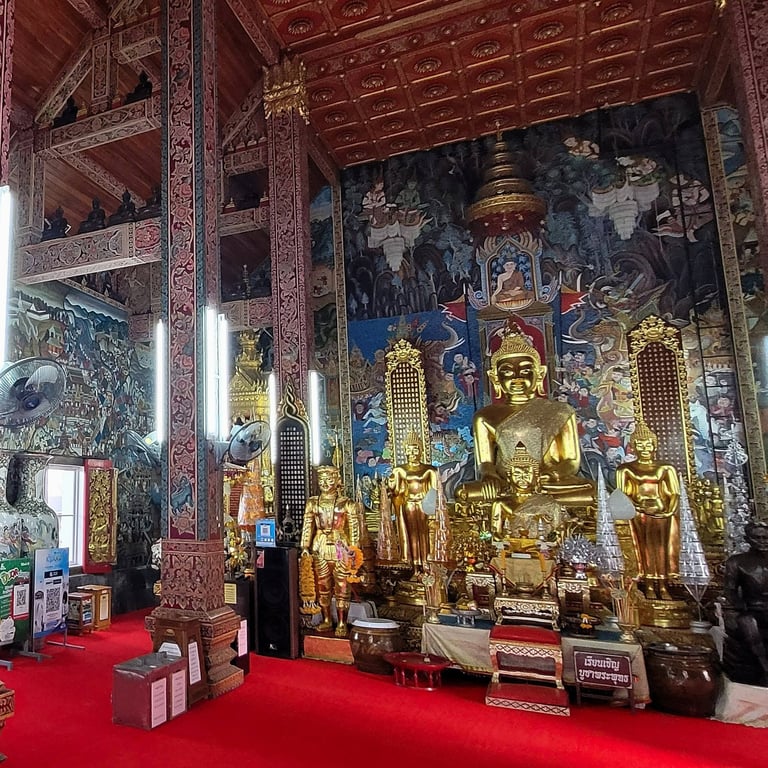
wat bowonniwet, bangkok
Rama IX resting place
Wat Bowonniwet in the centre of Bangkok is the final resting place of two former Chakri Dynasty kings, including Rama IX, King Bhumibol Adulyadej. Rama IX’s ashes are interred under the base of the main Buddha statue which dates from 1357. The wat is also the centre of Thai Theravada Buddhism, where members of the Chakri Dynasty served their monkhood, including Rama IX and Rama X. The grounds are surrounded by colonial-style accommodation, which provides homes for prominent monks. the louvred windows adding a touch of elegance.
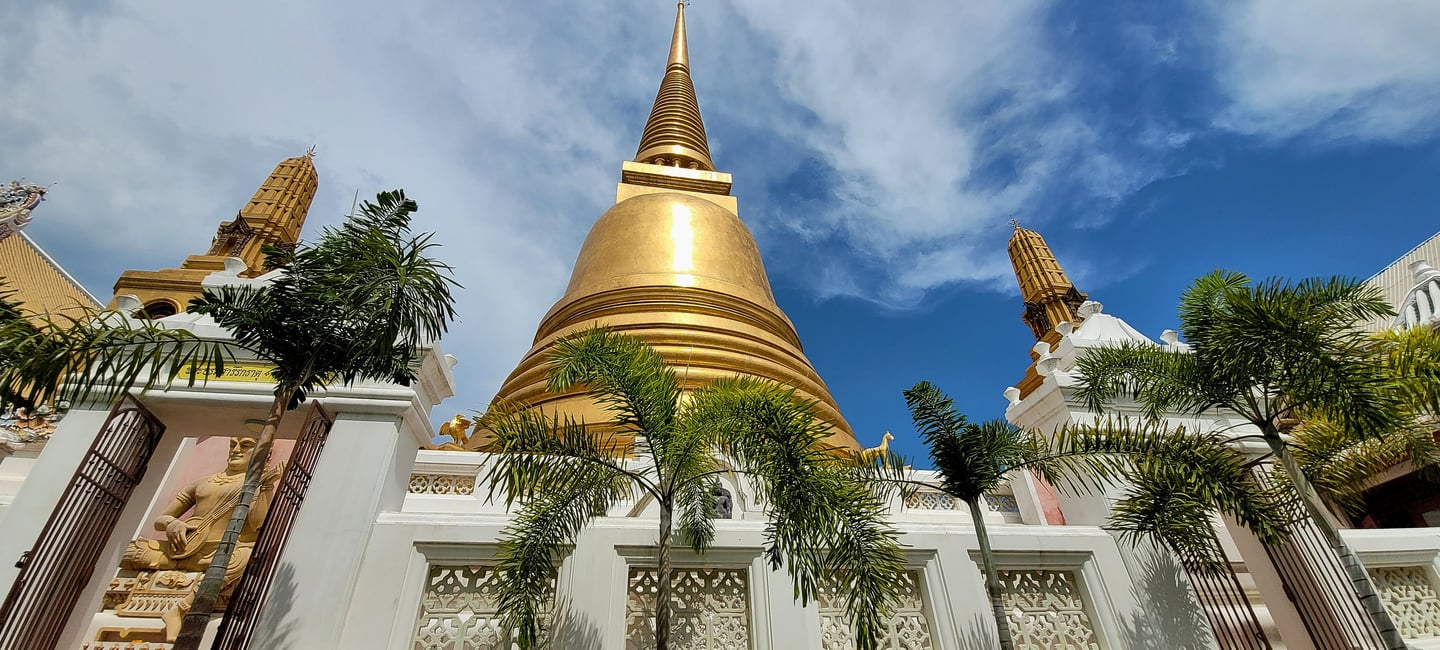

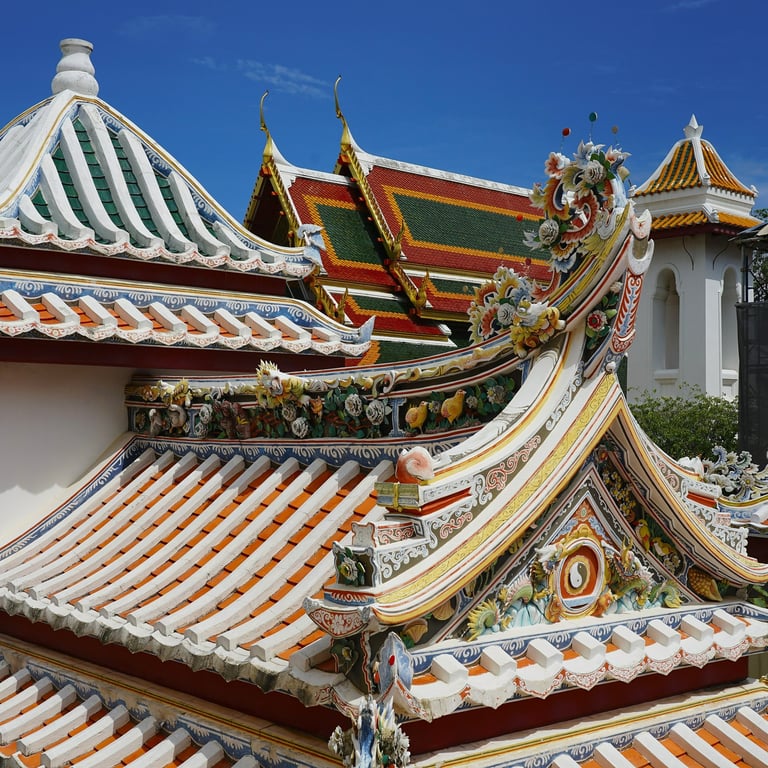
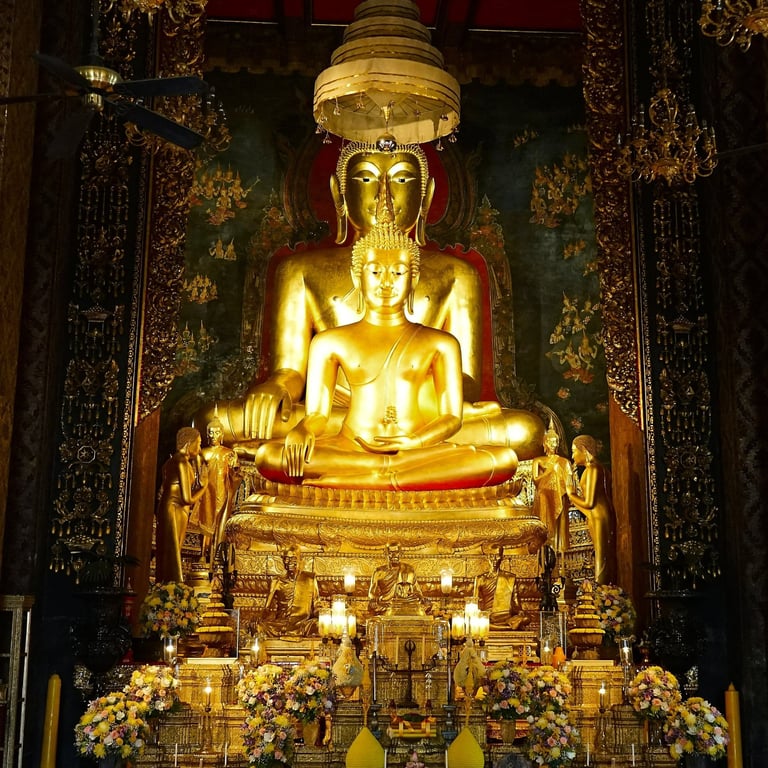
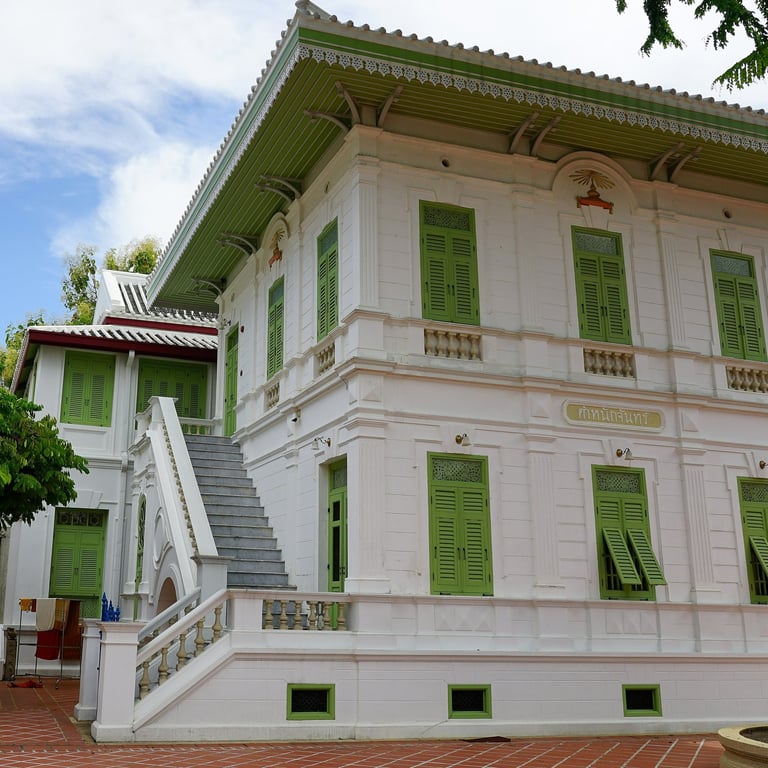
wat marukkha, Nakhon Phanom Province
Pristine throughout
Wat Marukkha Nakhon is situated between Mudkahan and Nakhon Phanom in north-east Thailand, it was built in 1993. The main stupa has a Laotian styled rectangular shape, similar to Phra That Phanom, but of a smaller size, at 50.9 metres tall, and 20 metres wide. It was built in order to celebrate King Rama IX's 50 years on the throne. The grounds are in pristine condition, as are the very ornate interiors. The original site dates from over 300 years ago but was abandoned following flooding.
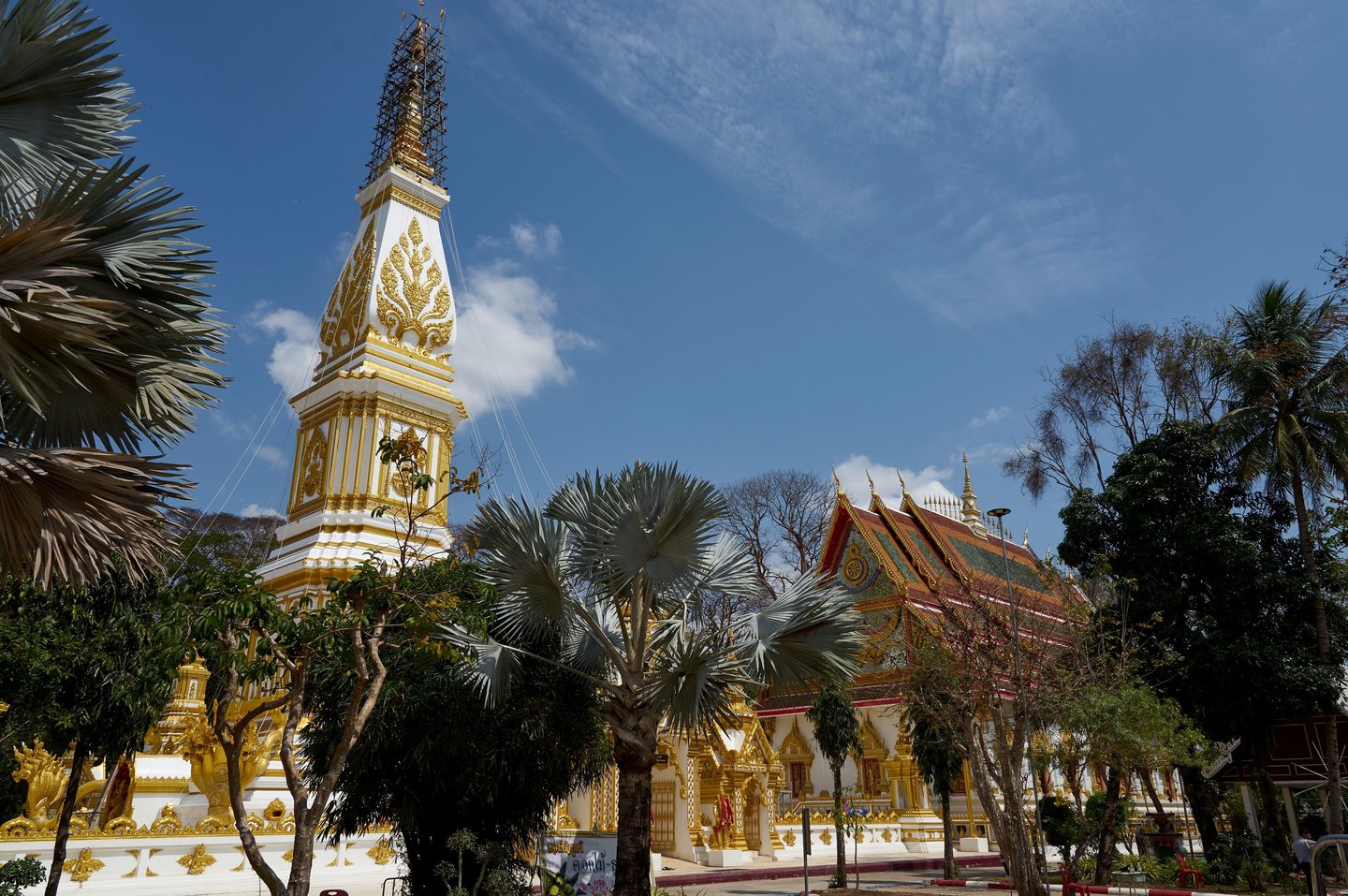

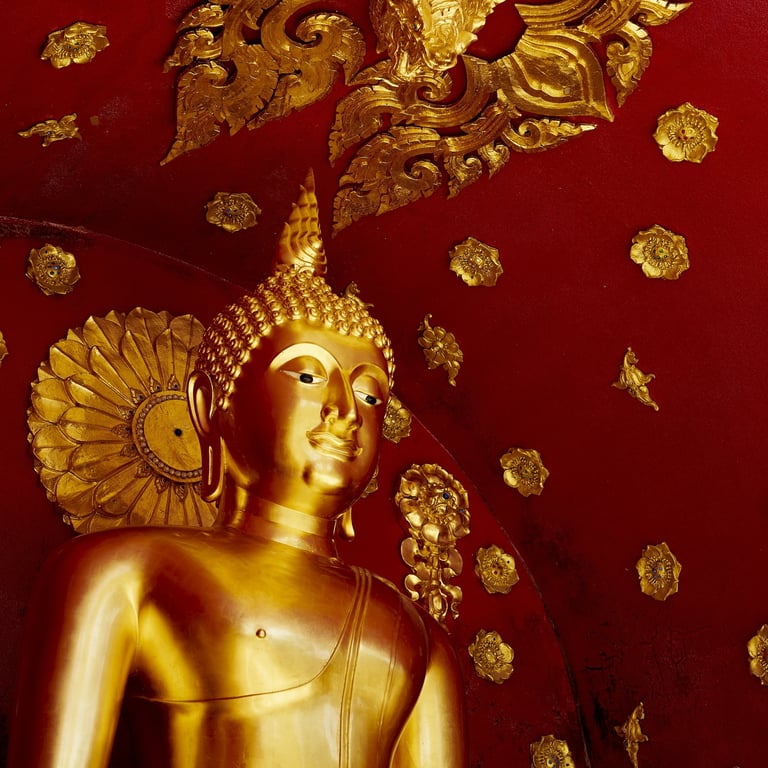
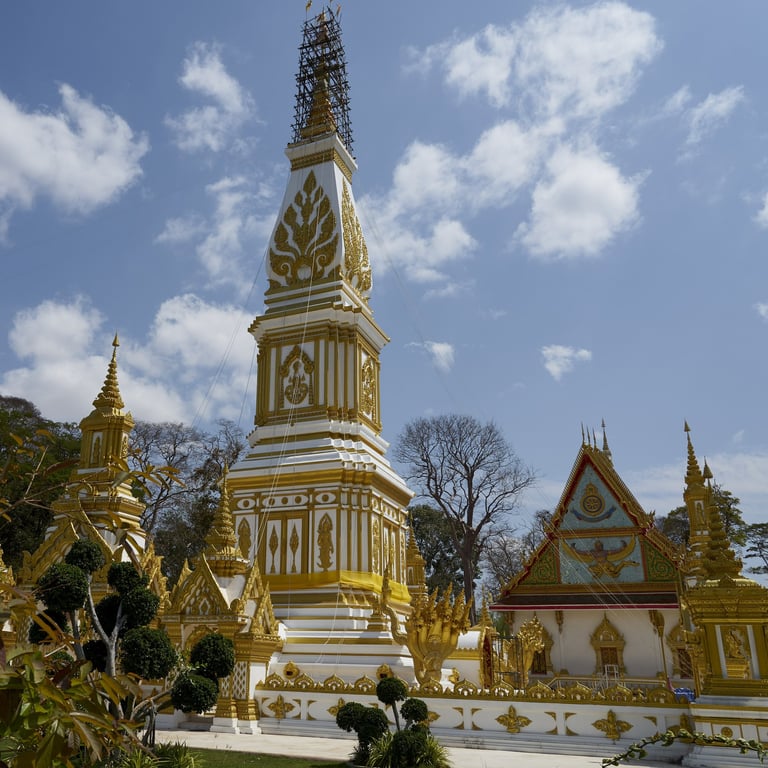
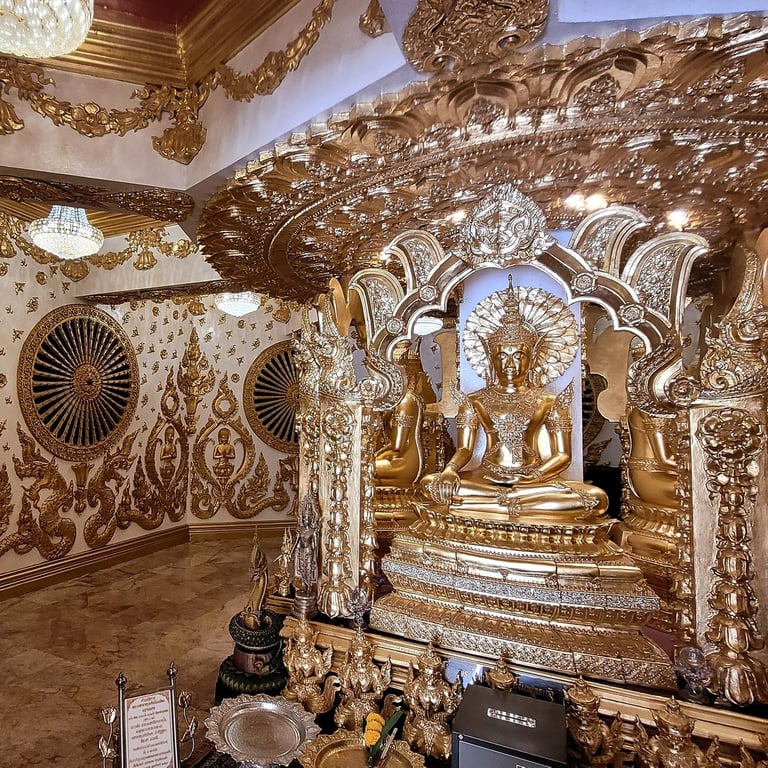
wat jetlin, chiang mai
Seven channels
Wat Jetlin dates from the 16th century and was used for the coronation of the Lanna king in 1551. In fact, the name refers to the seven channels that royals are said to have bathed in. The oldest parts of the wat are the ancient chedi and Buddha sculpture which likely date from the time of the wat’s origins. The ubosot features a gilded Buddha and a tiered ceiling in Lanna style. The wat presents as a serene refuge from the adjacent busy road, with its elegant lily-pond and bamboo (creaky in places) walkway. Huge catfish create roiling water as visitors empty their 10 baht bags
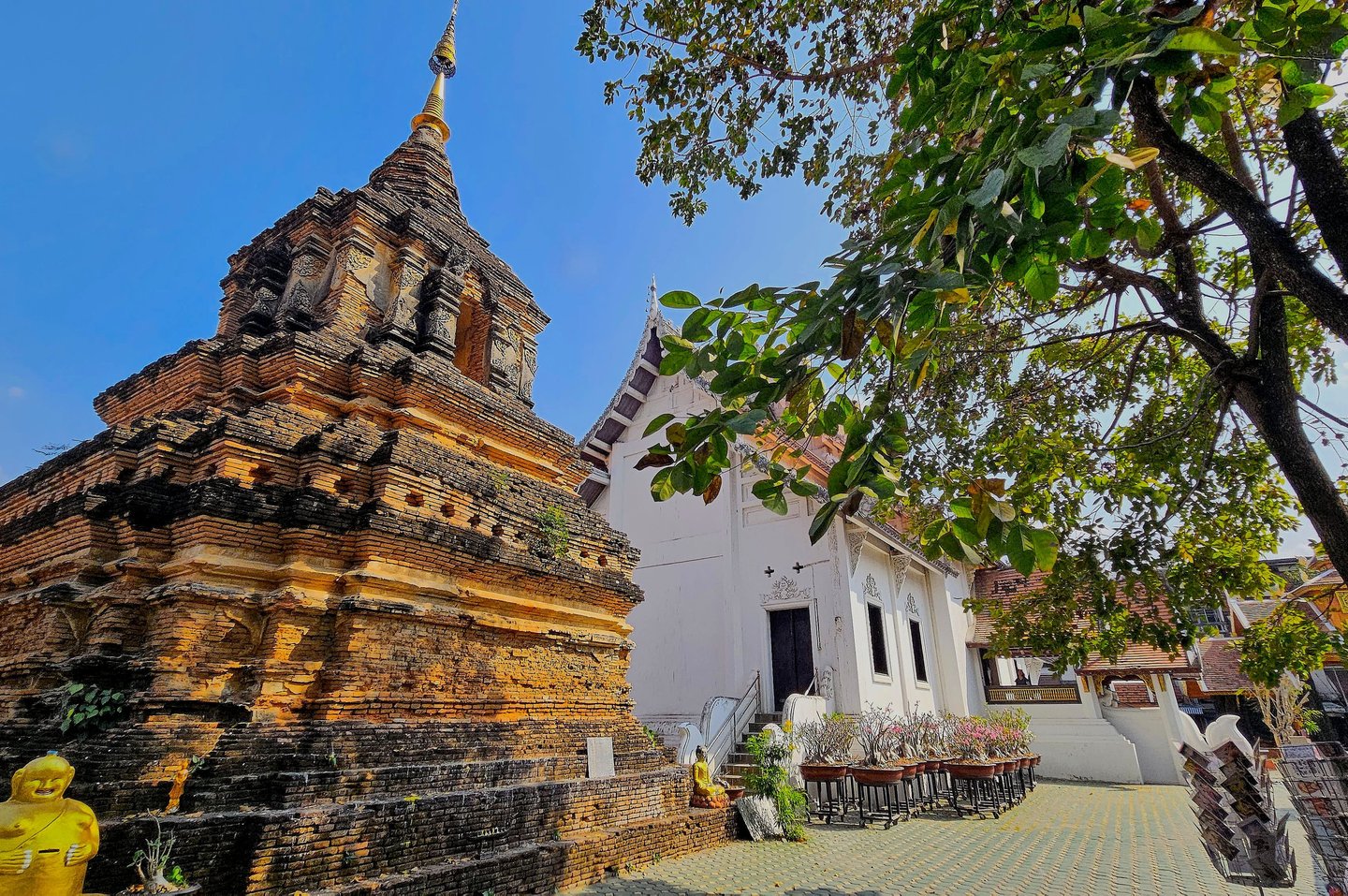

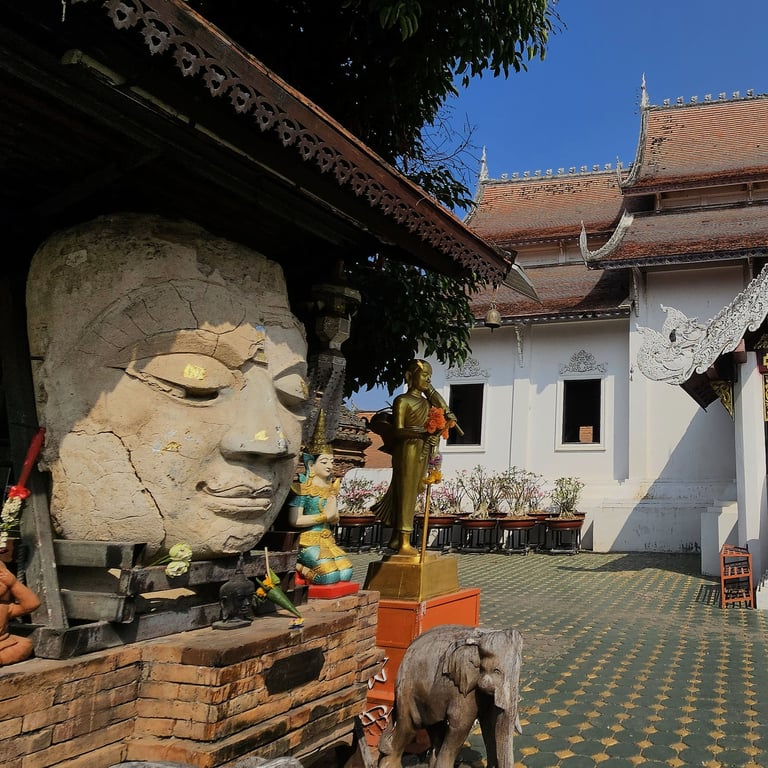
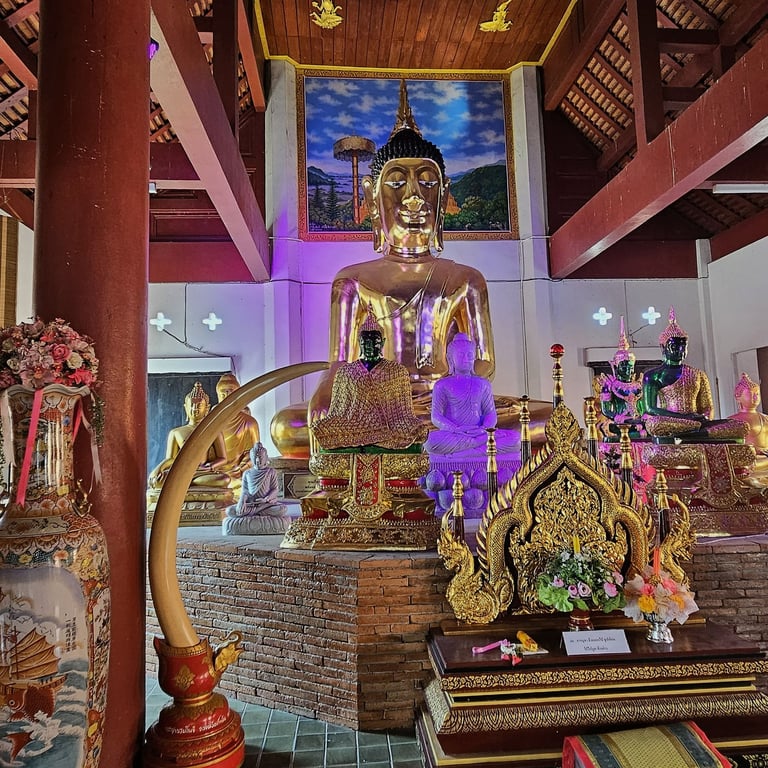
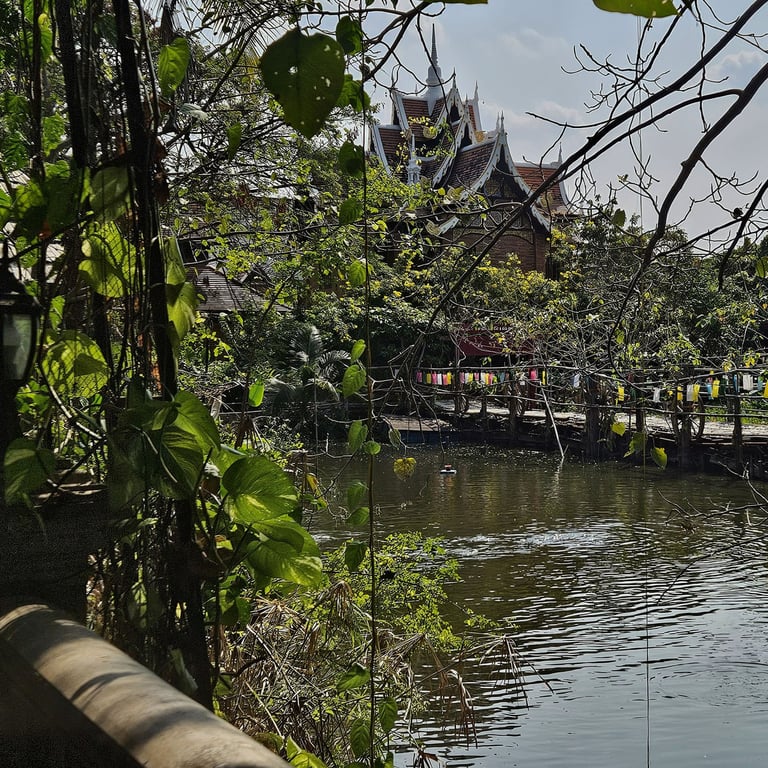
wat ratchabophit, bangkok
Well guarded!
Wat Ratchabophit Sathitmahasimaram Ratchaworawihan was built in 1869 during the reign of King Chulalongkorn (Rama V). It is not far from Wat Pho and can be reached by walking from Tha Tian Pier on the river, or a shorter walk from the Sam Yot MRT stop. The wat displays a mixture of architectural styles, including Thai, Khmer, Sri Lankan and Italian. The ornate hand-painted, glazed tiles surrounding the entire complex are an absolute marvel! The ubosot (ordination hall) was closed off when I visited, so these images are only from the exterior. The tiles would have looked great in bright sunshine, but it was overcast on this occasion and a heavy storm had me sheltering in an alcove for forty minutes. Look out for the doors with the built-in soldiers standing guard throughout.
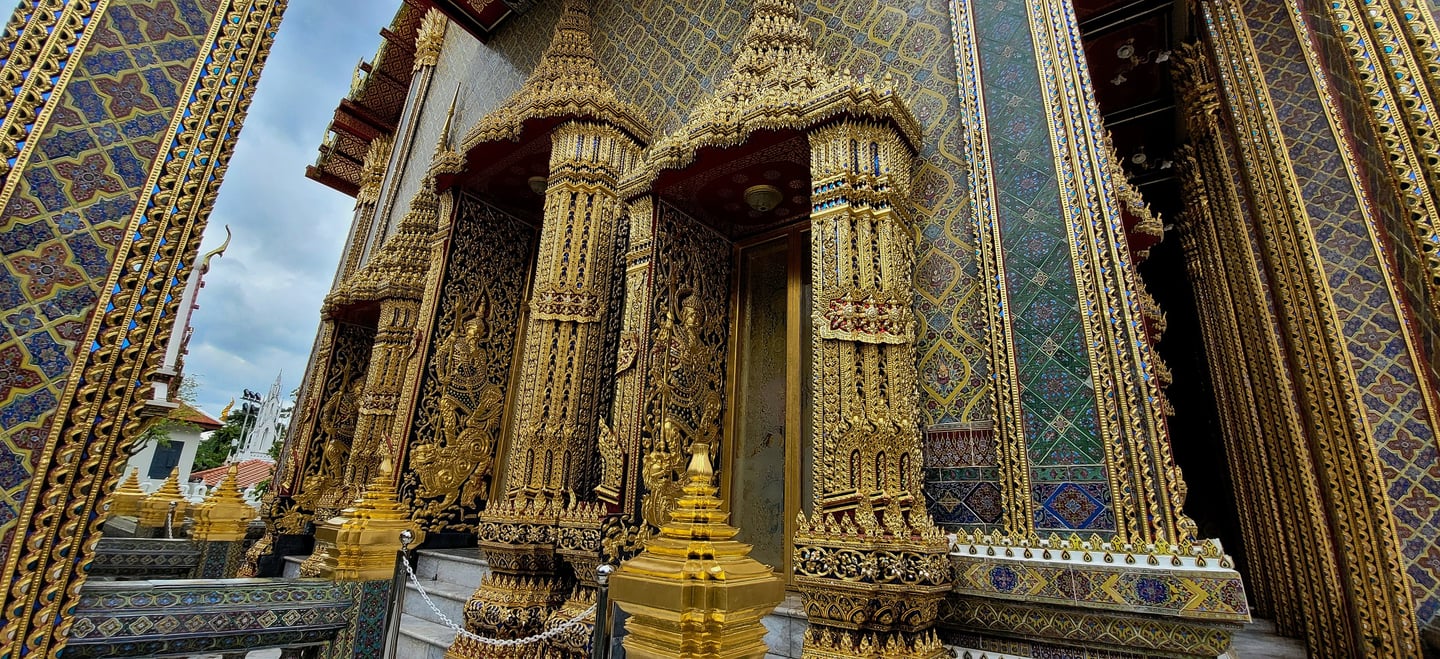

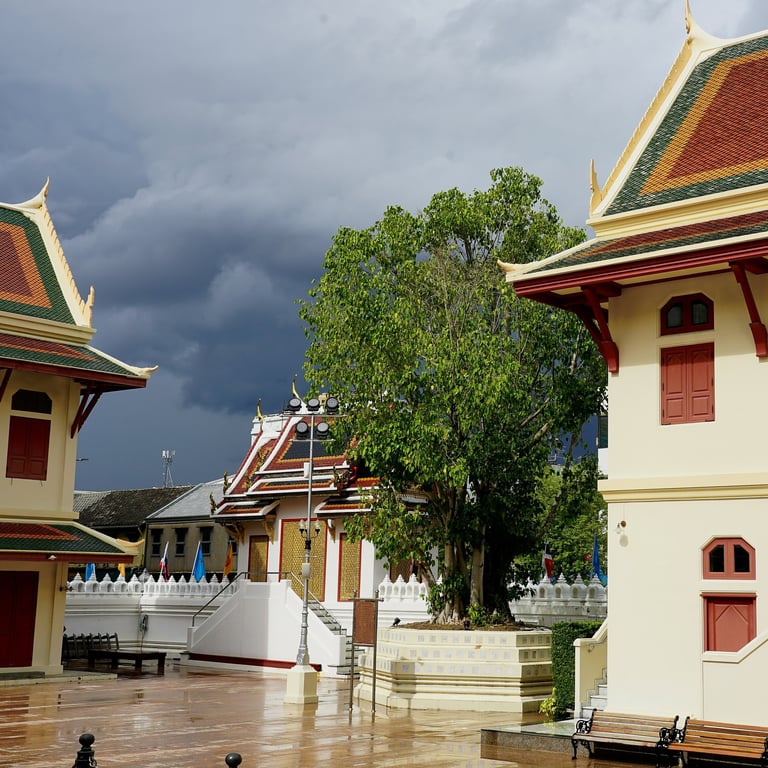
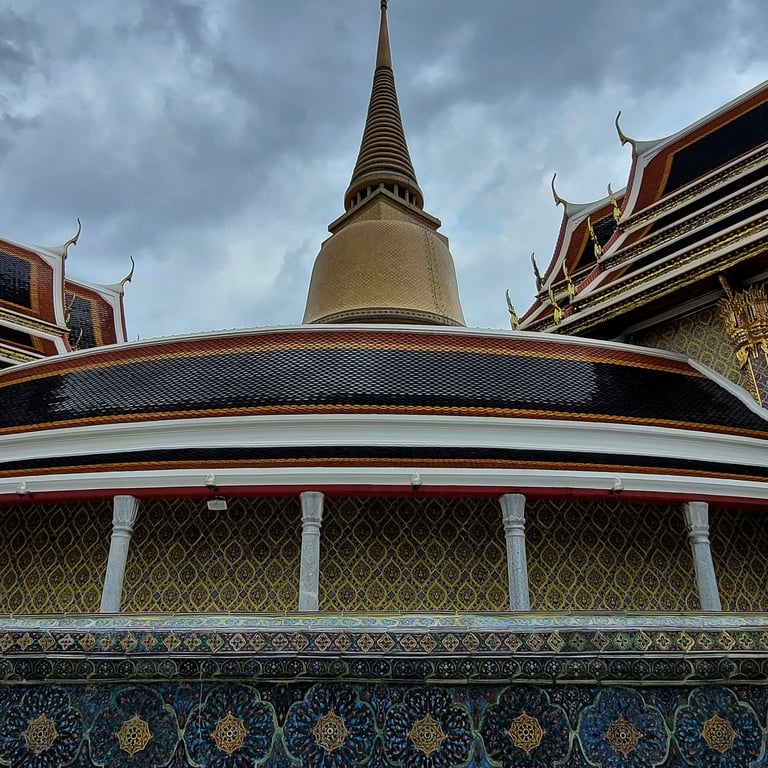
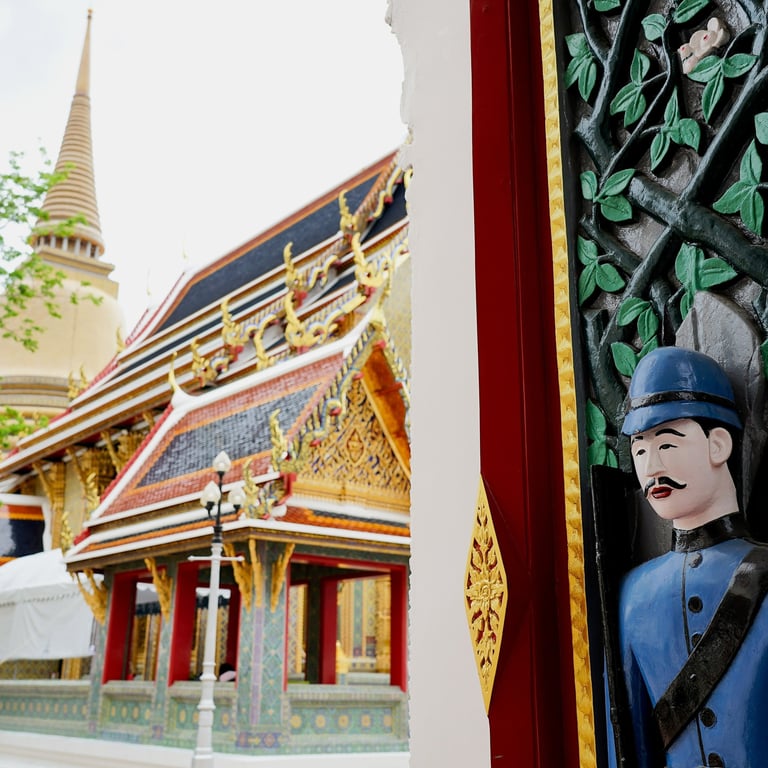
wat that, khon kaen
Dinosaur!?!
Wat That, near the centre of town, originates from 1789, about the same time as the city was founded. The main ubosot is an impressively tall three storey building, the extra floor having been added in 1996. The interior, all in red, has quite a powerful effect, creating both calm and vigilance at the same time. Odd, to the point of mystifying, was the golden dinosaur in the corner, complete with animatronics. This doesn’t appear in photos online, so must have been a recent innovation, for novelty or otherwise. The main chedi which is 45 metres tall was built in 1981 to replace the previous one that had fallen into disrepair. The chedi is covered in orange mosaic tiles but was obscured this time by a yellow covering.
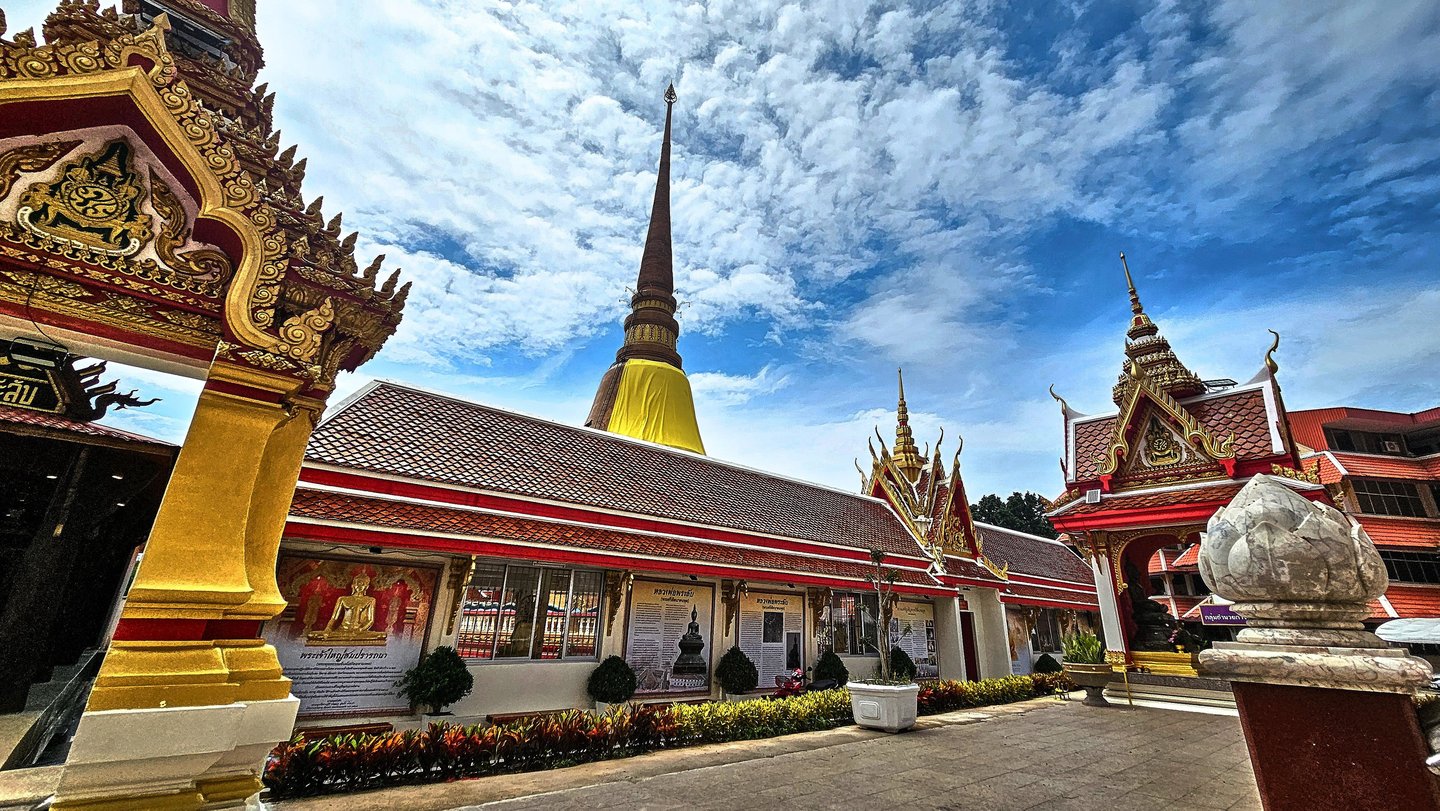

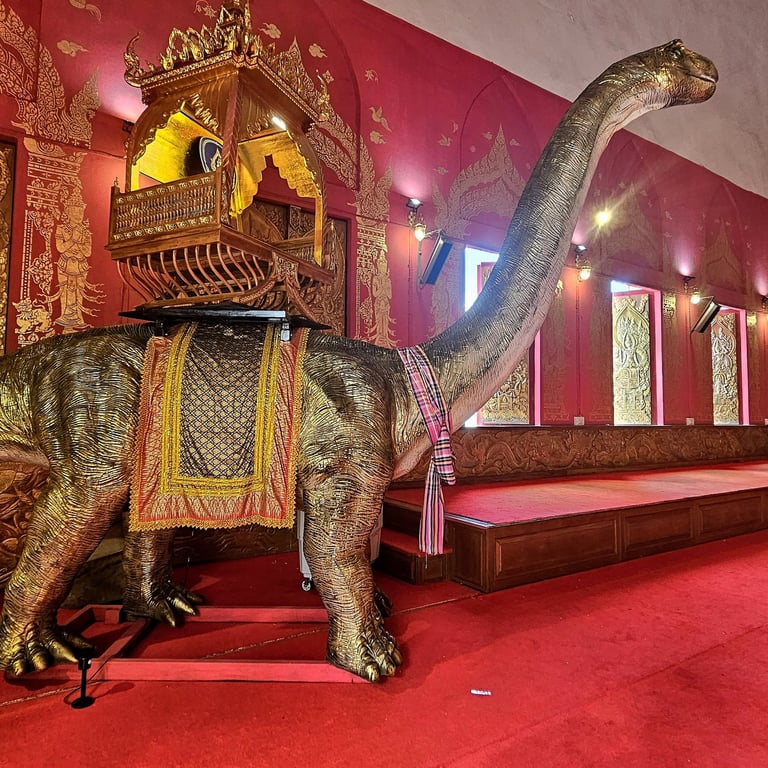
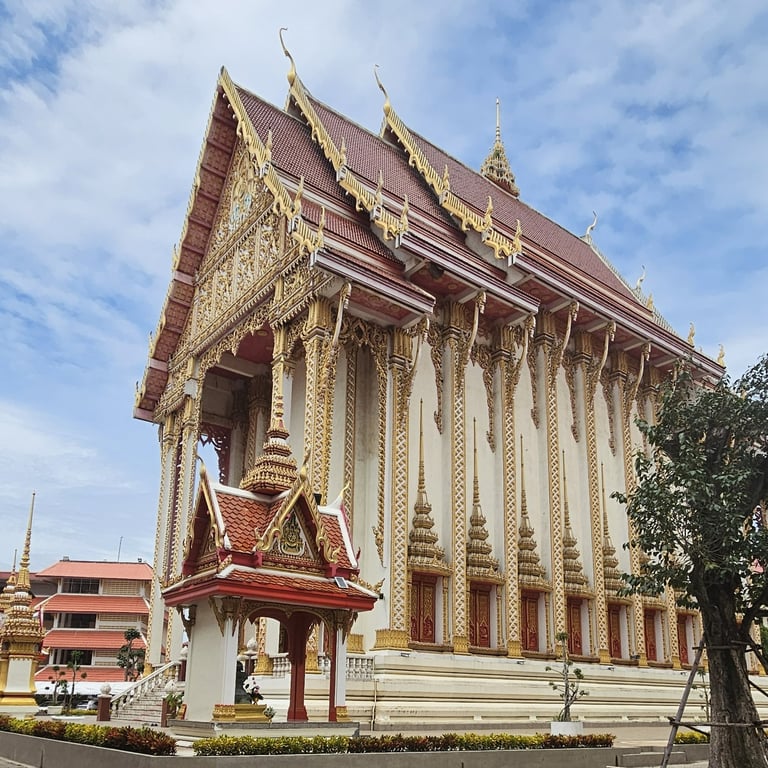
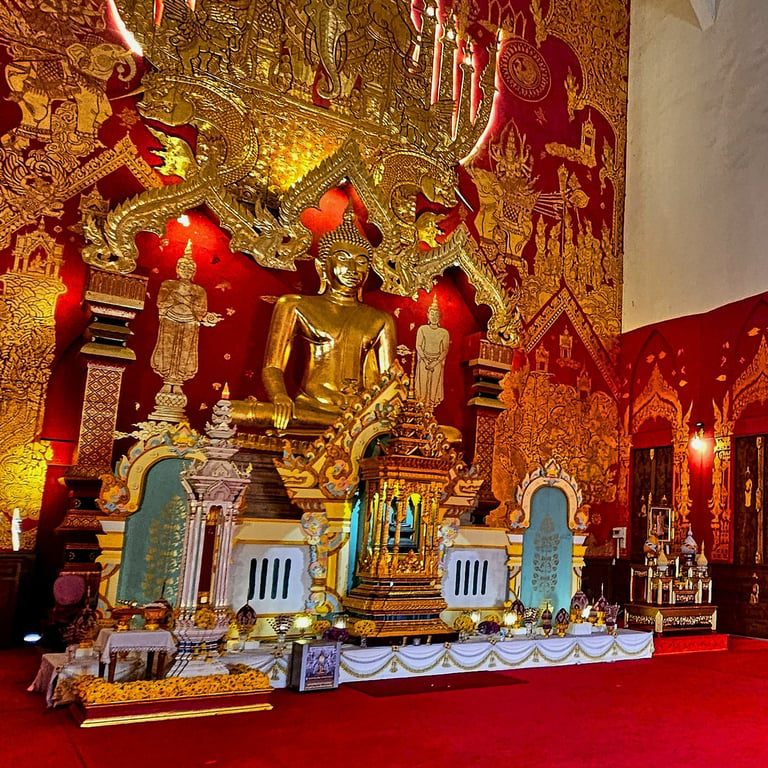
wat tai Prachao Yao ong tue, Ubon
All styles imaginable
How to describe this one in Ubon Ratchathani? It seemed to be a mishmash of all the styles imaginable. Crammed into a limited amount of space. It was as if seven different people had been given a design brief just for their particular small plot, but no looking at others’ ideas. The result is an overpowering dash of colour and perspectives in whichever direction you care to look. Plenty of things for your camera to focus on, but how to come up with a pleasing composition is the challenge – parts of adjacent statues seem to protrude into your viewfinder whichever way you turn!
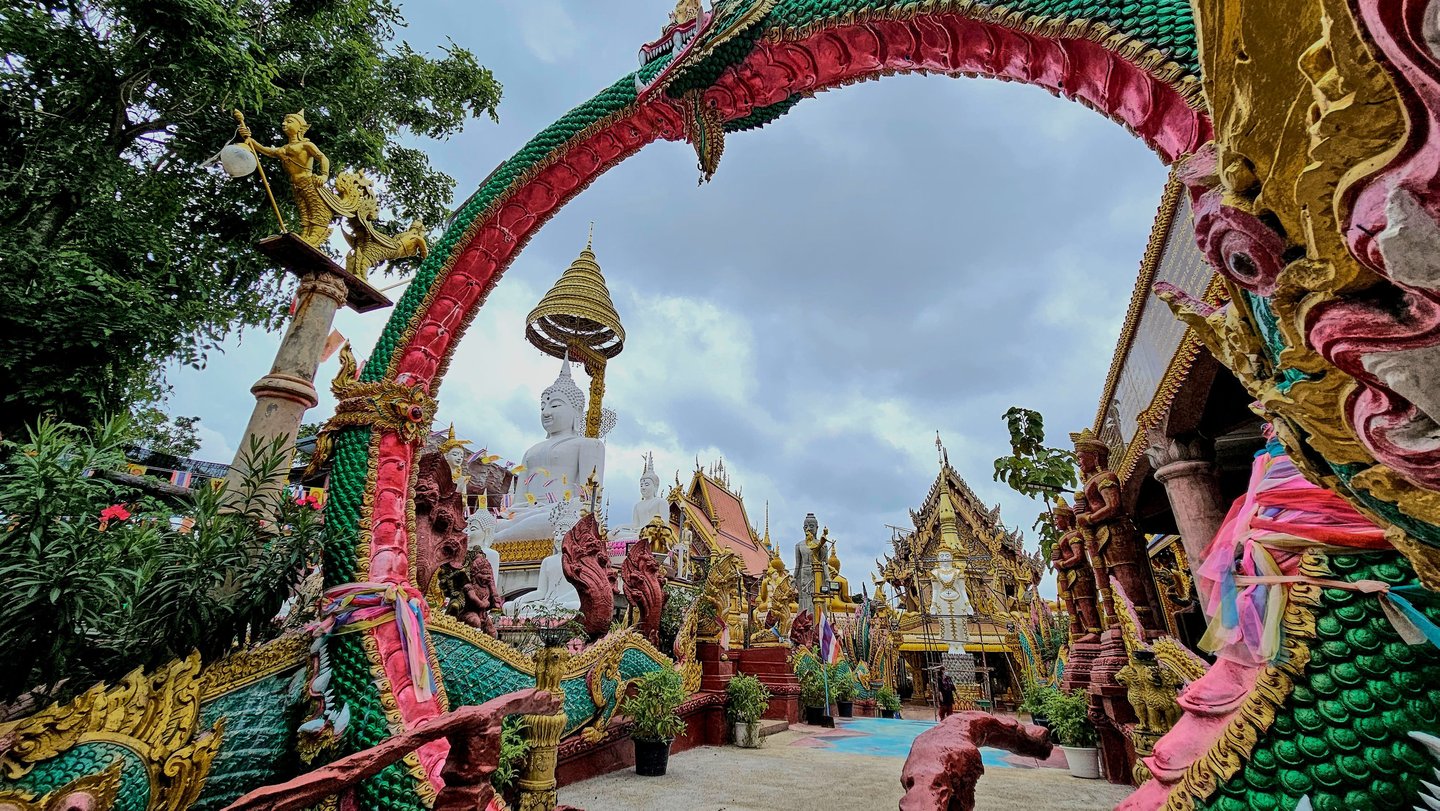

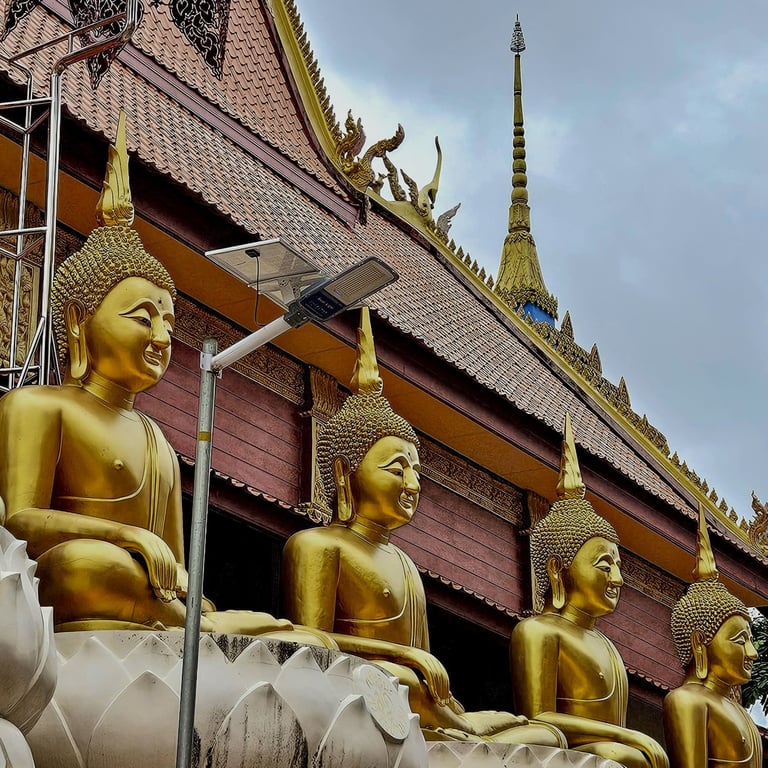
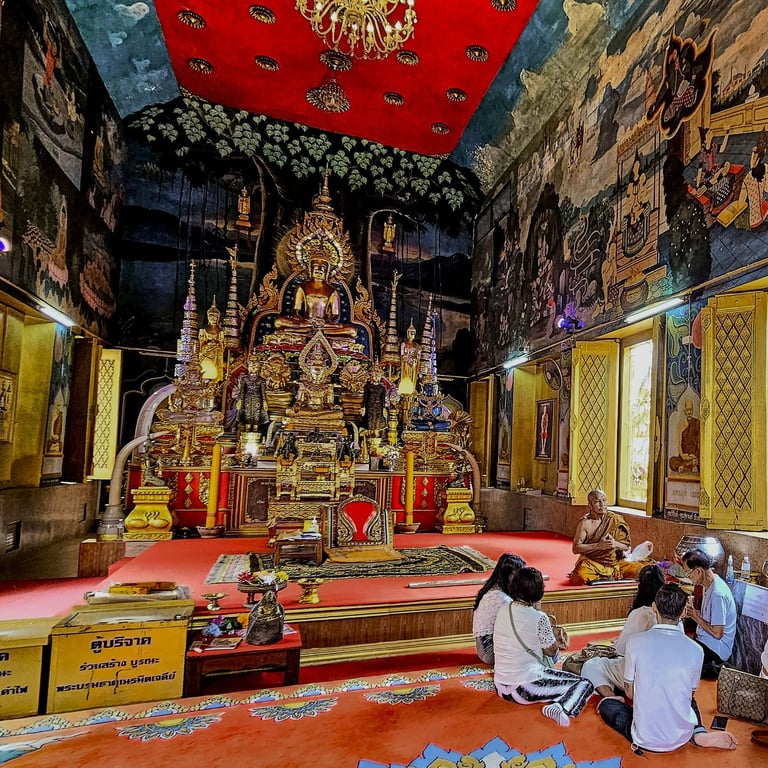
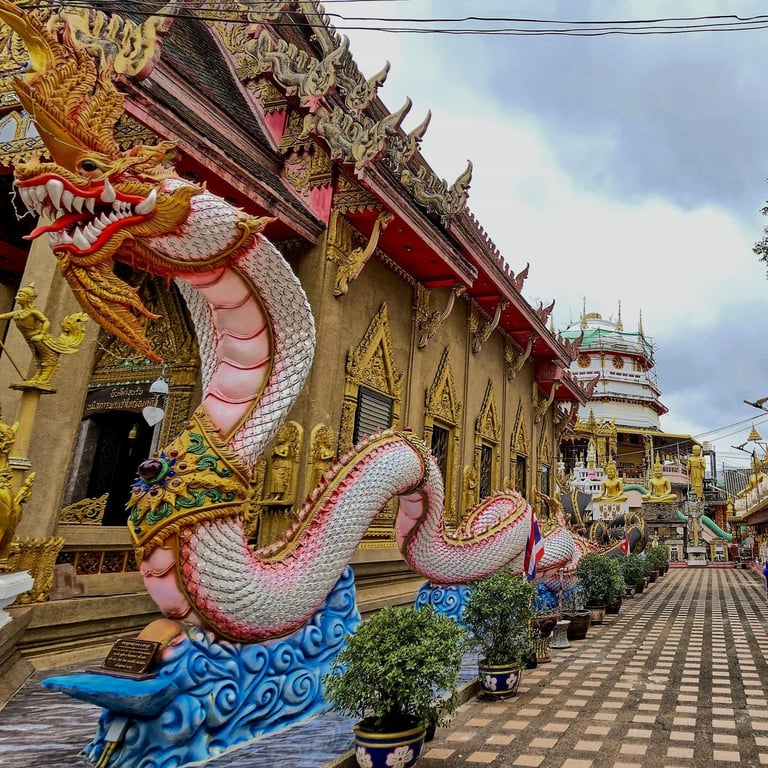
wat pathum wanaram, bangkok
Sandwiched between
Wat Pathum Wanaram Rachaworawihan is located between Central World and Siam Paragon, on Sukhumvit in the heart of the commercial district. Both ‘sandwiched between’ and ‘wedged between’ do not do it justice; its elegance and calm are in contrast to the buildings towering above it, which simply fade from view once inside the grounds. Built by Rama IV in 1857, the ubosot and viharn both house Buddha images from Laos and contain murals of everyday life in Bangkok. Apparently six red-shirt protesters were shot there in 2010, and some believe that their ghosts haunt the temple. It is accessible from Siam or the nearer Chitlom BTS stops, either at street level or more comfortably by walking along the skywalk.
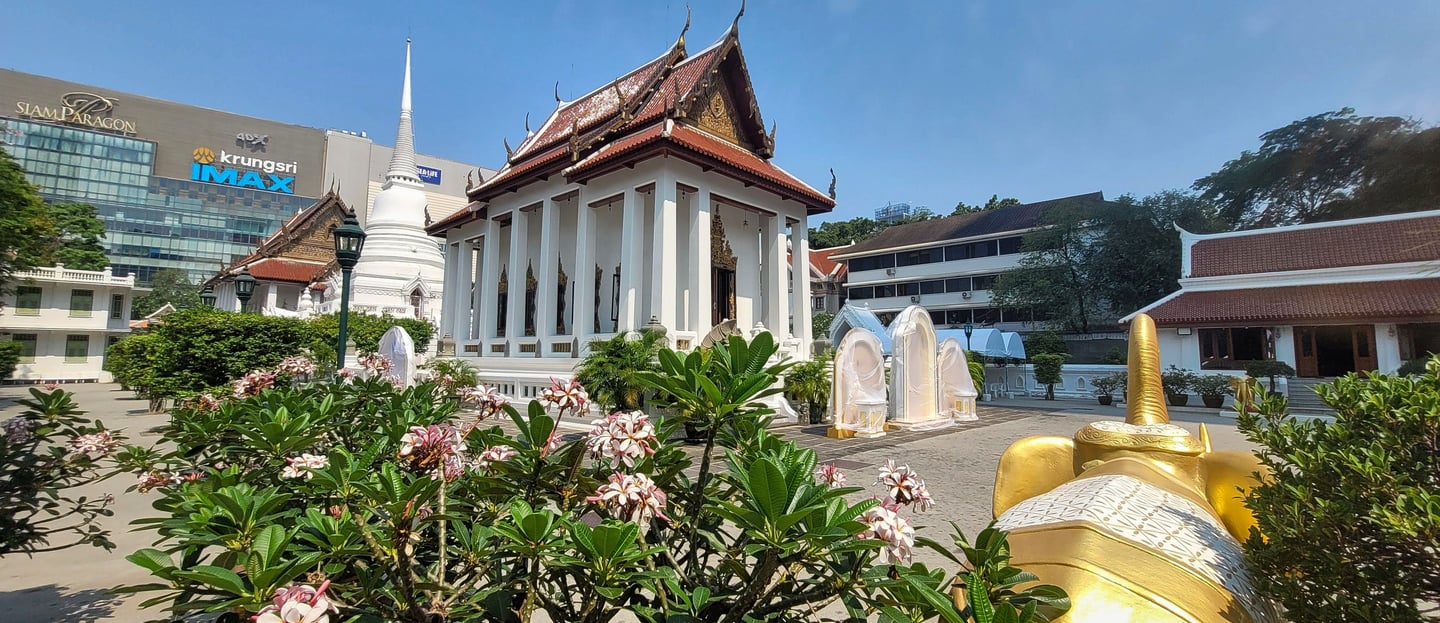

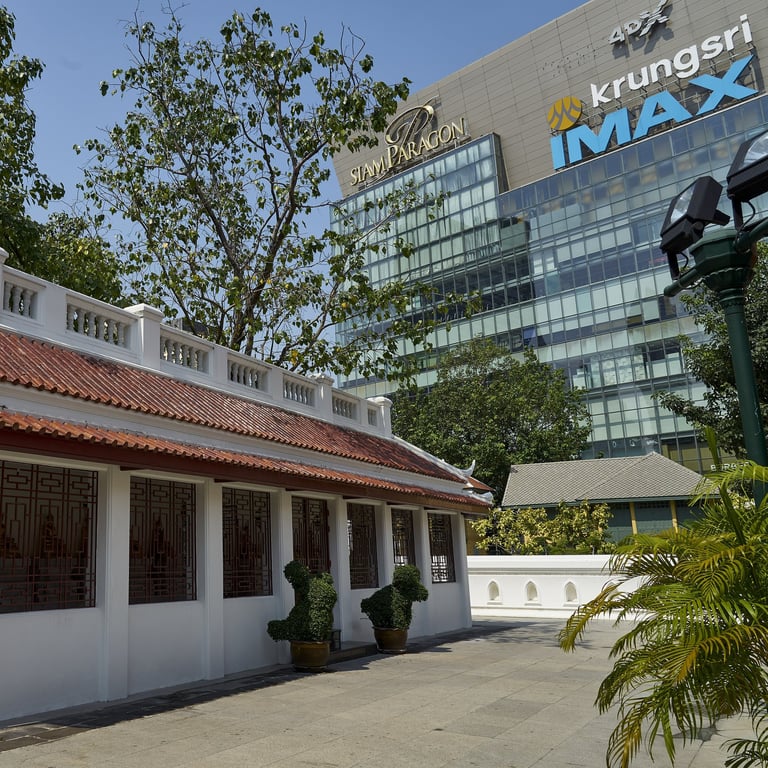
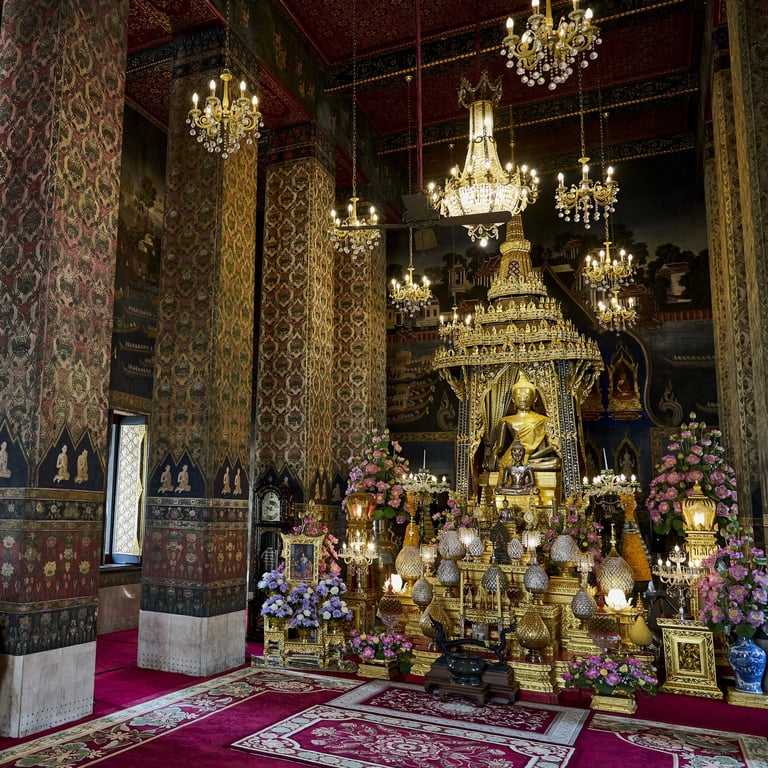
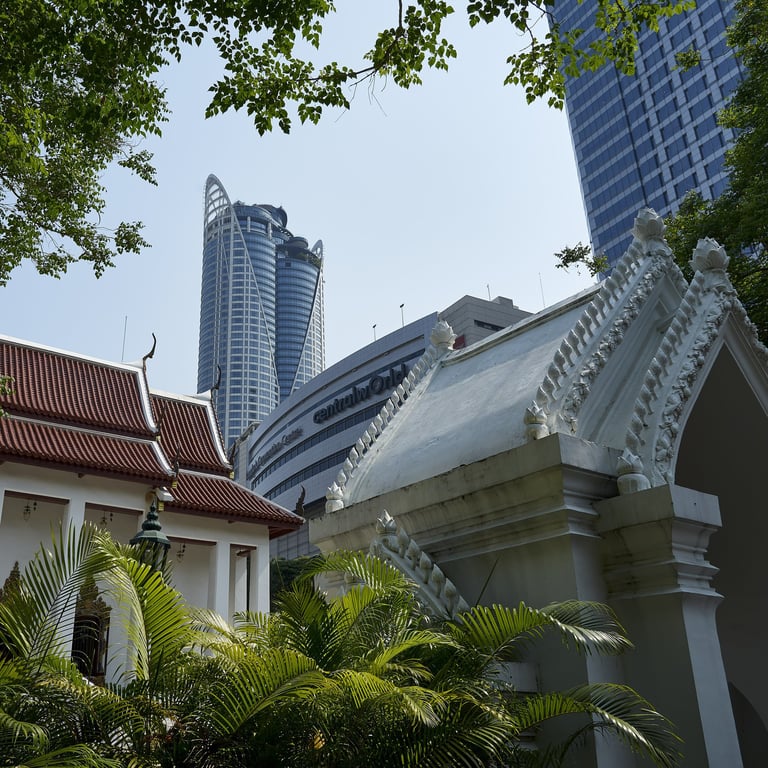
wat lok moli & wat khuan khama
Old Chiang Mai
These two wats are diagonally opposite each other, divided by the city moat and adjacent roads, in Chiang Mai. Wat Lok Moli has a long history, being mentioned in a charter from 1367; the chedi was commissioned in 1527. Wat Khuan Khama dates from 1492 and is also known as the 'Horse Temple'. The story goes that when a soldier's much loved horse died, he donated the land for the temple, which was then dedicated to the horse. Horse statues can be seen on top of the wall running alongside the road.
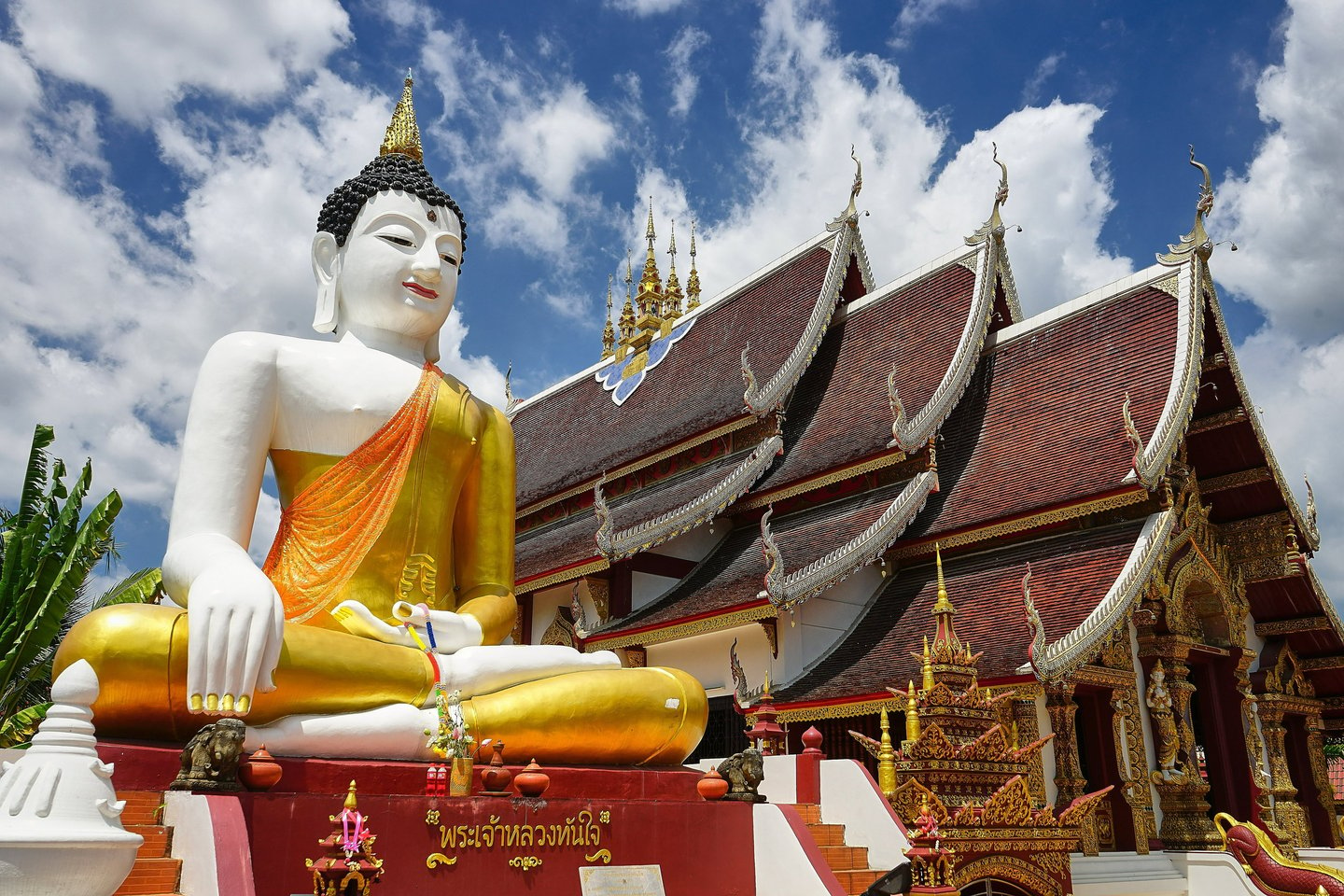

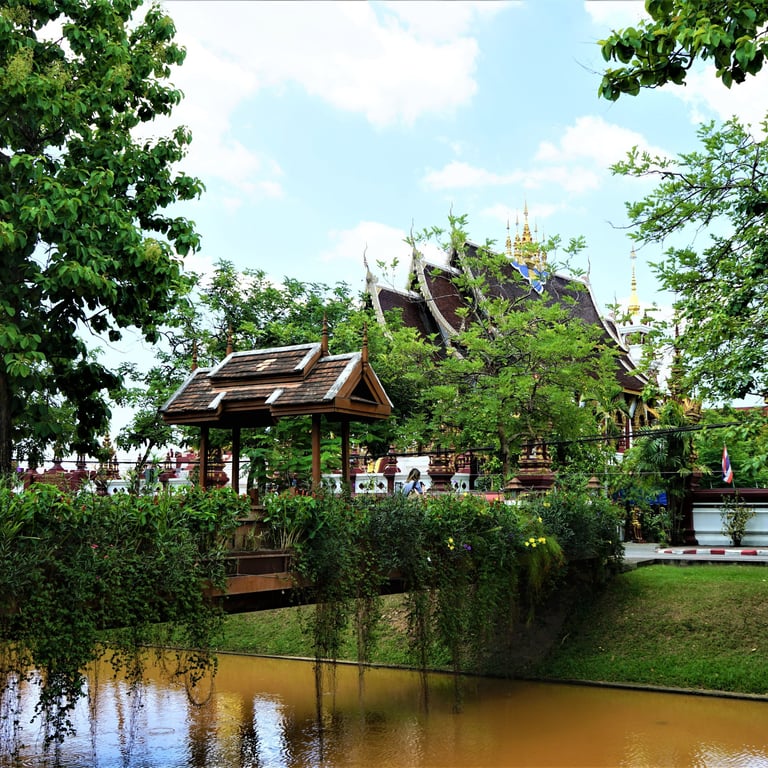
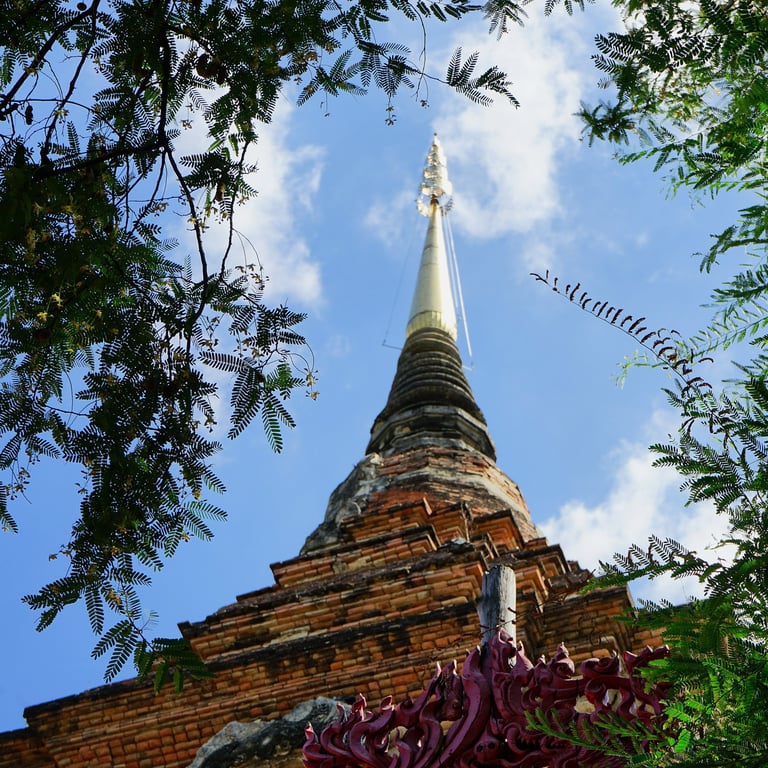
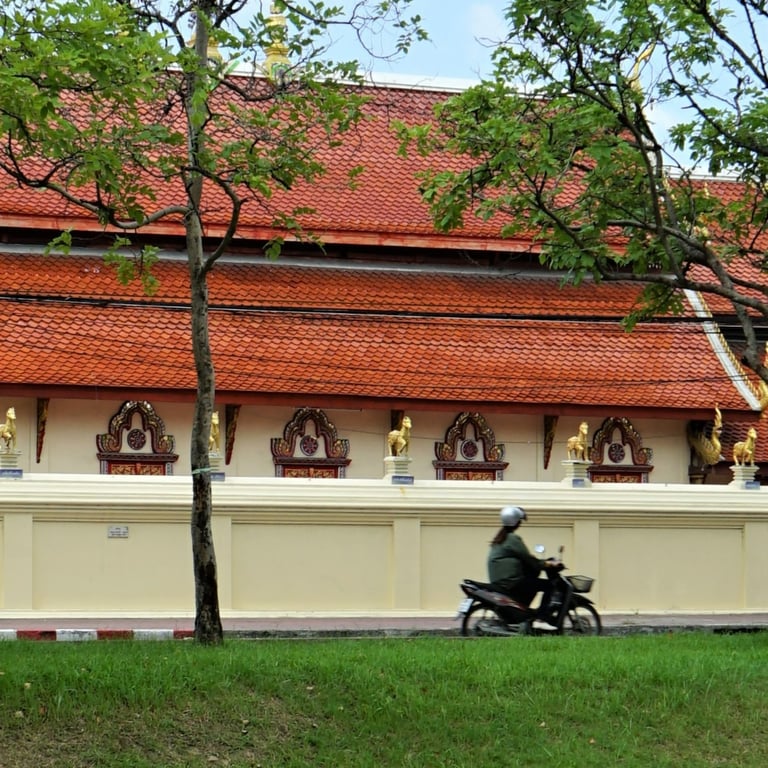
wat phra maha mondop phutthabat
A wat with a view
This wat is part of the Wat Yansangwararam site in Chonburi Province. The 33-metre-tall structure (mondop) on top of Khao Kaew hill was built in honour of Rama IX, the foundation stone being laid in 1984. The 200 step approach is guarded by three-headed Nagas on either side and, as you make your way up, the view reveals itself. In the distance, the panorama starts with the island of Koh Larn to the west, then the high-rise condos of Jomtien Beach in Pattaya, before finishing with the town of Naklua to the east, some 25 kms away.
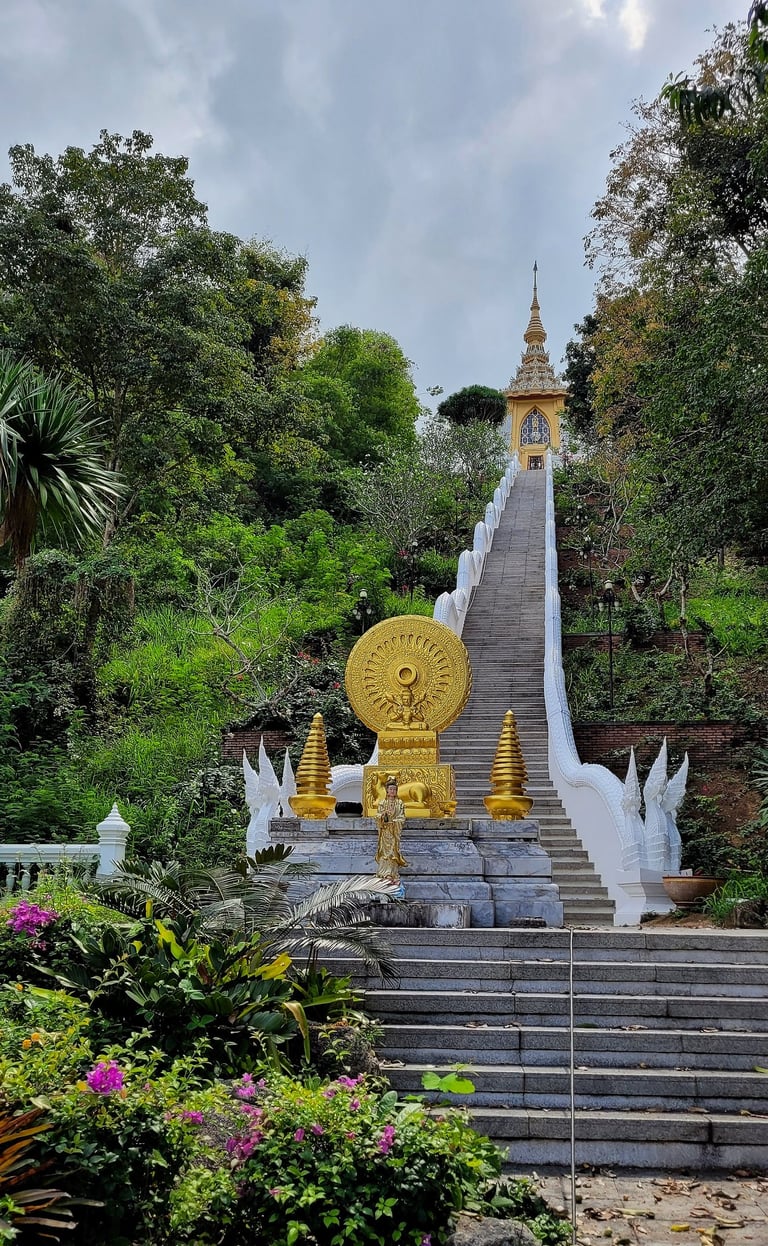

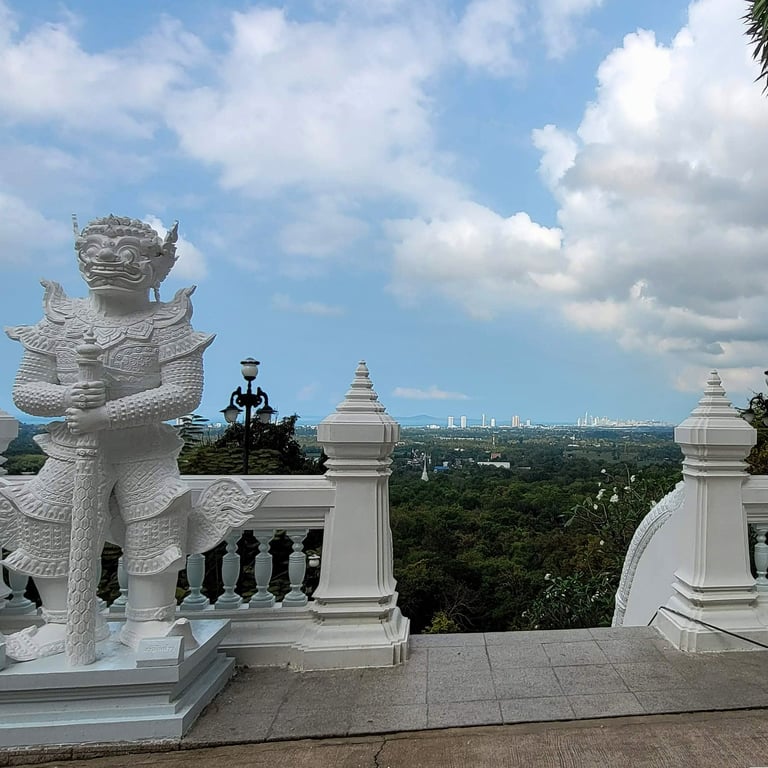
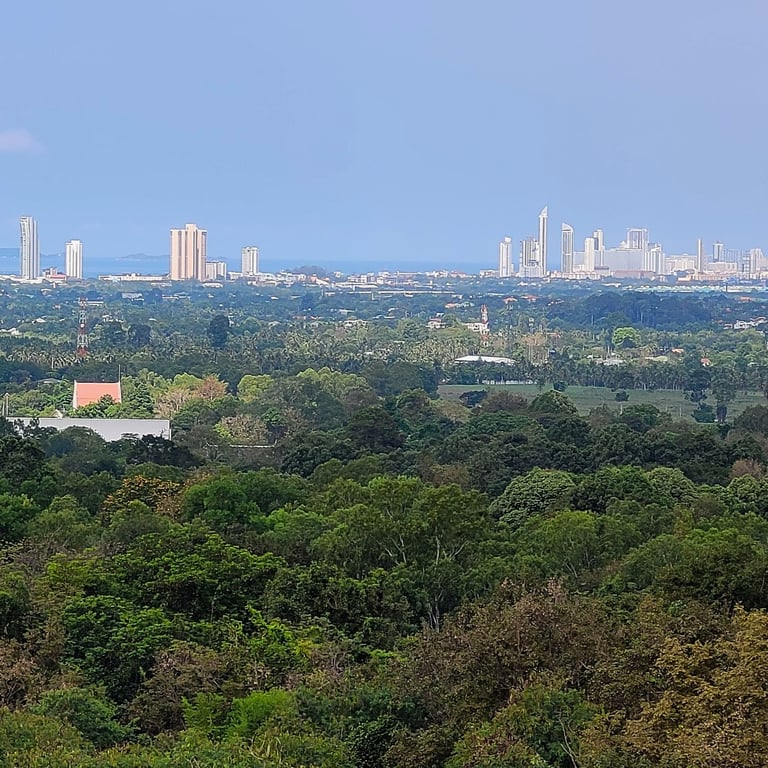
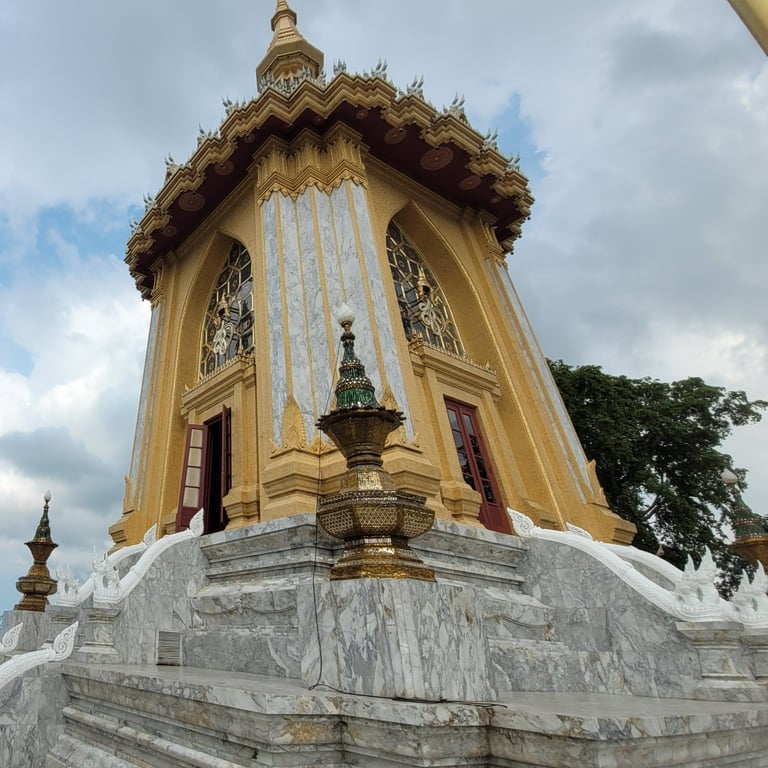
wat Ben, bangkok
Perfect symmetry
Wat Benchamabophit Dusitwanaram, or 'Wat Ben' as it is known locally, is also referred to as the 'Marble Temple', as it was built using Italian marble. Dating from 1899, Wat Ben's full name means ‘the temple of the fifth king located near the Dusit Palace’. The beautiful symmetry of the front façade can be seen on the reverse of the old five-baht coin. To get there, it is an easy taxi ride from Phaya Thai BTS station. Nearby is the famous Rama V Equestrian Statue, but it was ‘Oi, no photos!’ when I walked by. The diffuse light that day meant that Wat Ben wasn't able to show its true colours - perhaps, next time!
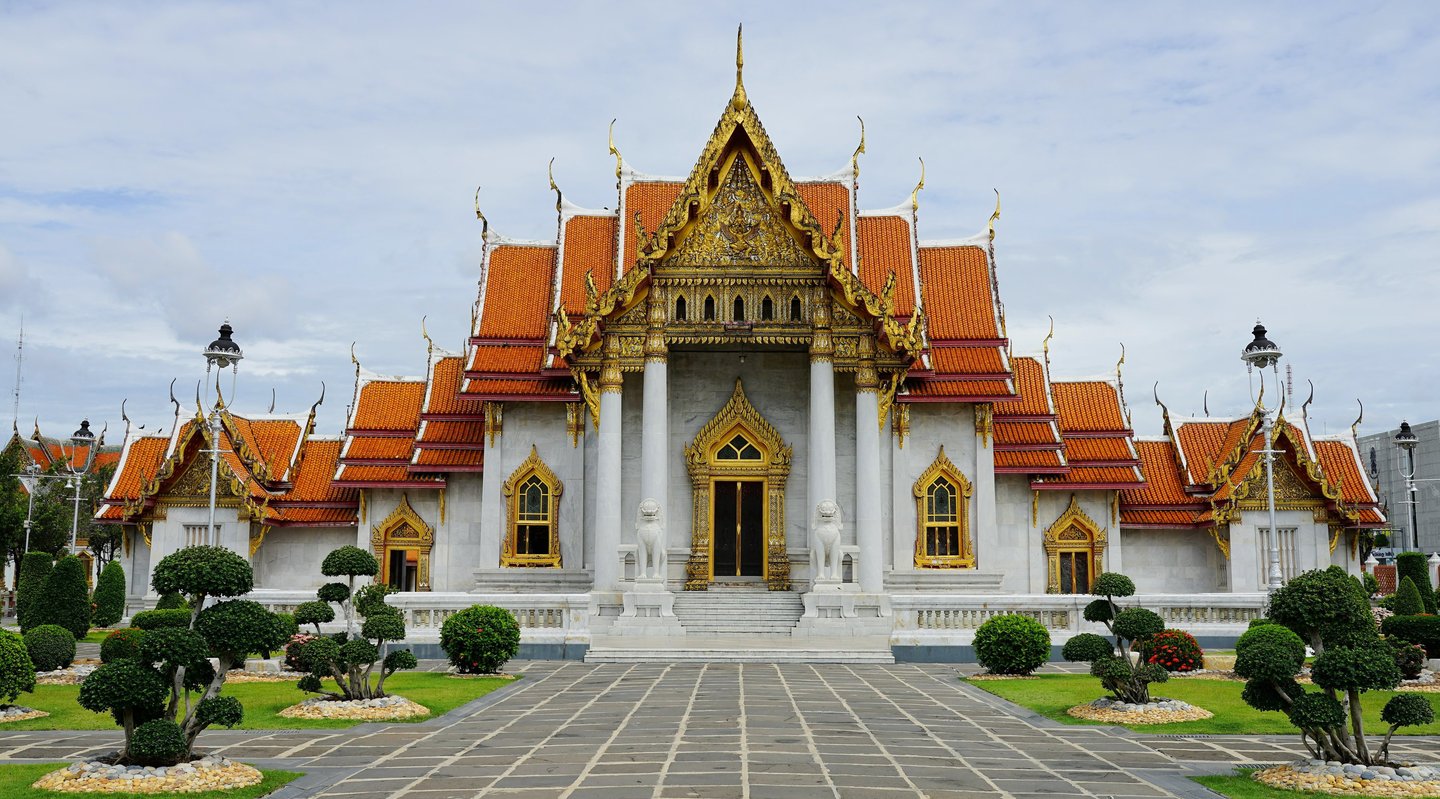

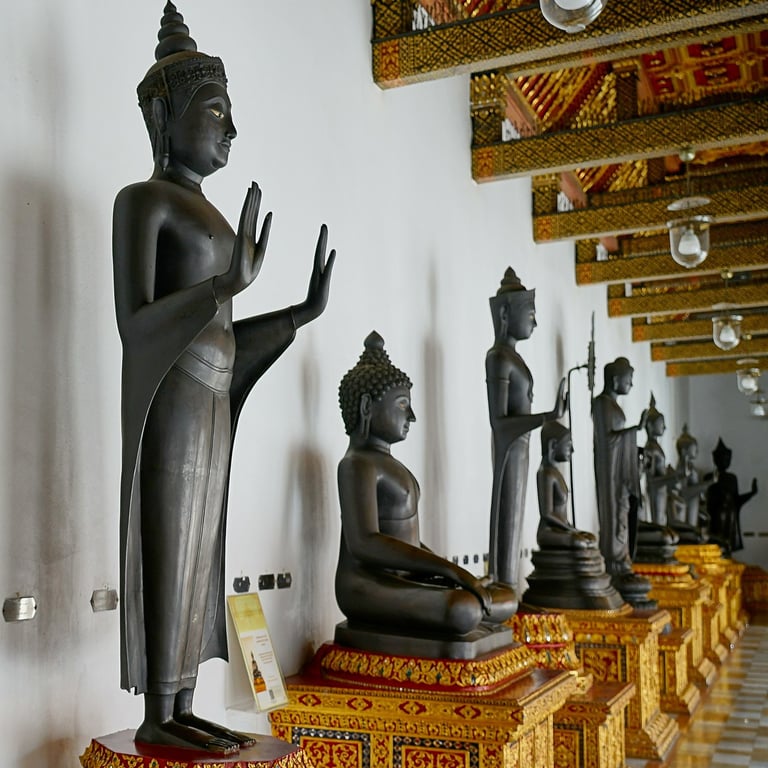
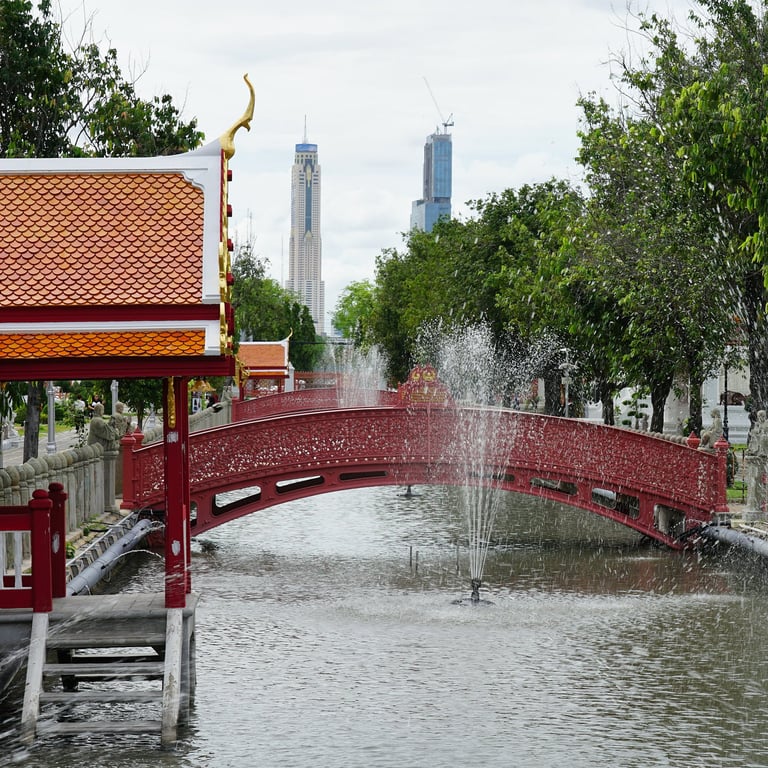
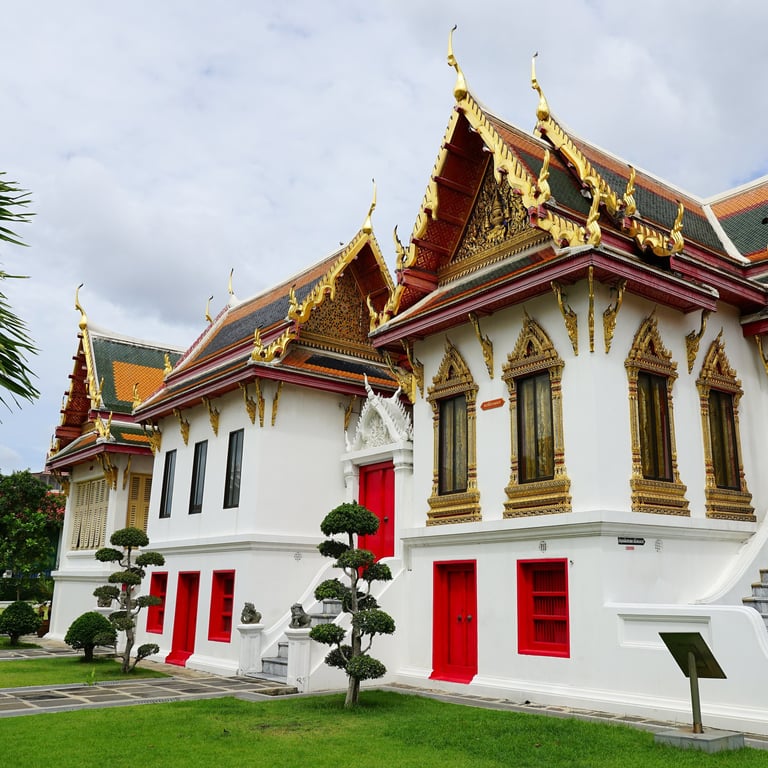
wat phumin, nan
Atmospheric
Wat Phumin was constructed in 1596 and restored (including the murals of everyday life) in the late 19th century. The roof is supported by teak pillars and is decorated with gold on red and black lacquer motifs. The Buddha is in Sukhothai style facing in four directions. The entire exterior was covered in scaffolding and tarpaulin when I was there, making the interior the only focus. It is easy to see why Wat Phumin is Nan’s most famous wat, with the dark and rich colours creating an atmosphere made for quiet contemplation.
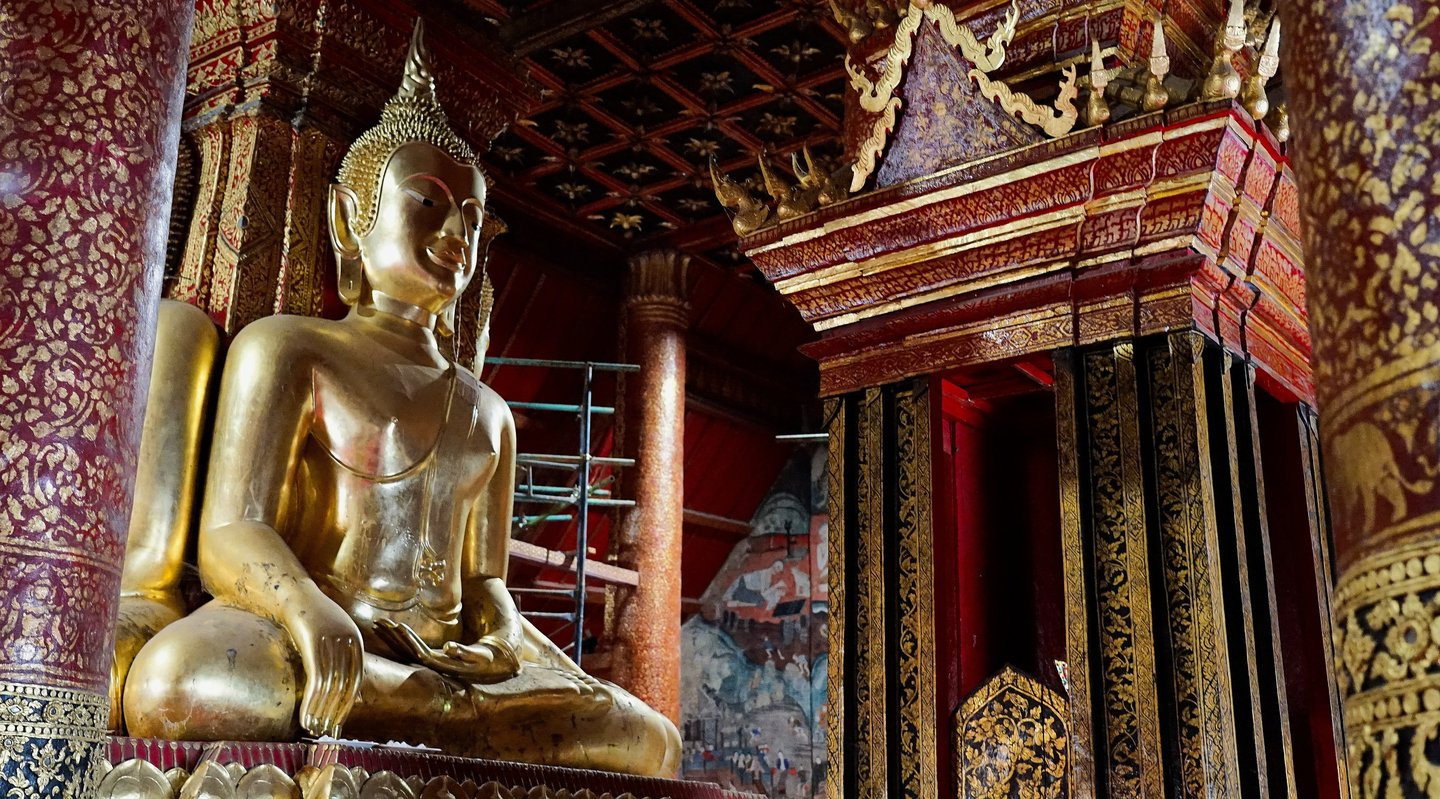

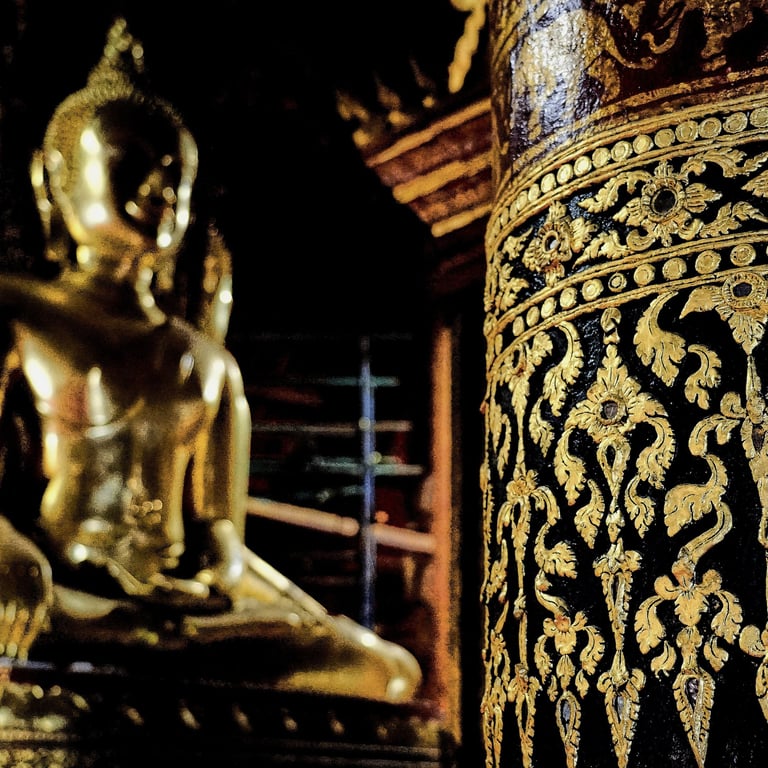
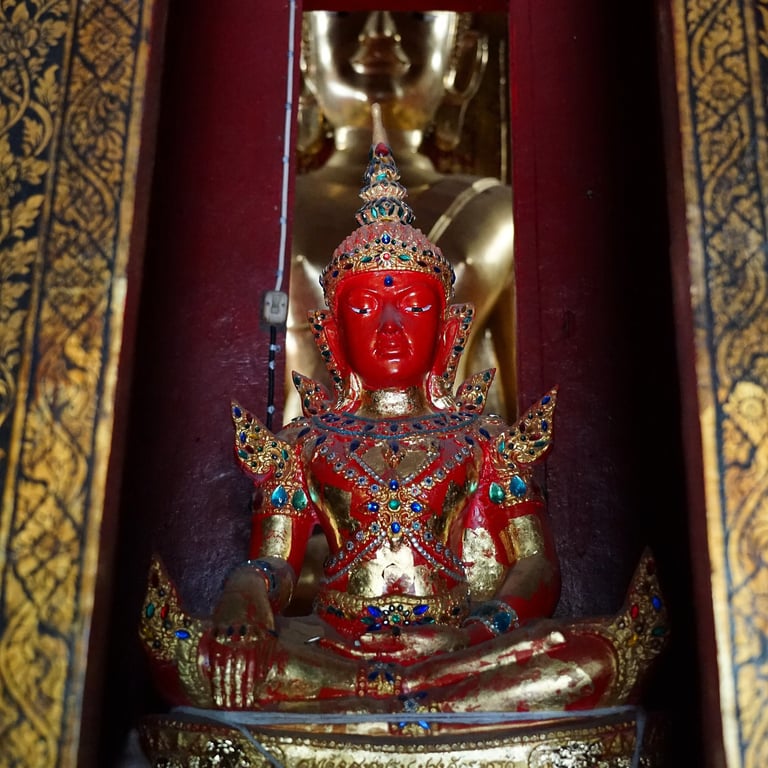
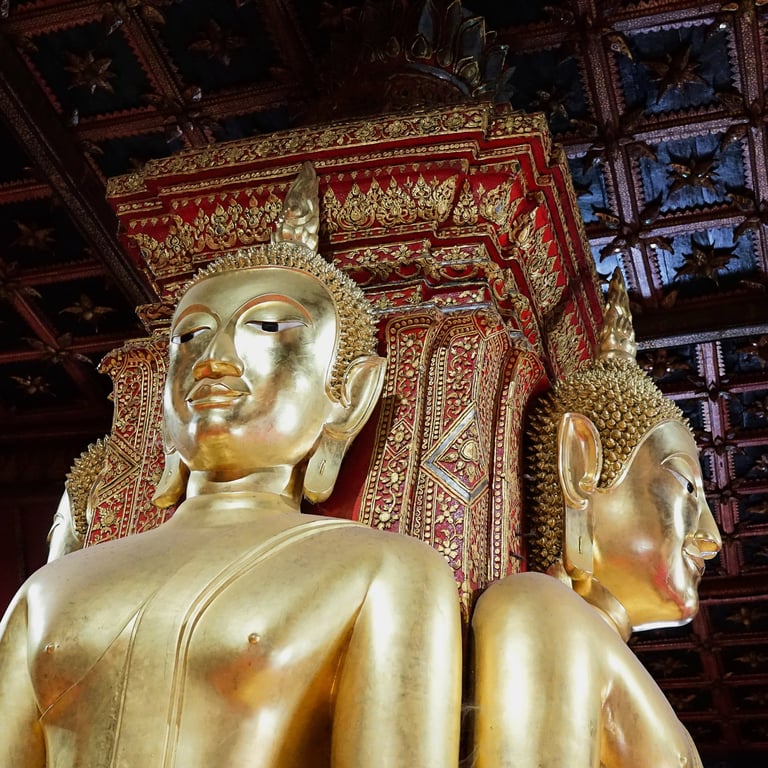
wat huay yaI, Pattaya
Mummified?
Wat Huay Yai is 15 kms south of Pattaya, inland from Jomtien Beach. The area of Huay Yai features frequently on real estate listings, being open and rolling countryside ideal for new moo baan projects. The wat itself originated in 1643 apparently, although there isn’t any evidence of earlier structures. The current building are relatively recent and in splendid condition. In fact, the wat hosts tour groups, including foreigners on the Pattaya ‘places of local interest’ trip. If you are born in an unlucky year according to the Chinese zodiac, you make your way here to pray for a turn in your fortunes. You are going to be praying to the mummified monk Phra Kru Phratrara Kritribul, whose legacy as a holy teacher is important to the wat. I might have been looking in the wrong place, but it looked more like a skeleton to me. (I didn’t linger over it though.)
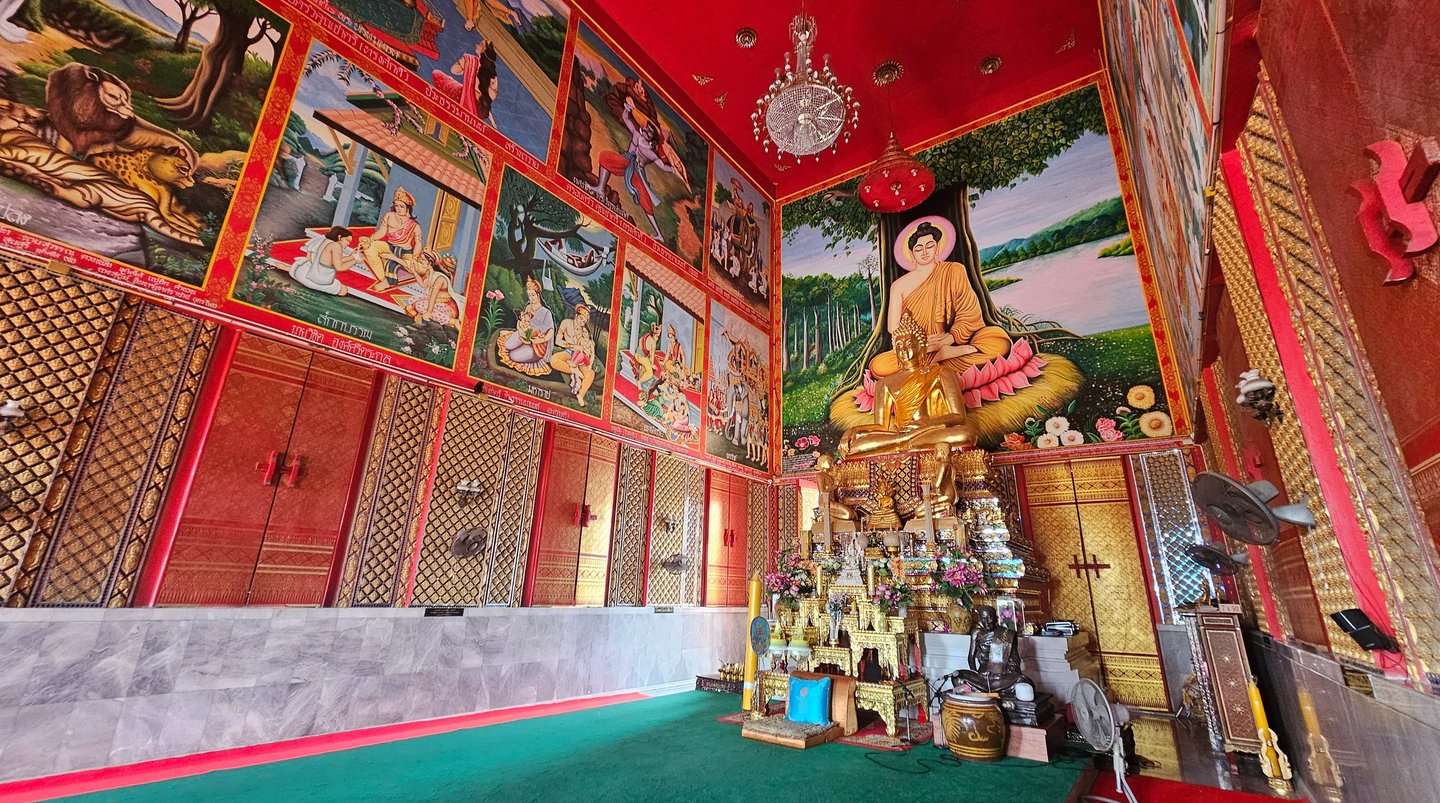

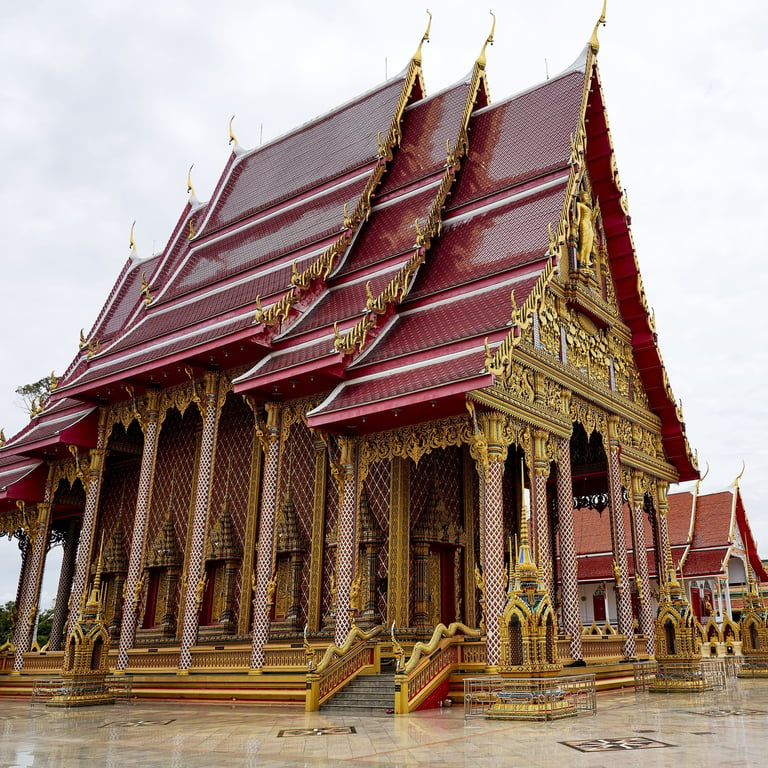
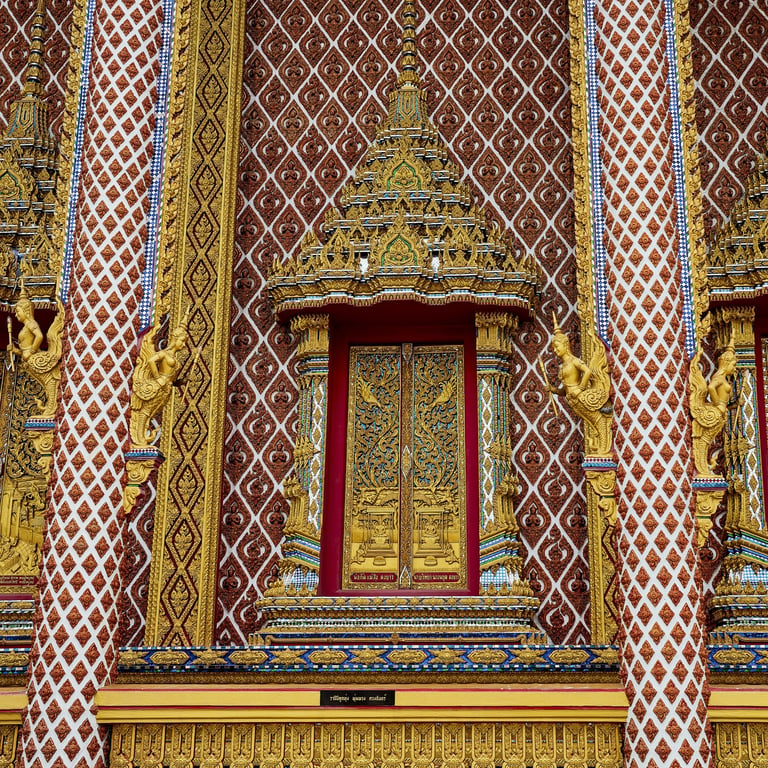
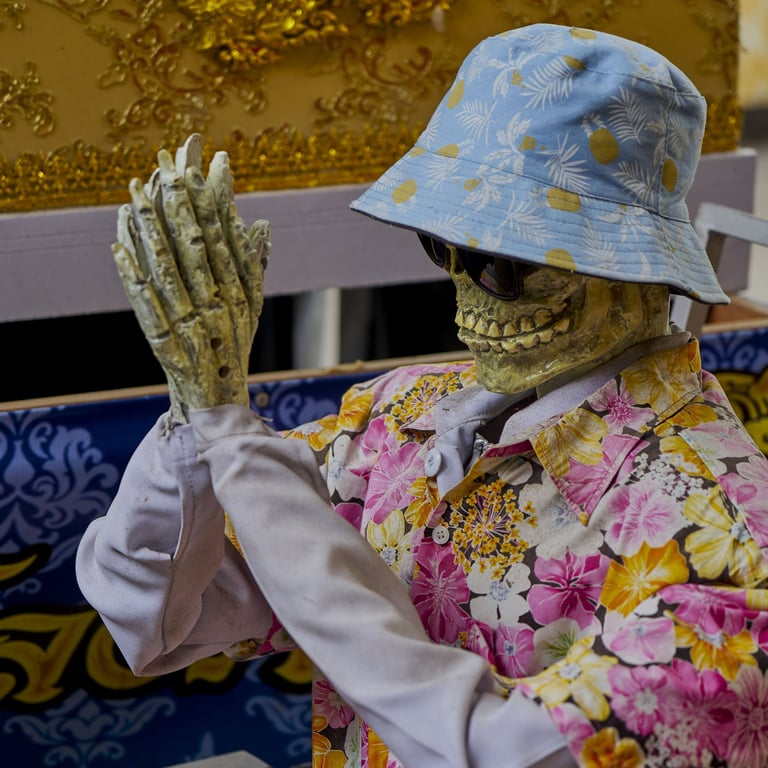
wat ratchaburana, phitsanulok
Minor attraction
Wat Yai and its famous Buddha, Phra Phuttha Chinnarat, is the highlight for pilgrims visiting Phitsanulok. But if you take the footbridge over the highway, you soon reach Wat Ratchaburana which dates from 1463 when Phitsanulok took over as the capital from Ayutthaya. The 600-year-old, huge brick chedi is visible from some distance away; in fact, traffic goes back and forth right next to it on the main road. The gold Buddha at the wat is in Sukhothai style. Walking round you will appreciate the quiet and the space afforded to visitors, this being more of a minor attraction to many, compared to Wat Yai.
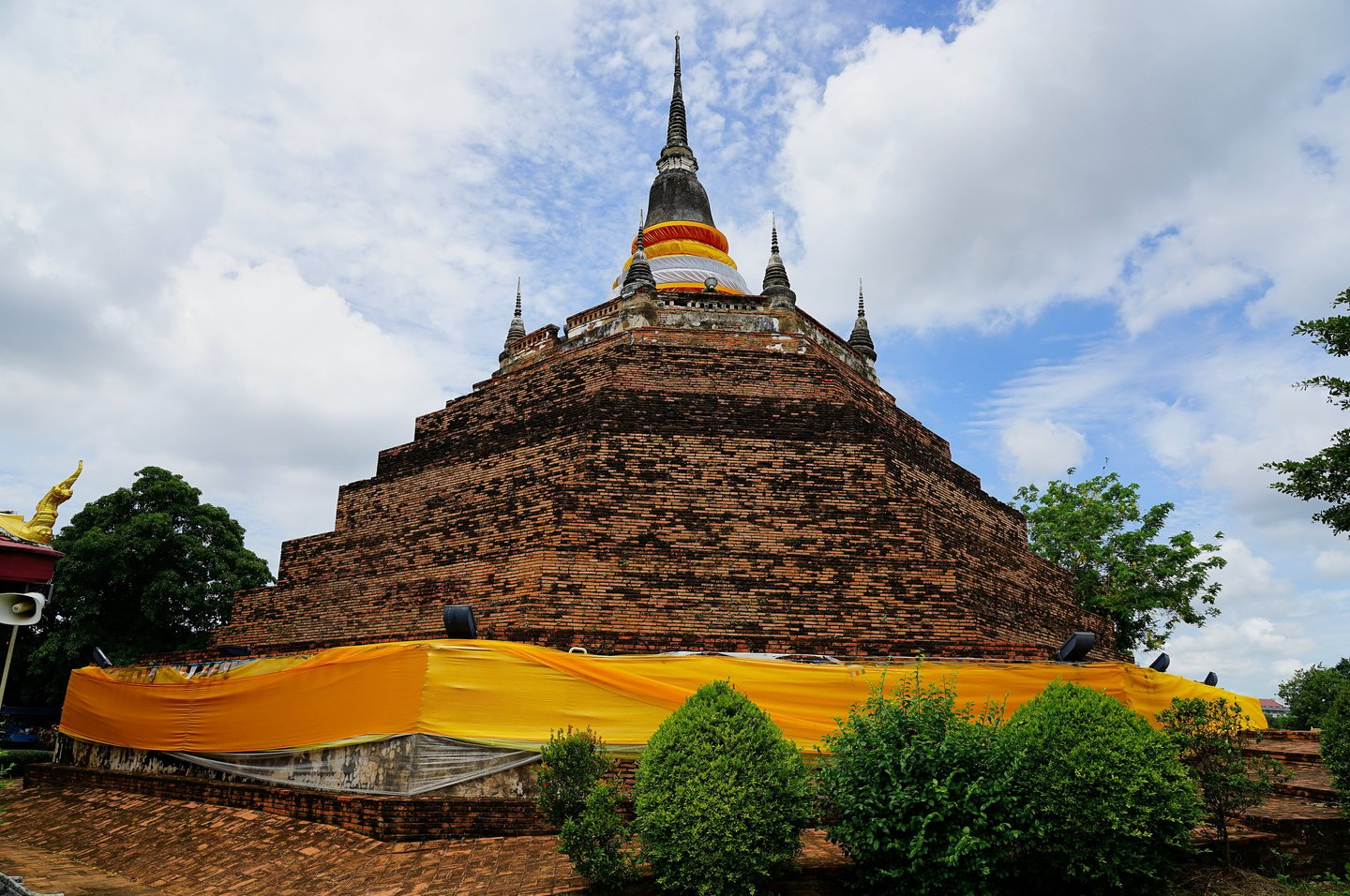

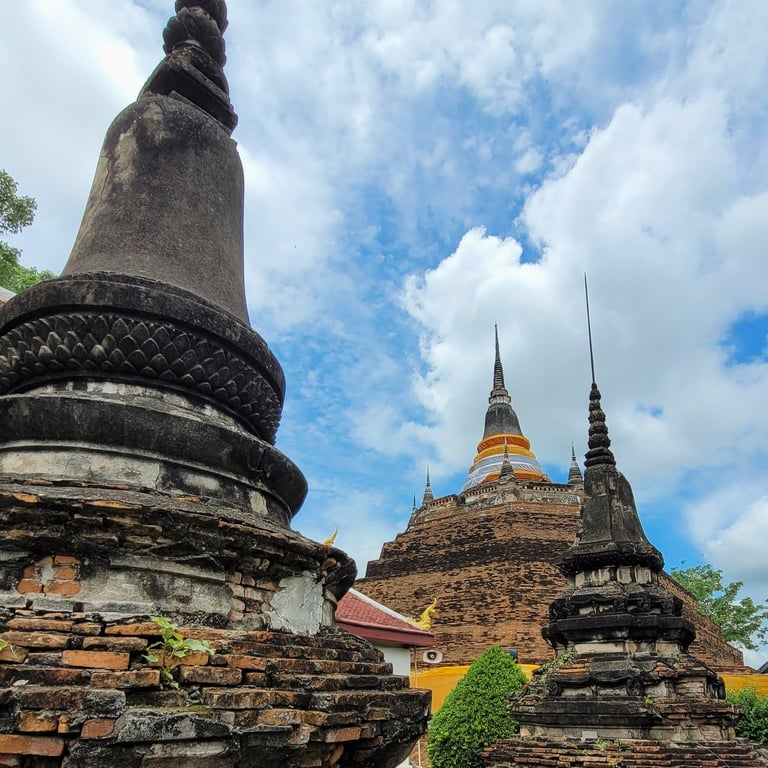
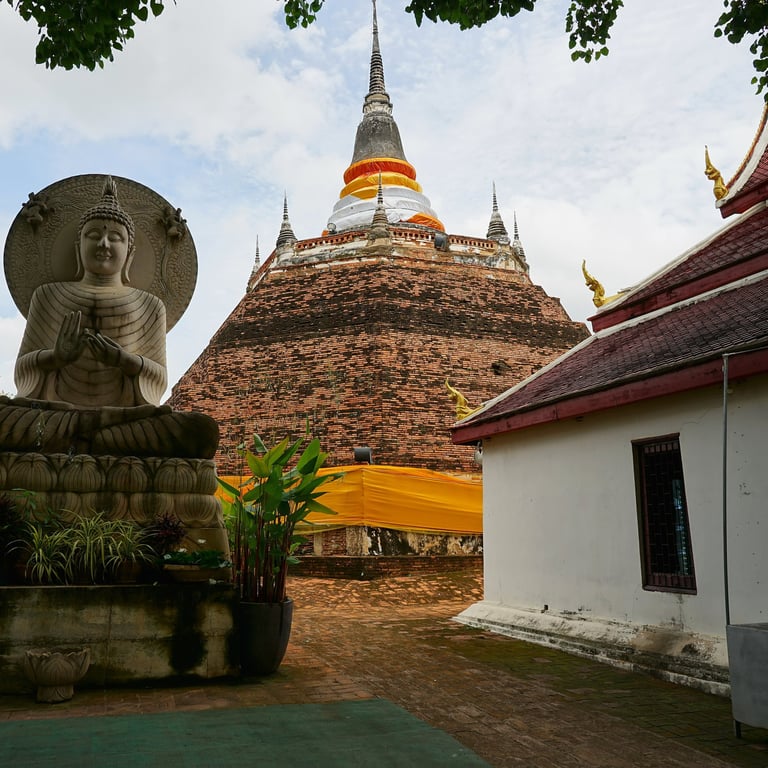
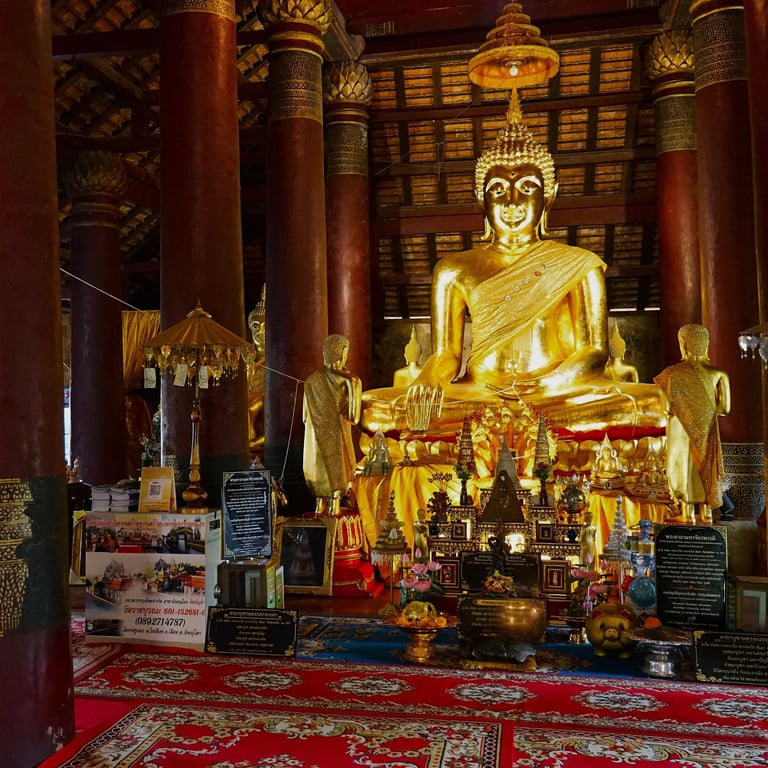
wat maha wanaram, ubon ratchathani
Calm and holy
Early morning in Ubon with the city gearing up for the Candle Festival the next day, the wat and surrounds were eerily quiet. You would expect such an attractive wat (inside and out) and splendid golden Buddha to be normally inundated with devotees. Perhaps it was the hour, or just simply the town readying itself for the main event. Even the wat’s huge beeswax sculptured offering to the festival was only being worked on in a side shed by one monk. Having said that, solitude and silence does rather amplify holiness.
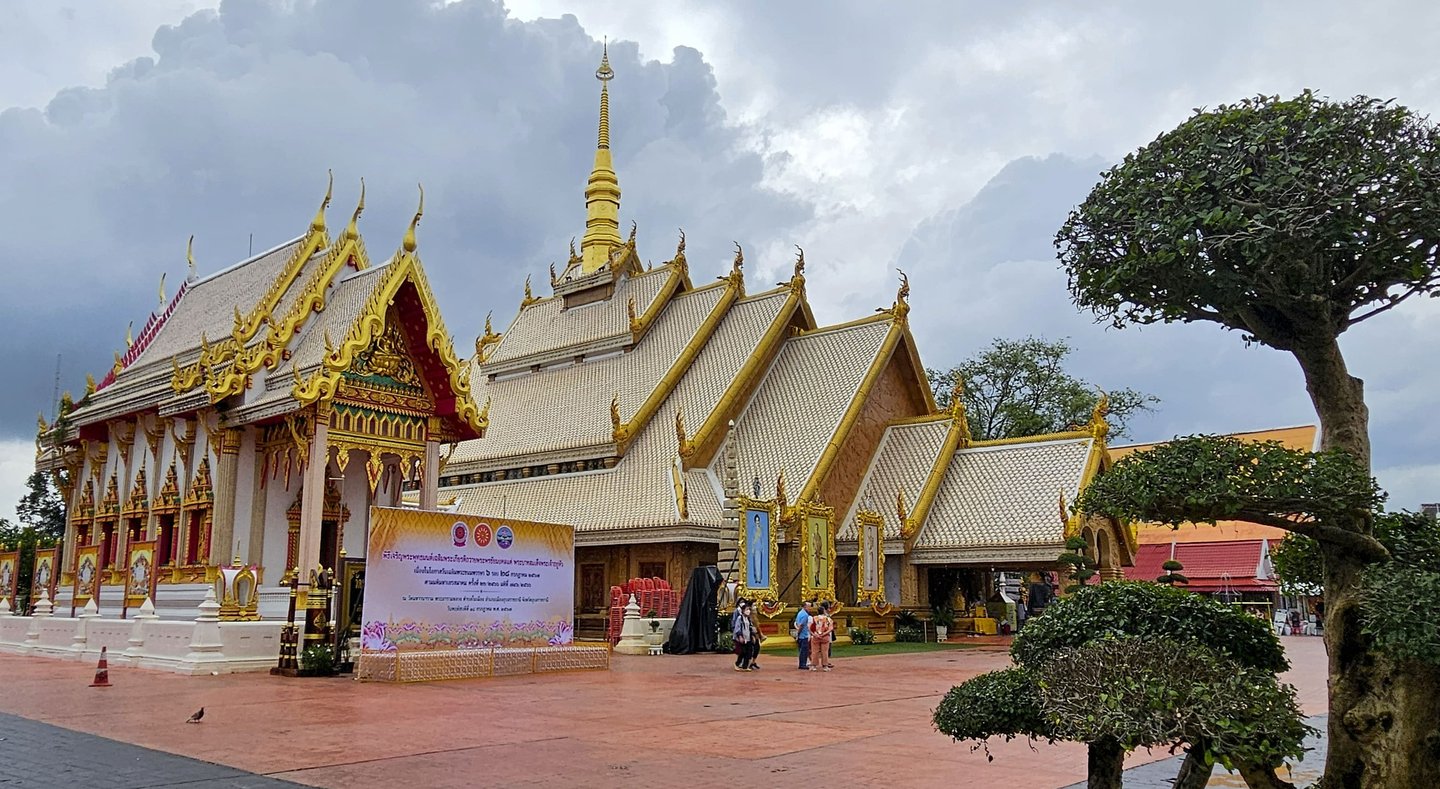

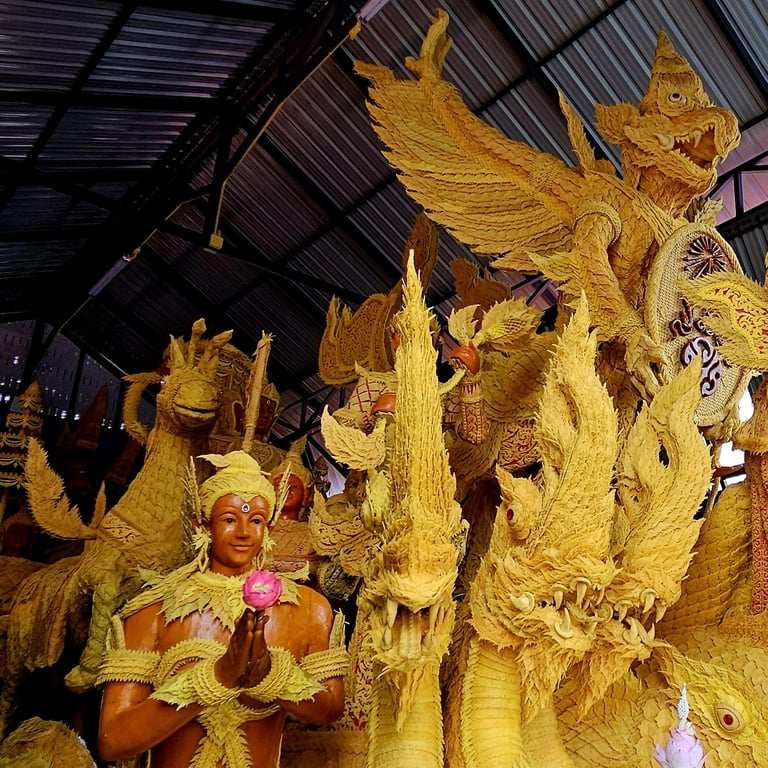
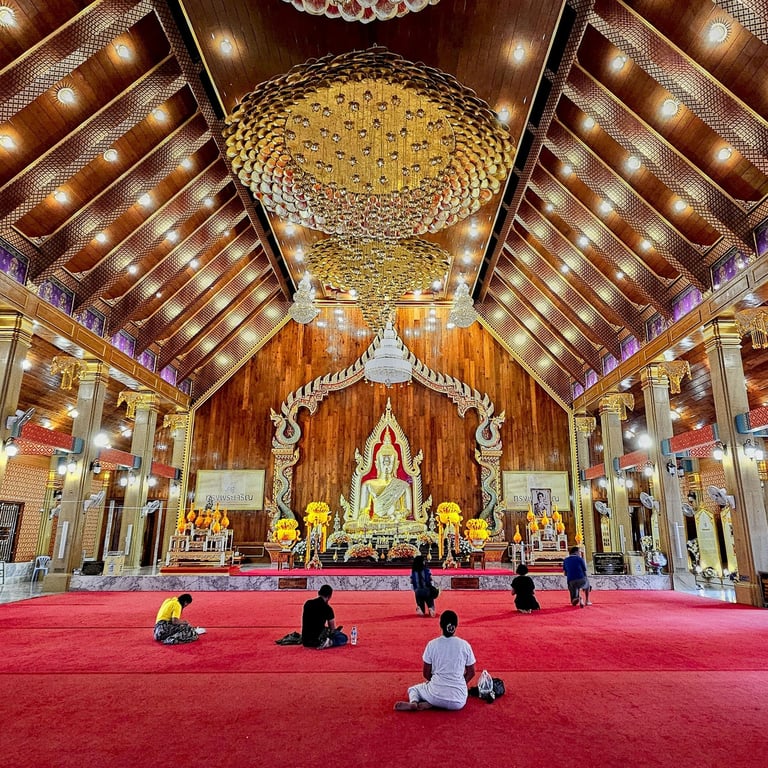
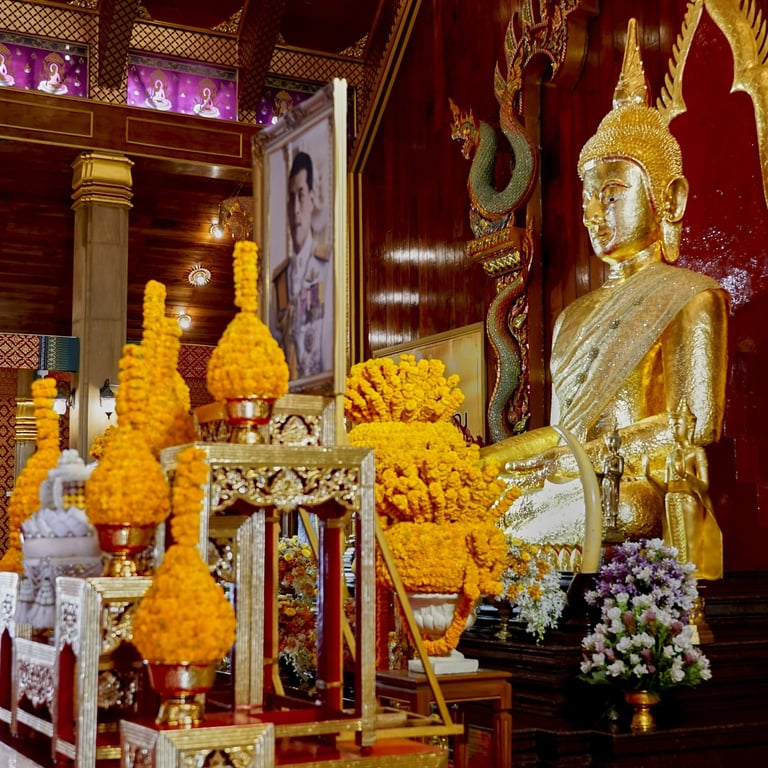
wat chai mongkhon, chiang mai
Blessed be!
Luck is such a big thing in Asia. Don’t, whatever you do, ask someone if they really think that there is a controller of the fortunes of people with a hair growing out of a mole; people who shake sticks with numbers on them at the temple, or people who keep insects in a jar ready to alight on little number tags. Mind you, it’s the same all over, with black cats, ladders and shoes on the table. Pictured here, the blessing of the car for good luck. Wat Chai Mongkhon in Chiang Mai is known locally to be the best choice for a car-blessing. Insurance up to date for back-up!
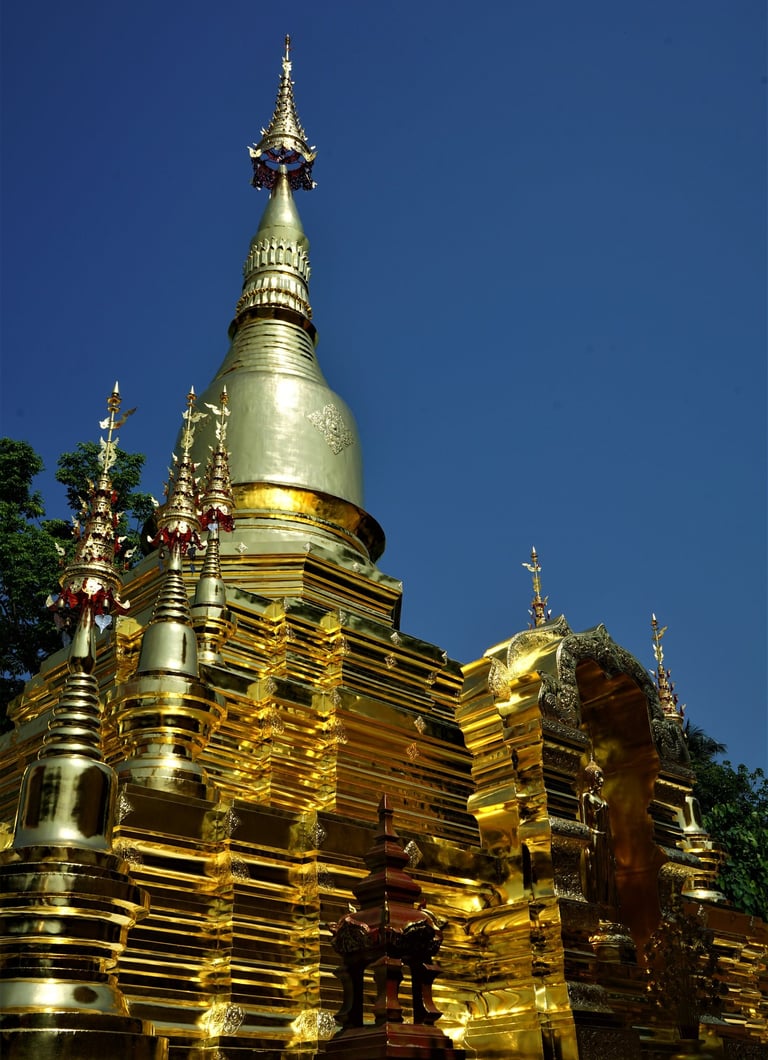

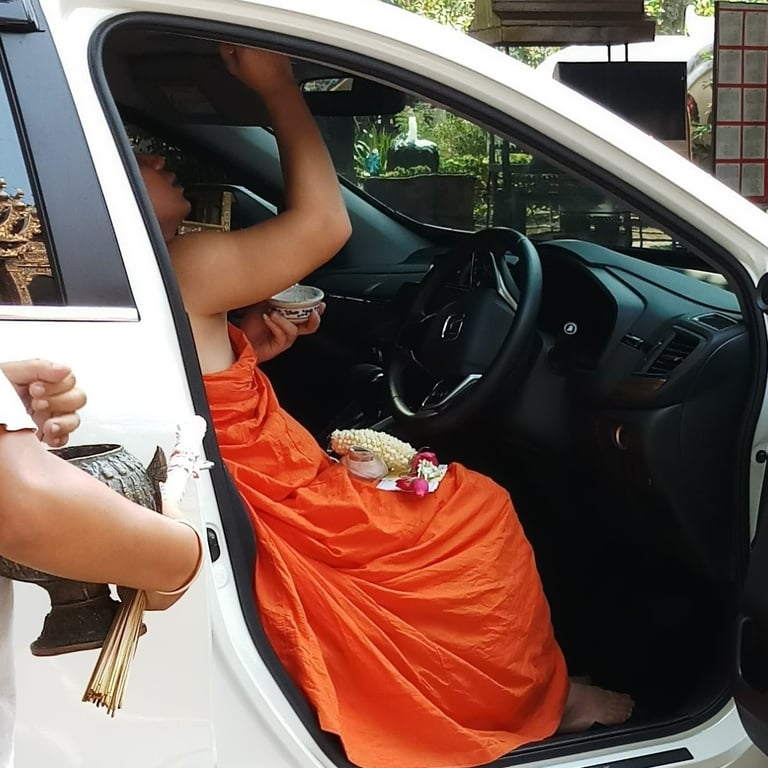
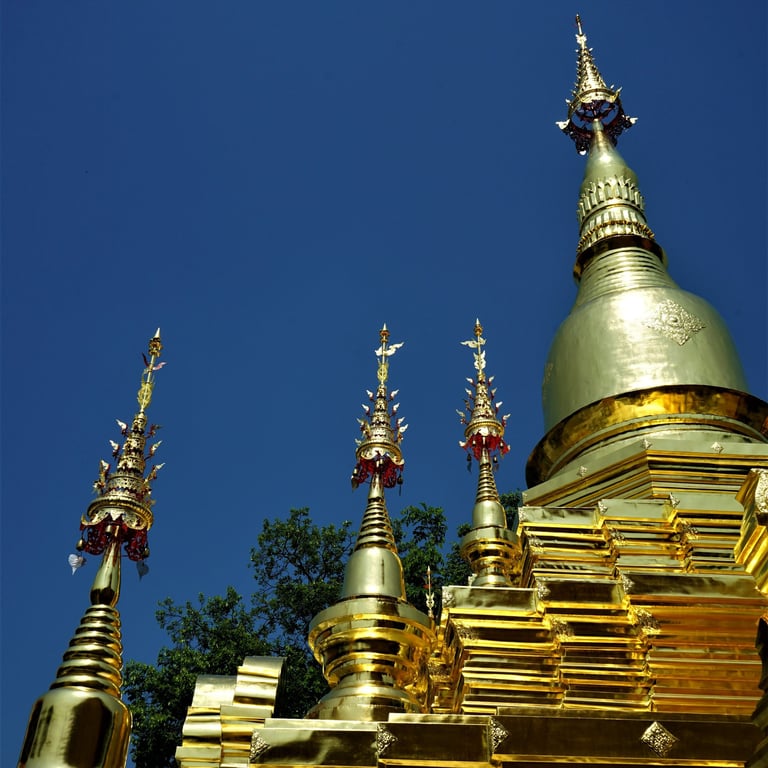
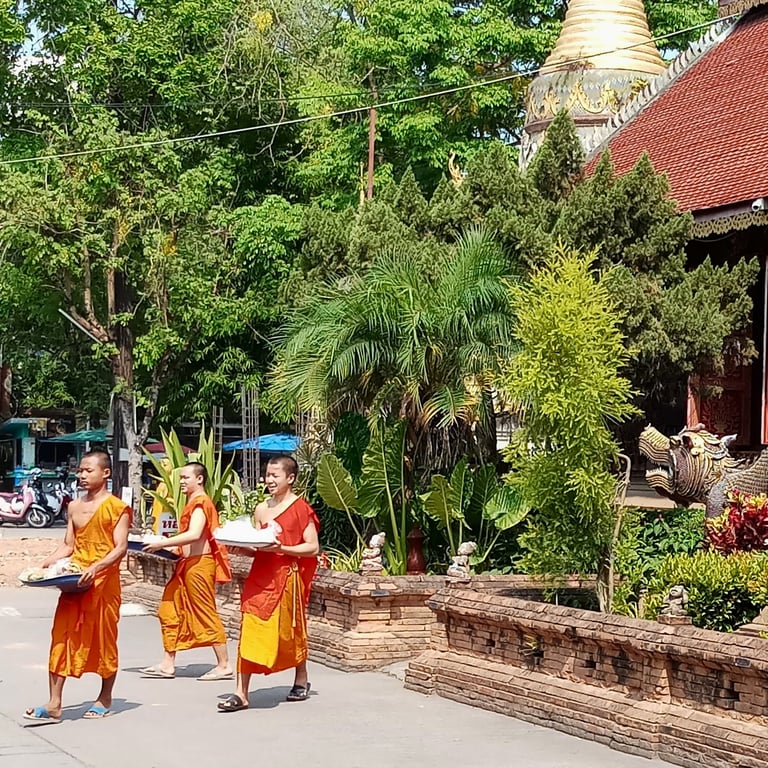
wat phra chao mengrai, chiang mai
Lanna period
This wat is not on any of the main itineraries, lying peacefully as it does inside the city walls. And yet, it has an interesting history. Tradition has it that the Lanna King, Mengrai, was transporting the Buddha statue in 1288 to the seat of power at Wiang Kum Kam, when a wheel on the cart broke. This omen suggested that this should be the site for the new wat. There have been many renovations over the years although the clearly older parts are said to be 4-500 years old. The inside of the ubosot features colourful paintings depicting the life of King Mengrai. Outside, construction is still going on (February 2025) with Buddhas under wraps.
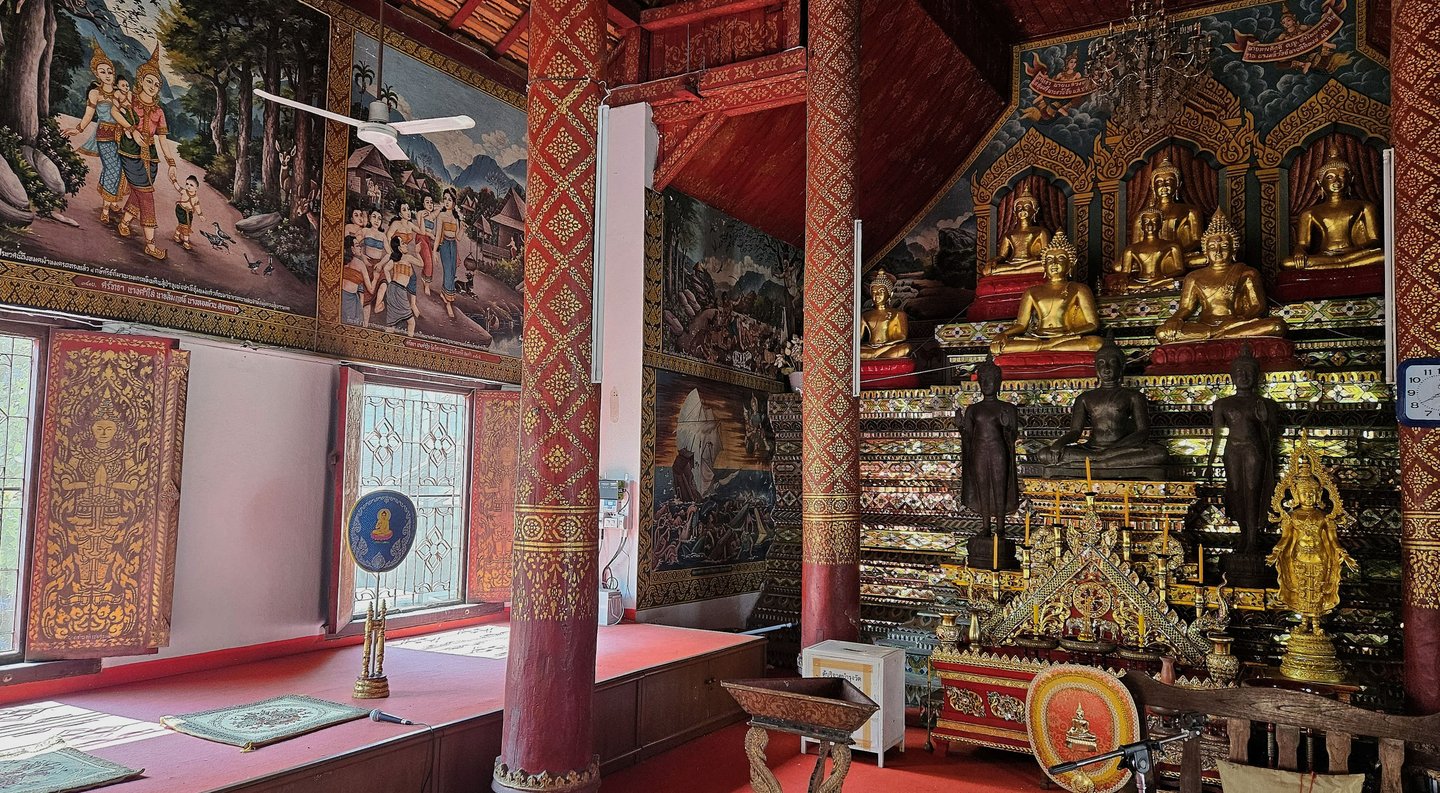

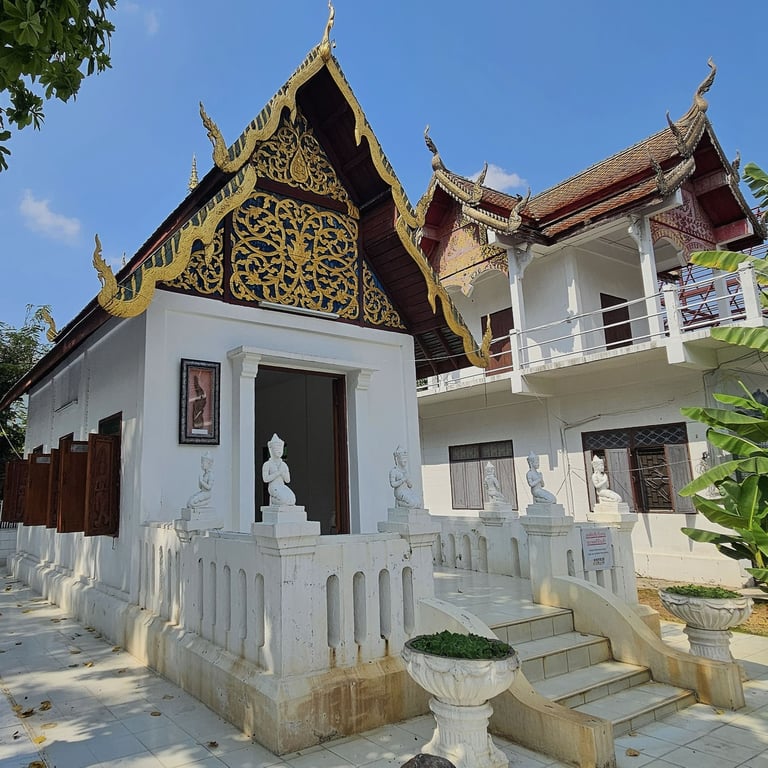
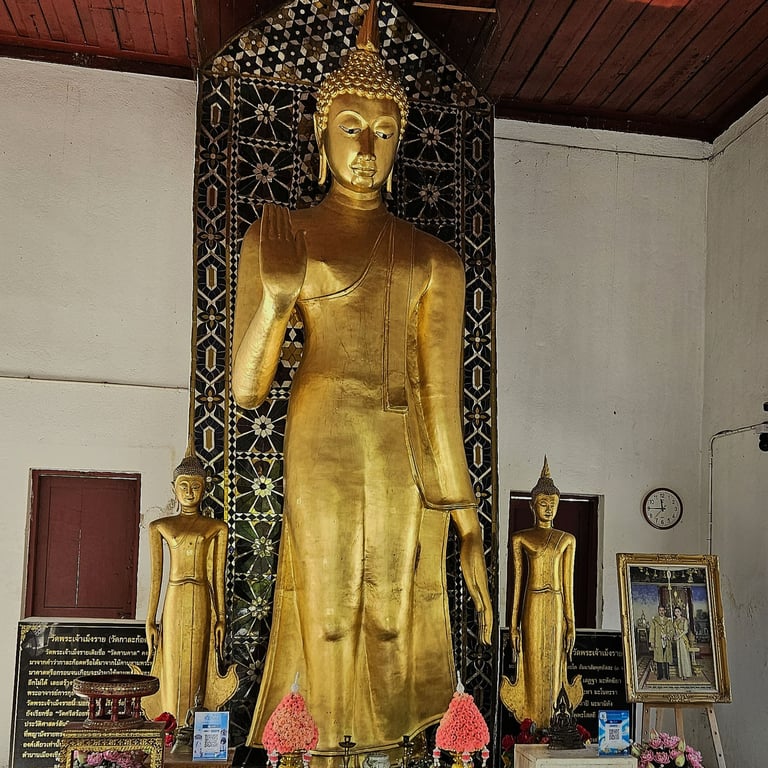
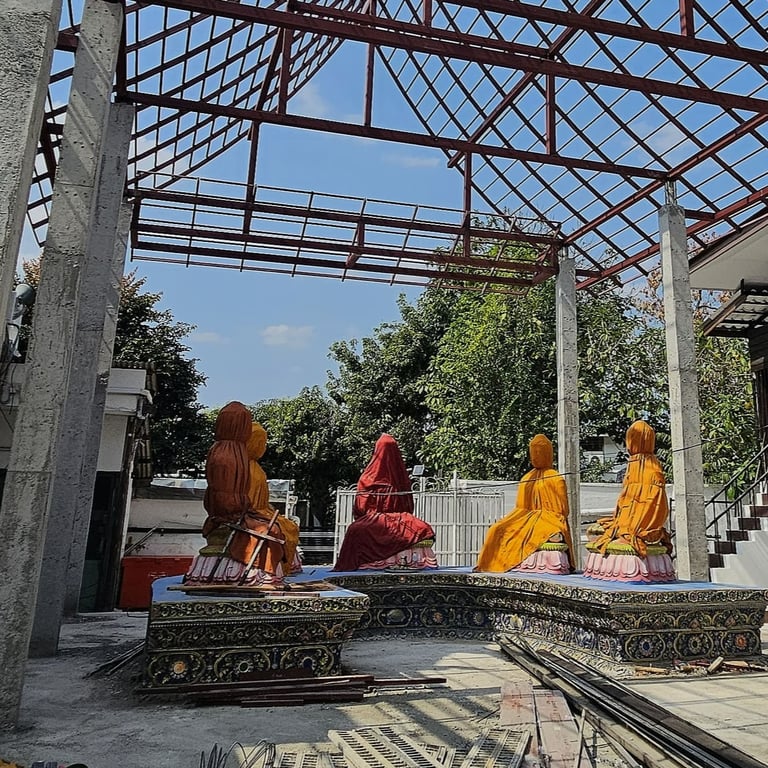
wat rachathiwat, bangkok
Calm by the river
Wat Rachathiwat Rachaworawihan was built next to the Chao Phraya river in the 18th century. It was here that King Mongkut (Rama IV) trained to become a monk, hence its name meaning ‘Royal Residence’. The wat is set in large leafy and peaceful grounds, with monks’ accommodation all round. It is not much visited, perhaps because it is out of the way, being a 15 minute walk from Thewet Pier or a 25 minute taxi ride from Victory Monument. The style is mostly Khmer, although the ordination hall’s interiors were painted by an Italian as frescos. Unfortunately, the ubosot was closed when I was there.
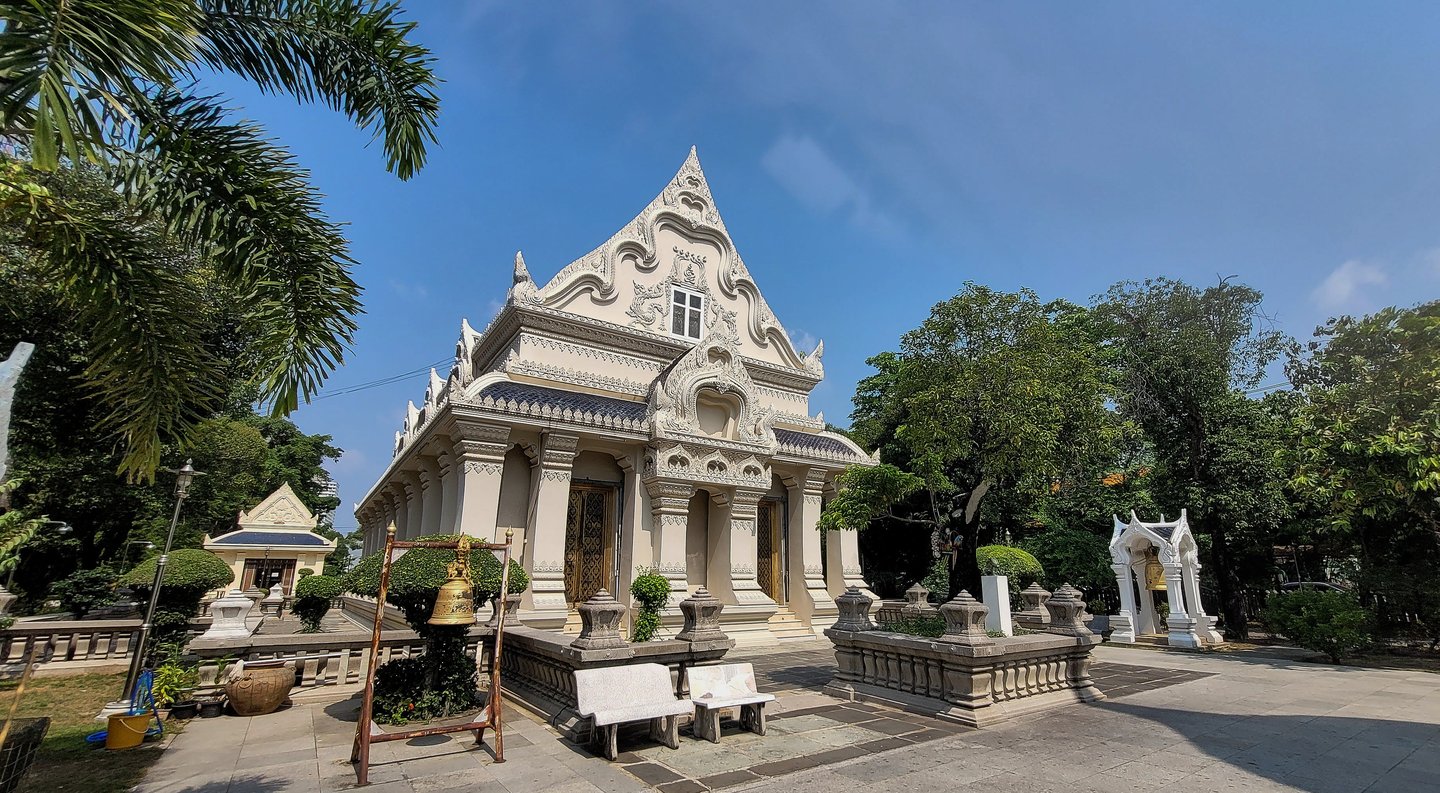

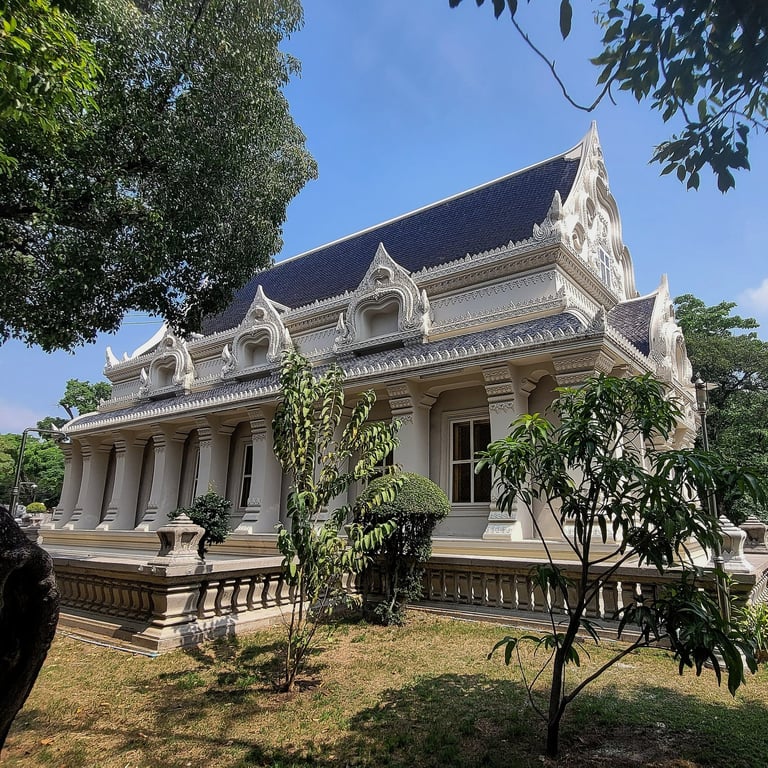
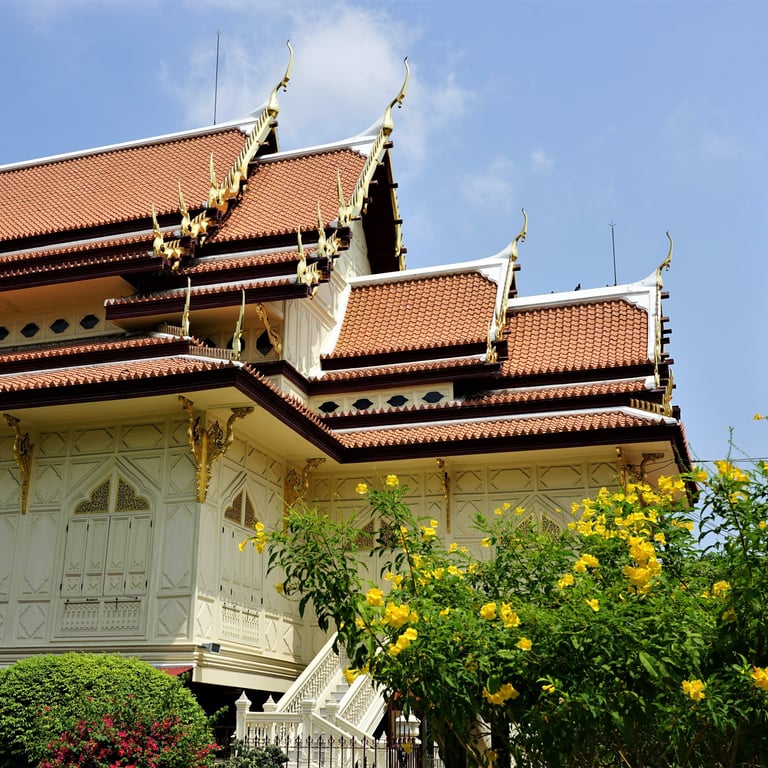
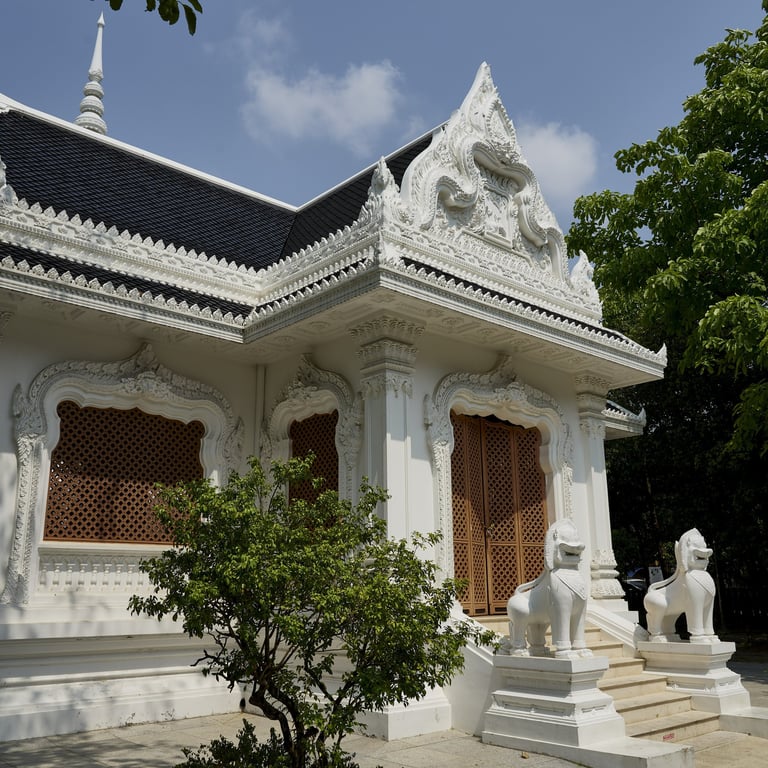
wat noen sutthawat, bang saen
Pick your way through
Wat Noen Sutthawat or Wat Noen for short is an old temple in Chonburi - or more precisely Bang Saen. From the outside it doesn’t present well, with a jumble of outer buildings, huge arched metal shades and cars parked hither and thither. Once you pick your way through, it is a different story, resplendent as it is in intricately painted murals. People come to worship, pray, and in particular apply gold leaf to various Buddha statues. It is also the location of the enshrined statue of Luang Pho Kliang, a famous monk and former abbot. On a Sunday you can expect to queue patiently as you wait your turn to enter the ubosot to pray for forgiveness for past misdeeds – a chance to wipe the slate clean, no doubt.
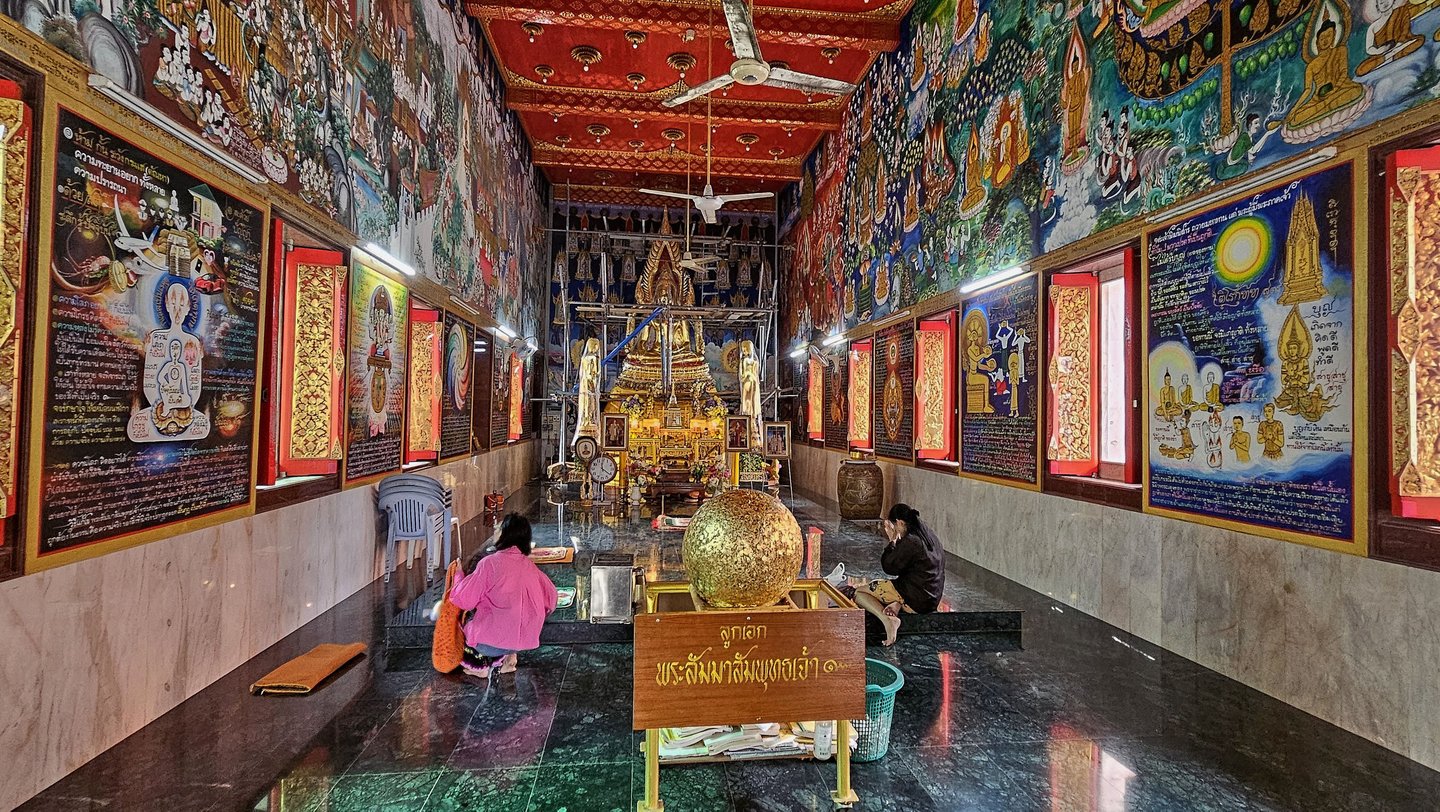

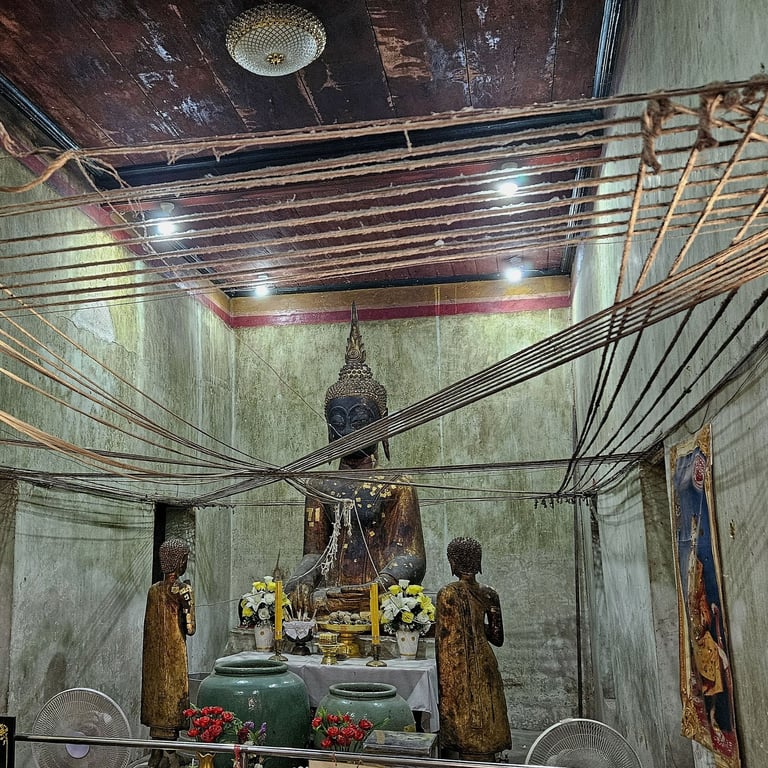
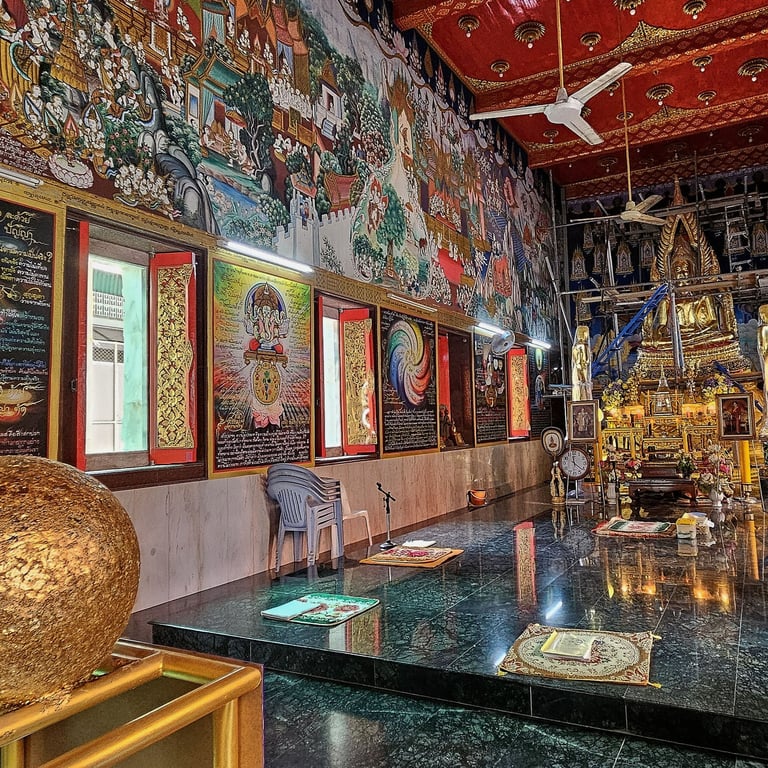
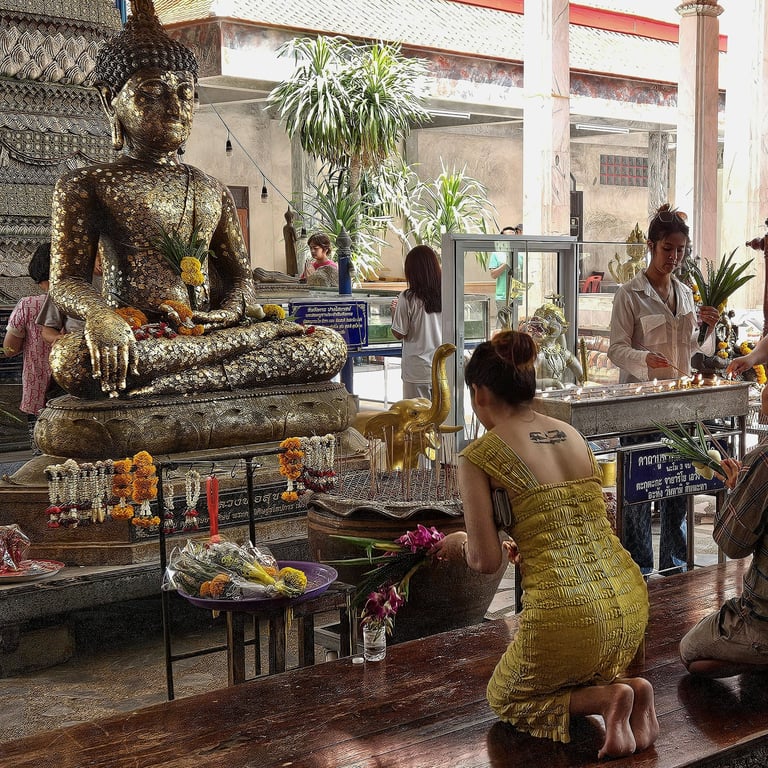
san chao pho phaya lae shrine, chaiyaphum
Founding father
Phraya Phakdi Chumphon (Lae) was the founder of the city of Chaiyaphum in the early 1800s. Originally from Vientiane he led his community to this new site and paid tribute to neighbouring Nakhon Ratchasima (Korat). Conflict was ongoing between Korat and Vientiane and Lae paid the price after his capture and execution at what is now the site of the shrine. Homage is paid annually in May to the ‘city’s father’ at the shrine which was refurbished in 1975. The white exterior is visible from some distance away when illuminated at night.
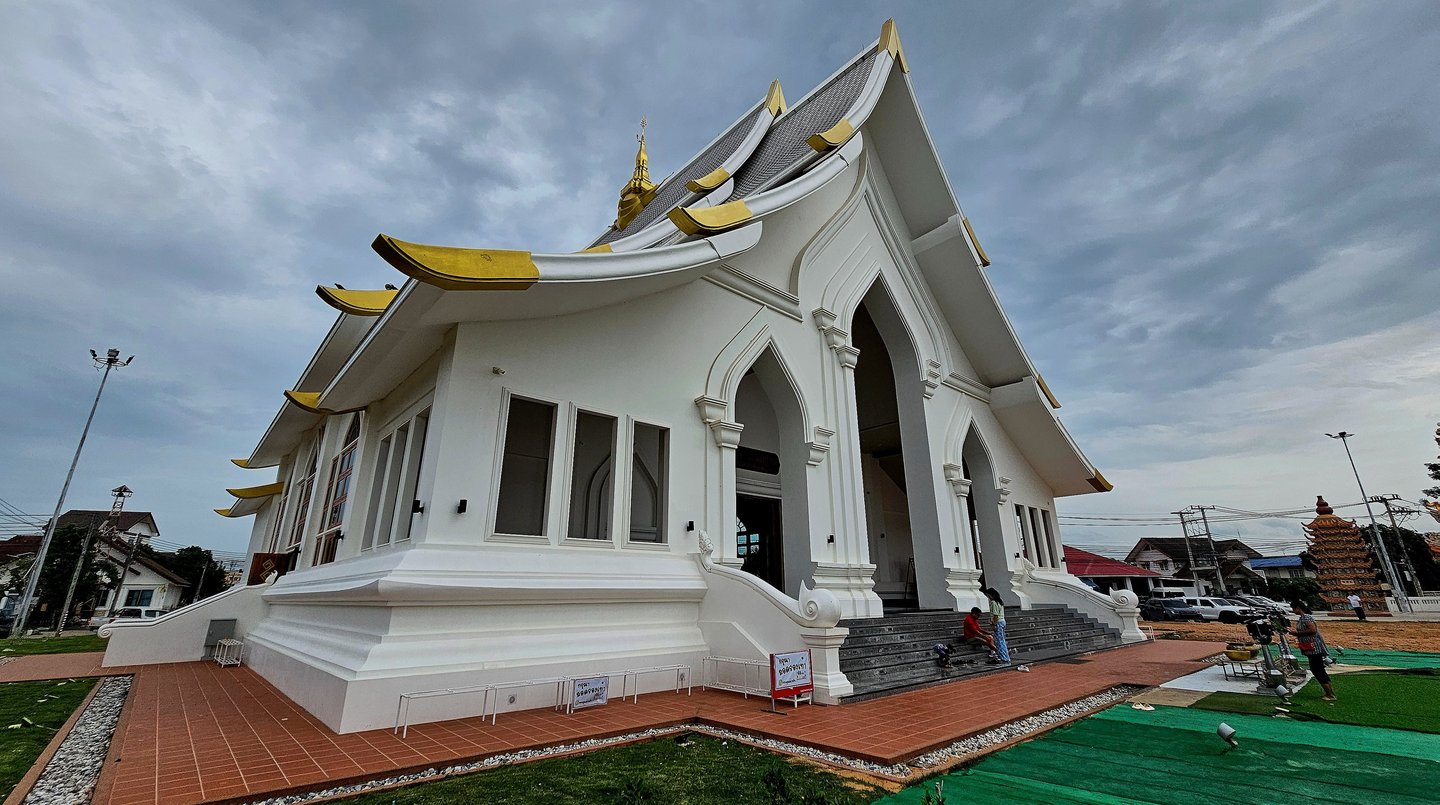

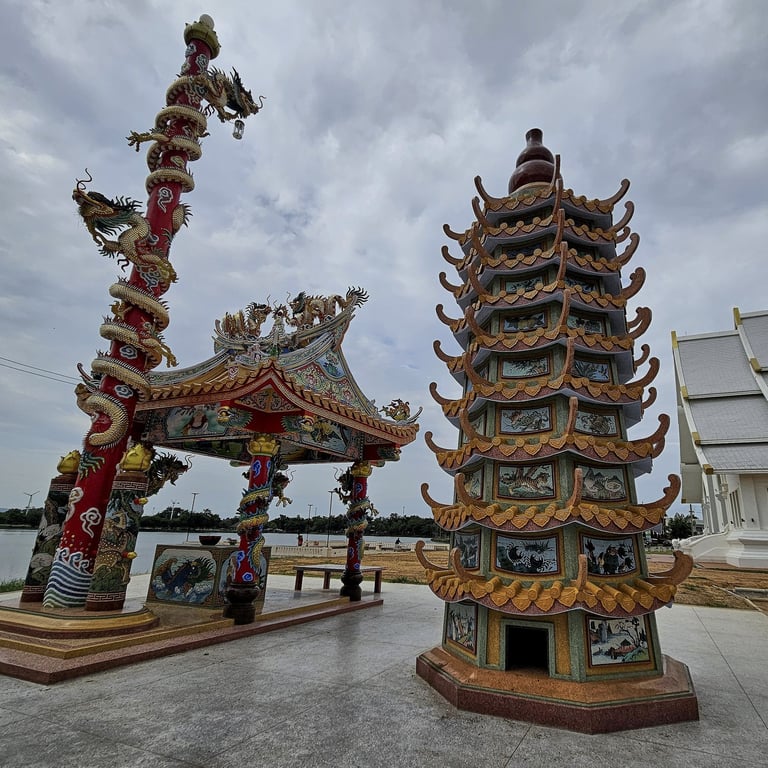
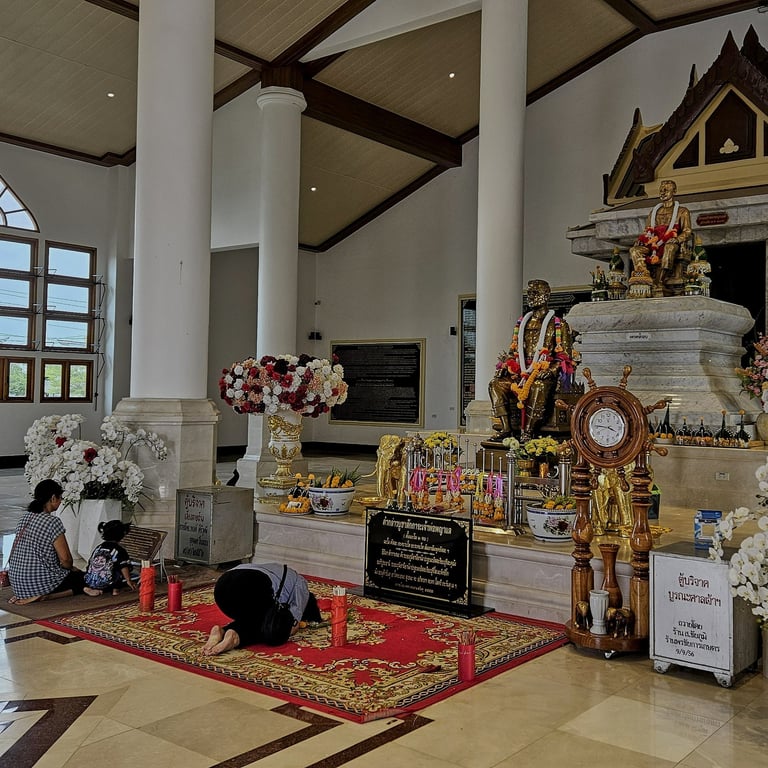
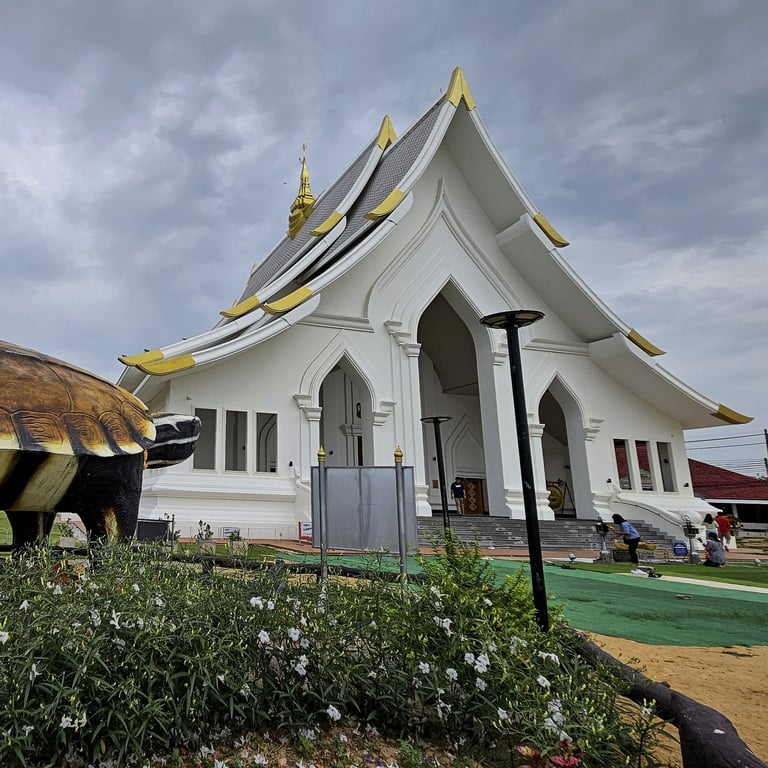
wat sutthawas, pattaya
Time to take a look
Wat Sutthawas is one of those wats that I drove past every day going to work when I first moved to Thailand in 1996. It is at the top of a T-junction at the end of Soi Nern Plab Wan, one of the main roads out of town heading east. So, nigh on twenty-nine years later, I actually took a look inside. The main buildings are very attractive but seemingly off-limits. They are surrounded by much monks’ accommodation and school buildings. The big feature seems to be a huge market which takes place twice per week. The Municipal Stadium, home to Pattaya United FC, also shares a boundary with the wat’s perimeter. My main memory from way back is that of picking up a roast chicken from the market on the way home for a quick-fix evening meal!
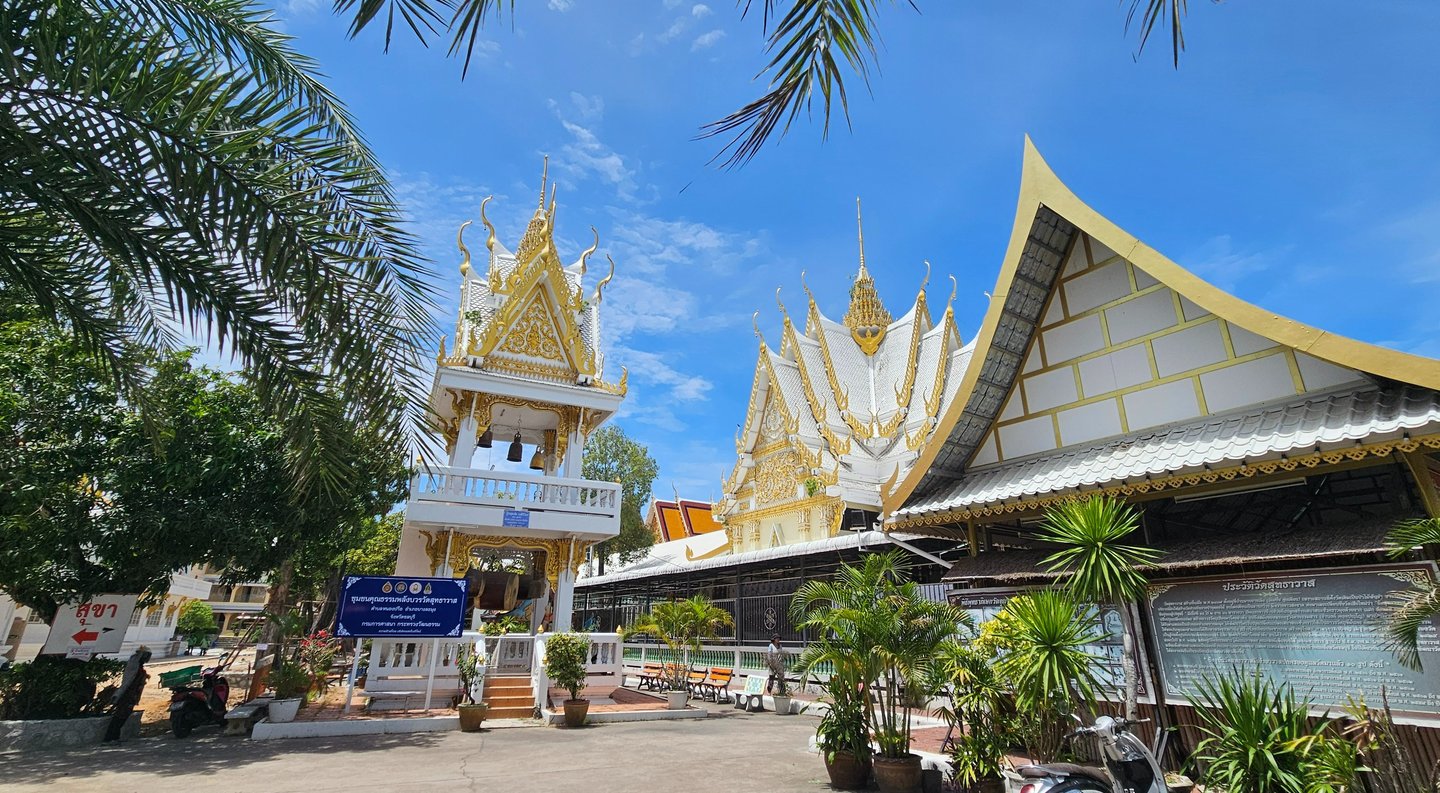

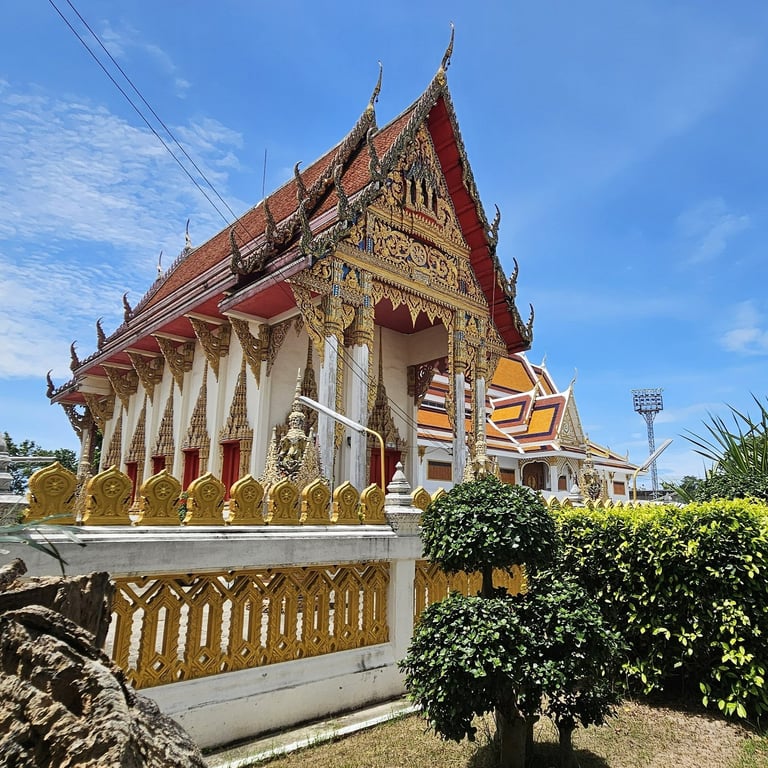
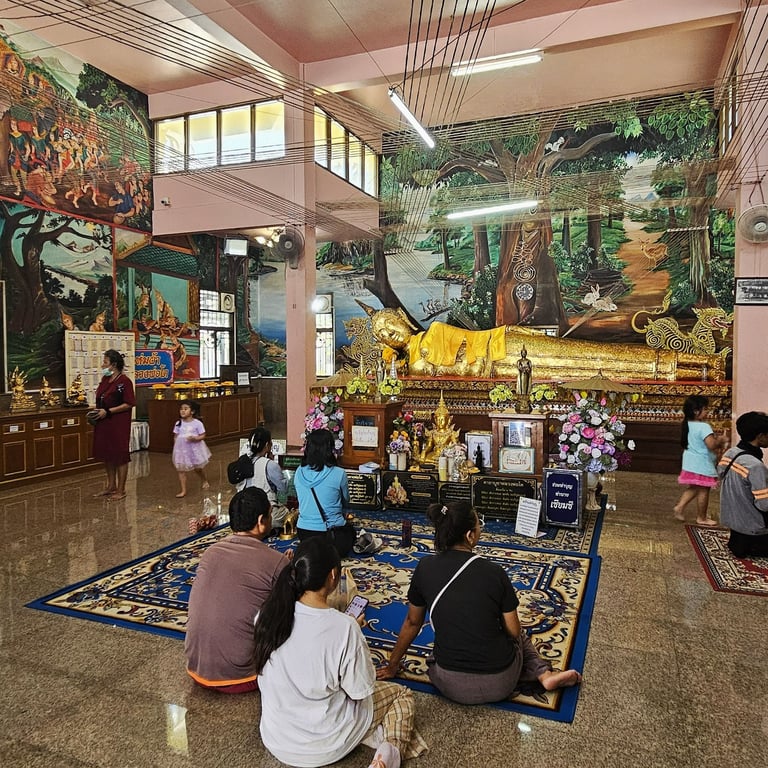
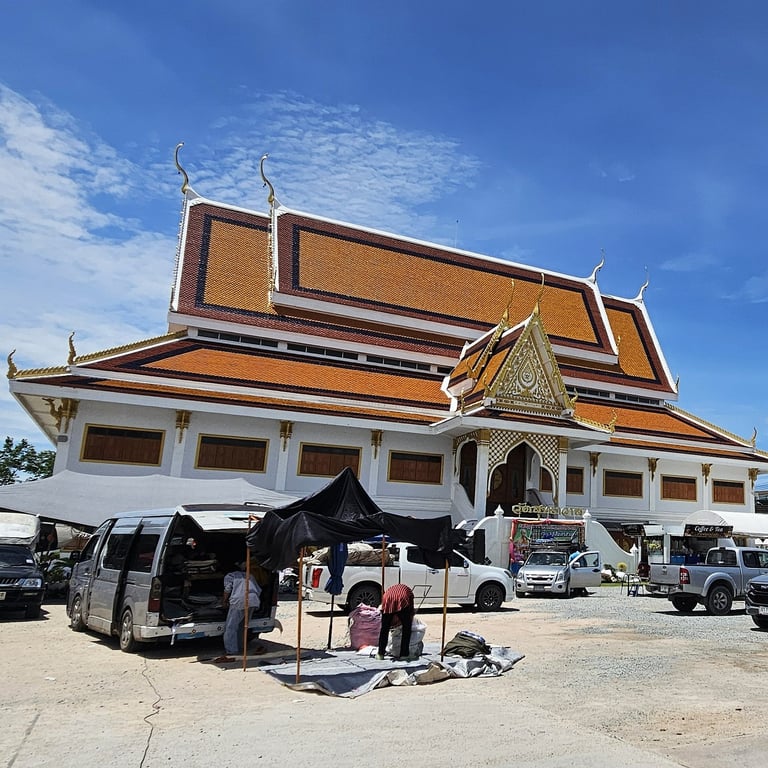
wat nong pah pong, ubon ratchathani
Tardis or not?
‘Pah’ means forest and it was here that the wat’s founder set up in 1954 against a backdrop of brooding woods, ponds and accompanying mosquitoes. So compelling were Ajarn Chah’s teachings that his movement grew from its humble beginnings of huts amidst the trees, to achieve the grand other-worldly wat that was constructed in 1993. Approaching the spaceship-like base via avenues of trees, you wonder if the interior is going to be like Dr Who’s Tardis. As it turned out it was impressive in its subdued golden serenity of normal proportions. Folks now come from all over the world to meditate here,
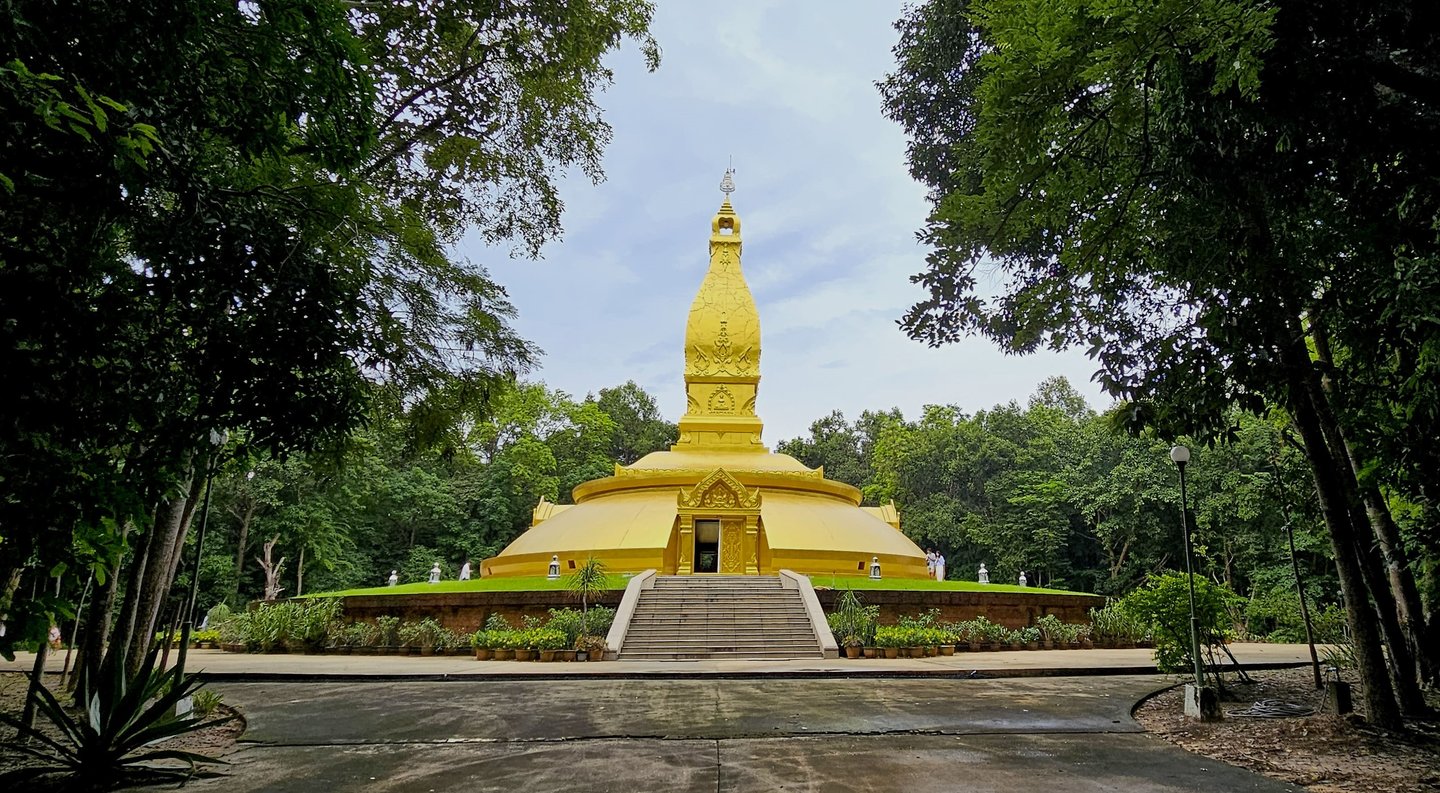

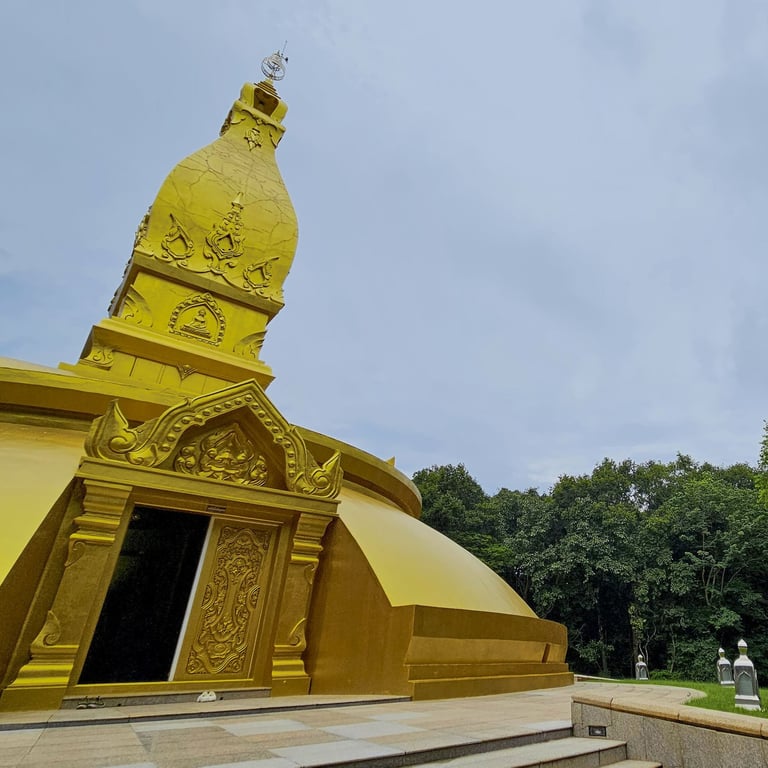
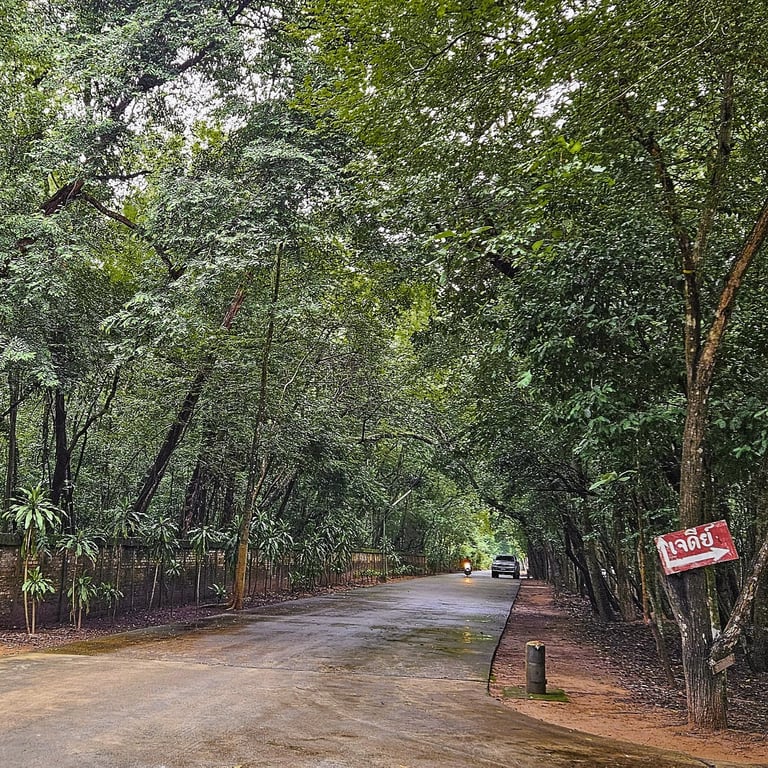
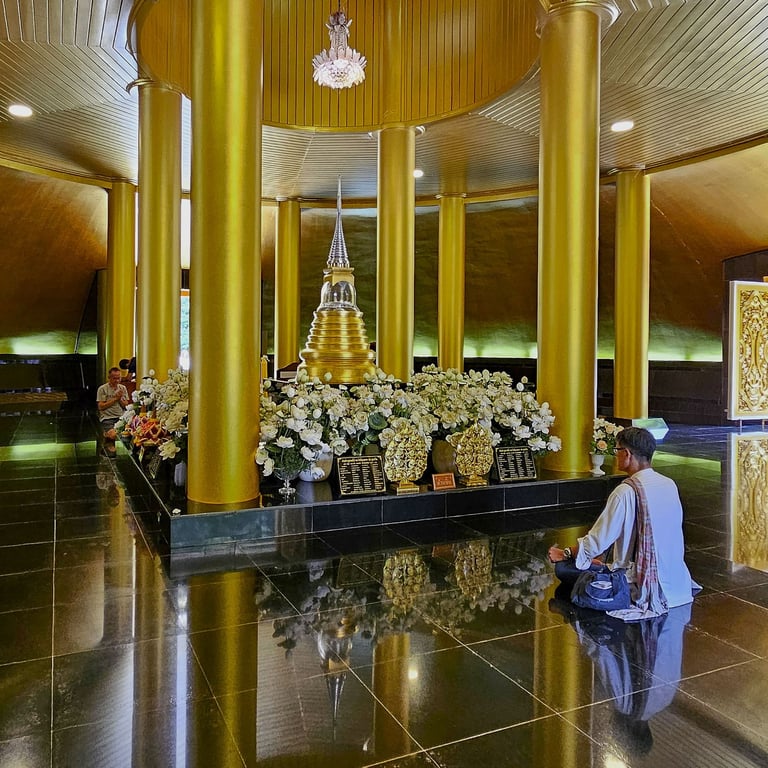
wat phu thong thep nimit, udon thani
Select low gear...
Approaching from the south-west, the hilltop white Buddha can’t be seen until you are practically upon it. Having said that, the view from the top to the north and east is impressive as it surveys the plain in the direction of Udon Thani. The small road leading up to the hill is one of those where you have to select the gear position that is used for towing a caravan, thankful that you aren’t actually towing one as you chug round the bends this way and that.
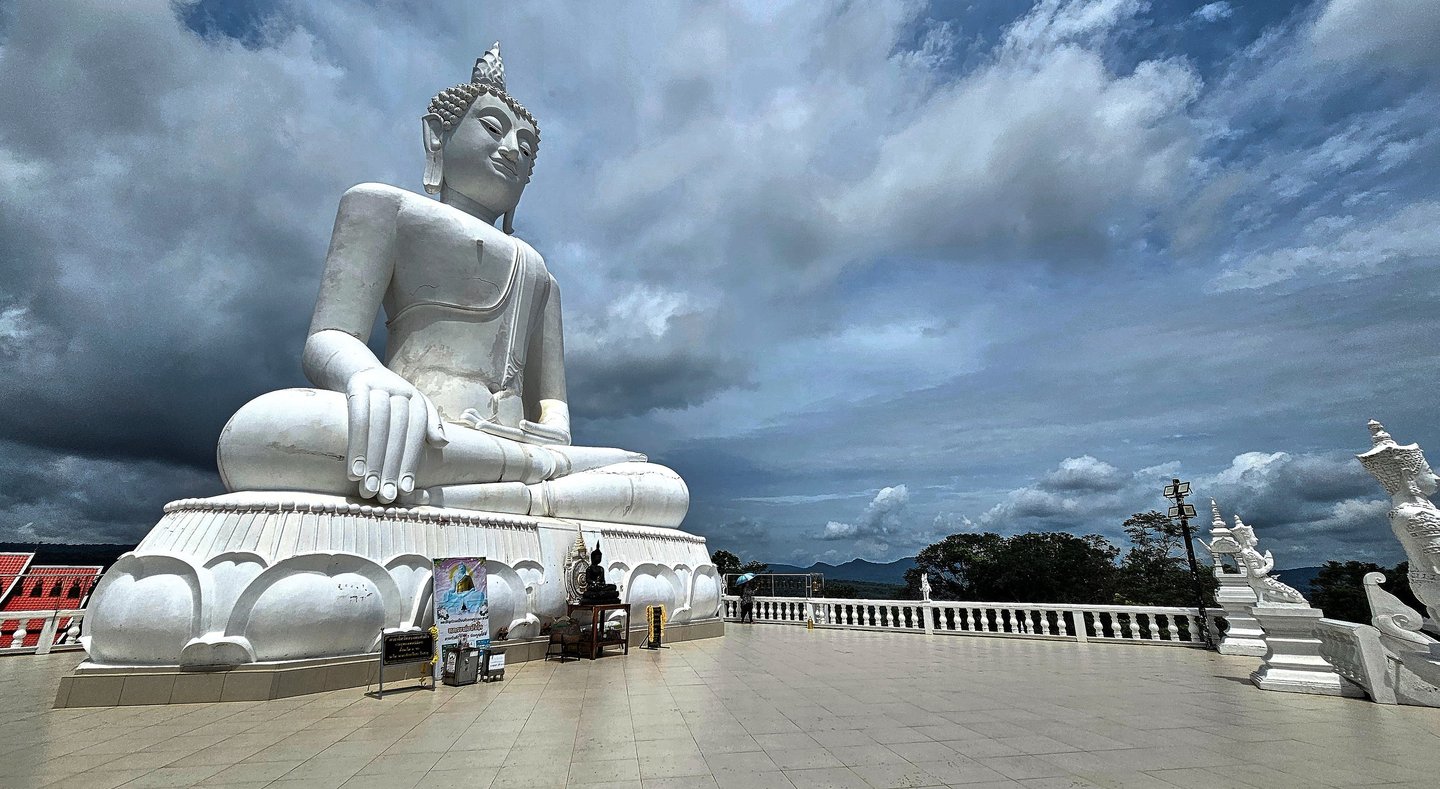

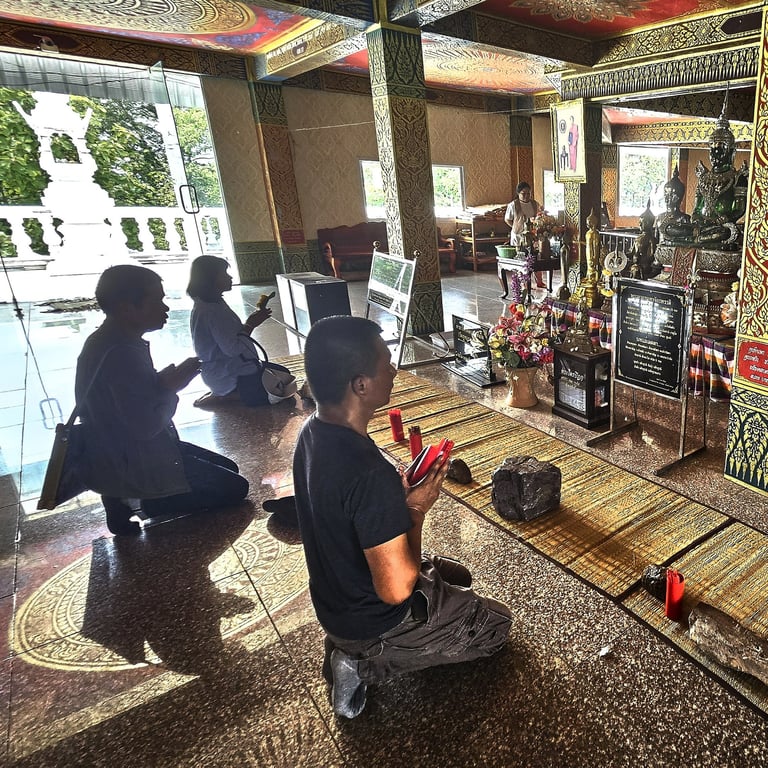
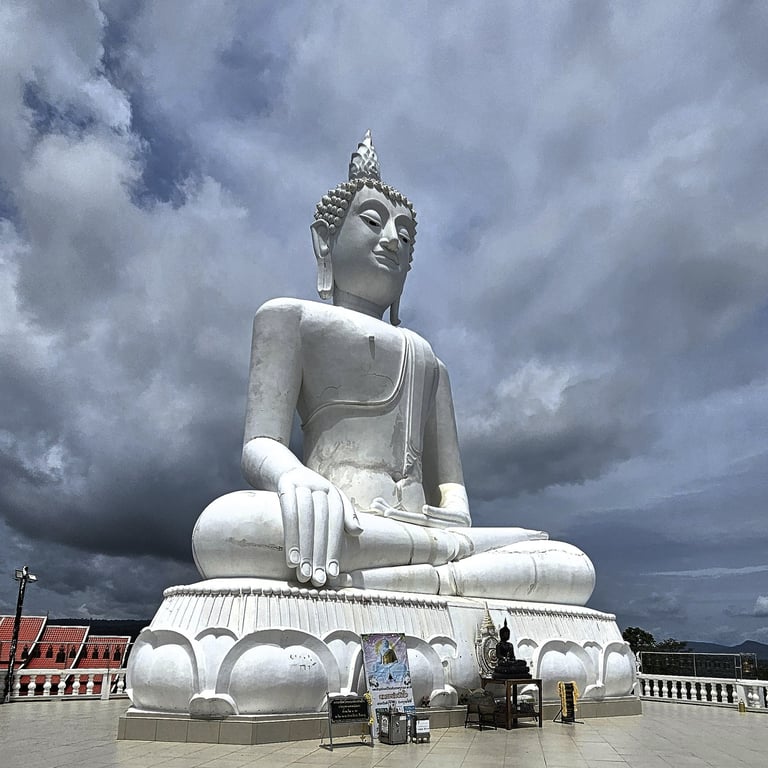
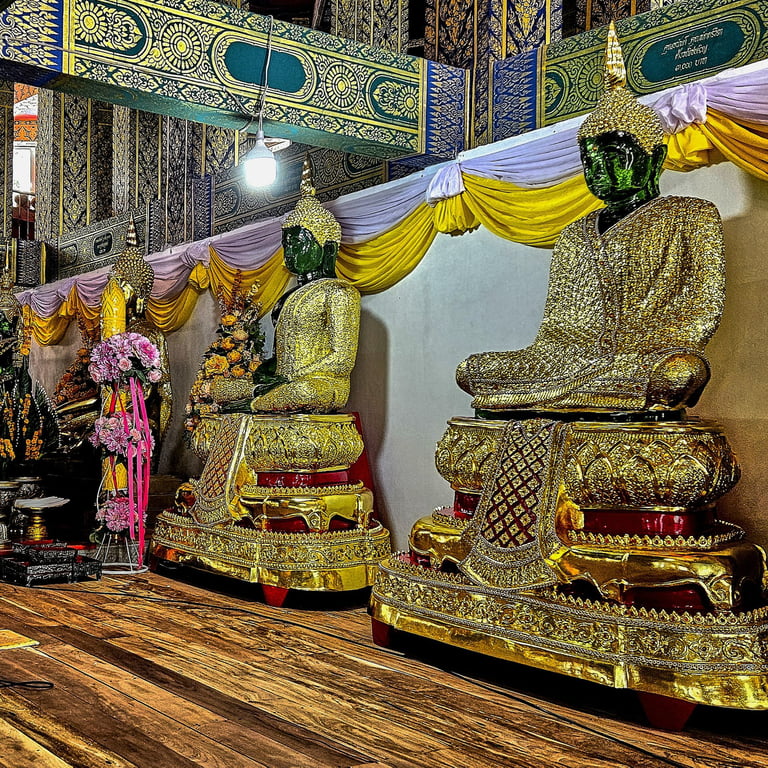
wat phra phutthabat phufaet, chaiyaphum
Up to you!
A bit of a weird one this, in that I am not actually recommending it. Although I do think you should know about it, just in case you are passing by! A disappointment, partly because it had seen better days and might have looked pristine about fifty years ago, but mainly because you had to take your shoes off before exploring the massive site. We are talking about treading on gnarly concrete, wet in places after a shower, while tip-toeing round the many sleeping dogs. Alas, my tender tootsies were not up to the task and even with socks on it was a hopeless quest. All those folks striding about barefoot must have had very different childhood feet experiences to me. Me and my perennially scuffed, kickabout shoes and all.
